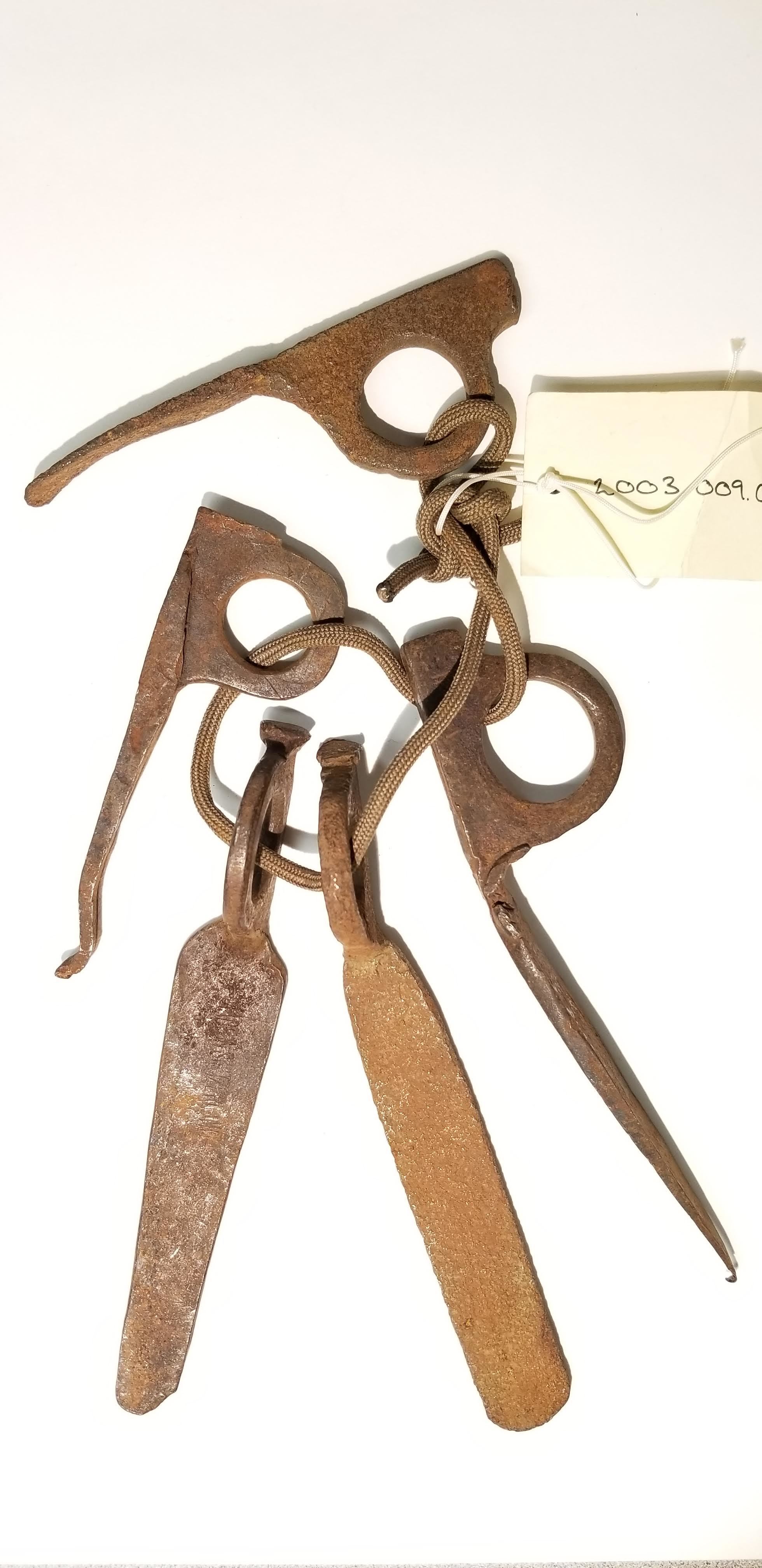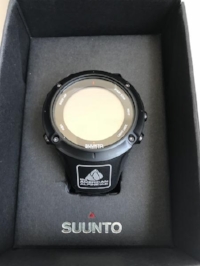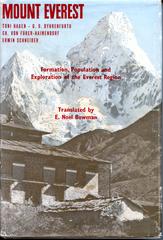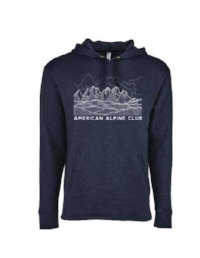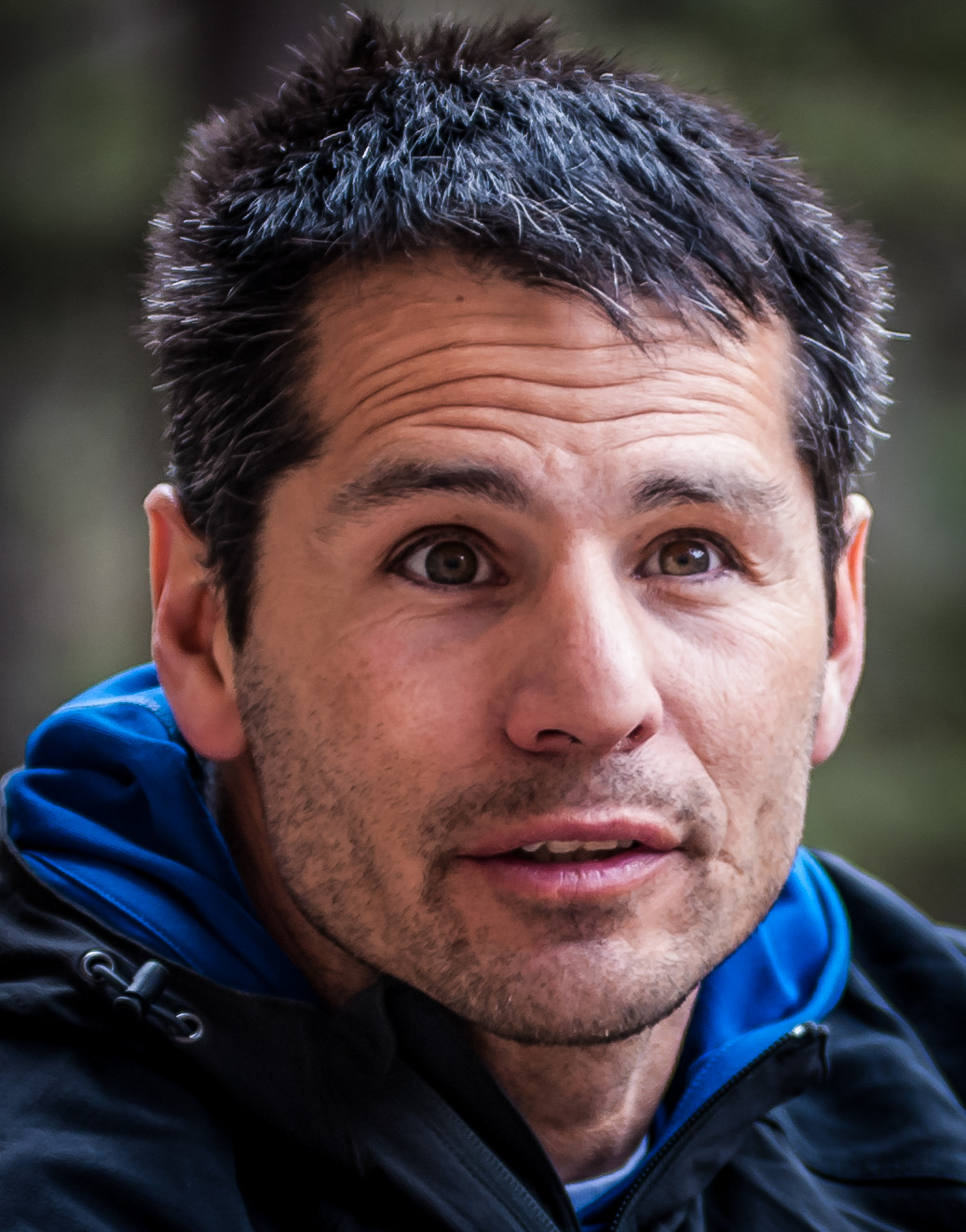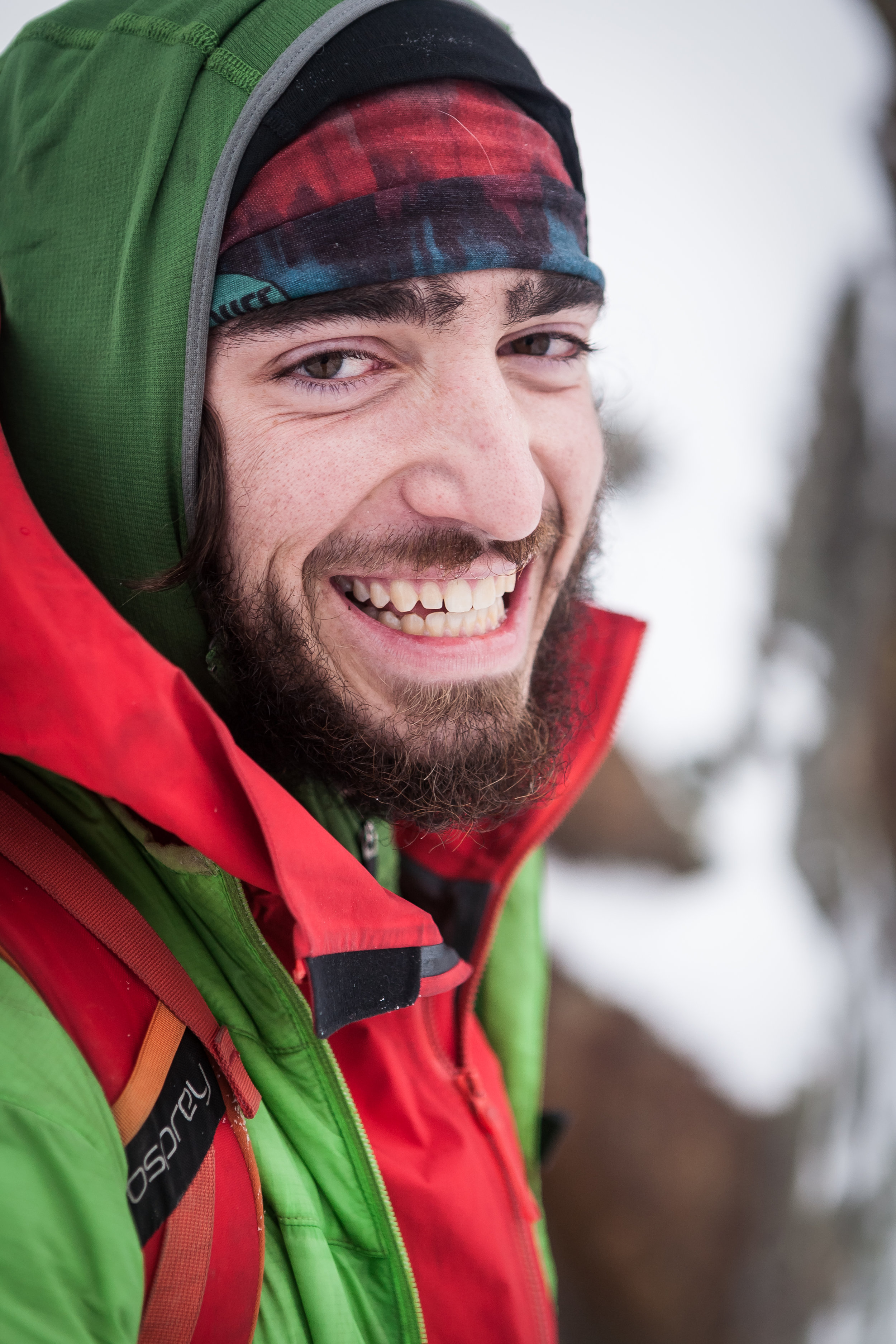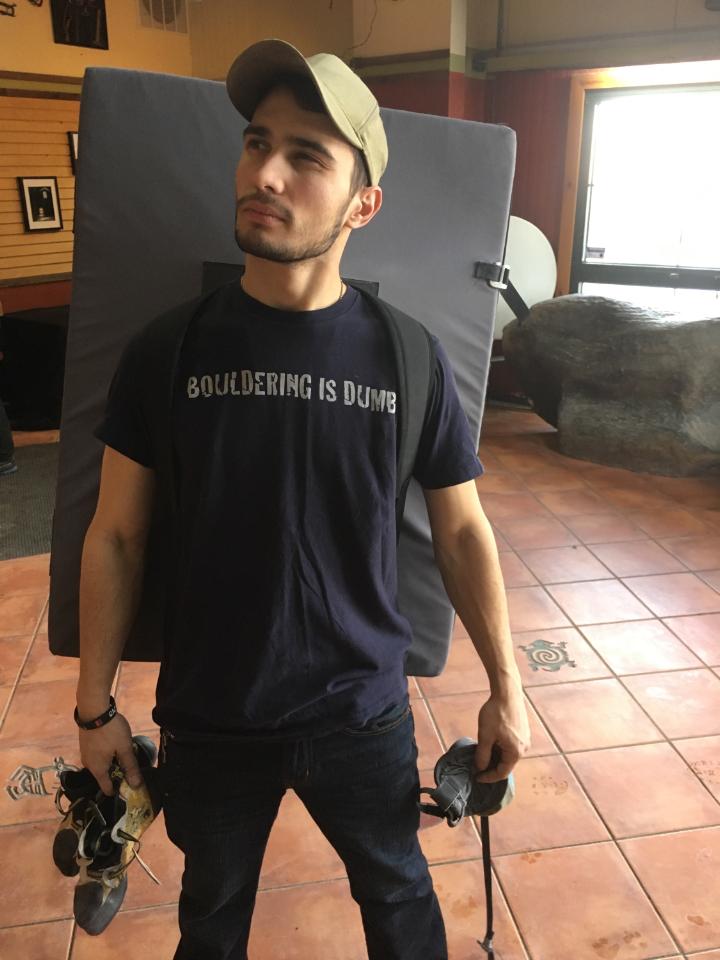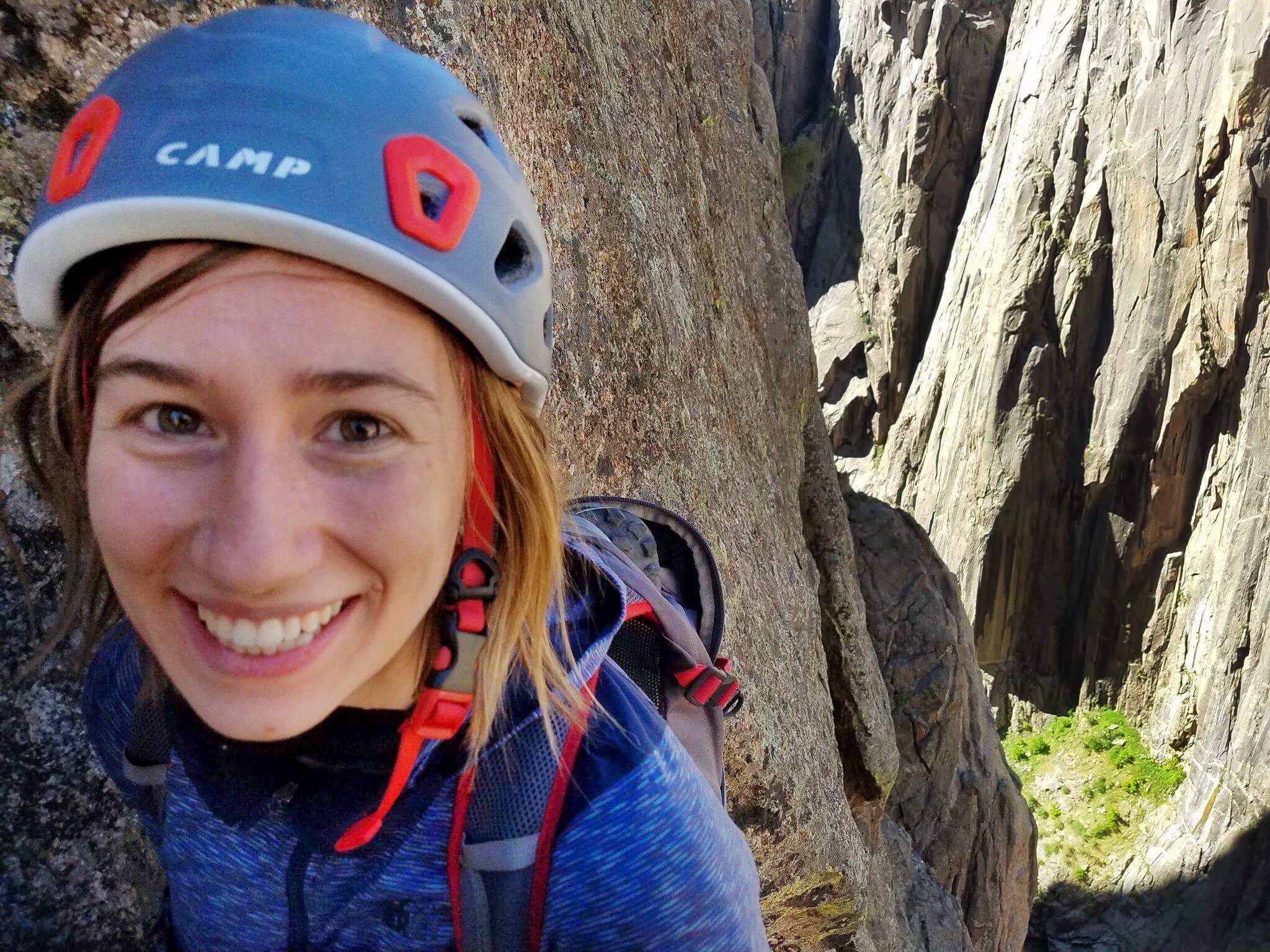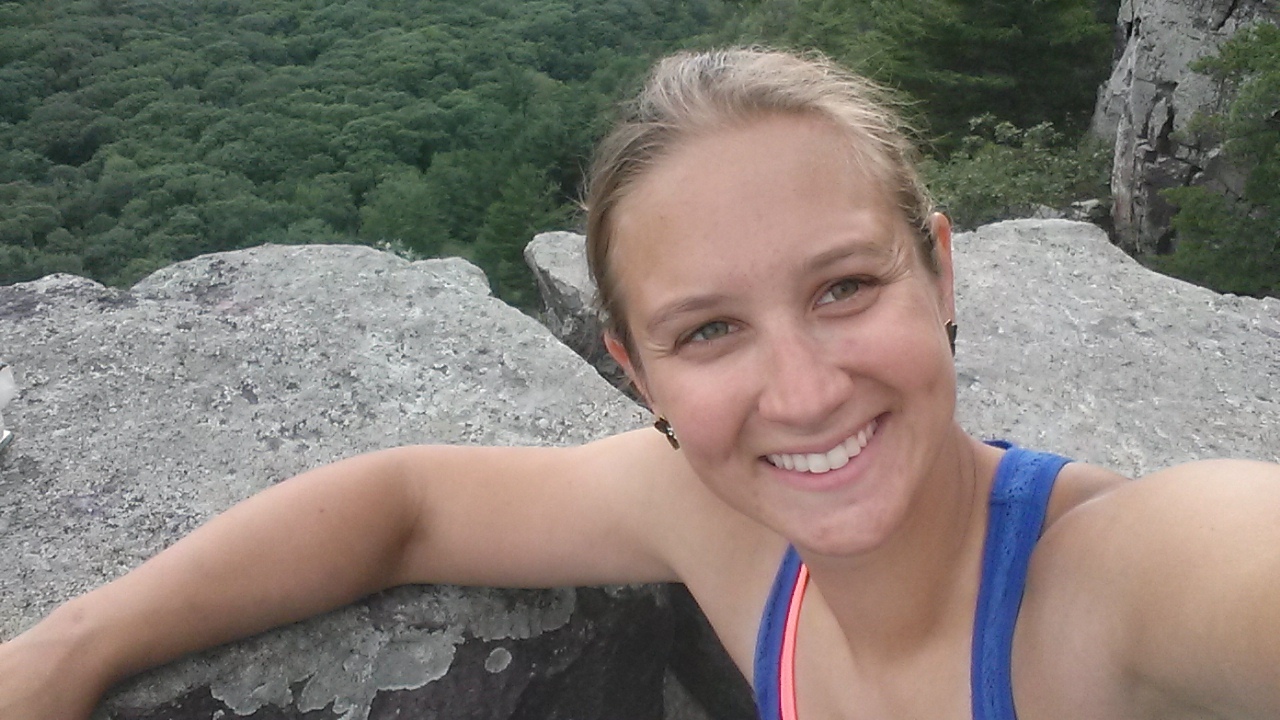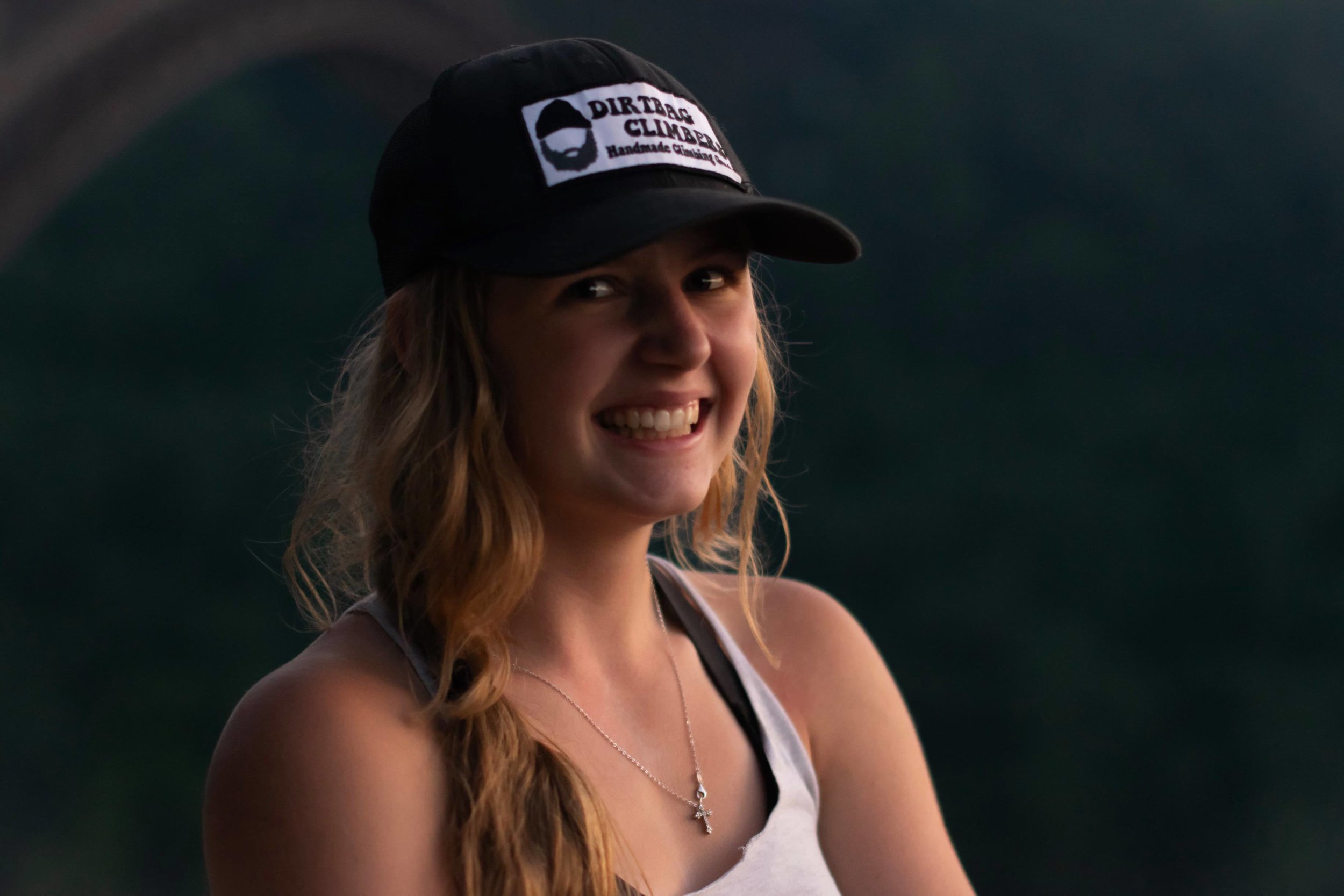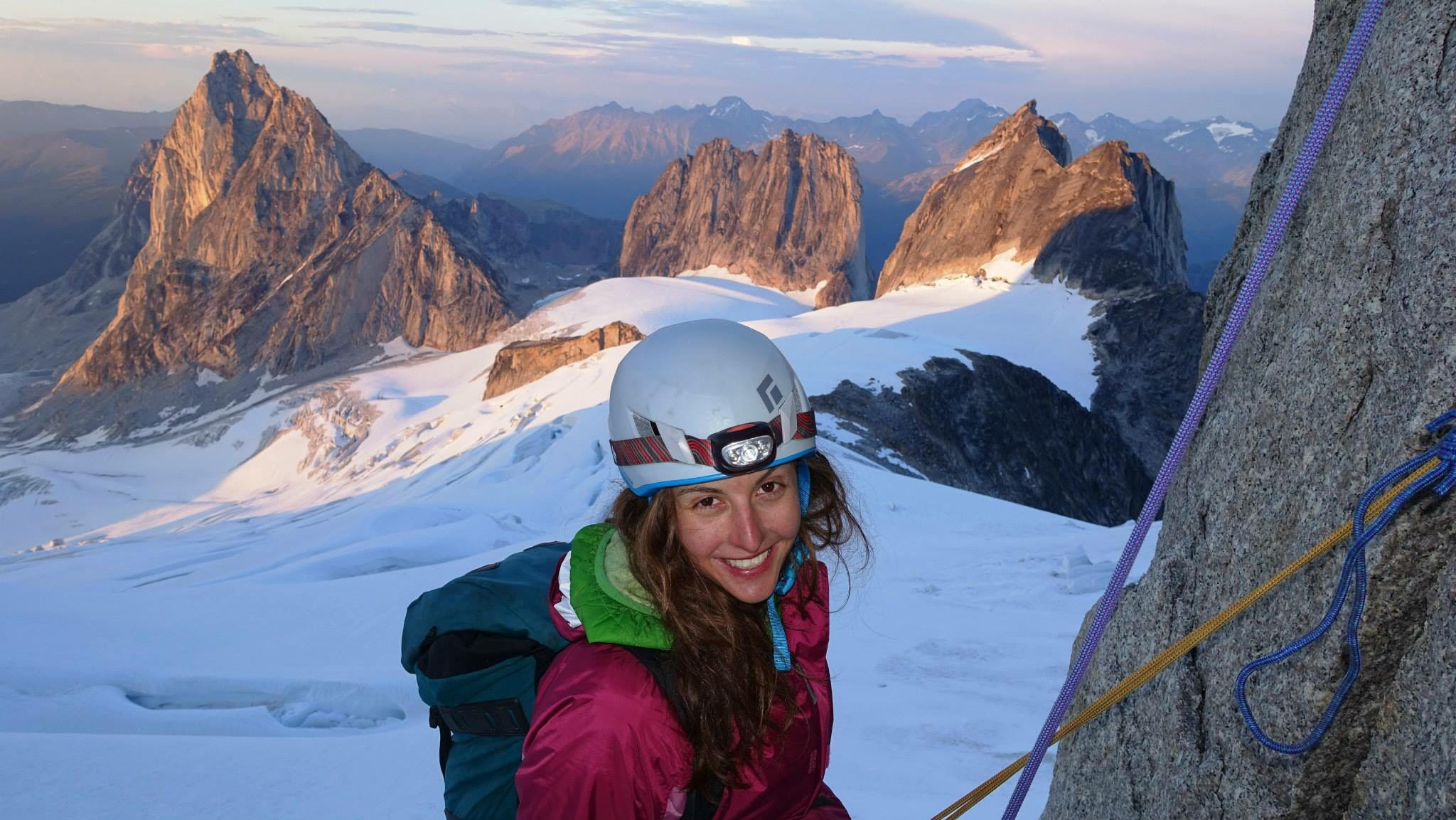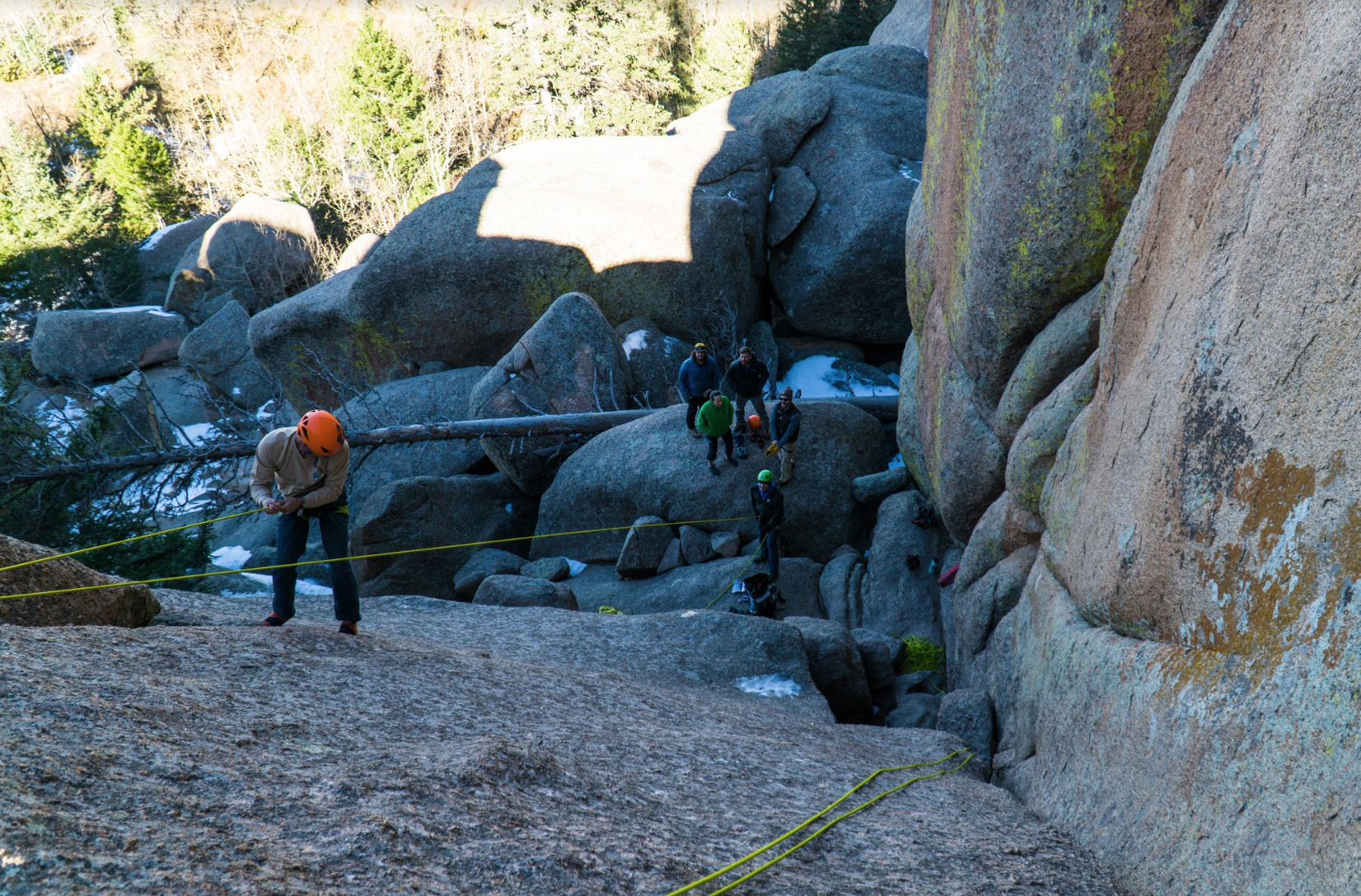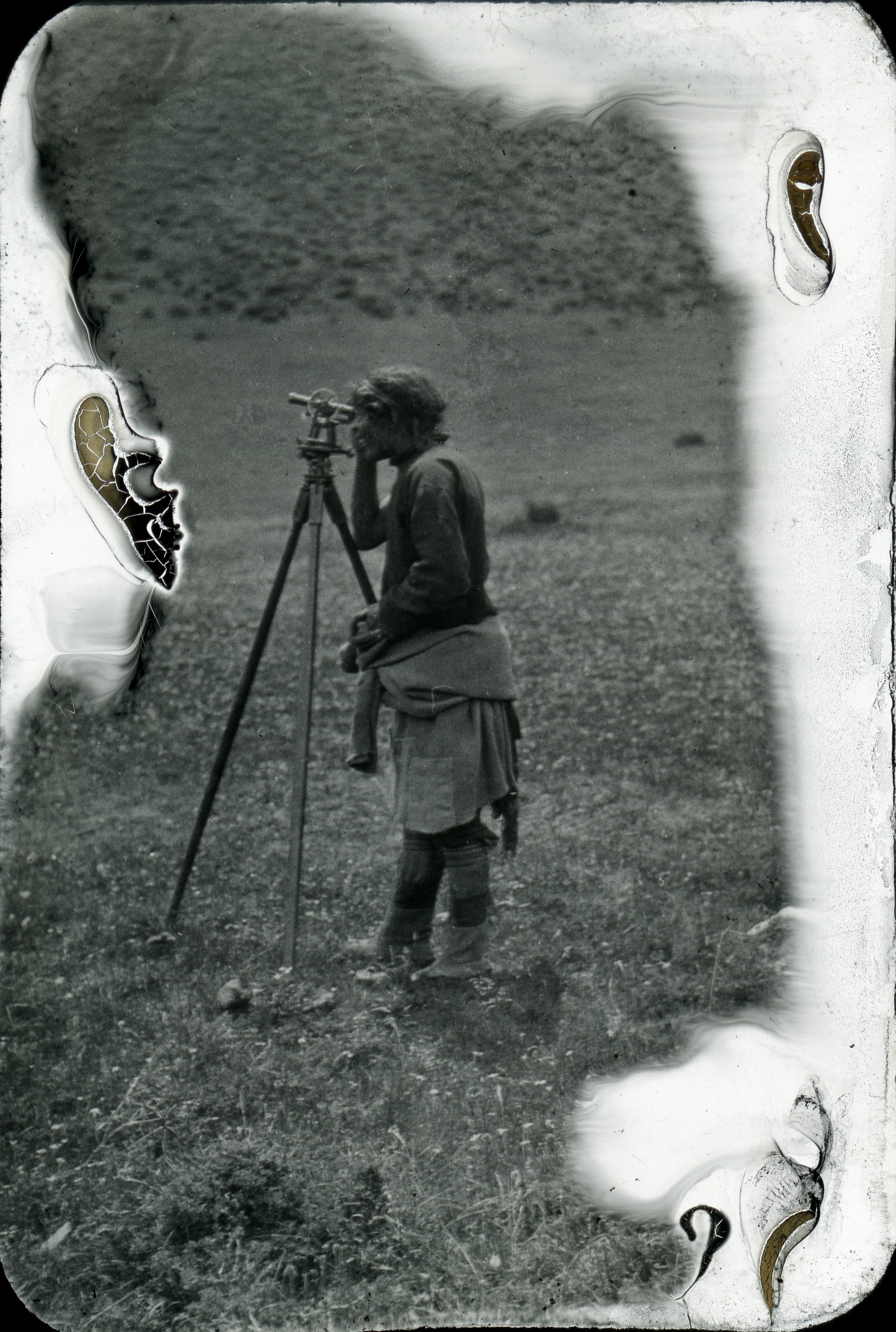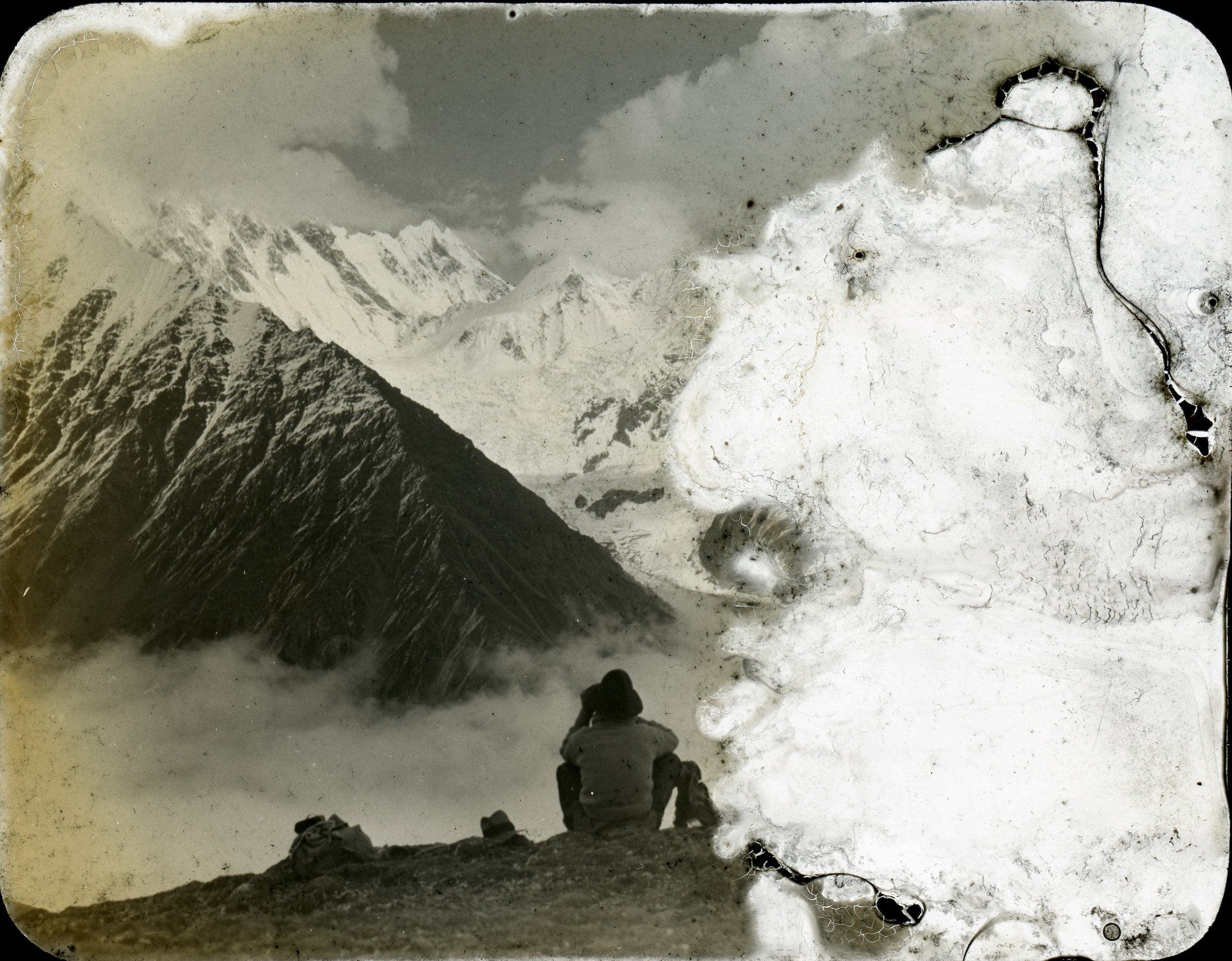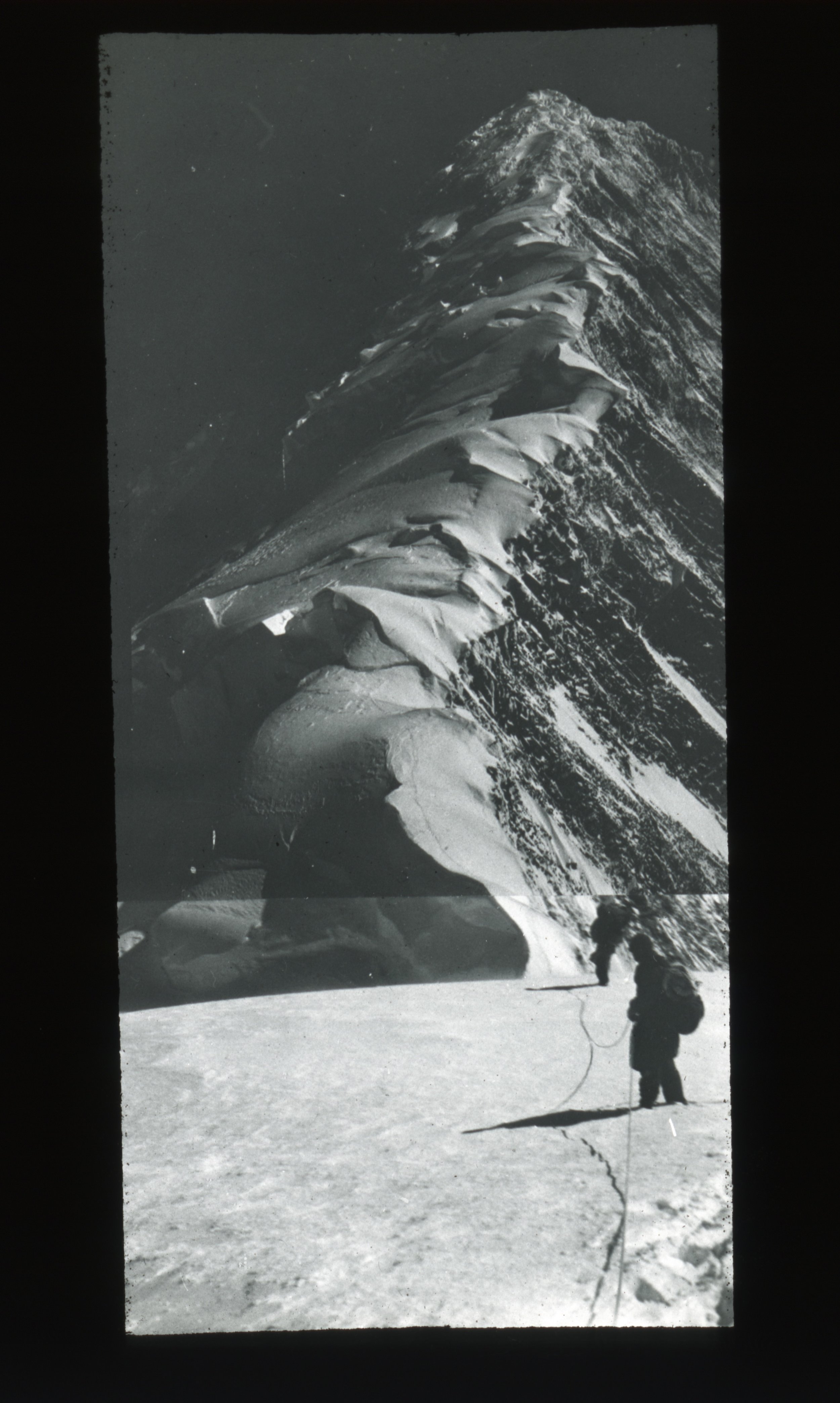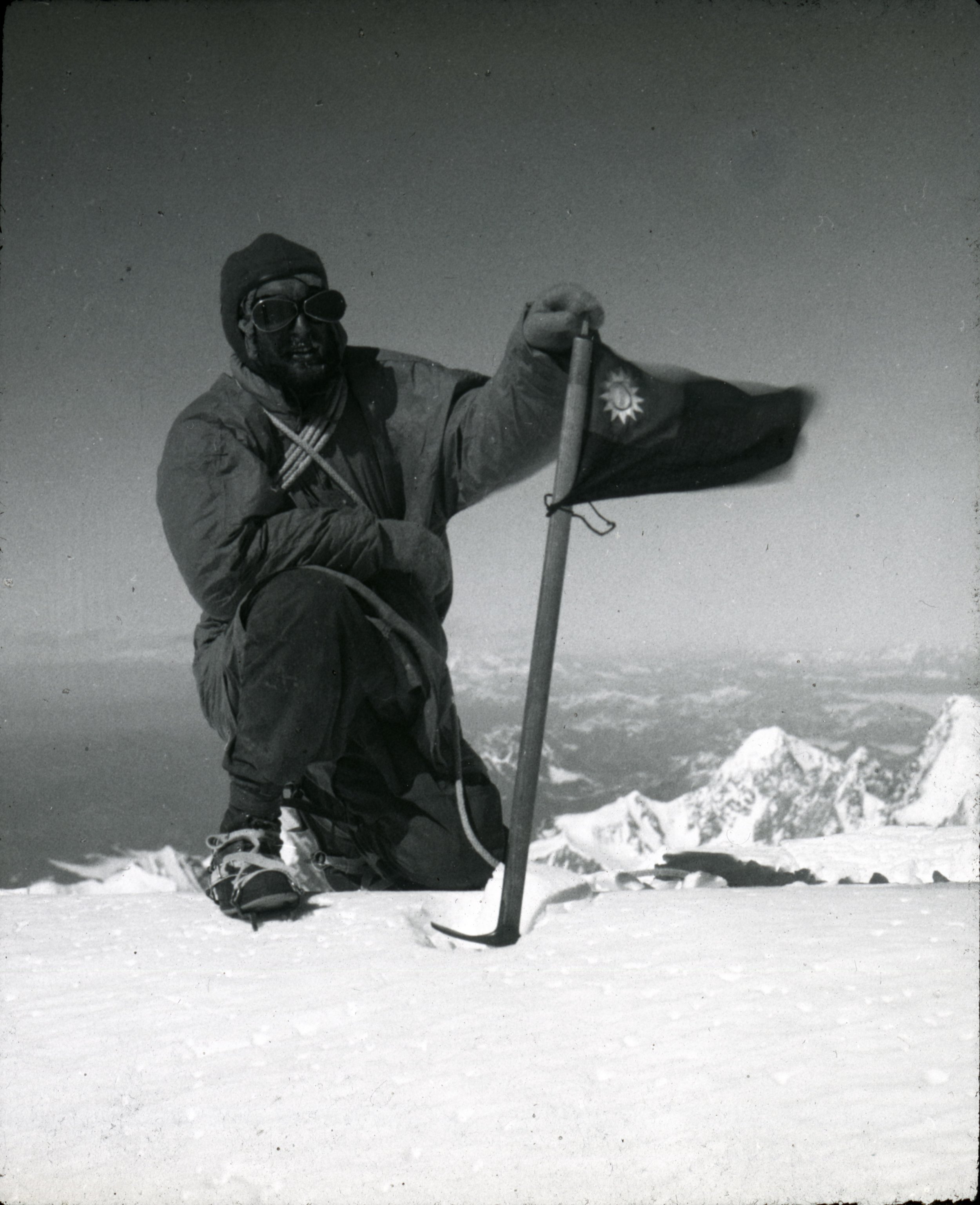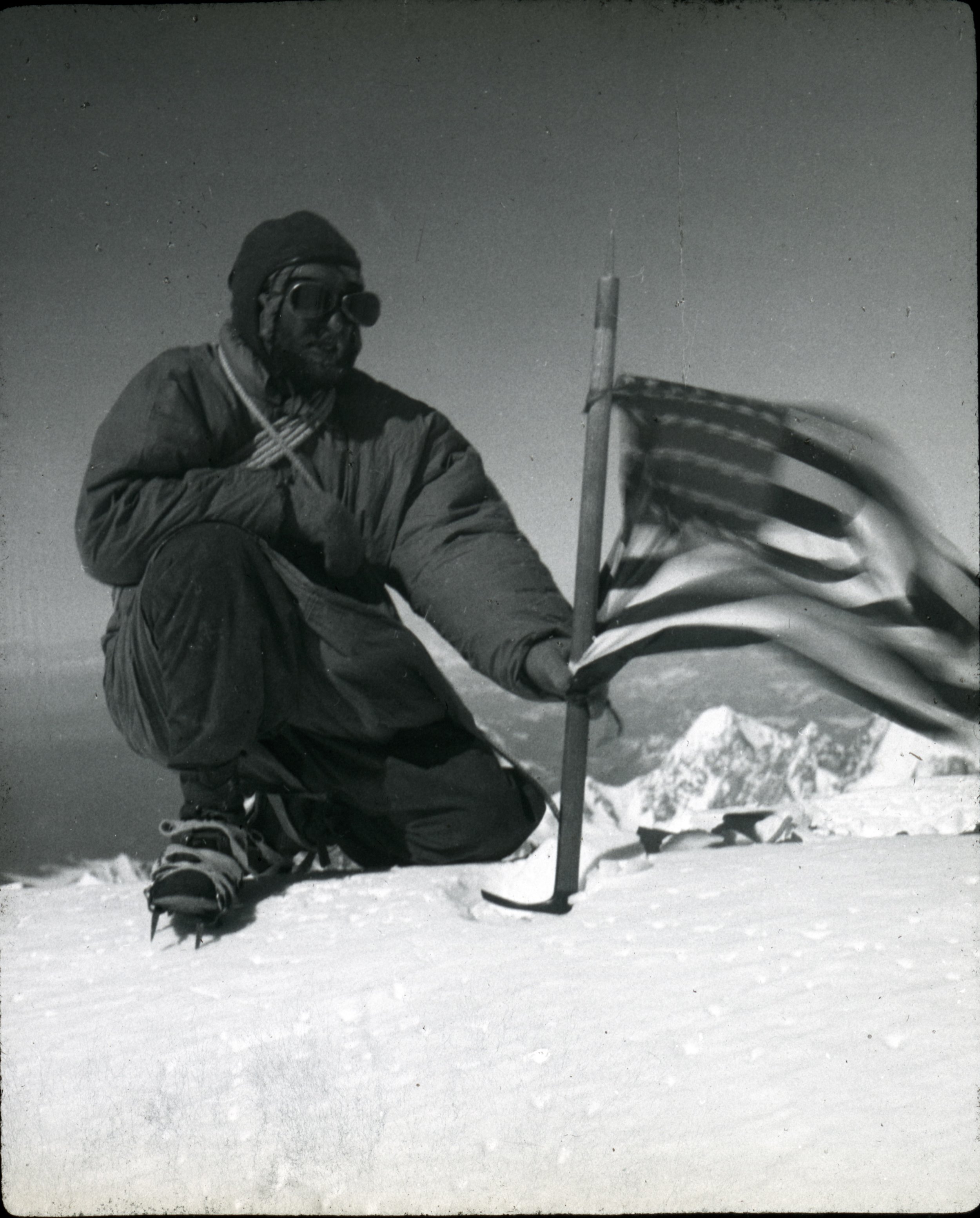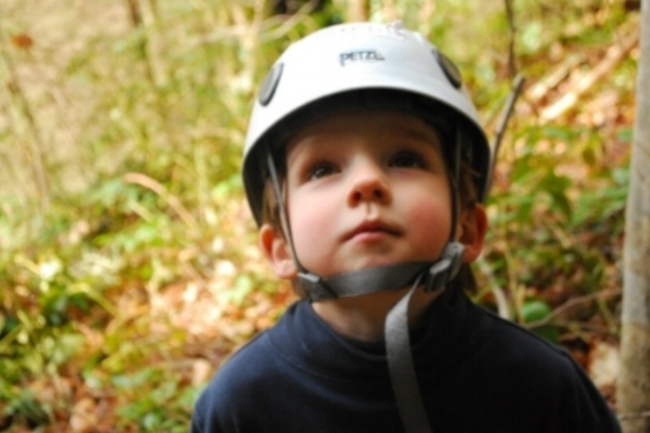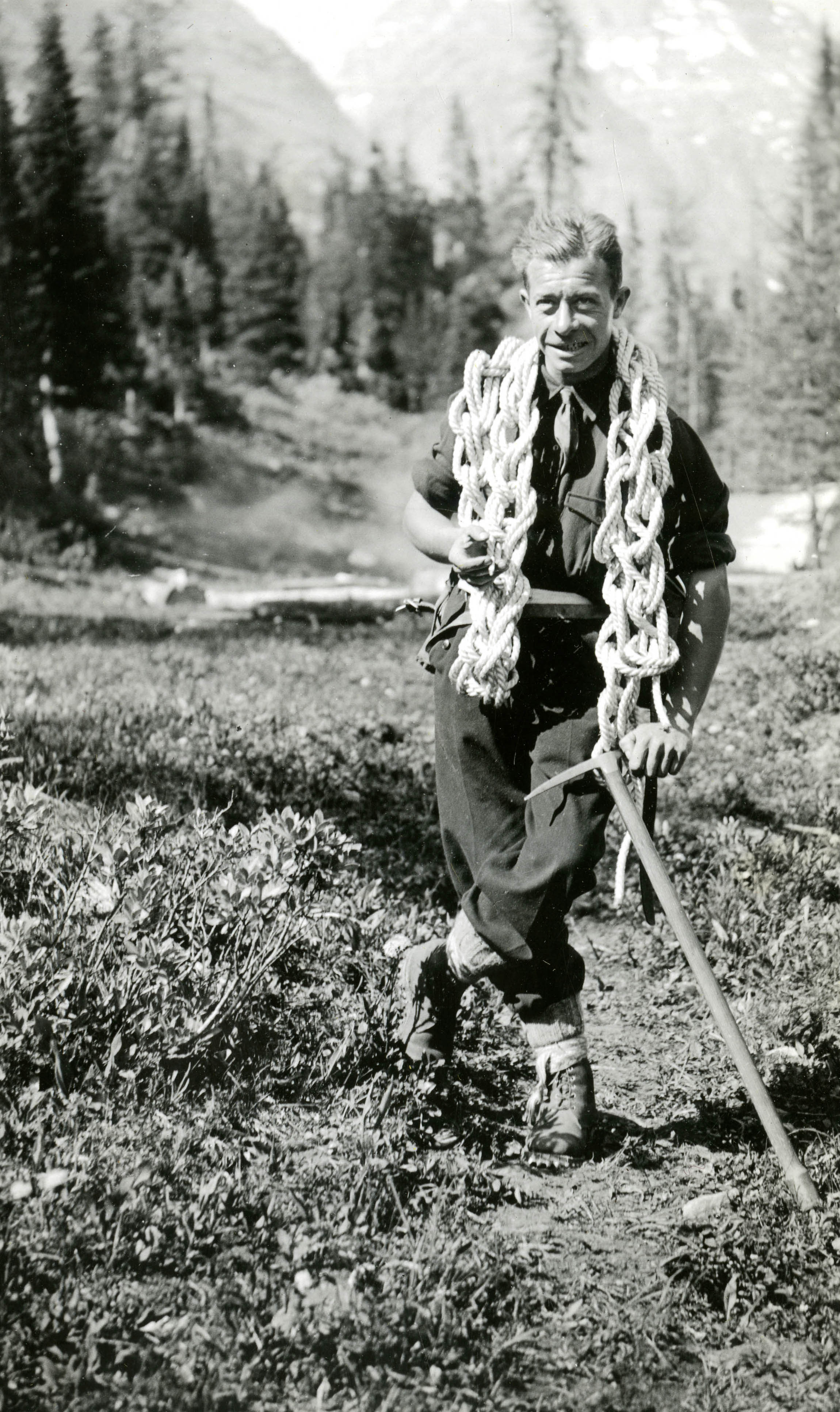In 1925 Albert H. MacCarthy had just led a successful first ascent of Mount Logan in Canada, composed of climbers from Canada, Britain and the United States. MacCarthy, an American and member of the American Alpine Club, wrote a number of reports and summaries of the expedition, including this list of Mountain “Dont’s.”
2018 at the AAC: a Recap
Thank you all for being part of a wonderful year at the Club! We couldn’t do it without you.
Pitons
by Allison Albright
A set of pitons from the mid-20th century, including LEM, Charlet-Moser, Stubai and Chouinard
Pitons are one of the oldest types of rock protection and were invented by the Victorians in the late 19th century. Pitons are metal spikes which are inserted into cracks in the rock and secured by hammering them into place with a piton hammer.
Illustration of a climber using natural protection methods to rope down from Alpine Climbing on Foot and with Ski by Ernest Wedderburn, 1937
Mountaineering involved technical rock climbing only as a means to reach the top of the mountain, and not, in those days, for its own sake and by the turn of the 20th century, most mountain climbers favored “natural protection,” which was securing rope to rocks or other natural features that could be found along the route. They used pitons nearly exclusively for climbing down and only then when the route down had become unsafe due to the sun setting or ice forming on rocks. This was especially true of UK mountaineers, who prided themselves on their ability to climb without the use of such aids.
Many mountaineers in those days believed that the use of artificial rock protection and aids, such as pitons, would lead to carelessness and were regarded as useless in the ascent of difficult routes.
Early pitons were iron spikes and had rings attached to one end through which mountaineers would secure their rope. However, those rings sometimes bent or broke under the weight of a mountaineer. Hans Fiechtl invented the modern piton in 1910, made entirely of one piece of metal with a hole (called the eye) in one end. This reduced the number of moving parts in the tool and made them sturdier and more reliable.
Illustration of piton use and placement from the Handbook of American Mountaineering by Kenneth Henderson, 1942
“In such cases, pegs to hammer in and anchor to are a remedy for our failures, our failure to carry on, to adjust the climb to the day-length, or to watch the weather. Their use then is corrective, not auxiliary.”
Angle piton with a ring
Illustration of proper piton technique from the Handbook of American Mountaineering by Kenneth Henderson, 1942
Pitons were mostly made of softer steel and iron that allowed them to conform to the shape of the crack when used, making it difficult or impossible to remove them from the rock when they were no longer needed. This method worked well in the softer rock of Europe and much of the US, and pitons were habitually left in place at the end of a climb.
However, leaving permanent marks on the landscape sat poorly with many climbers and soft pitons didn’t work well on longer routes where rock protection needed to be removed and used again. They also didn’t hold up well in the hard granite of places like the Yosemite Valley. In 1946 John Salathé, a climber and a blacksmith, used hardened steel to create pitons that could be removed from a crack and used again and again without getting bent or disfigured.
A lost arrow piton with sunburst design
The only problem with the harder pitons was that they often disfigured the rock. Since pitons are hammered into and out of rock cracks, and since the same cracks are often used over and over again, climbers were leaving their mark each time they inserted and removed a hard steel piton. The soft steel pitons weren’t much better at leaving a route unaltered, since they often had to be left in place. They can still be found in some routes.
“There is a word for it, and the word is clean.” – Doug Robinson, The Whole Natural Art of Protection, 1972
Yvon Chouinard, who had been making pitons through his Chouinard Equipment brand for several years by then, introduced the aluminum chocks in his 1972 Chouinard Equipment/Great Pacific Iron Works catalog. The catalog included two seminal essays on clean climbing; A Word by Yvon Chouinard and Tom Frost, and The Whole Natural Art of Protection by Doug Robinson. You can read them online here. This ethos changed American climbing forever and the piton was quickly replaced by equipment that could be easily removed and reused without damaging or altering the rock, first slings, nuts and chocks and later cams.
Pitons manufactured by Yvon Chouinard, arranged in order of their evolution.
Clean climbing methods proved to be much safer and easier to use than pitons, since pounding a spike into a crack with a hammer is time and energy consuming. Pitons are still used in some places where other types of protection aren’t an option, but these situations are rare.
You can check out some examples of pitons from our archival gear collection in the slideshow below.
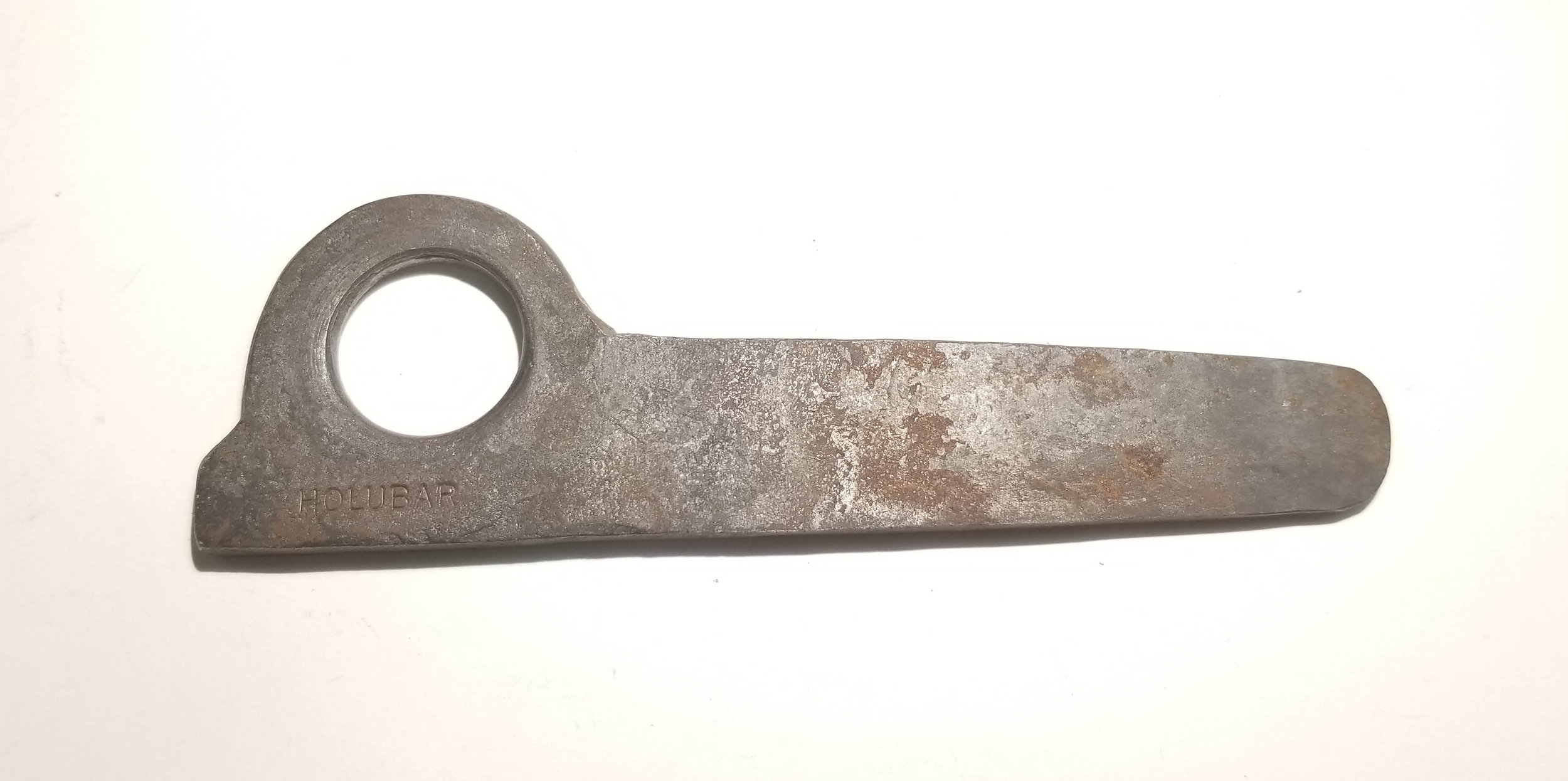
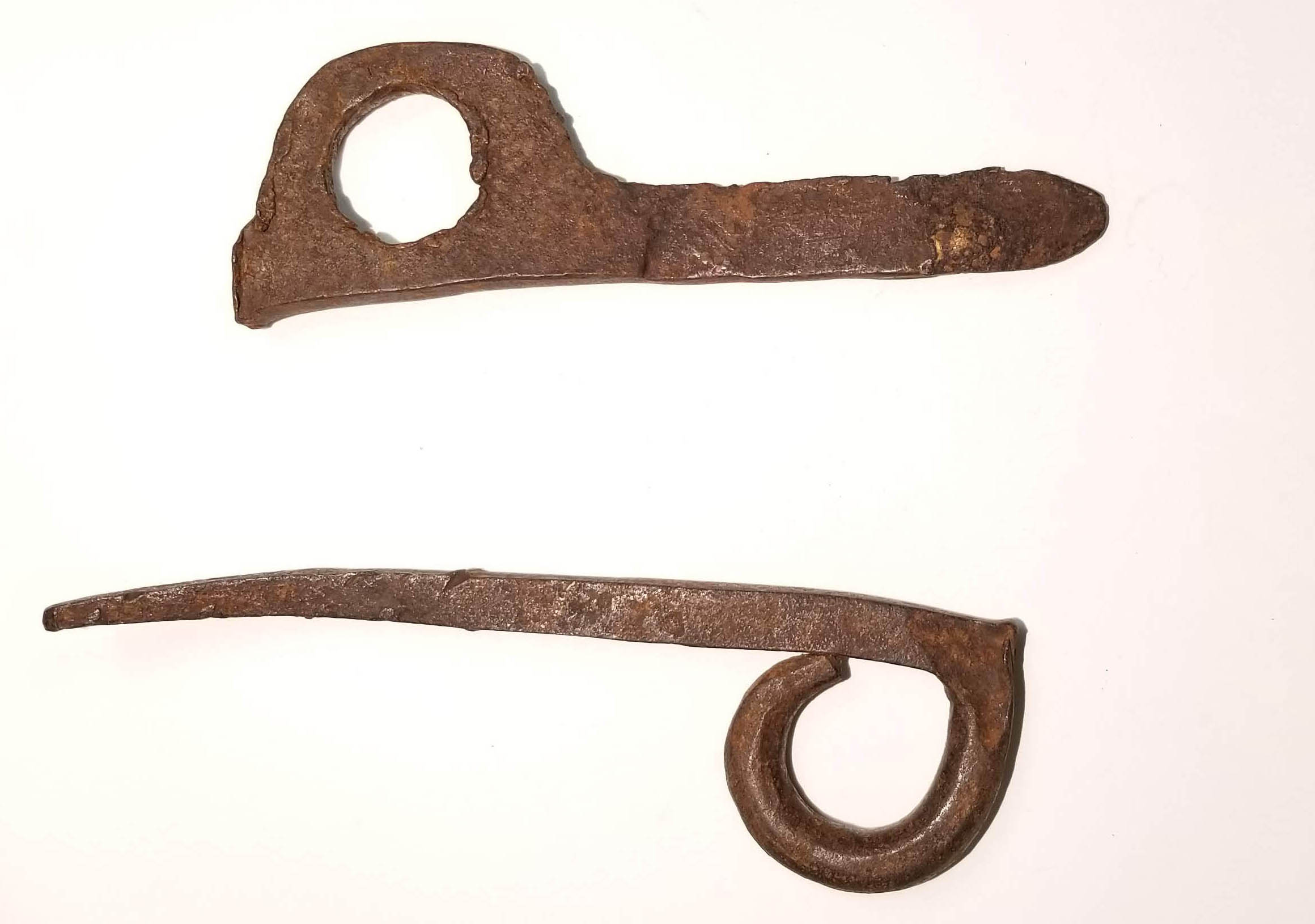
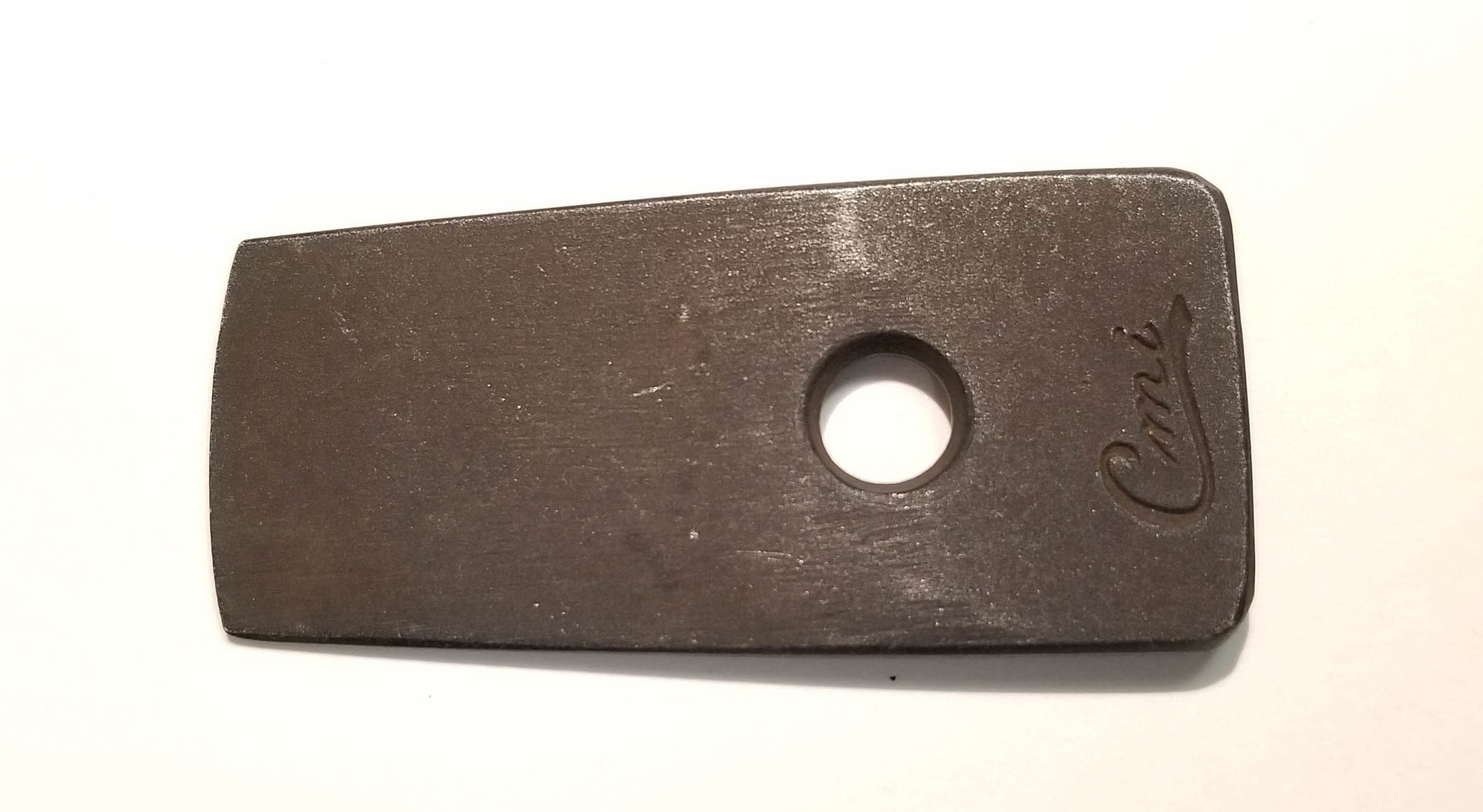
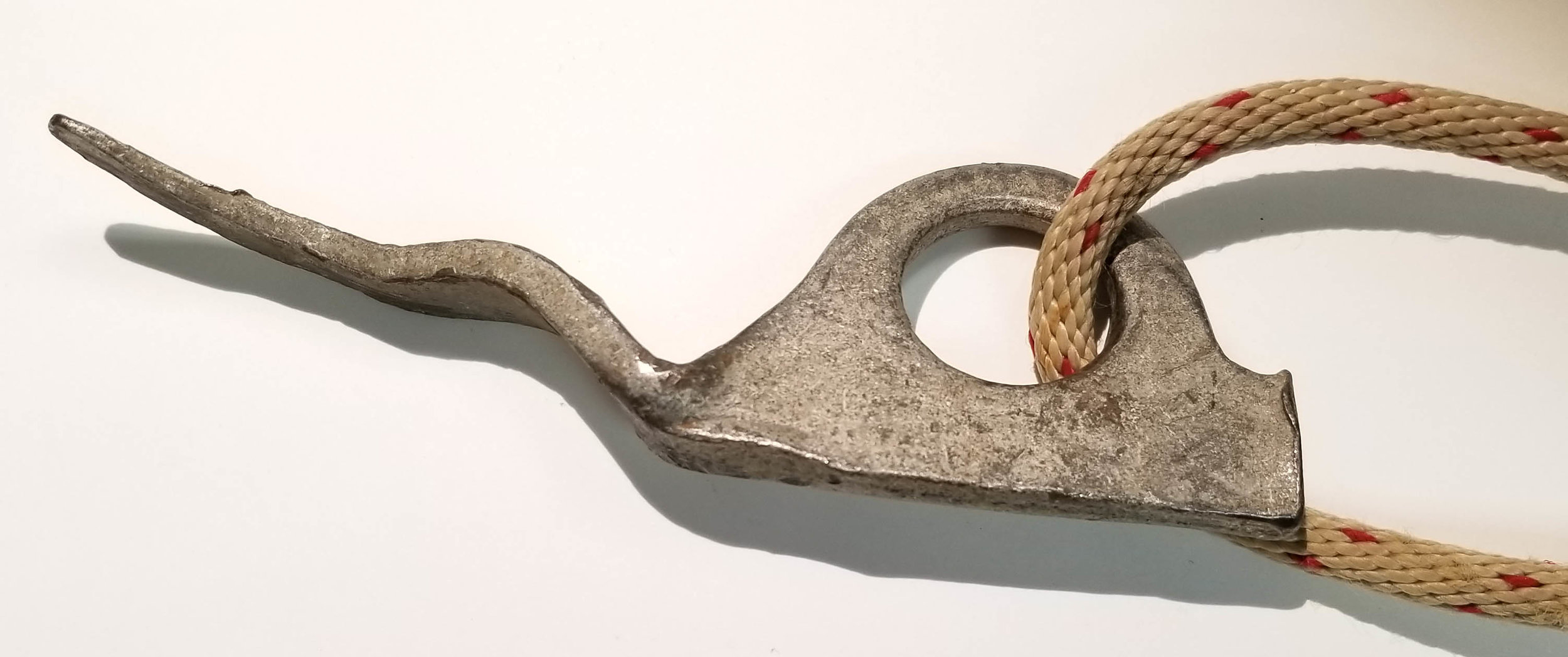
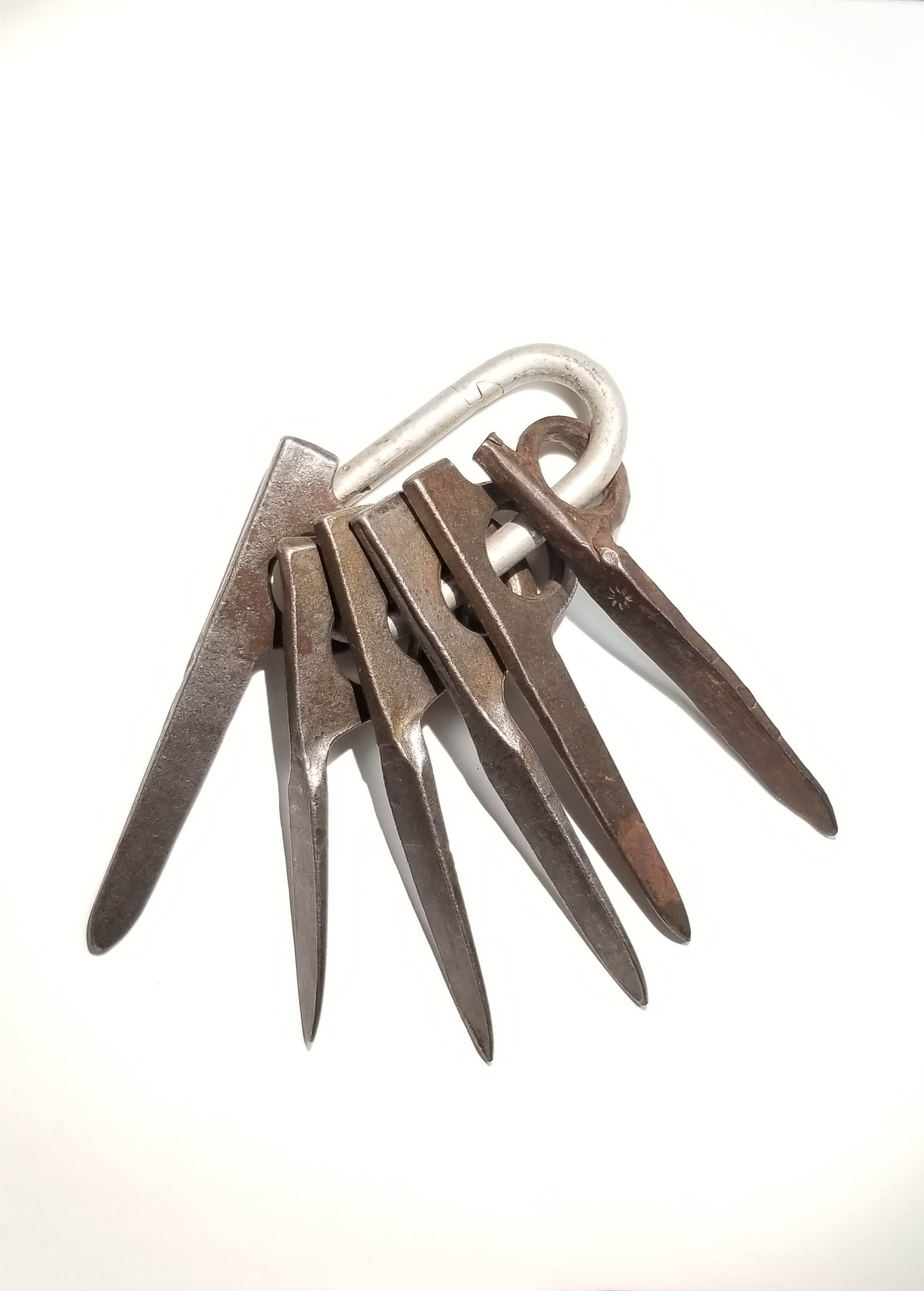
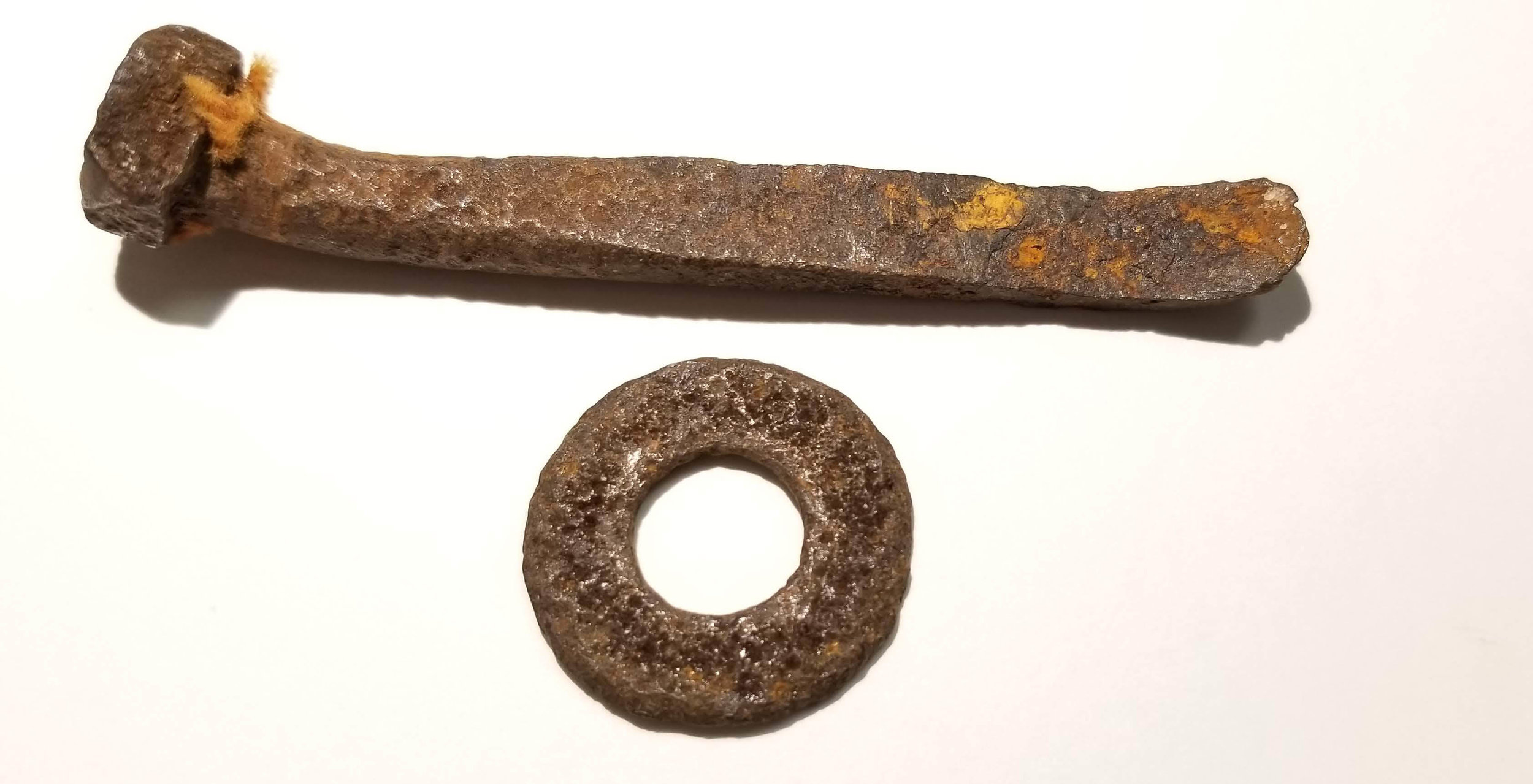
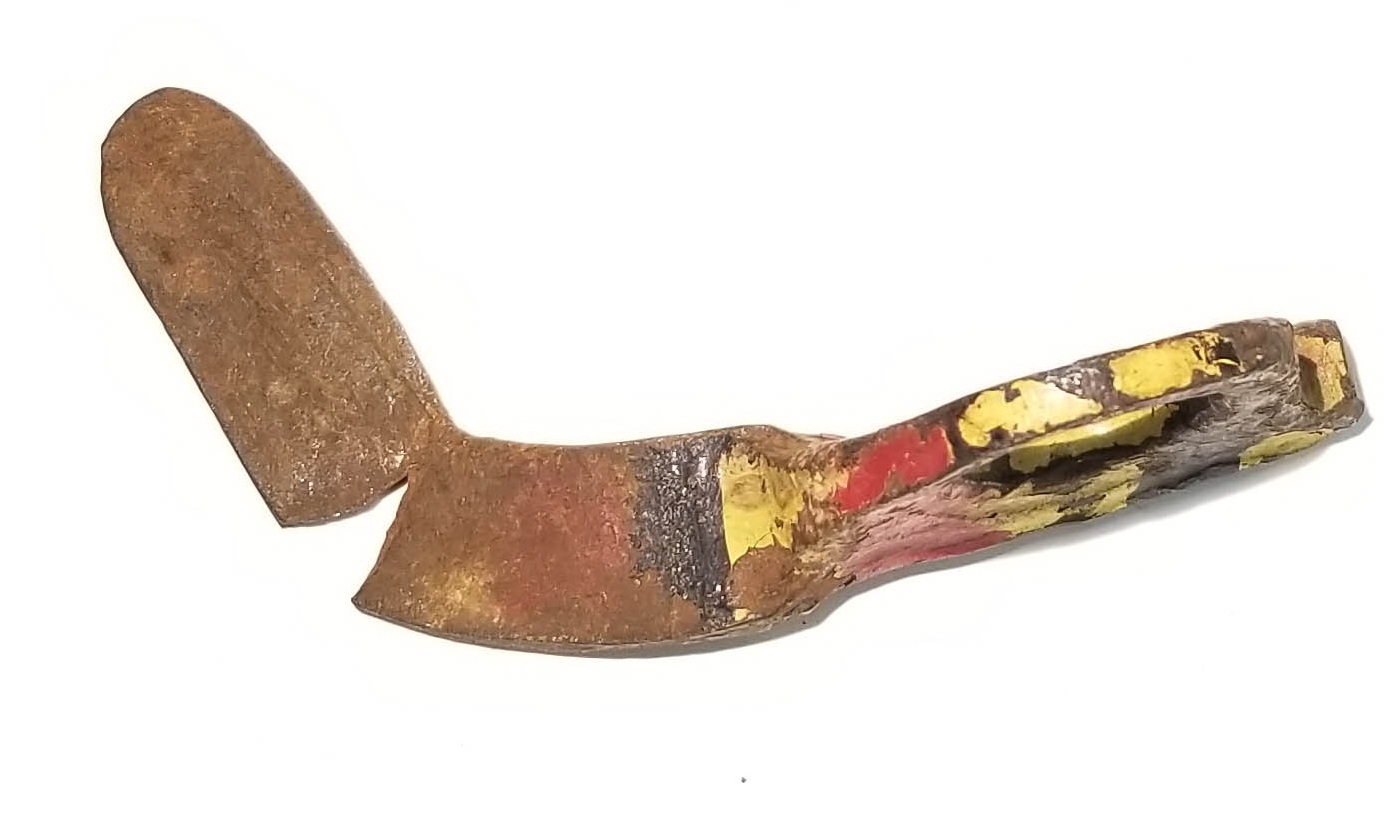
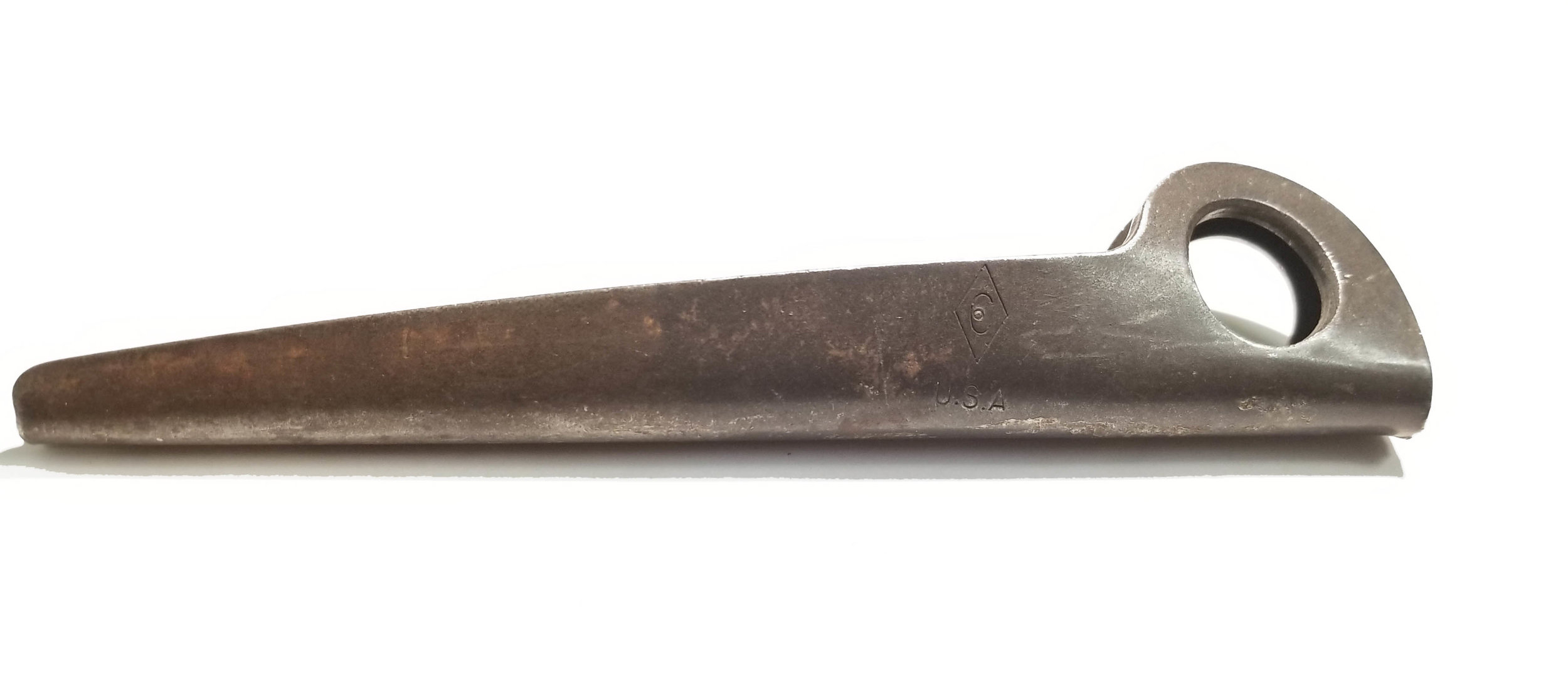
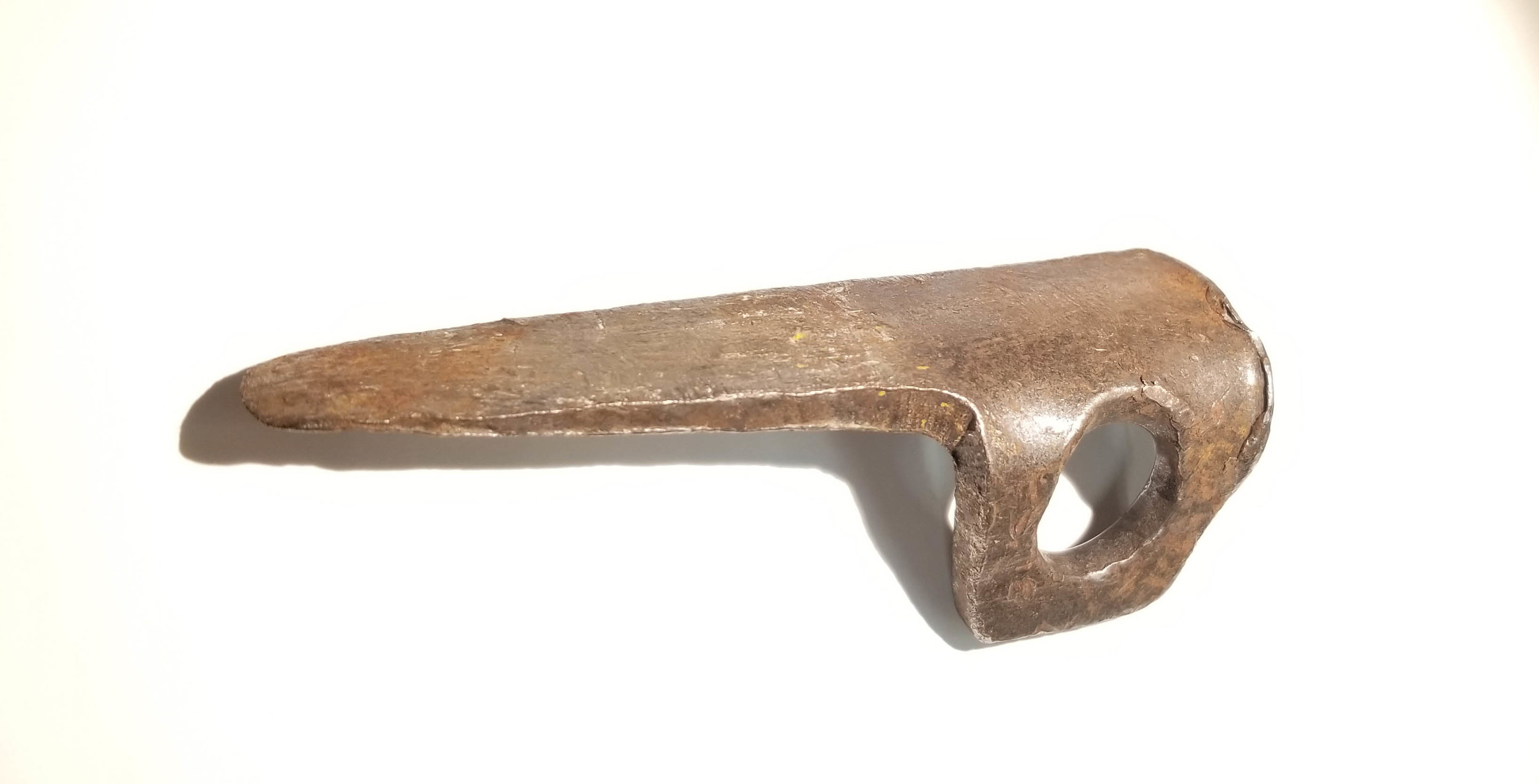

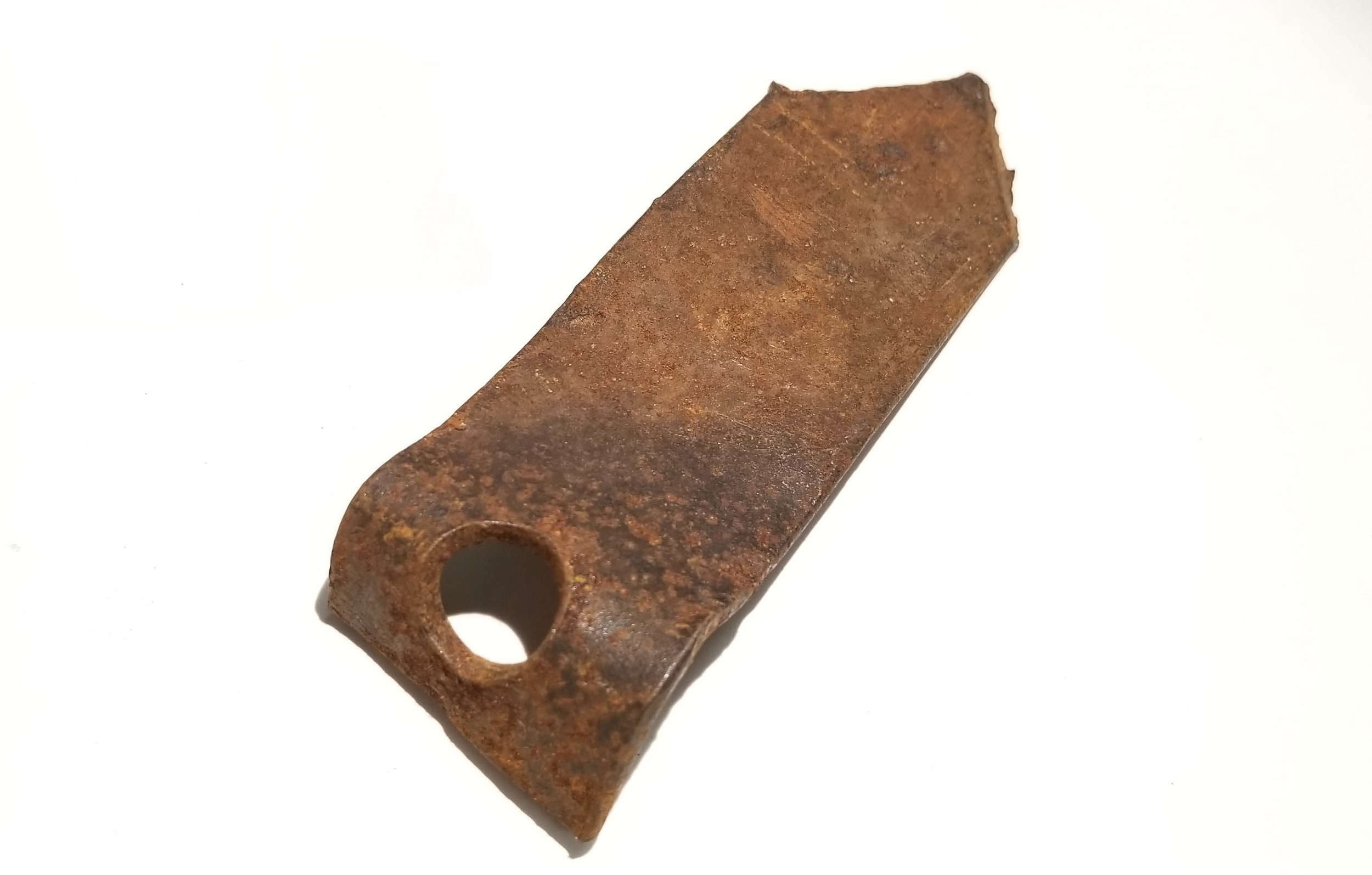
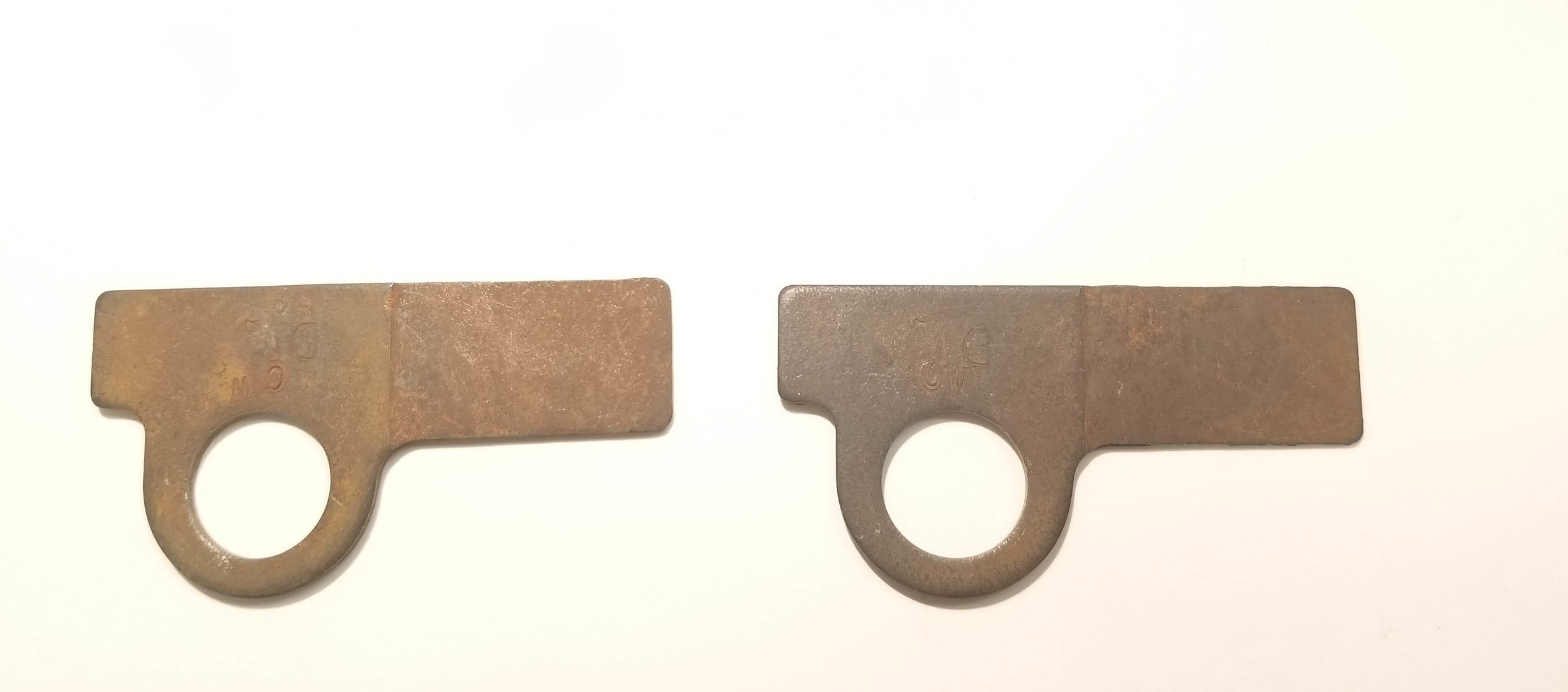
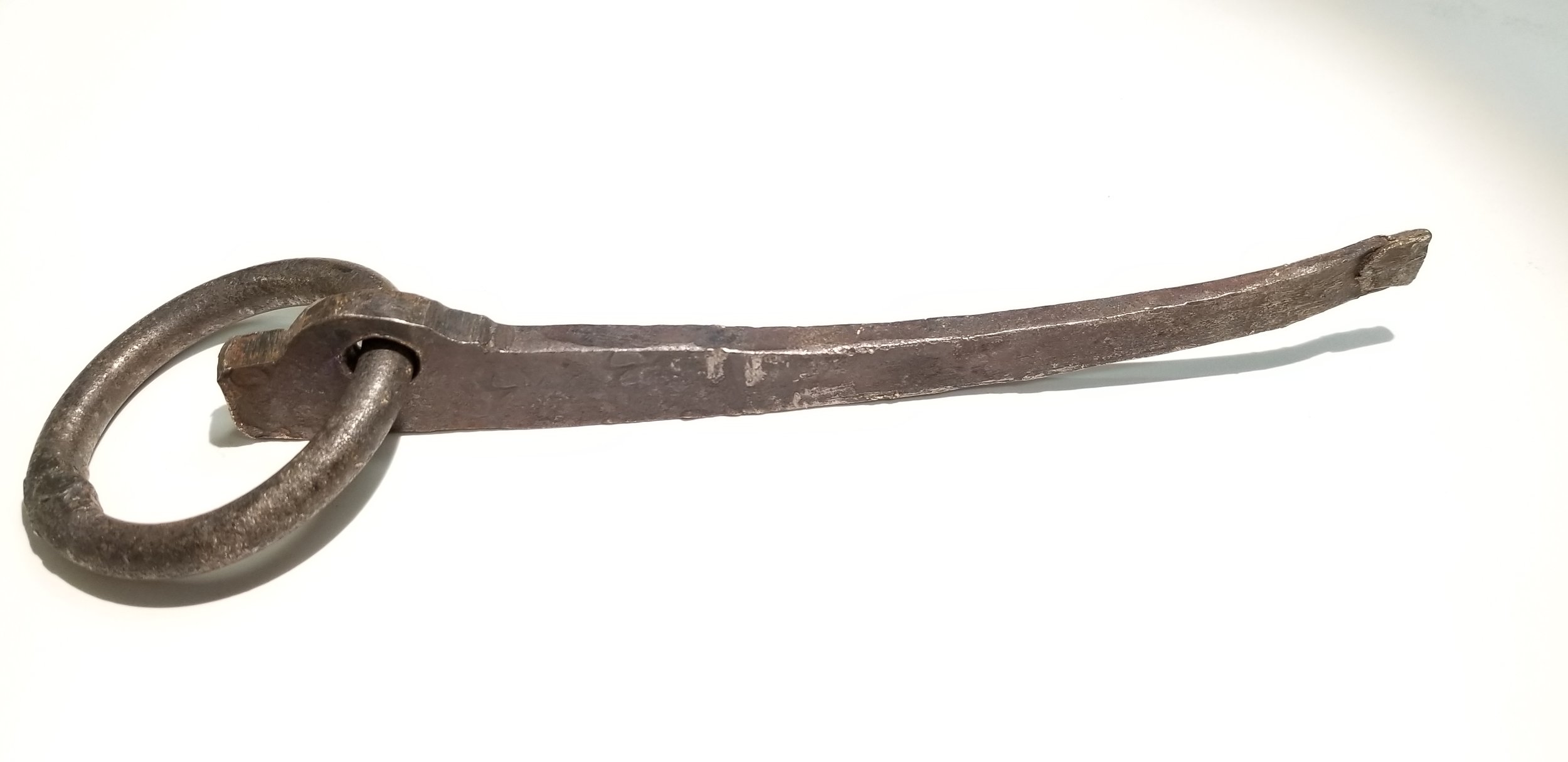

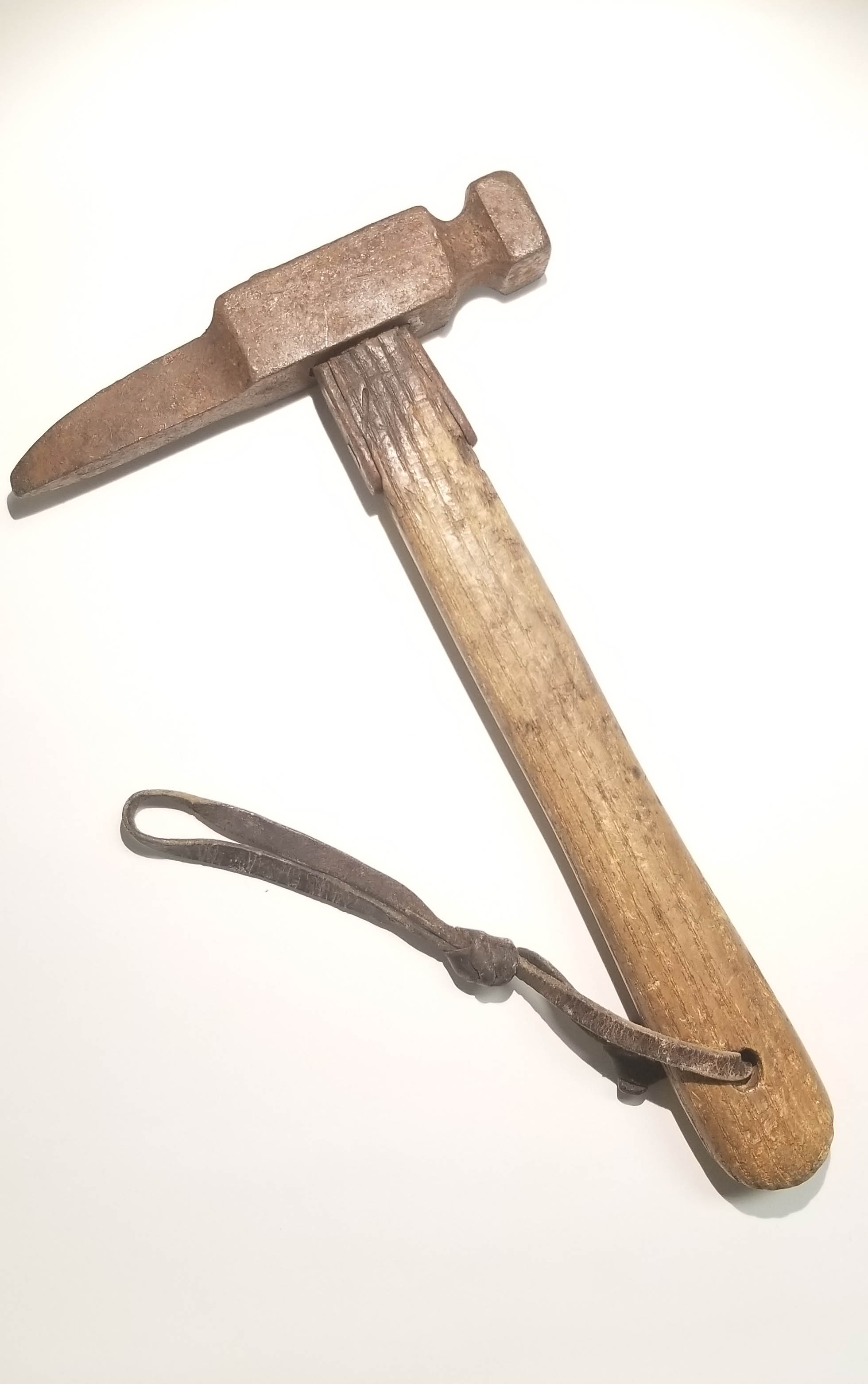
Celebrate the Holidays With Us: A Climber Gift Guide
Photo: AAC member Tim Banfield
‘Tis the season! Let us make some recommendations for everyone on your gift list.
For the long-term partner-in-climb, who loves tracking miles and always gives a soft catch:
Treat them to a Limited Edition Suunto Ambit 3 AAC Watch— they deserve it.
For the cragging buddy who offers you a cold one after every send (or flail):
Repay the favor by gifting them this Mountainsmith Cooler with an AAC logo, stocked with their favorite brews.
For the old-school climbing geek:
Give them the gift of historical inspiration- and a beautiful centerpiece for their coffee table- with a collectible book from our library.
For that friend who’s always cold, at the crag or in the gym:
Keep them cozy with a mountains pullover hoody, and get bonus points for the sweet graphic.
For the climber pal who’s made you utilize your WFR training:
Make sure it doesn’t happen again by letting them learn from Accidents in North American Mountaineering.
For those who believe the descent can be as fun—or more fun—than the ascent:
Go big with a gift so your loved one or friend can go big on these custom skis (or, treat yourself—you deserve it!). We've partnered with Meier Skis and artist Noelle Phares to create a custom AAC ski built just for you.
For literally everyone:
There’s never been a better time to give the gift of AAC membership— the gift that keeps them safe, inspired, and climbing on. Learn more about why every climber should be part of the Club.
2019 US Team Announced for the UIAA World Cup Ice Climbing Comp
We’re thrilled to announced the 2019 USA World Cup Ice Climbing Team. The team of 21 male and female athletes is set to compete in the upcoming UIAA World Cup Ice Climbing Tour, and 18 will compete here in Denver, CO. February 23 – 24, 2019.
Golden, CO, December 5, 2018—The American Alpine Club (AAC), America’s oldest non-profit organization for climbers, is thrilled to announced the 2019 USA World Cup Ice Climbing Team. The team of 21 male and female athletes is set to compete in the upcoming UIAA World Cup Ice Climbing Tour, and 18 will compete here in Denver, CO. February 23 – 24, 2019.
The AAC led the application process and final selection of the 2019 USA Team. Criteria was based on national rankings from recent competitive ice climbing seasons and events, and a preference for athletes who compete in cross-disciplinary ice competition (e.g. athletes that compete in both the Difficulty (Lead) and Speed competitions). The AAC also provided “developmental” spots on the team for less experienced competition climbers who demonstrate exceptional talent and commitment to the sport. Equal team positions were available for men and women in the performance (6) and developmental (2) categories.
The final 2019 USA Team consists of 21 adults and 10 youth members.Phil Powers, CEO at the AAC said “These athletes represent the cutting edge of one of the more wild versions of the climbing craft. I am astounded every time I witness their gymnastics and delicate skill all performed far off the ground with ice axes and crampons.”
The 2019 event is the first time the Ice Climbing World Tour has come to Denver, Colorado and the first time a World Cup Finals event has been held in the USA. The weekend event will be held in Denver’s Civic Center Park and is free to the public. The ice climbing competition will take place over two days with qualifying rounds on Sat, Feb 23, and semi-finals and overall finals on Sun, Feb 24. The event is expected to attract over 200 athletes from 21 countries around the world to compete for the overall World Cup in both Difficulty and Speed categories.
Competition ice climbing combines formidable over-hanging walls of ice with artful technique and sheer power. In the lead discipline, ice climbers require great technique, tactical mastery and nerves of steel to execute complex moves in seemingly improbable positions dozens of feet above the ground. The speed discipline is almost a vertical take on the 100m sprint in the sport of athletics. In 2014, competitive ice climbing debuted as an exhibition sport at the Sochi Winter Olympics and is hopeful for a full-scale Olympic debut in the near future.
2019 USA World Cup Ice Climbing Team:
Denver World Cup Finals:
Mens Lead:
Tyler Kempney
Thomas Gehrlein
Aaron Montgomery
Grant Kleeves
Kevin Lindlau
Wesley Fowler
Carter Stritch
Troy Anger
Womens Lead:
Corey Buhay
Catalina Shirley
Claire Poppendeck
Mikayla Tougas
Angela Tomczik
Angela Limbach
Kendra Stritch
Mens Speed:
Tyler Kempney
Thomas Gehrlein
Kevin Lindlau
Wesley Fowler
Marcus Garcia
Jake Bourdow
Troy Anger
Carter Stritch
Womens Speed:
Corey Buhay
Catalina Shirley
Claire Poppendeck
Angela Tomczik
Angela Limbach
Kendra Stritch
Lindsay Hastings
2018/2019 International World Cup Events:
Mens Team:
Tyler Kempney
Thomas Gehrlein
Kevin Lindlau
Carter Stritch
Troy Anger
Liam Foster
Cody Stevenson
Andrew Lamb
Marcus Garcia
Carter Stritch
Womens Team:
Angela Tomczik
Angela Limbach
Kendra Stritch
Lindsay Hastings
World Cup Youth Team:
Keenan Griscom
Calvin Daugherty
Kylie Cullen
Georgia Witchel
Aubrey Palmer
Maija Fox
MaKenzee Van Buren
Liam Foster
Cody Stevenson
Mikayla Tougas
Katie Seymour
Lindsay Levine
Christopher Atchison
Catalina Shirley
Support the USA Ice Climbing Team.
Read more about the 2019 USA World Cup Team here:
https://americanalpineclub.org/world-cup/2018/11/26/2019-usa-world-cup-ice-climbing-team
2019 Denver Ice Climbing World Cup Schedule:
Friday, Feb 22 Opening Ceremony
Saturday, Feb 23 8AM – 8PM // Lead Qualifiers, Speed Qualifiers
Sunday, Feb 24 8AM – 5PM // Lead Semi-Finals, Lead Finals, Speed Finals, Closing Ceremony, After Party (hosted by the AAC)
International Volunteers Day: Thank you, AAC Volunteers!
2019 USA World Cup Ice Climbing Team
The American Alpine Club is pleased to announce the 2019 USA World Cup Ice Climbing Team! Click on a photo to learn more about an athlete and where they are competing this season.
WORLD CUP Mens Team
WORLD CUP Womens Team
Youth World Championship Team
Keenan Griscom
Calvin Daugherty
Kylie Cullen
Georgia Witchel
Catalina Shirley
Liam Foster
Cody Stevenson
Mikayla Tougas
Katie Seymour
Lindsay Levine
The 2019 USA ice climbing team can use your support! The USA Ice Climbing team has grown significantly this year with 21 Adults and 10 Youth competing. As a developing sport, there is not much monetary sponsorship available and athletes need to fund their own trip as well as purchase unique and expensive equipment to be able to train and compete.
Please consider supporting this amazing team!
AAC Offers Veterans New Membership Options and Outreach
We’re proudly expanding our efforts to engage active-duty military and veterans through new membership options and proactive outreach. The effort—led in large part by active-duty military AAC members—seeks to engage the veteran community by offering discounted Club membership, hosting veteran-focused climbing events, and promoting wellness and camaraderie through the pursuit of climbing.
Last spring, we launched a new grassroots public lands advocacy initiative, “Hill to Crag”, to take elected officials and their staff rock climbing. The event quickly expanded in scope once AAC’s Salt Lake Chapter Chair Byron Harvison became involved. Harvison, a life-long climber and active-duty US Army Major, saw the events as an opportunity to share his and other veterans’ experiences with rock climbing and public land with lawmakers.
“After returning home from an intense deployment in Afghanistan, I found climbing not only to be a retreat back to what I loved, but a good place to settle my thoughts,” says Army Major Harvison, “In my role in the Armed Forces, I’ve seen many people deal with substance abuse and depression post deployment. Climbing facilitates positive community engagement, healthy lifestyle, and connection to wild landscapes.”
Together with Major Harvison, the AAC we’ve organized four “Hill to Crag” events in 2018 and are rolling out a new AAC Veteran Chapter, which Harvison will Chair. We also plan to extend a special membership discount to active-duty military and veterans starting in early 2019.
Golden, CO, November 8, 2018 The American Alpine Club (AAC), America’s oldest and largest climbing advocacy non-profit, is proudly expanding the organization’s efforts to engage active-duty military and veterans through new membership options and proactive outreach. The effort—led in large part by active-duty military members of the American Alpine Club—seeks to engage the veteran community by offering discounted club membership, hosting veteran-focused climbing events, and promoting wellness and camaraderie through the pursuit of climbing.
In spring 2018, the American Alpine Club launched a new grassroots public lands advocacy initiative known as “Hill to Crag” with the intention to take elected officials and their staff rock-climbing. The event quickly expanded in scope once AAC’s Salt Lake Chapter Chair Byron Harvison became involved. Harvison, a life-long climber and active-duty US Army Major, saw the events as an opportunity to share his and other veterans’ experiences with rock climbing and public land with lawmakers.
“After returning home from an intense deployment in Afghanistan, I found climbing not only to be a retreat back to what I loved, but a good place to settle my thoughts,” says Army Major Harvison, “In my role in the Armed Forces, I’ve seen many people deal with substance abuse and depression post deployment. Climbing facilitates positive community engagement, healthy lifestyle, and connection to wild landscapes.”
Together with Major Harvison, the American Alpine Club has organized four “Hill to Crag” events in 2018 and is rolling out a new AAC Veteran Chapter, which Harvison will Chair. The AAC also plans to extend a special membership discount to active-duty military and veterans starting in early 2019.
Phil Powers, American Alpine Club CEO, added, “The American Alpine Club has been closely linked with our nation’s armed forces for a long time. The advocacy that created the 10th Mountain Division during WWII—and the training that followed—came largely from AAC leadership. The creation of a Veterans Chapter and Major Harvison's work connecting legislators and veterans through Hill to the Crag events are logical outgrowths of this history.”
2018 Hill to Crag Event Schedule:
November 16, 2018—Chimney Rock State Park, North Carolina
October 19, 2018—Vedauwoo Recreation Area, Wyoming
October 12, 2018—Golden, Colorado, VIDEO: https://youtu.be/W5Iw1fDigHE
May 26, 2018—Joe’s Valley, Utah
Denali - First ascent of the South Face via the West Rib 1959
It had all begun on an afternoon some nine months previous. Four of us were lying about relaxing after a particularly fine Teton climb when someone enthusiastically suggested, "Let’s climb the south face of McKinley next summer!” To attempt a new and difficult route on North America’s highest mountain seemed a most worthwhile enterprise; without further ado, we cemented the proposal with a great and ceremonious toast.
Last Minute Halloween Costume Ideas
Introducing: 57hours, the New Guiding App
Our Education Director Ron recently told us about two AAC members doing long-awaited work for our community: they’re streamlining both the process of hiring a guide and the process of guiding with their free new app, 57hours. If you're making a gym-to-crag transition, experiencing outdoor climbing through a professional facilitator, or hiring guides or instructors regularly, think of this as your go-to resource. AAC members, get 10% off all guiding services through 57hours with the link in your profile!
Gongga Shan (Minya Konka) 1932
by Eric Rueth
The Sikong Expedition in 1932 has to be one of the more unique mountaineering tales to have ever occurred. I and maybe others would argue that if there ever was a mountaineering expedition that should be turned into 1990’s style action-adventure movie starring Brendan Fraiser, this one would be it. There are too many interesting details to this expedition to fully capture in a blog post like this, so instead I’m going to give you a bare bones description and show you some of Terris Moore’s slides in an attempt to get you to read the American Alpine Club Journal articles about the expedition (linked below), and/or to read the entire book of the expedition (prologue through the epilogue), Men Against the Clouds. The pieces written by the expedition members themselves are really the only pieces of writing that do this expedition justice.
The Sikong Expedition consisted of four Americans, Jack Young, Terris Moore, Arthur Emmons, and Richard Burdsall. These were the four remaining members of a larger Explorers Club expedition that was meant to take place but dissolved due to various delays and complications created by global events. One of the global events was the Japanese invasion of Shanghai which led Young, Moore, Emmons, and Burdsall to briefly become a part of the American Company of the Shanghai Volunteer Corps.
After the dissolution Lamb Expedition to Northern Tibet, the first step of the newly formed Sikong Expedition was a twenty day journey up the Yangste River that featured rough waters, beautiful gorges and potential for pot shots from bandits on the river banks.
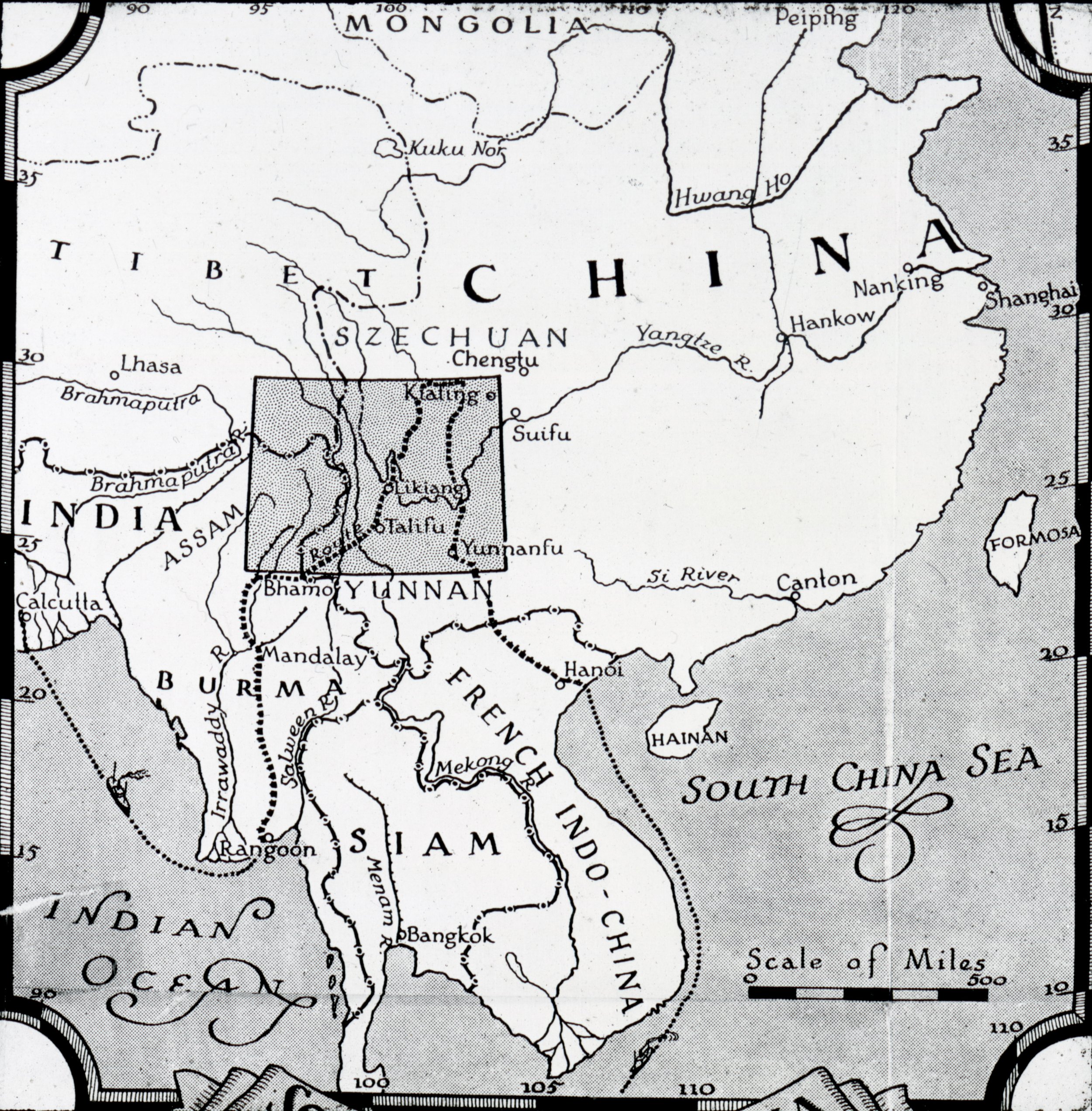
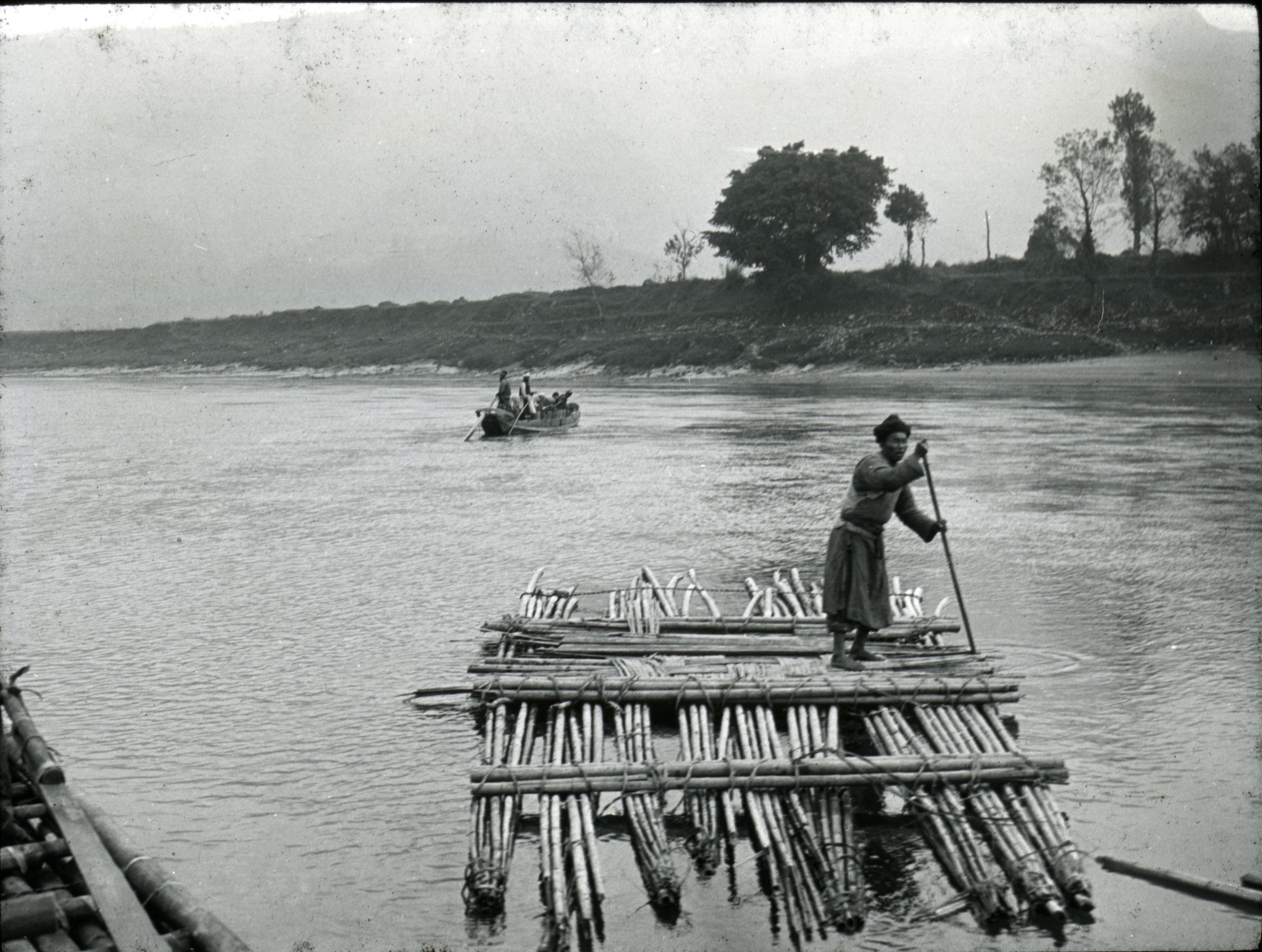
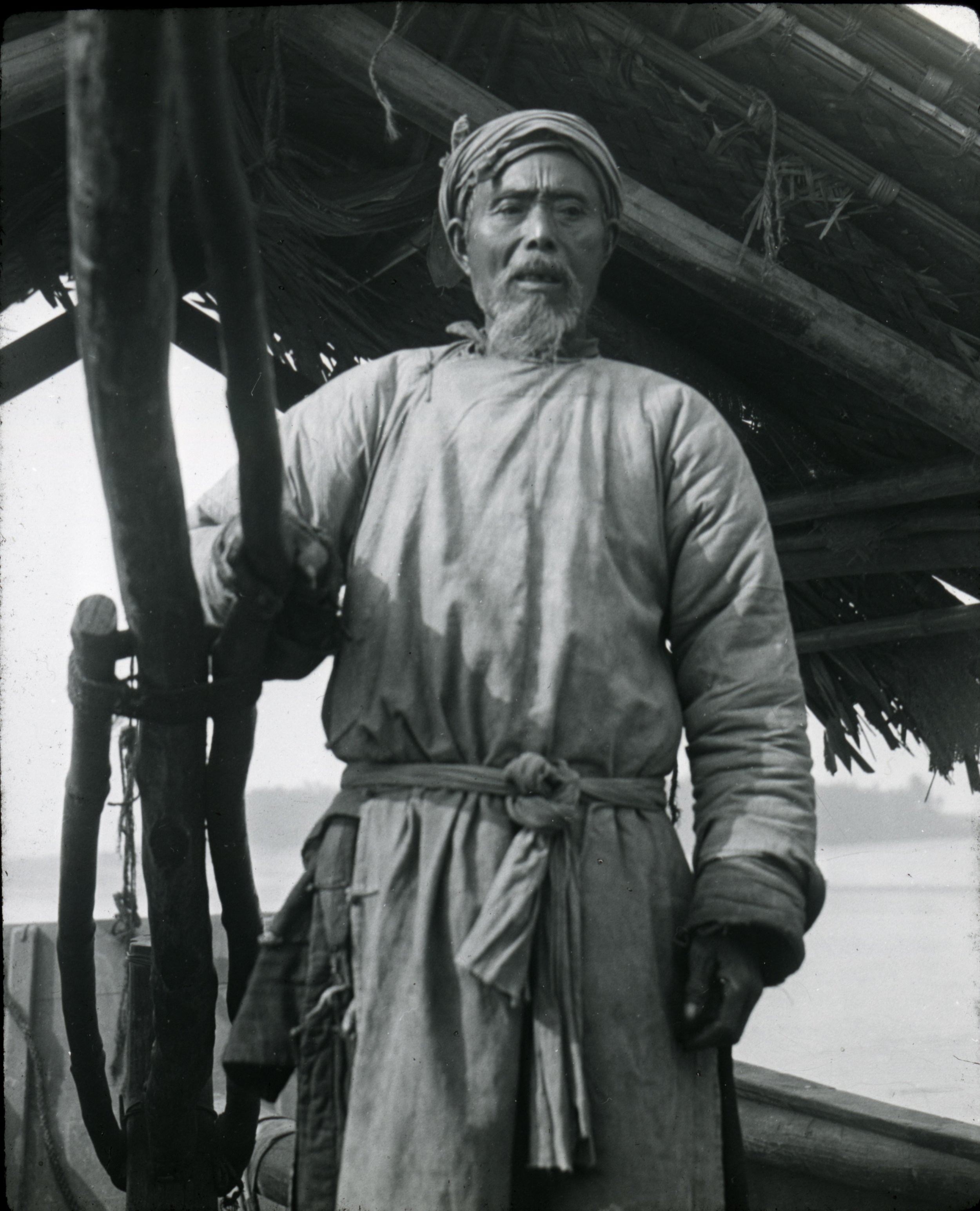
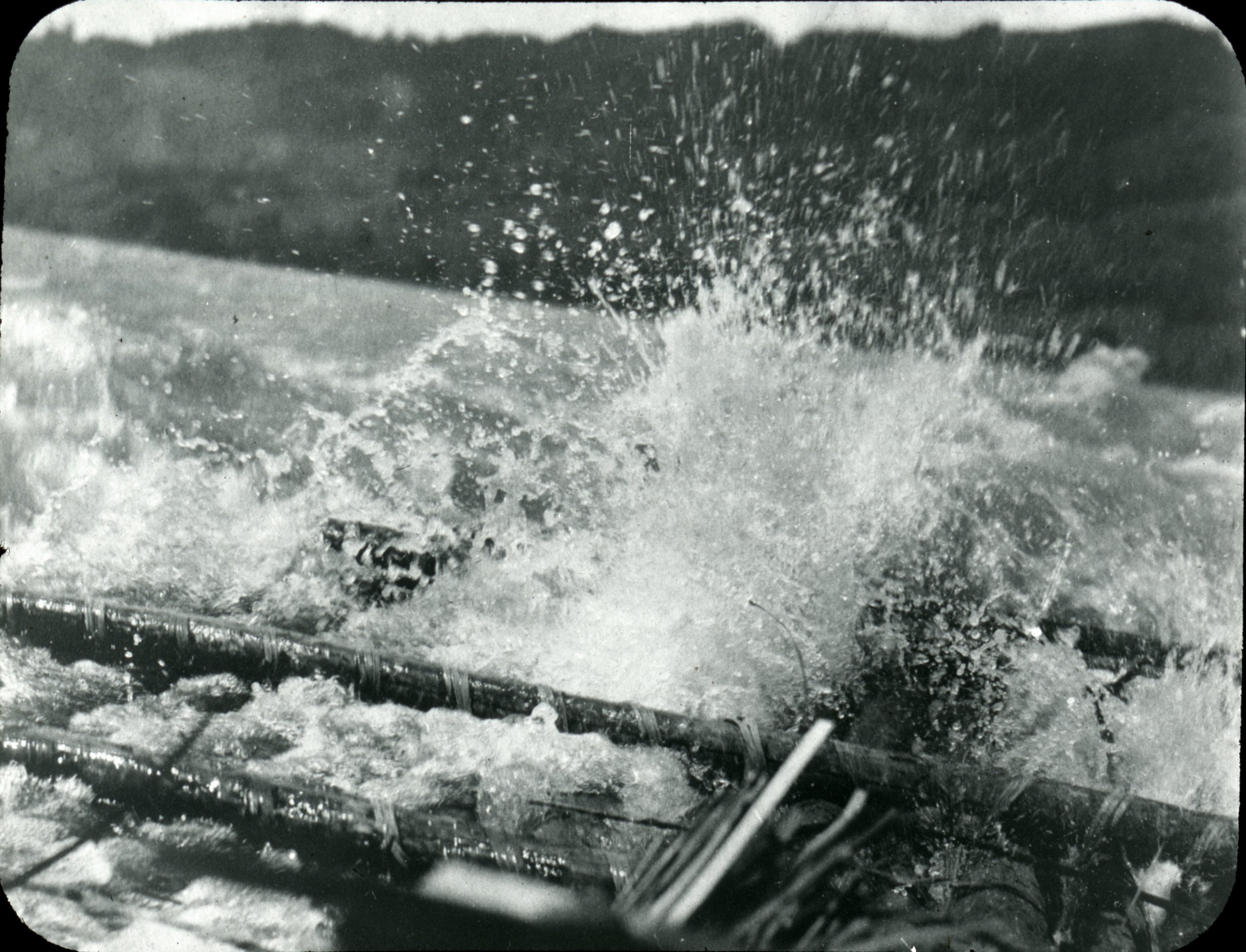
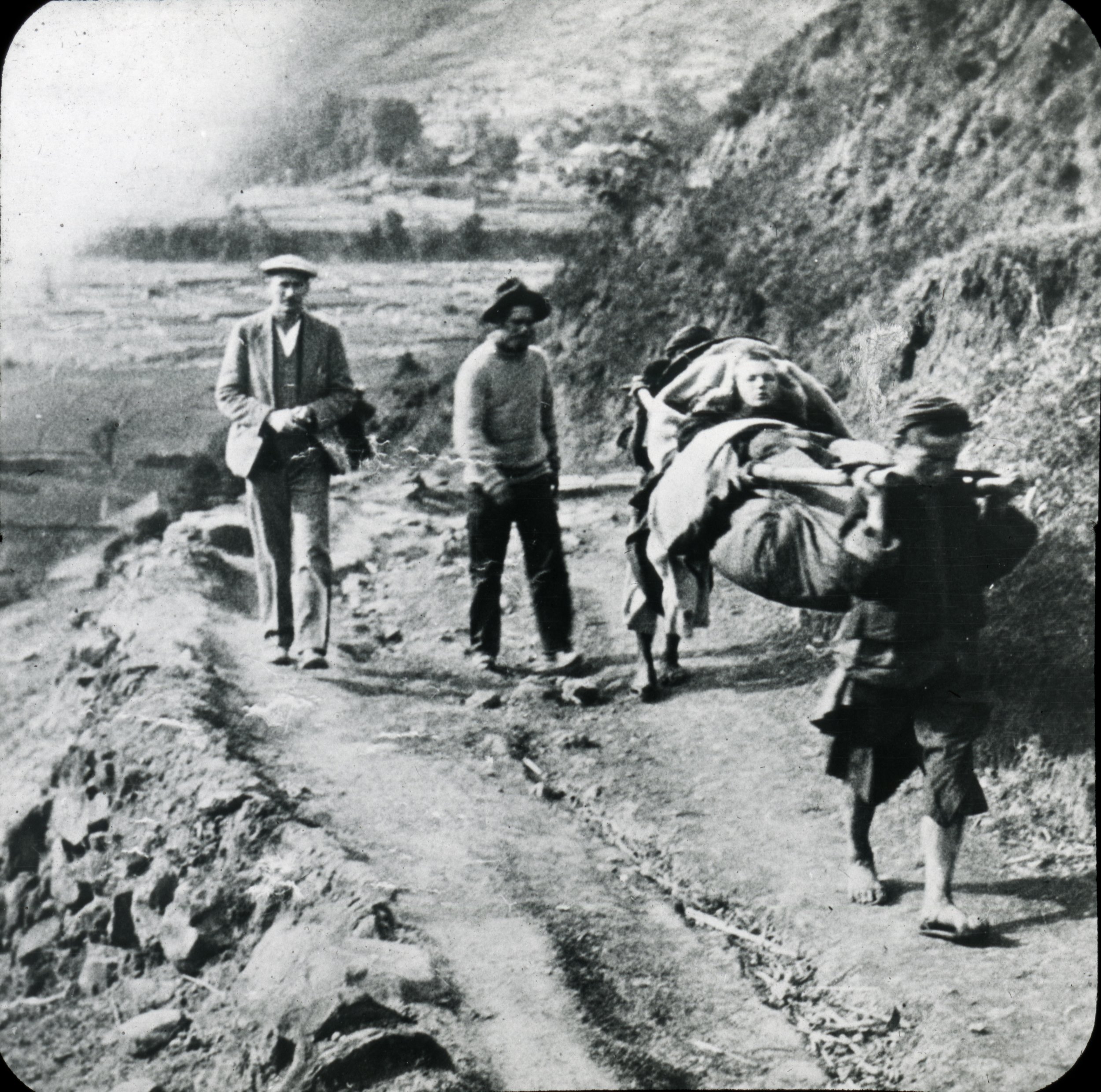
The Sikong-Szechuan region was still relatively unknown to the west and the purpose of the original expedition was to explore survey the region and gather samples of flora and fauna along with an attempt on Gongga Shan. The explorer’s spirit lived on in the Sikong Expedition. Thirty pages of appendices and one AAJ Article document their efforts. Below are two slides that not only shows the expedition doing some survey work but also shows how photographs and slides can degrade over time! If your interested in degrading photographs check out this previous library blog post.
Part of the reason for surveying the region and the mountain specifically was that at the time calculations of its height ranged anywhere from 16,500’ to 30,000’. The Sikong Expedition measured Gongga Shan’s height to be 24,891’ which is only 100’ off of the mountain’s current measured height of 24,790’.
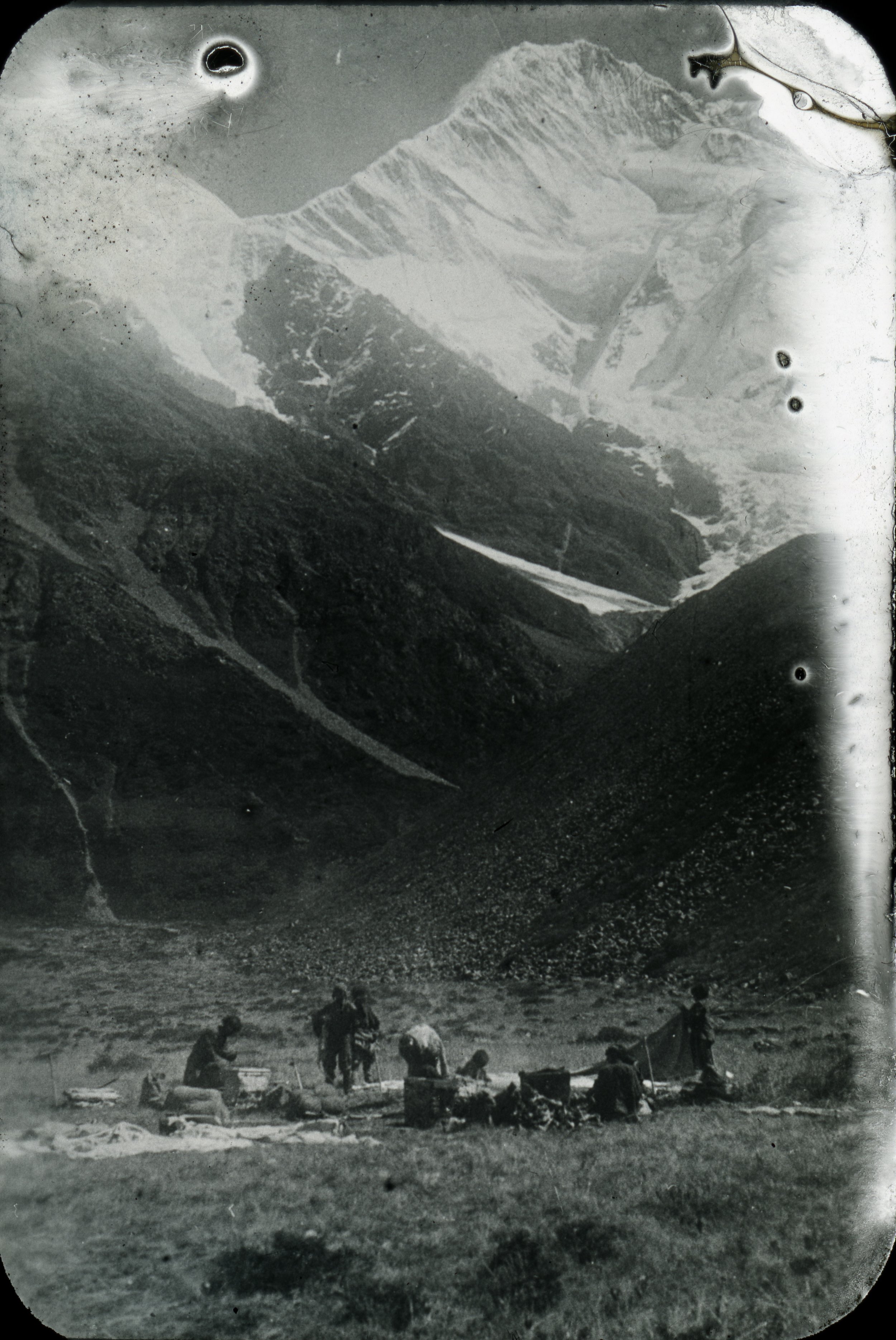
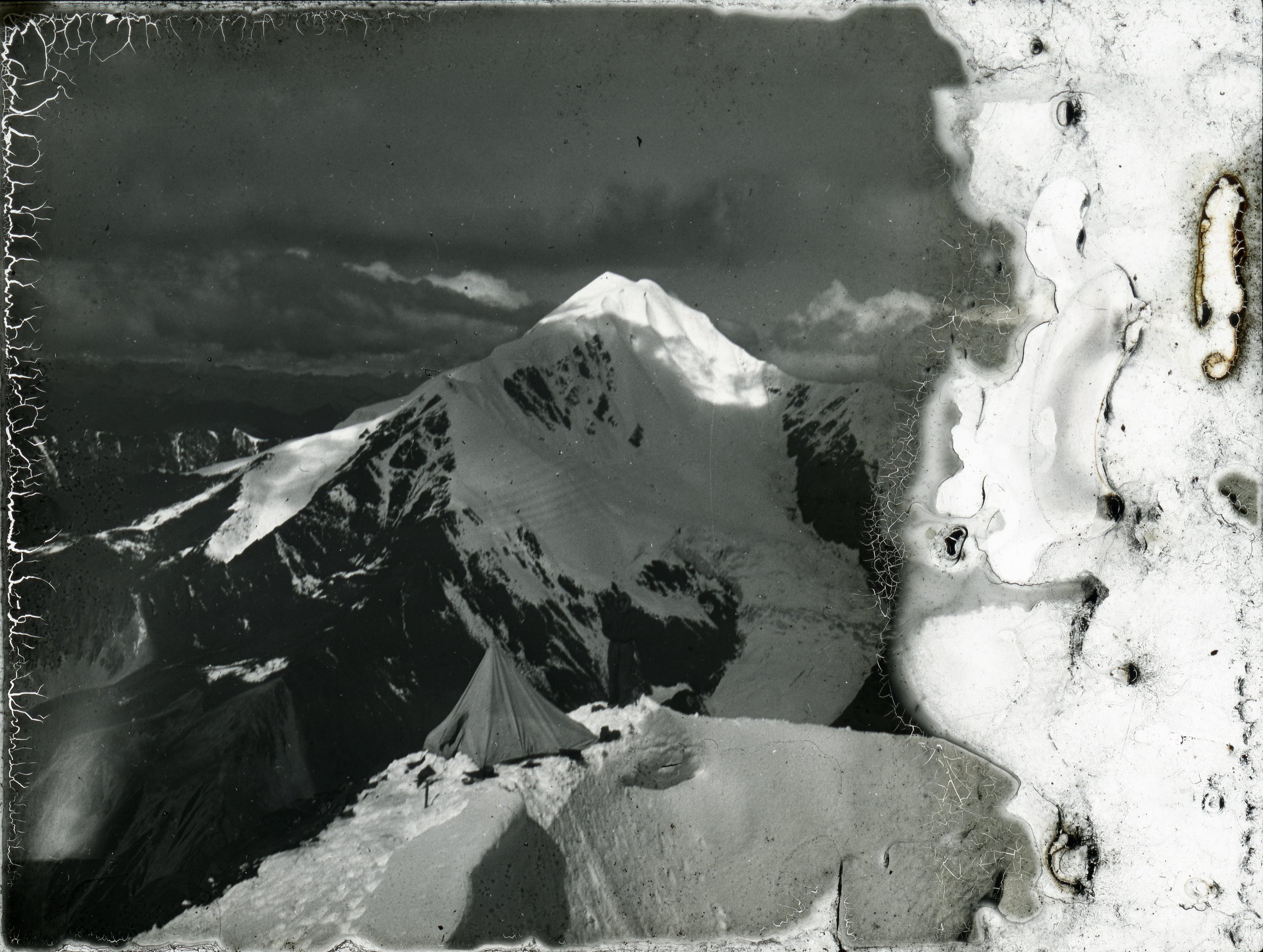
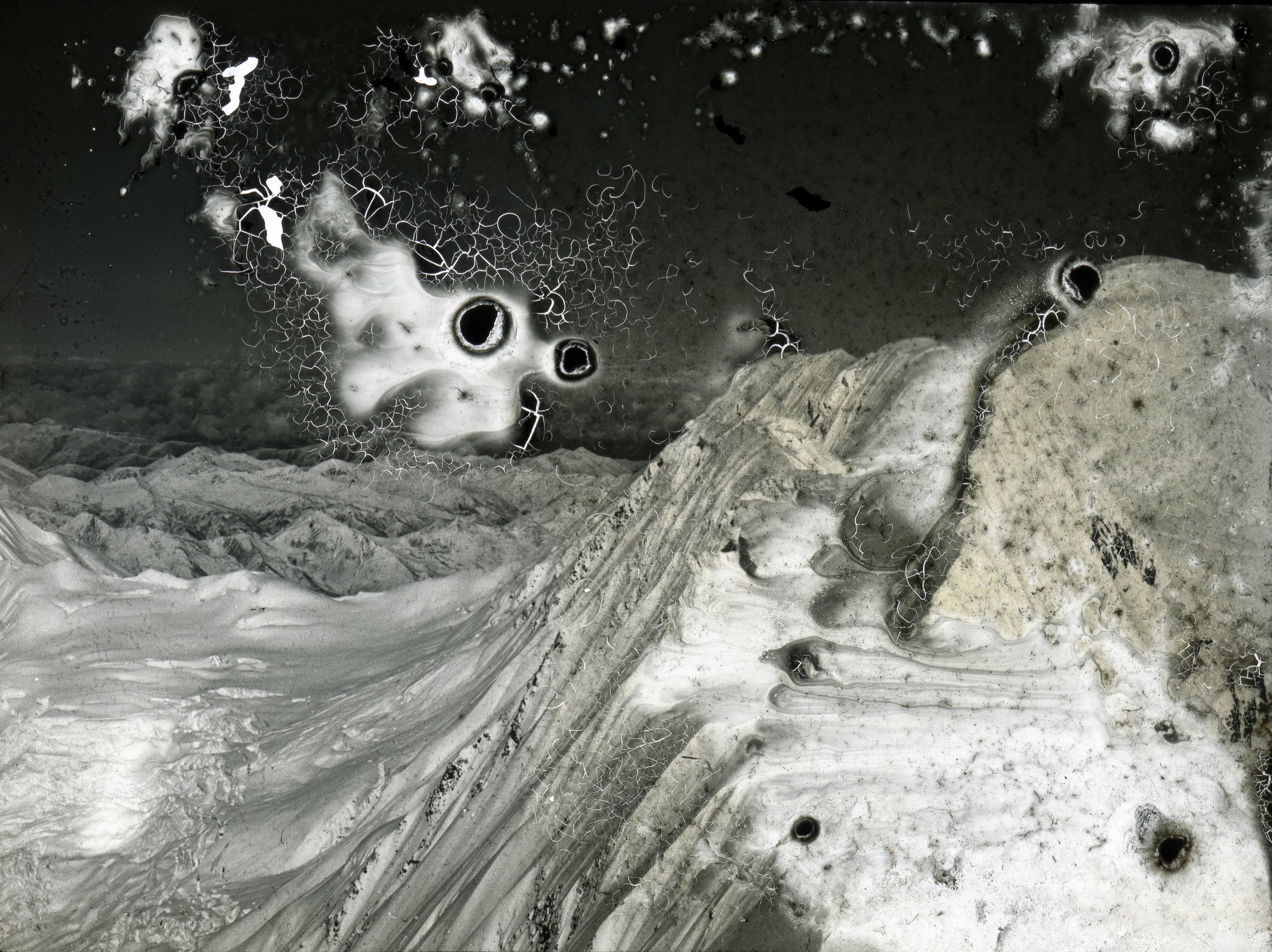
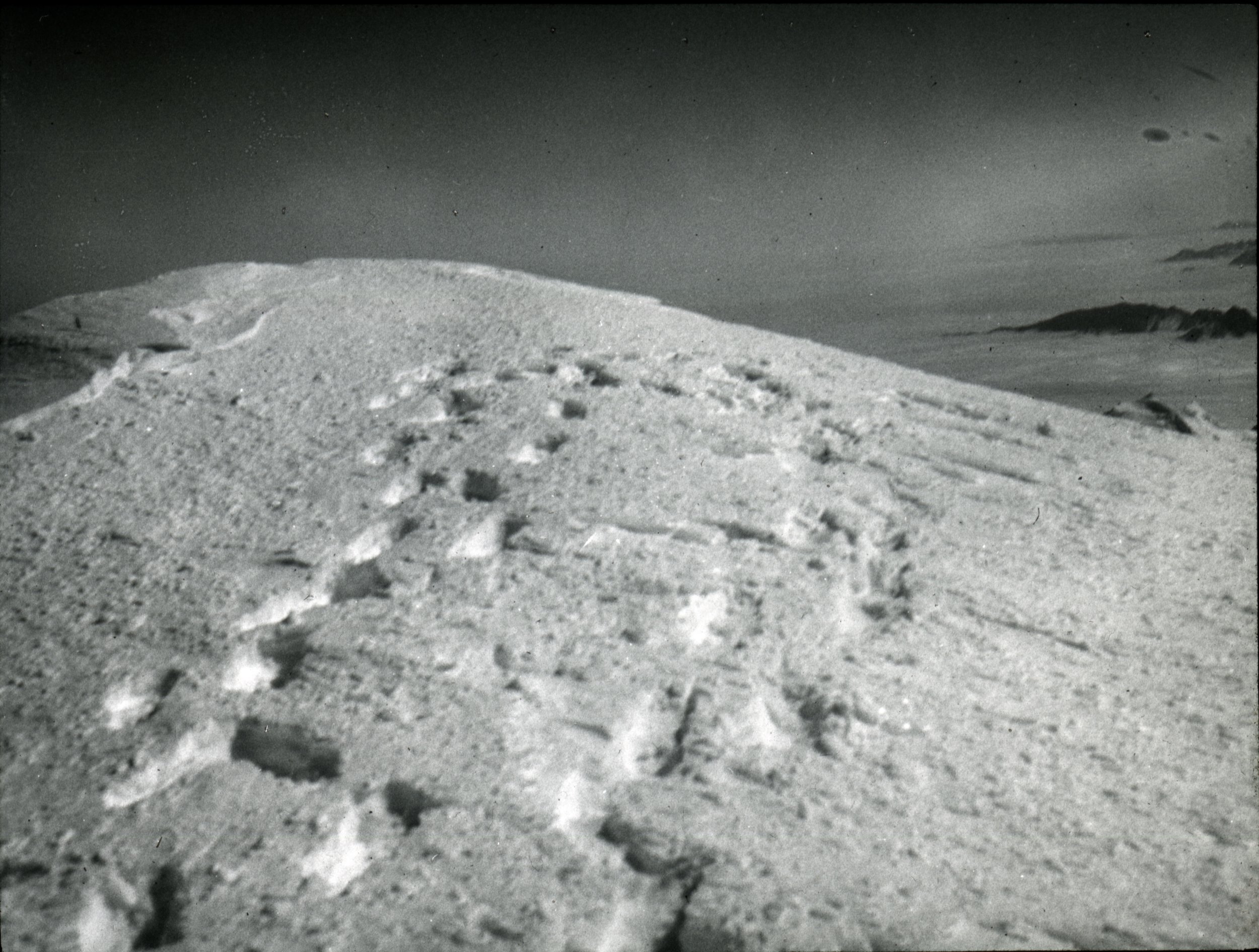

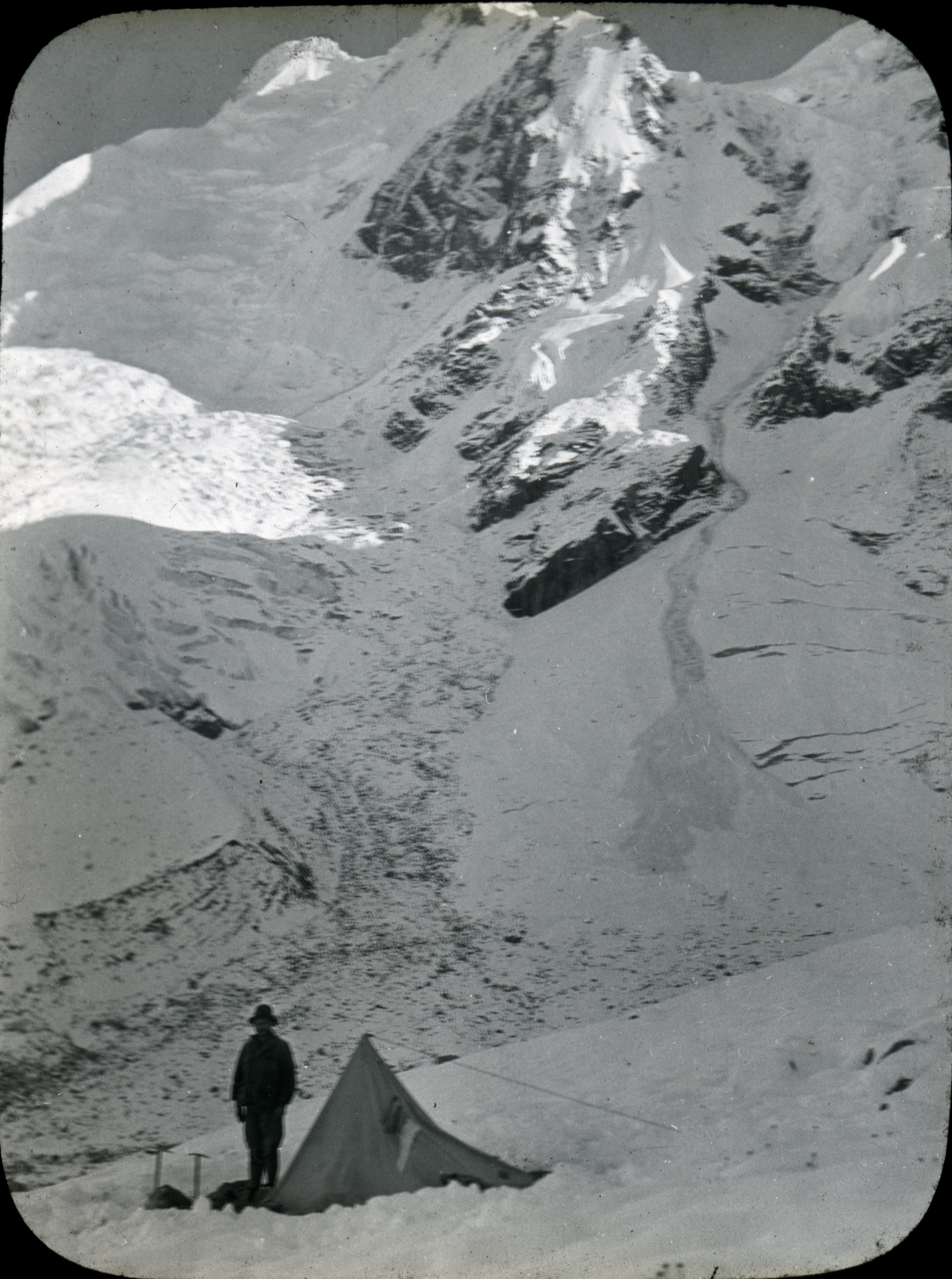
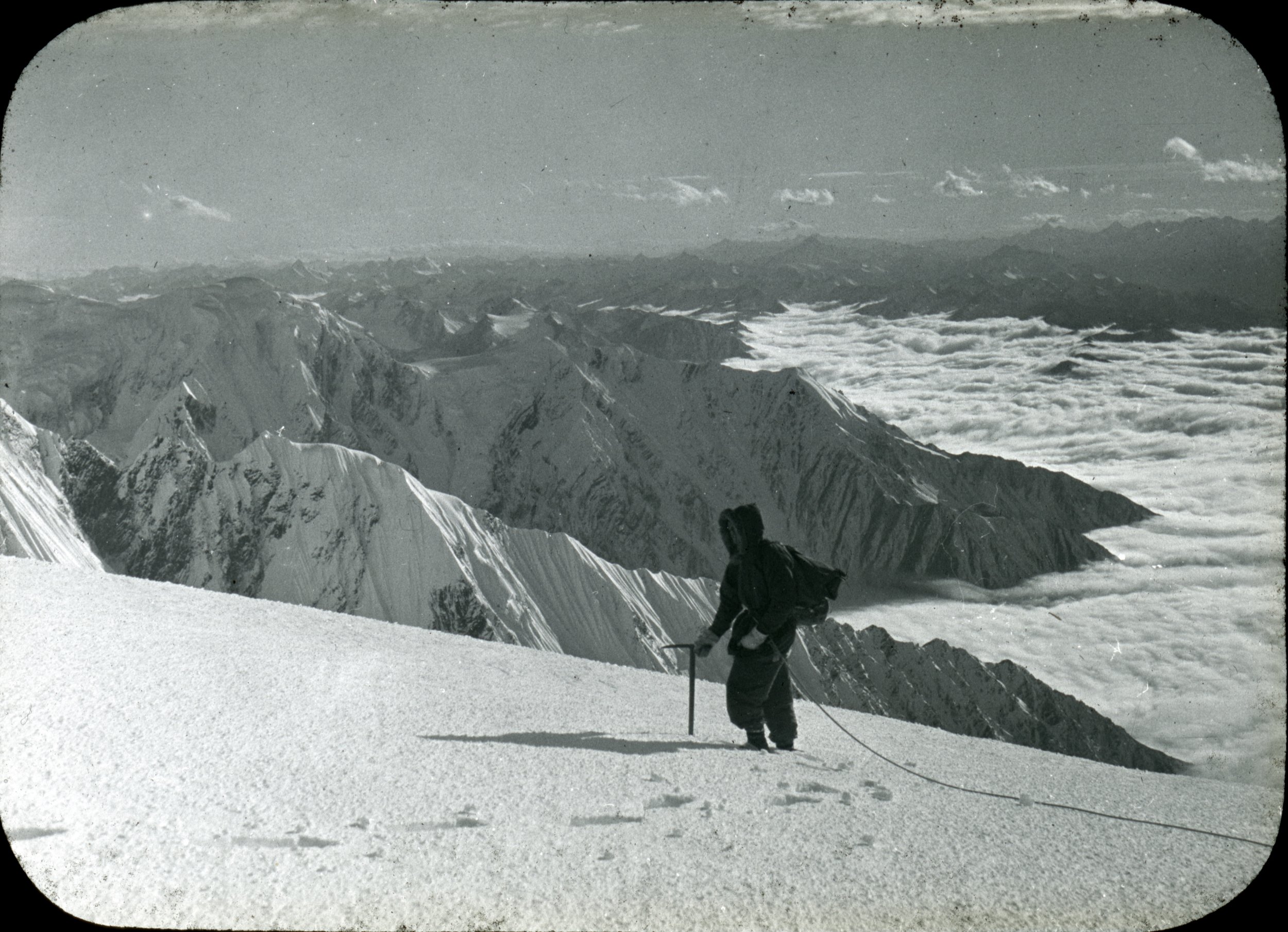
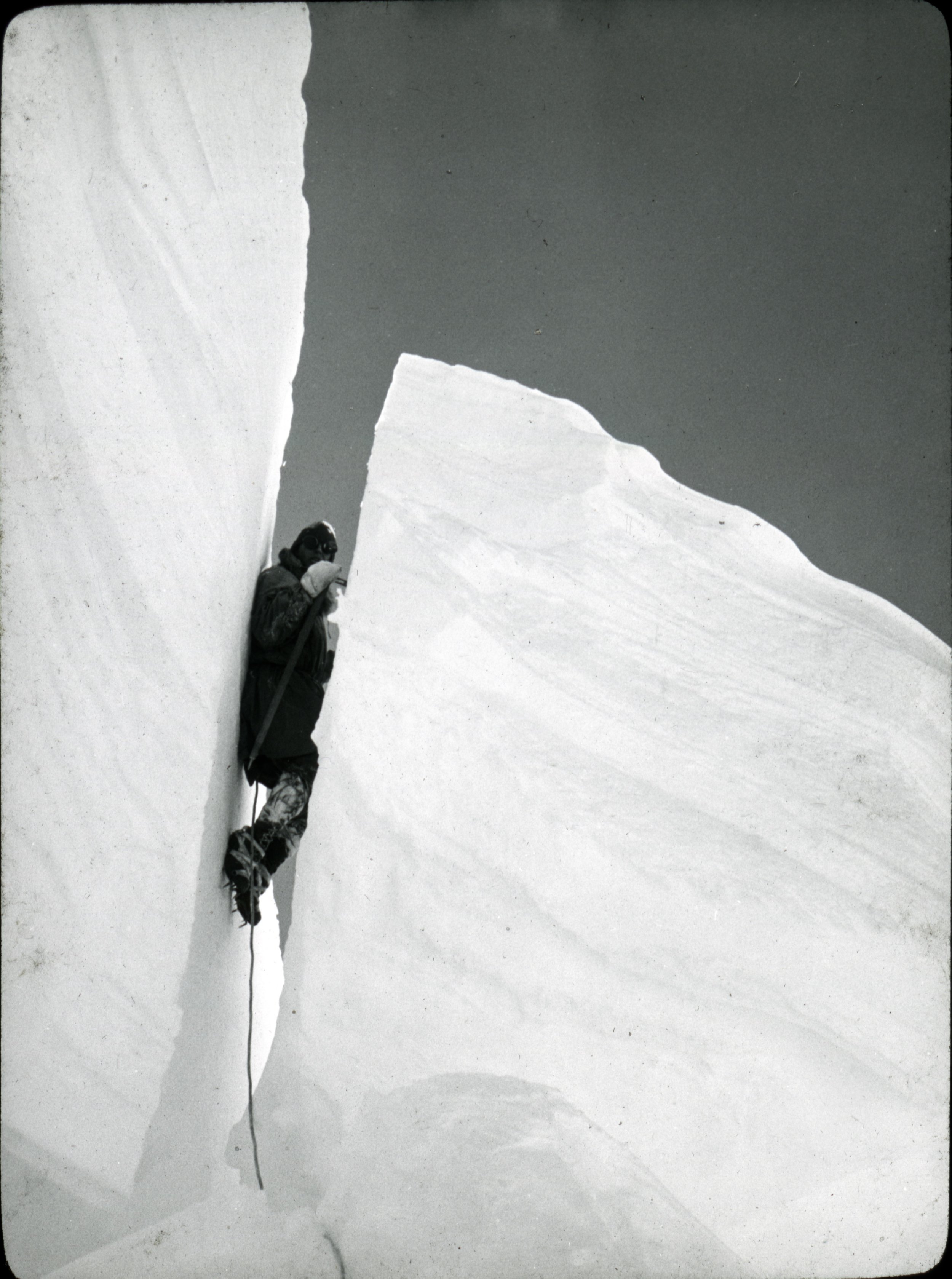
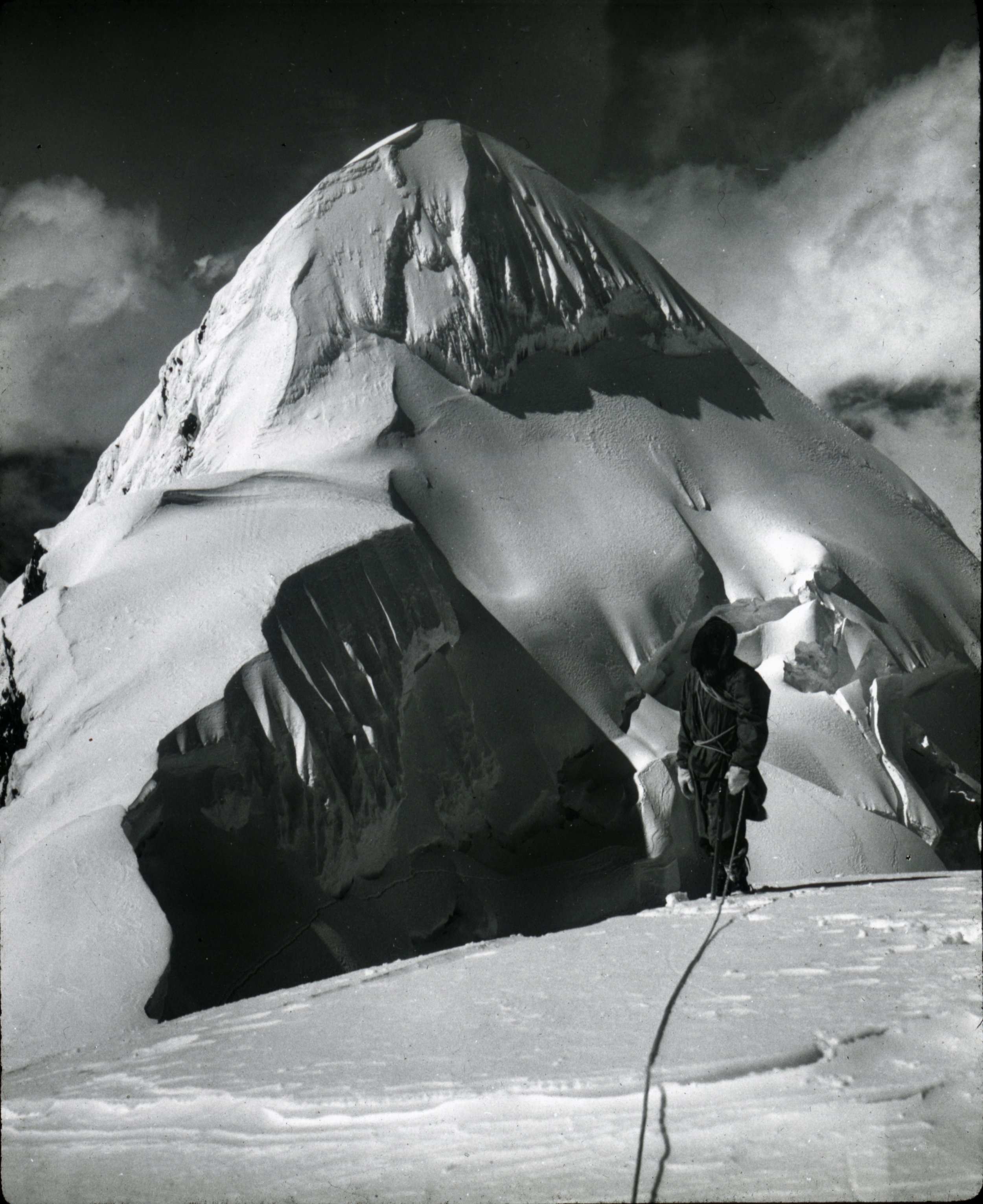
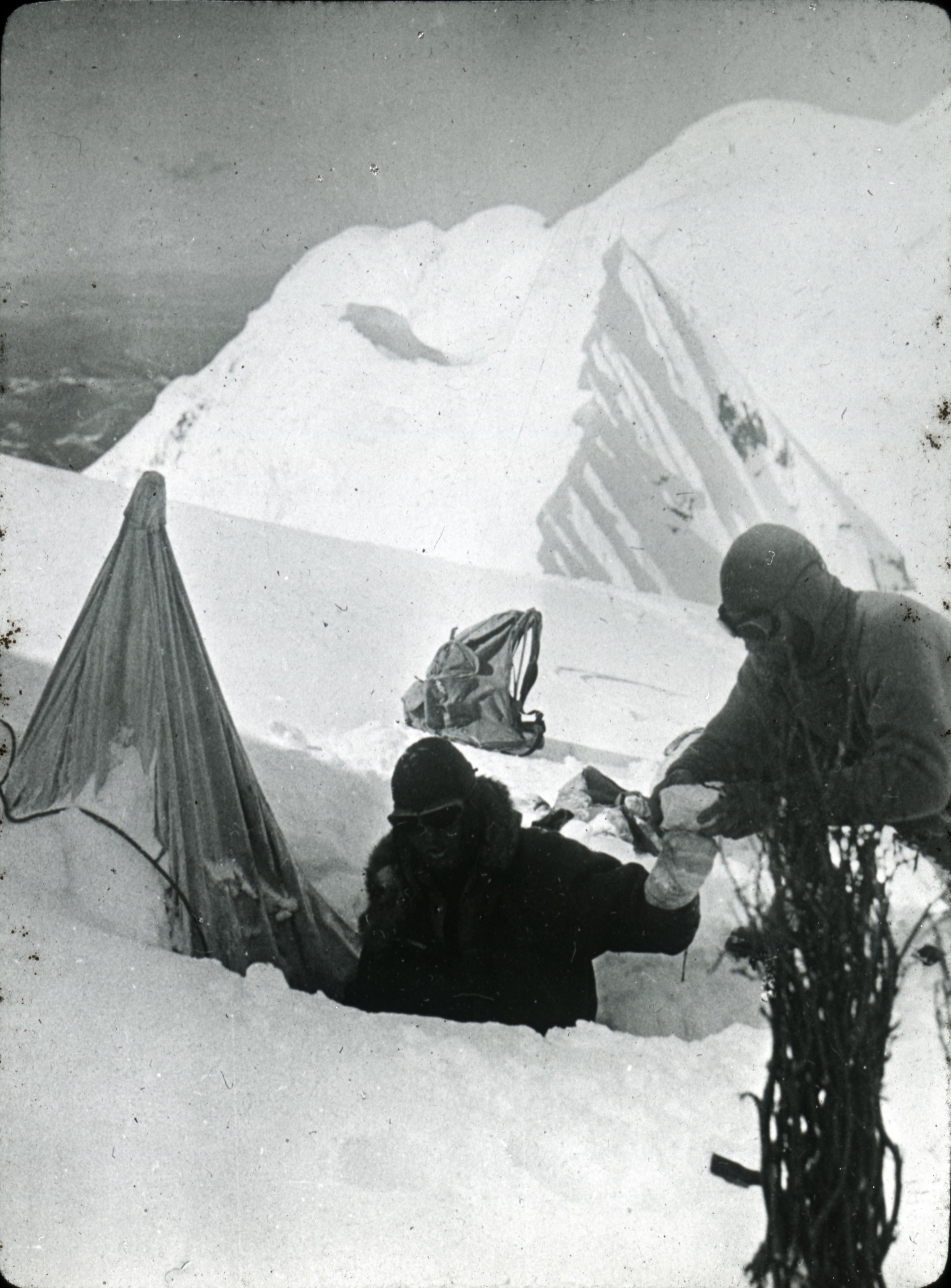
After weeks of acclimatization, moving supplies, and setting up camps, no high-altitude porters and with crevasse falls along the way; Moore and Burdsall attained the summit on October 28, 1932. Below are two of the dozens of photos taking while on the summit. Photographs were taken with the Chinese flag and the American flag. The American flag (48 stars) carried to the summit currently resides here at the American Alpine Club Library. Due to wind, an ice axe had to be pushed through the flags to keep them attached and flying for the summit photos.
What makes this expedition such an amazing feat is the twists and turns that take place in the story. The expedition in a sense never should have happened after the Lamb Expedition dissolved. Under normal circumstances it is likely that everyone would have headed home and planned to try again at a different time. Instead, four members remained in large part due to the Great Depression and being told that their money would fair them better in China and that there likely wouldn’t be work for them if they returned to the States. The style that the mountain was summited was more akin to modern expeditions than it was to the siege the mountain strategy that tended to be the norm for the day. Despite not receiving much plaudits at the time, Gongga Shan was the highest summit reached by Americans at the time but the expedition was able to help fill in one of the few remaining blanks on the map.
If you’re an American Alpine Club member you can checkout Men against the clouds by logging into the AAC Library Catalog.
And regardless of if you’re an AAC member, you can find AAJ articles written about the expedition by following the links below:
Terris Moore’s AAJ article about the climb
Arthur Emmon’s AAJ article about the survey work
A short article by Nick Clinch that concisely summarizes the expedition
$10,000 In Grants to Replace Aging Bolts
Photo: Craig Hoffman
The American Alpine Club and Access Fund are excited to announce the 2018 Anchor Replacement Fund grant awards with funding going towards nine worthy anchor replacement projects across the country:
Rocky Pass/Gallatin Canyon, MT - Southwest Montana Climbers Coalition
Red River Gorge, KY - Red River Gorge Fixed Gear Initiative
Slab Camp, KY - Morehead Tourism Commission
Shawangunk Mountains, NY - Mohonk Preserve
Obed, TN - East Tennessee Climbers’ Coalition
Smith Rock, OR - High Desert Climbers Alliance
Boulder Canyon, CO - Boulder Climbing Community
Spearfish Canyon, SD - Black Hills Climbers Coalition
Ten Sleep Cayon, WY - Bighorn Climbers Coalition
Golden, CO, October 15, 2018—The Access Fund and American Alpine Club are pleased to announce the 2018 Anchor Replacement Fund grant awards. Now in its third year, the grant program launched to address the growing concerns of anchor failure and the access issues that could result from these incidents. This year, we are thrilled to announce funding for nine worthy anchor replacement projects across the country.
Rocky Pass/Gallatin Canyon, MT - Southwest Montana Climbers Coalition
Southwest Montana Climbers Coalition (SMCC) was awarded funding to replace plated 3/8” wedge anchors with 1/2” stainless steel sleeve and glue-in anchors using sustainable replacement techniques (hole re-use) to preserve the character of the routes and the rock. SMCC will engage local volunteers to expand their ability to tackle aging bolts at the gneiss and limestone crags in the region.
Red River Gorge, KY - Red River Gorge Fixed Gear Initiative
Red River Gorge Fixed Gear Initiative (RRGFGI) was awarded funding to replace rusting and aging hardware on the steep sandstone cliffs throughout the region with 1/2” stainless glue-in anchors. RRGFGI is planning to replace over 300 bad bolts in 2019 and is striving to keep bad bolts in the region to fewer than 50 at any given time. RRGFGI works to replace aging bolts throughout the Red River Gorge region.
Slab Camp, KY - Morehead Tourism Commission
Morehead Tourism Commission was awarded funding to tackle rebolting efforts at Slab Camp, a half-mile section of cliff line featuring approximately 60 routes that were originally bolted in the early 1990s with hardware store bolts and anchors. The routes include a mix of both sport and traditional, with all sport routes requiring new bolts and anchors and all traditional routes in need of new anchors. All bolts will be replaced with 1/2” stainless steel glue-ins. The Morehead Tourism Commission has enlisted the help of local climbers and rebolting experts from the Red River Gorge Fixed Gear Initiative to assist them with the effort through training and consultation on rebolting practices.
Shawangunk Mountains, NY - Mohonk Preserve
The Mohonk Preserve was awarded funding to replace eight tree and piton anchors in the Gunks with 1/2” stainless steel sleeve anchors. New bolted anchors placed below the cliff top will reduce climber impacts to the top of the cliff on routes like Gelsa in the Near Trapps. They will also replace aging piton anchors on popular routes like Son of Easy O in the Trapps.
Obed, TN - East Tennessee Climbers’ Coalition
East Tennessee Climbers’ Coalition (ETCC) was awarded funding to support their goal of rebolting the entire Obed in 5 years. ETCC is tackling replacement of approximately 4,000 aging bolts, which are all approaching 30 years of age, throughout the popular northeast Tennessee climbing area. ETCC has already undertaken this massive challenge, enlisting the help of volunteers and replacing 730 bolts with 1/2” stainless steel anchors this year alone.
Smith Rock, OR - High Desert Climbers Alliance
High Desert Climbers Alliance (HDCA) was awarded funding to replace aging hardware at Smith Rock State Park in central Oregon. HDCA will engage local volunteer bolt replacers to replace aging plated hardware that has been in the rock for over 40 years with long last 1/2” stainless steel hardware.
Boulder Canyon, CO - Boulder Climbing Community
Boulder Climbing Community (BCC) was awarded funding for rebolting efforts in Boulder Canyon and other Front Range climbing areas. The BCC will purchase 100 1/2” stainless steel sleeve bolts and hangers, as well as 40 anchor set-ups. Their annual rebolting events will take place at North Table Mountain, Boulder Canyon, and Clear Creek Canyon.
Spearfish Canyon, SD - Black Hills Climbers Coalition
The Black Hills Climbers Coalition (BHCC) was awarded funding to replace aging anchors at popular crags throughout Spearfish Canyon. The BHCC is tackling replacement of 300+ routes, which were equipped 25 years ago with plated and mixed metals. The BHCC will replace these aging anchors using high quality stainless steel glue-ins to meet the highest standards for fixed anchors at limestone sport climbing areas.
Ten Sleep Cayon, WY - Bighorn Climbers Coalition
The Bighorn Climbers Coalition (BCC) was awarded funding to address aging anchors in Ten Sleep Canyon. The BCC will focus on replacing wedge bolts, cold shuts, and worn lower-off anchors throughout the canyon. These will be replaced with 1/2” stainless steel bolts and high quality ring anchors and lower-off hooks specifically manufactured for climbing.
Public Land Recreational Opportunities Improvement Act Introduced
Introduced October 2018, The Public Land Recreational Opportunities Improvement Act (PLROIA) is a big step in attempting to fix the recreation permitting system. Senator Martin Heinrich (D-NM) and Senator Shelley Moore Capito (R-WV)'s bipartisan legislation improves the permitting systems to help more Americans gain access to the outdoors through facilitated recreation experiences. This legislation was developed and advocated for by the Coalition for Outdoor Access, of which the AAC is a member organization.
We’re all for PLORIA, and hope the bill will move by the end of the year. Learn more by reading the full press release.
Climbing & Splitboarding Adventure Grant Updates
We’re excited to announce the following climbing and adventure grants are now open for applications, meaning we’re awarding over $40,000 to climbers and backcountry snowboarders in the next few months!
CUTTING EDGE GRANT
The Cutting Edge Grant seeks to fund advanced and capable climbers planning expeditions to remote areas featuring unexplored mountain ranges, unclimbed peaks, difficult new routes, first free ascents, or similar world-class pursuits. Awards will typically fall in the $5,000 to $15,000 range, however award amounts will vary based on project and budget. Open through November 30th—learn more & apply.JONES ADVENTURE GRANTS
The Jones Backcountry Adventure Grant & the Jones Live Like Liz Award support splitboarding expeditions with strong exploratory and adventure components. The project objective may focus on a single descent/summit or a tour/traverse of a region. Each grant recipient will receive a $1,500 cash award plus a Jones splitboard, skins and backcountry touring backpack.The Jones Live Like Liz Award is open only to our female riders, while the Jones Backcountry Adventure Grant is open to all AAC members. Open through November 30th—learn more & apply.
COPP-DASH INSPIRE AWARD
EXTENDED DEADLINE! Established in the memory of Jonny Copp and Micah Dash, the Copp-Dash Inspire Award provides $20,000 in climbing grants to assist small teams tackling difficult climbs in the great mountains of the world and multimedia instruction to help them to share their ascents through a blend of storytelling elements. Open through November 30th—learn more & apply.Not a fit for these grants? The Live Your Dream Grant and others will open for applications this winter and spring, so stay tuned.
The Andrew J. Gilmour Collection
by Allison Albright
At the American Alpine Club Library, we’re very fortunate to have quite a few collections of photographs of climbing and mountaineering from the early 20th century. One of these, a collection of roughly 3000 photographic negatives dating from 1900 to about 1930, has been digitized in its entirety and made available to everyone.
It’s a great feeling to complete a project.
We’re excited to be able to increase access to this collection through digitization, which also reduces wear and tear on the original negatives and adds an additional layer of preservation.
This collection of photos belonged to Andrew J. Gilmour, a dermatologist living and working in New York who was an avid climber and active member of the American Alpine Club during the 1920s and 1930s. He did a number of ascents in the Alps, the Canadian Rockies, the Cascades and the Western U.S., as well as Wales and the Lake District in the UK. His photos show us a lot about climbing at that time, the techniques, equipment, conditions and the people and places involved. It also provides us with a glimpse of what the world was like about 100 years ago.
We’ve gathered some of our favorite images from this collection in the slideshows below. Enjoy!
To see more of these images, check out our Andrew J. Gilmour album on Flickr.
Climbing and Mountaineering
Photos of climbing parties and mountaineering expeditions from about 1910 to the mid 1930’s.
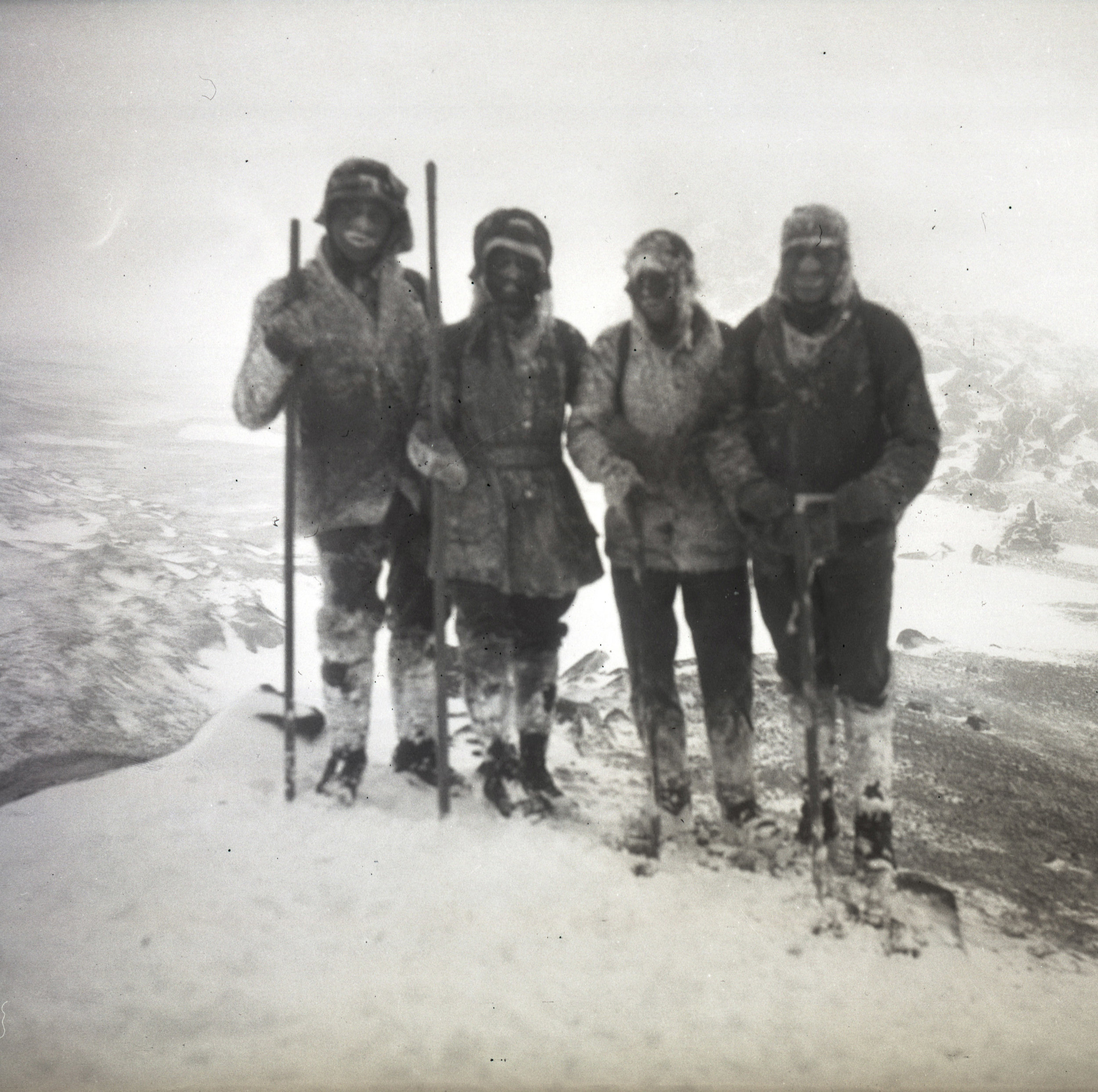
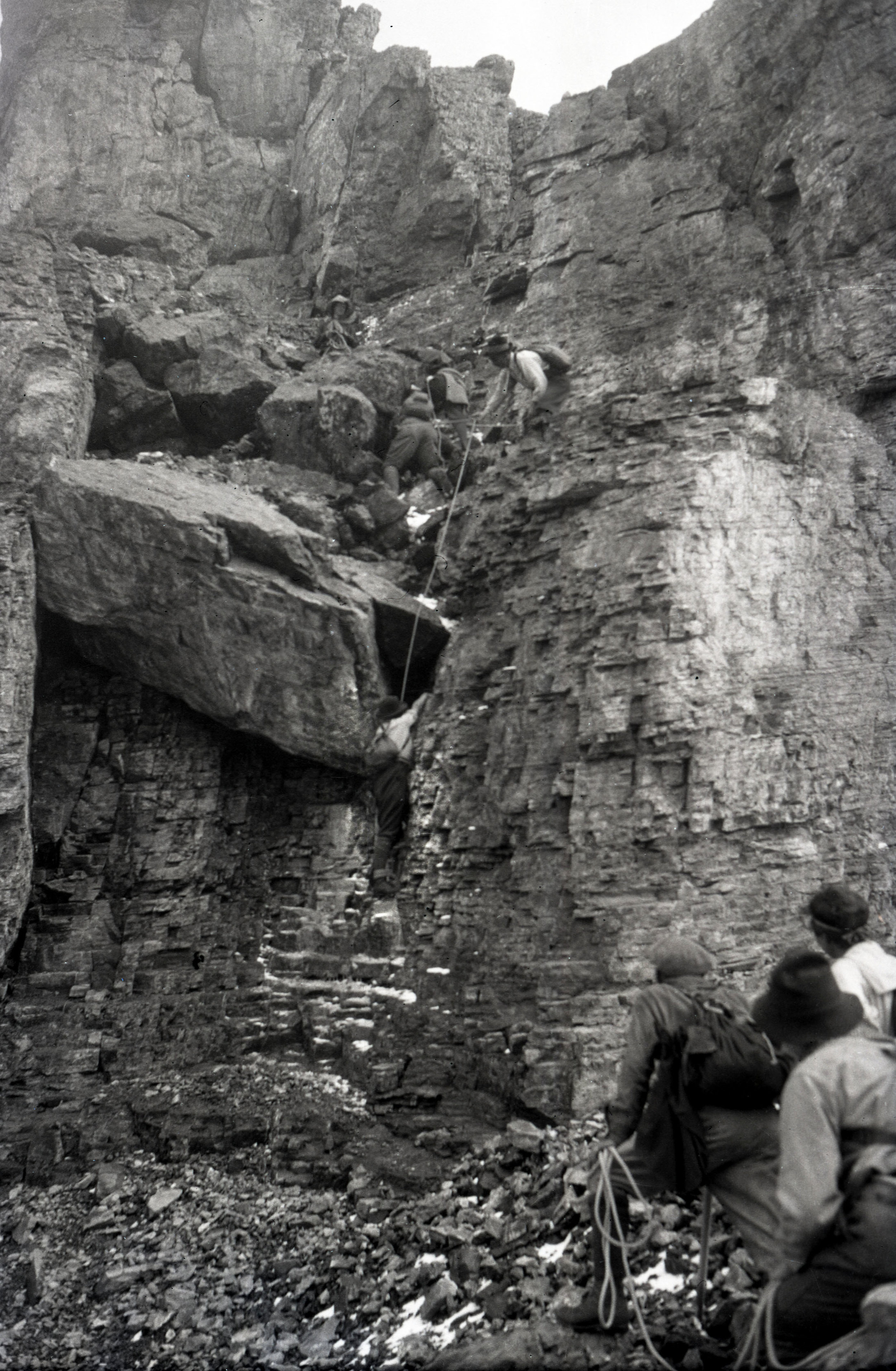

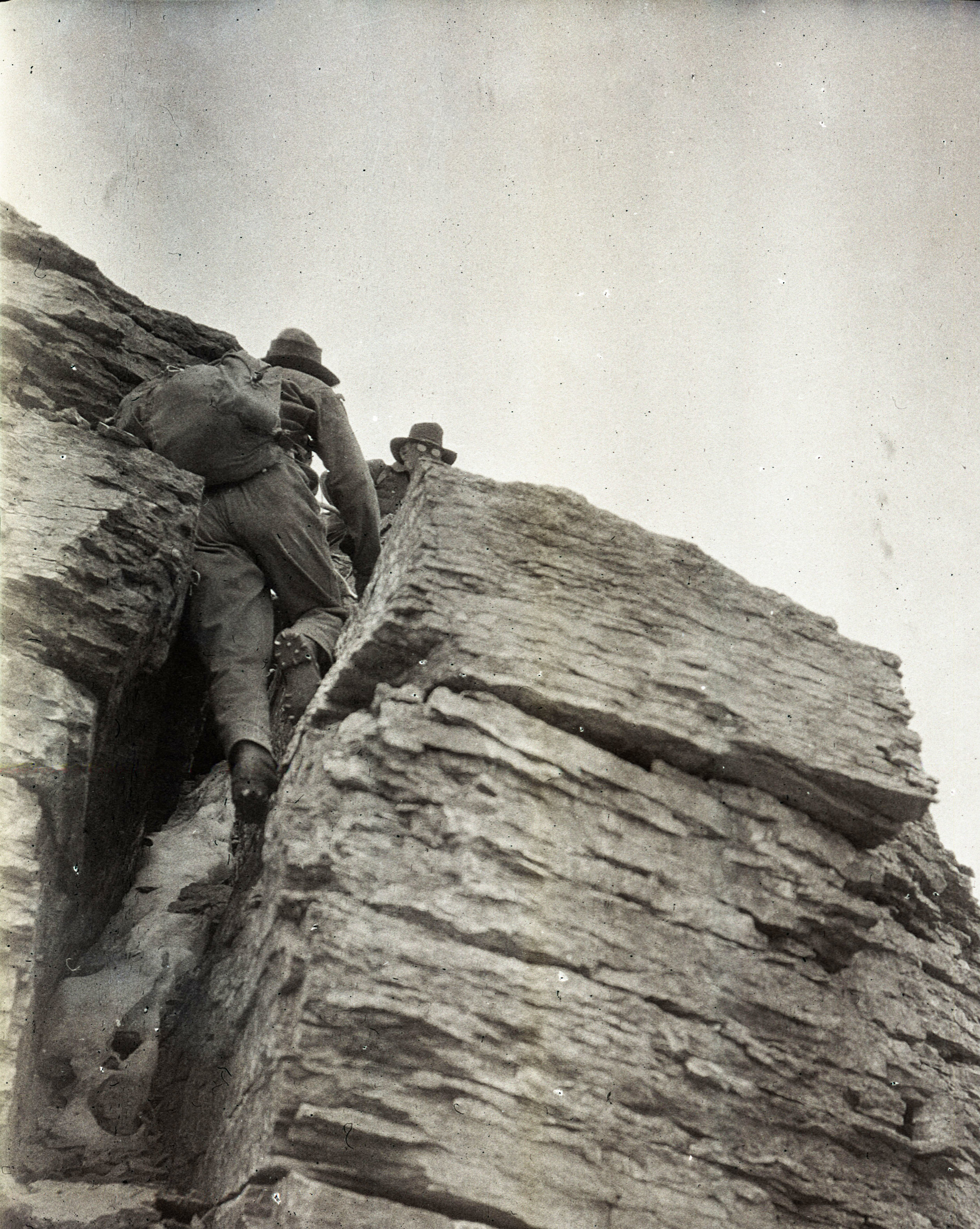
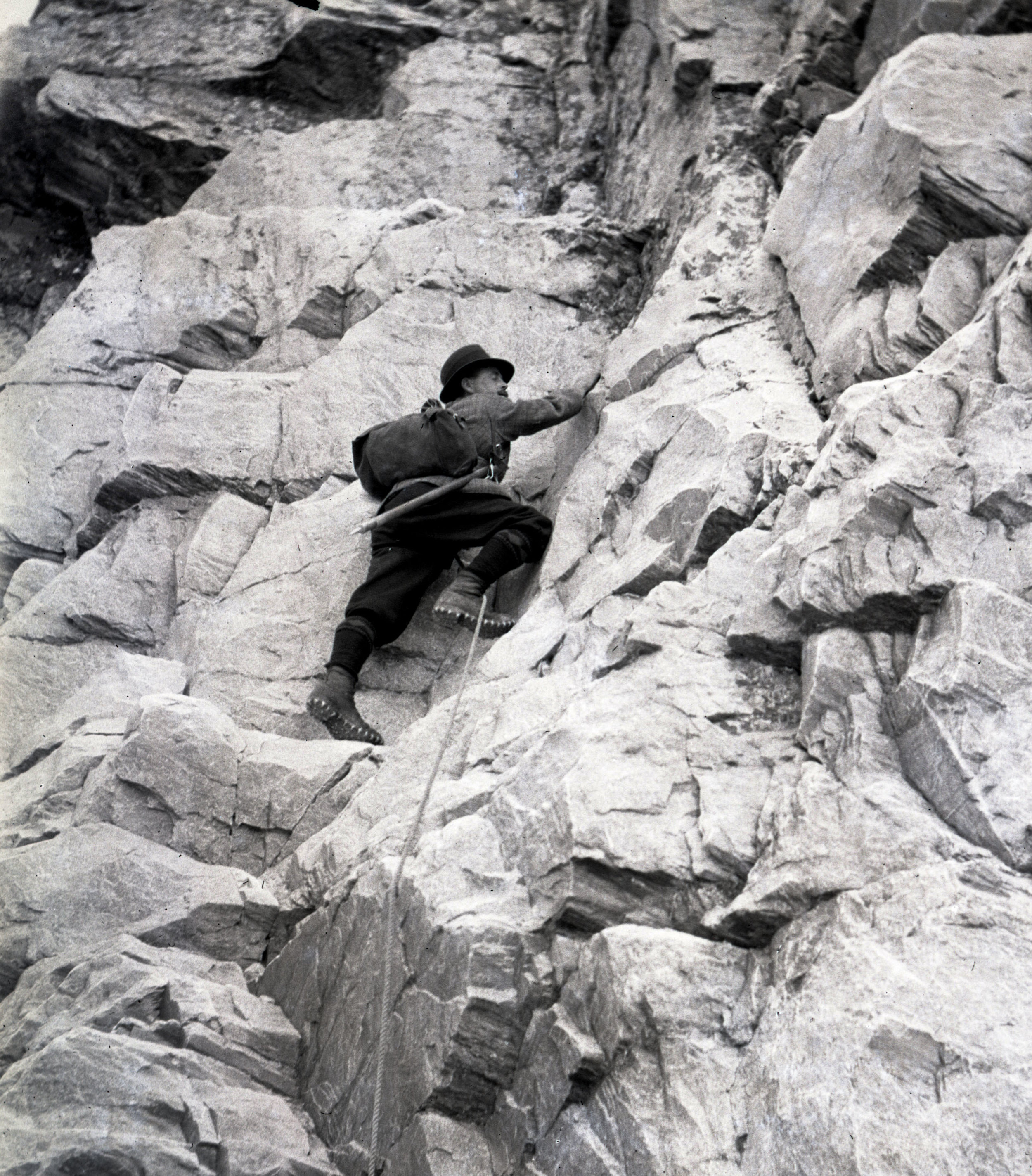
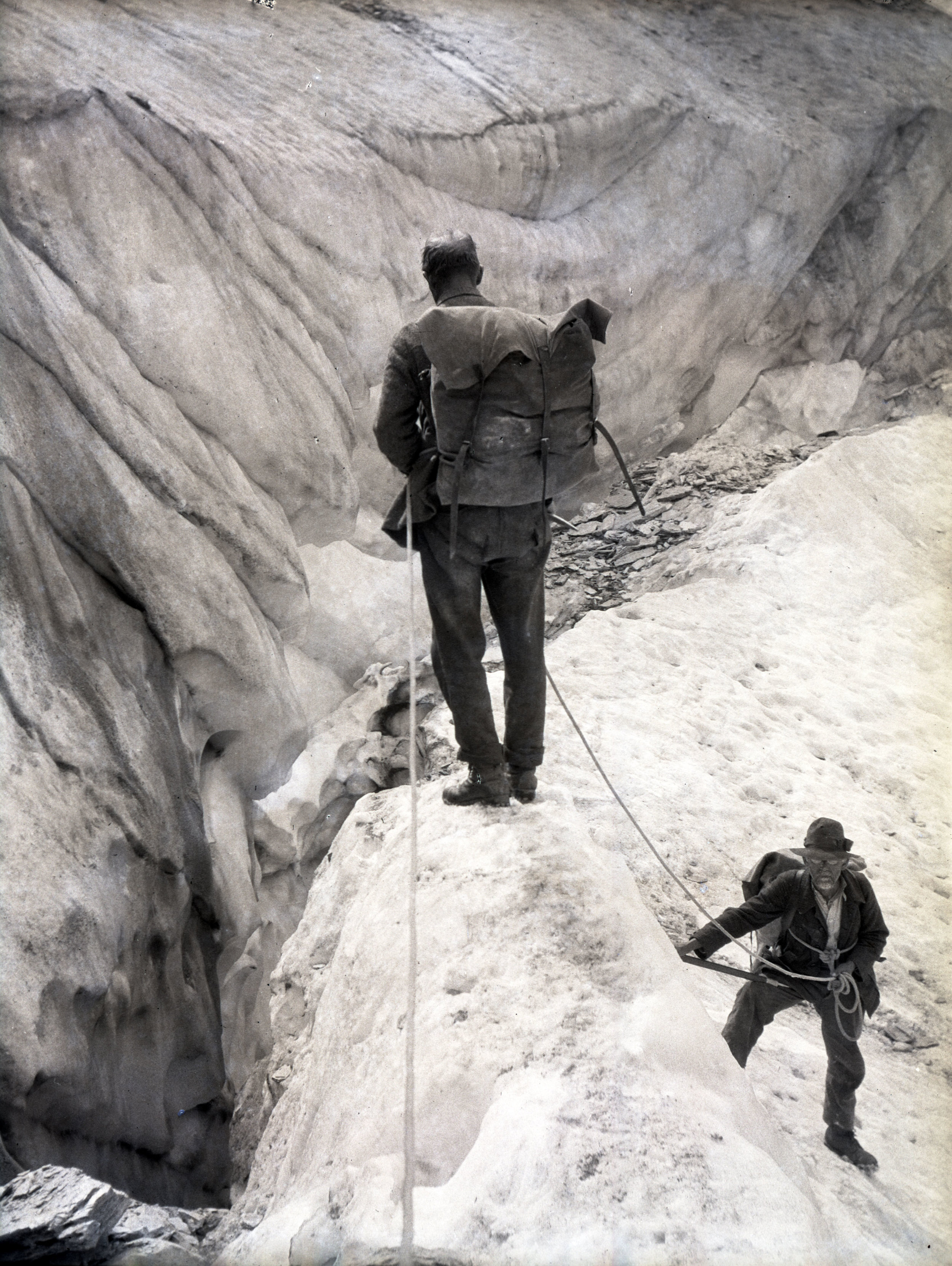
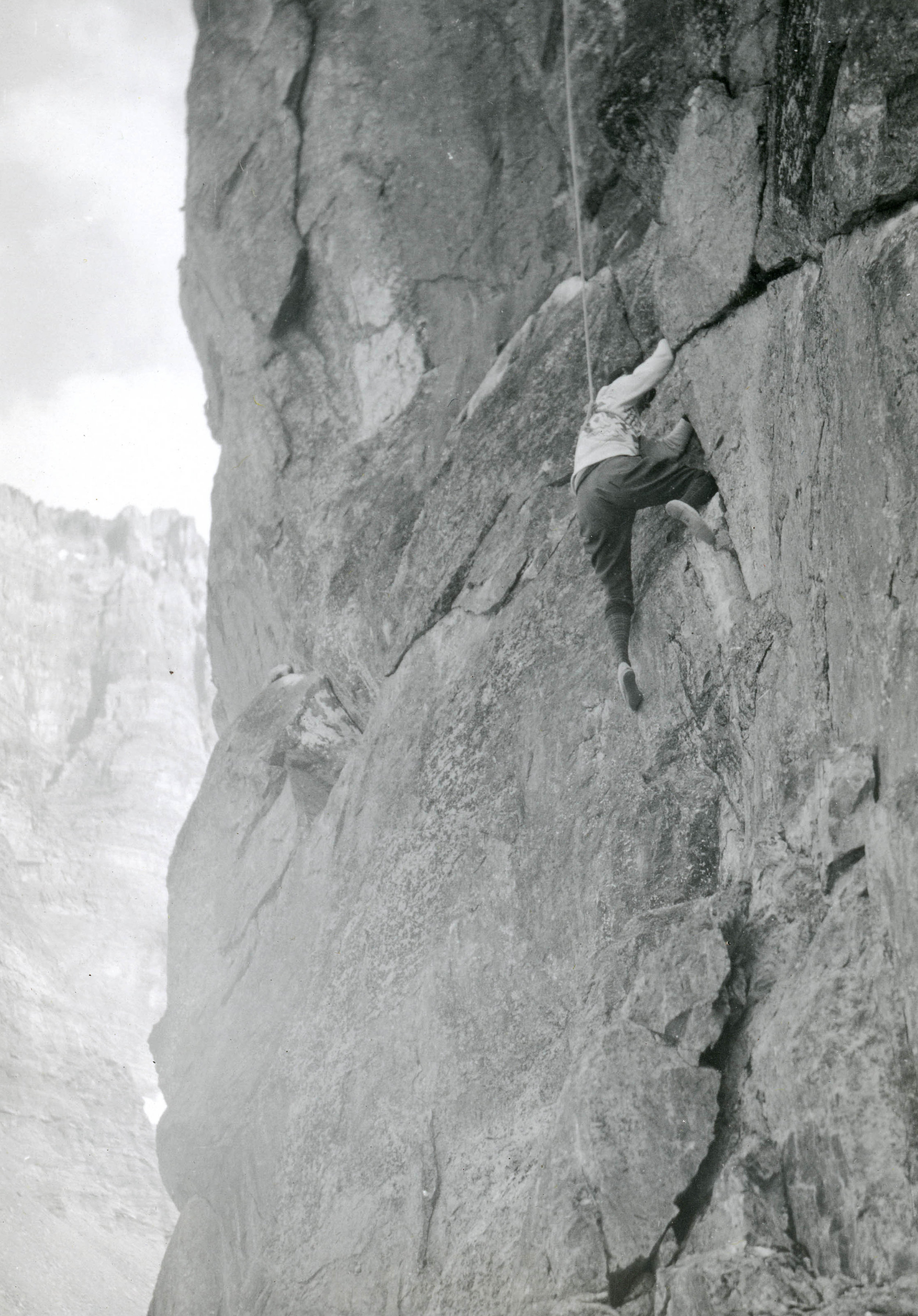
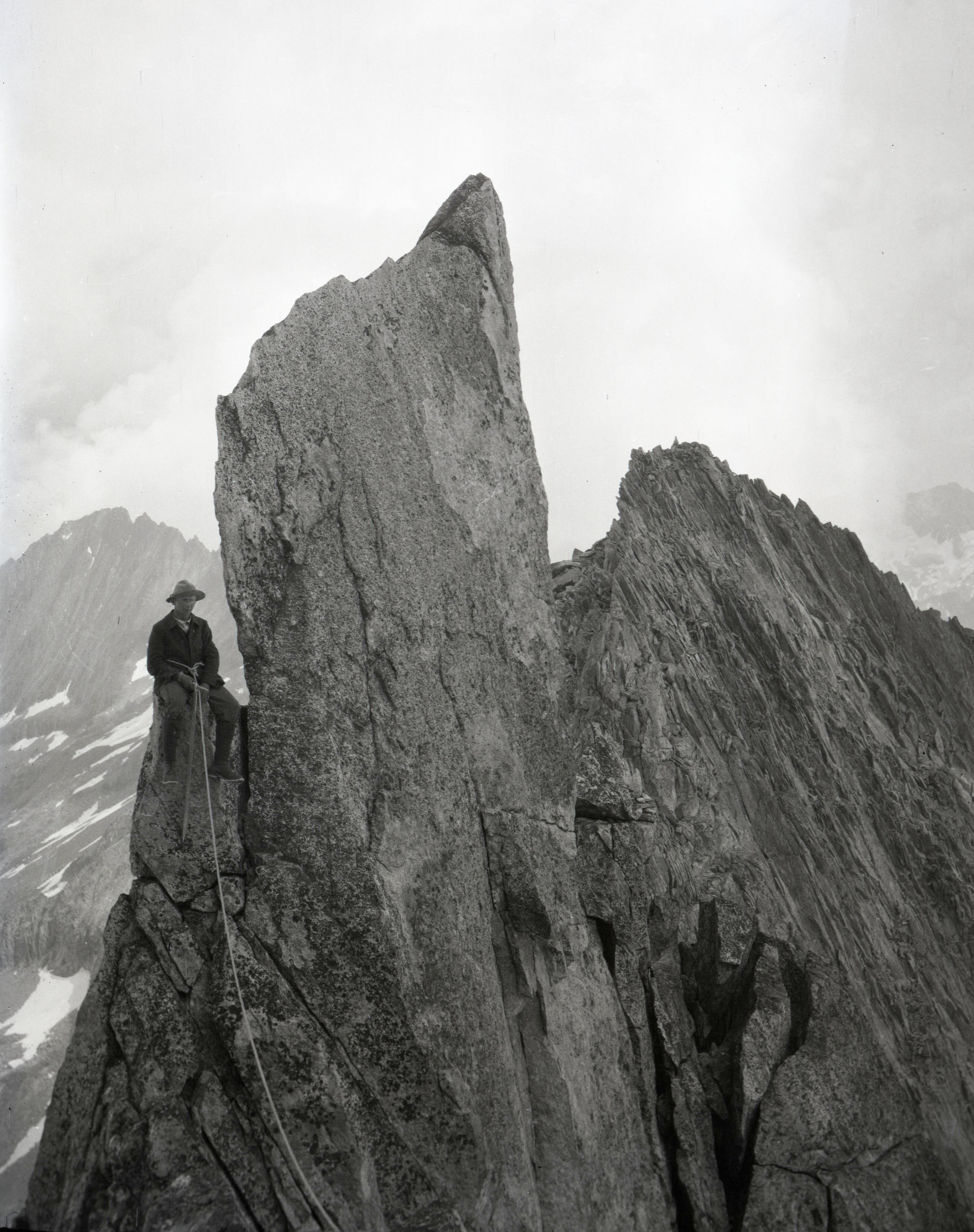

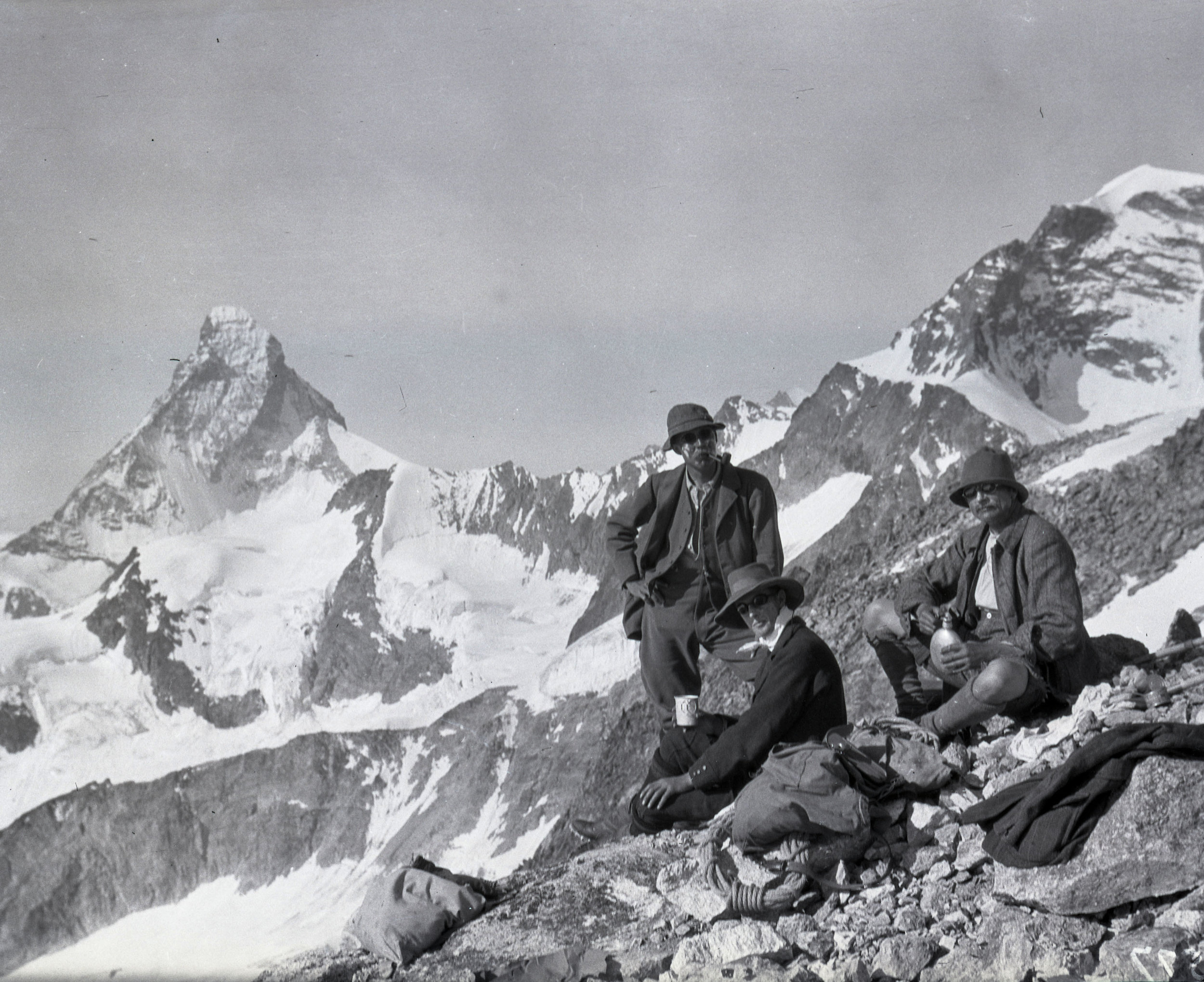

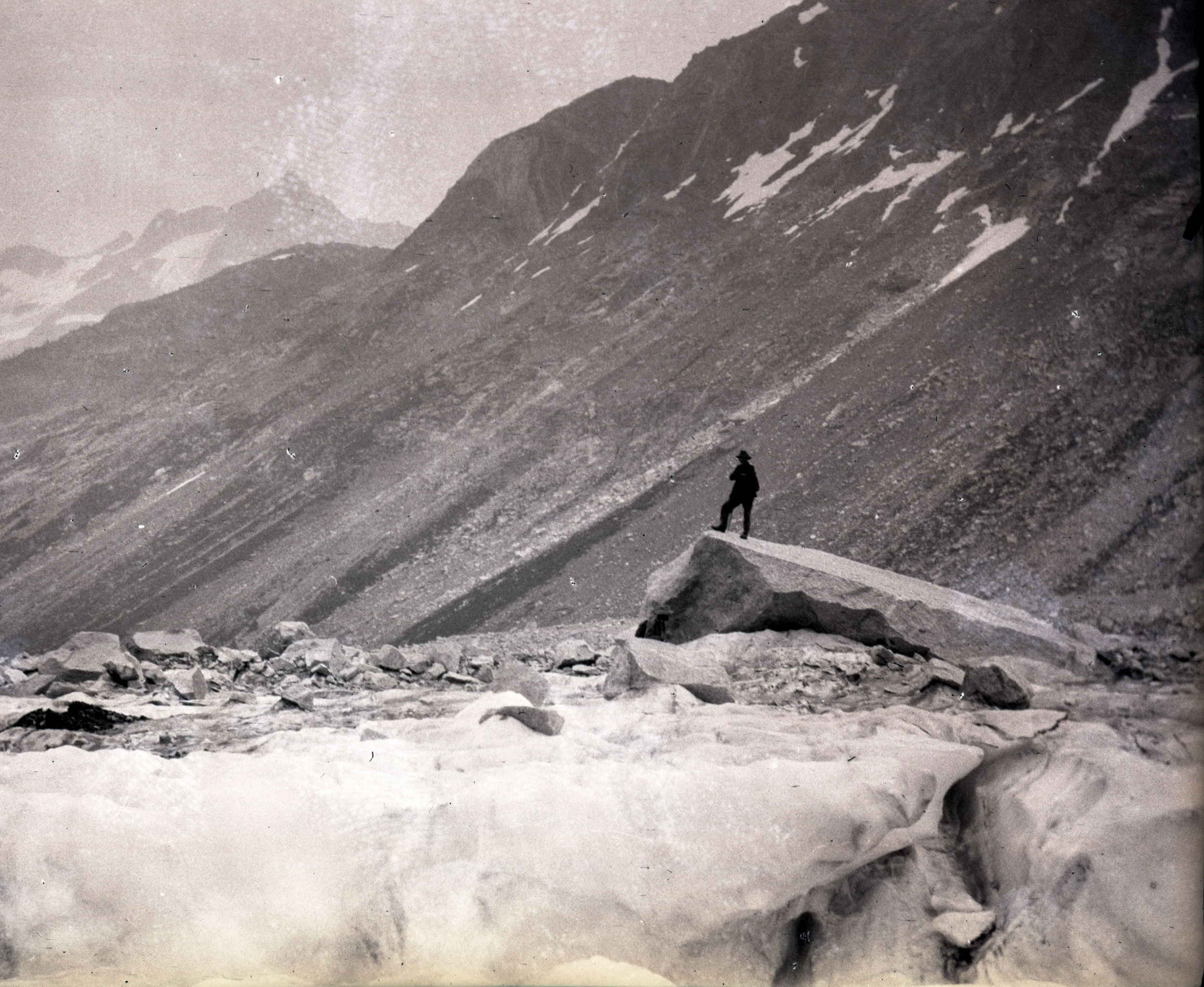
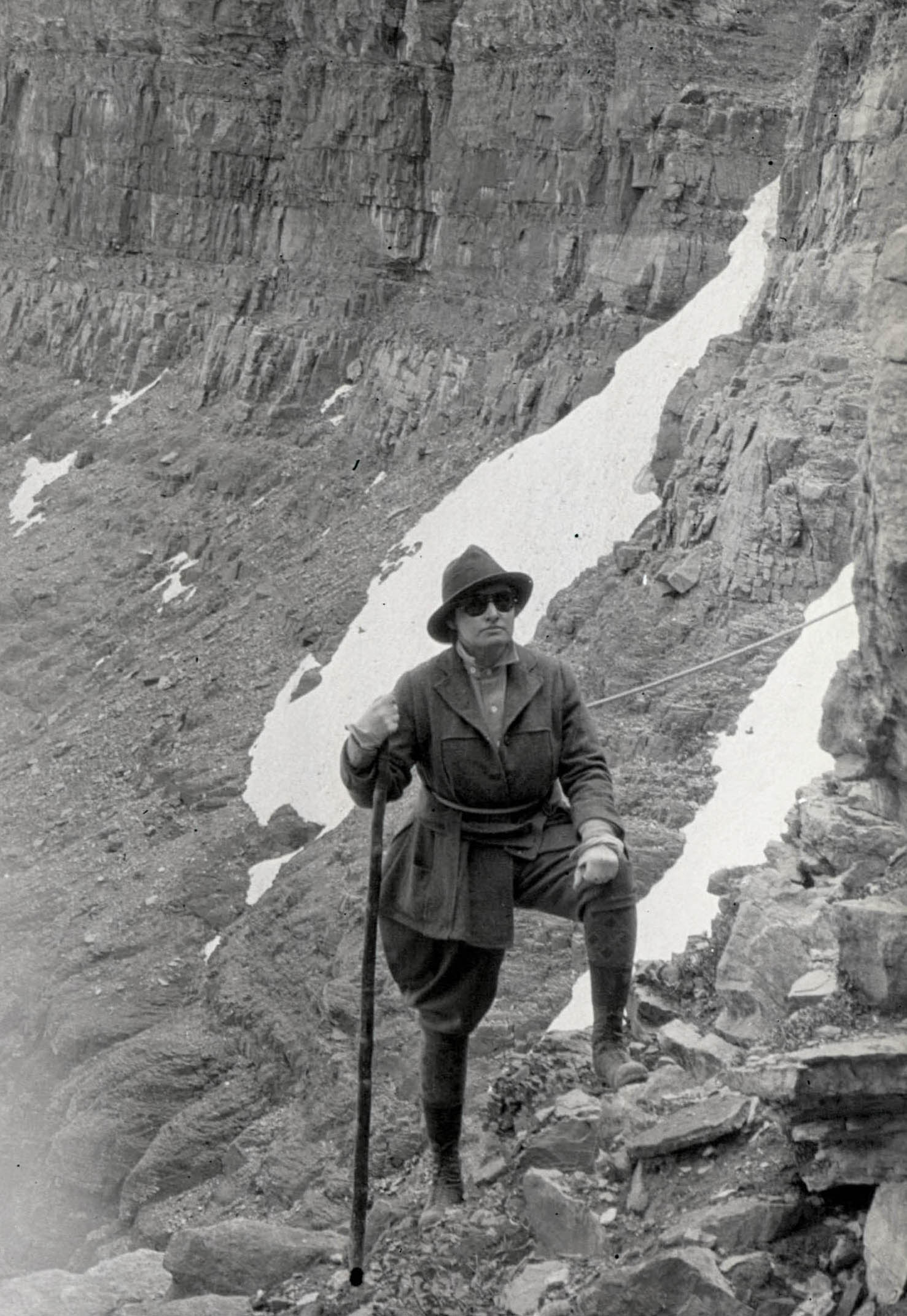
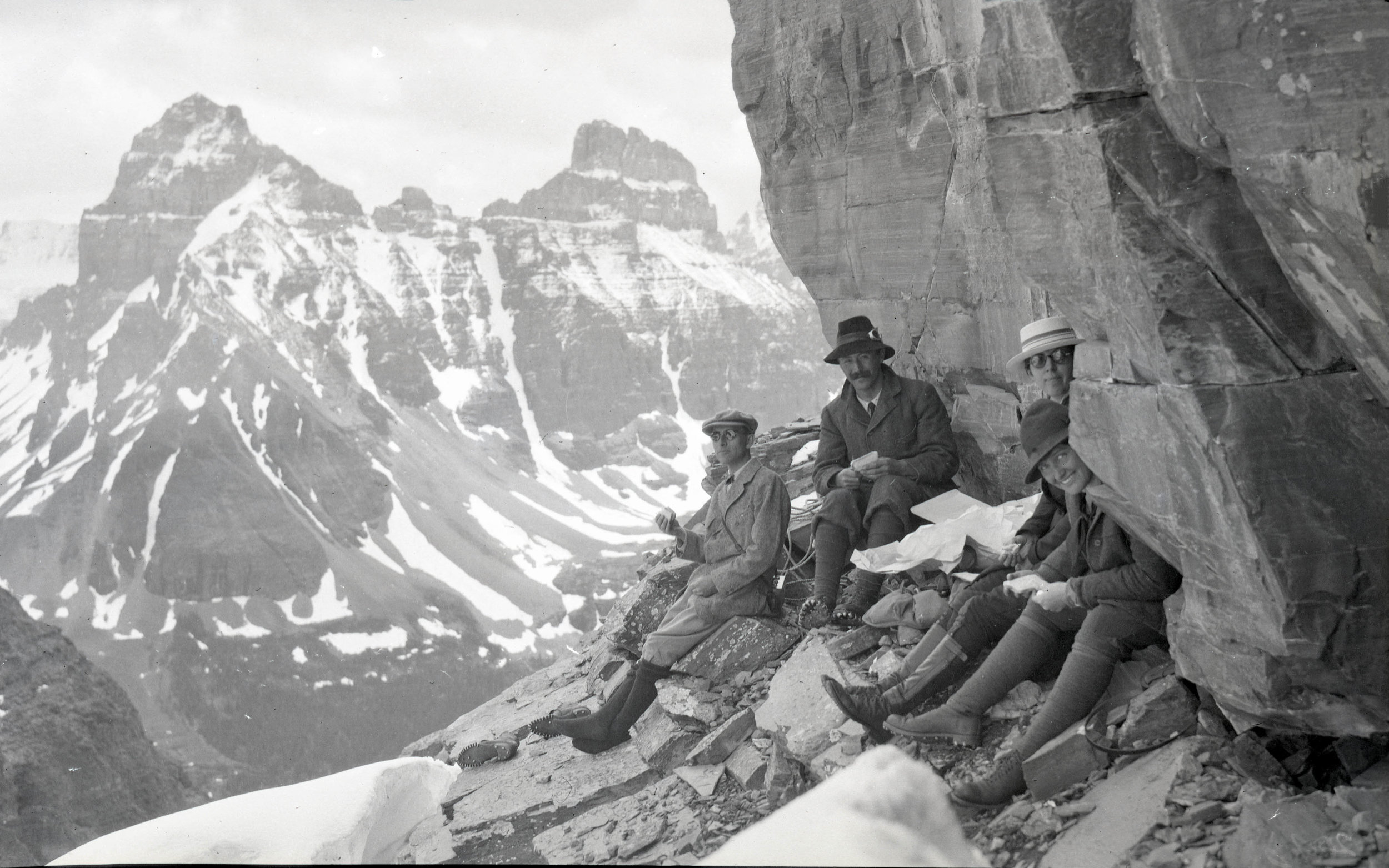
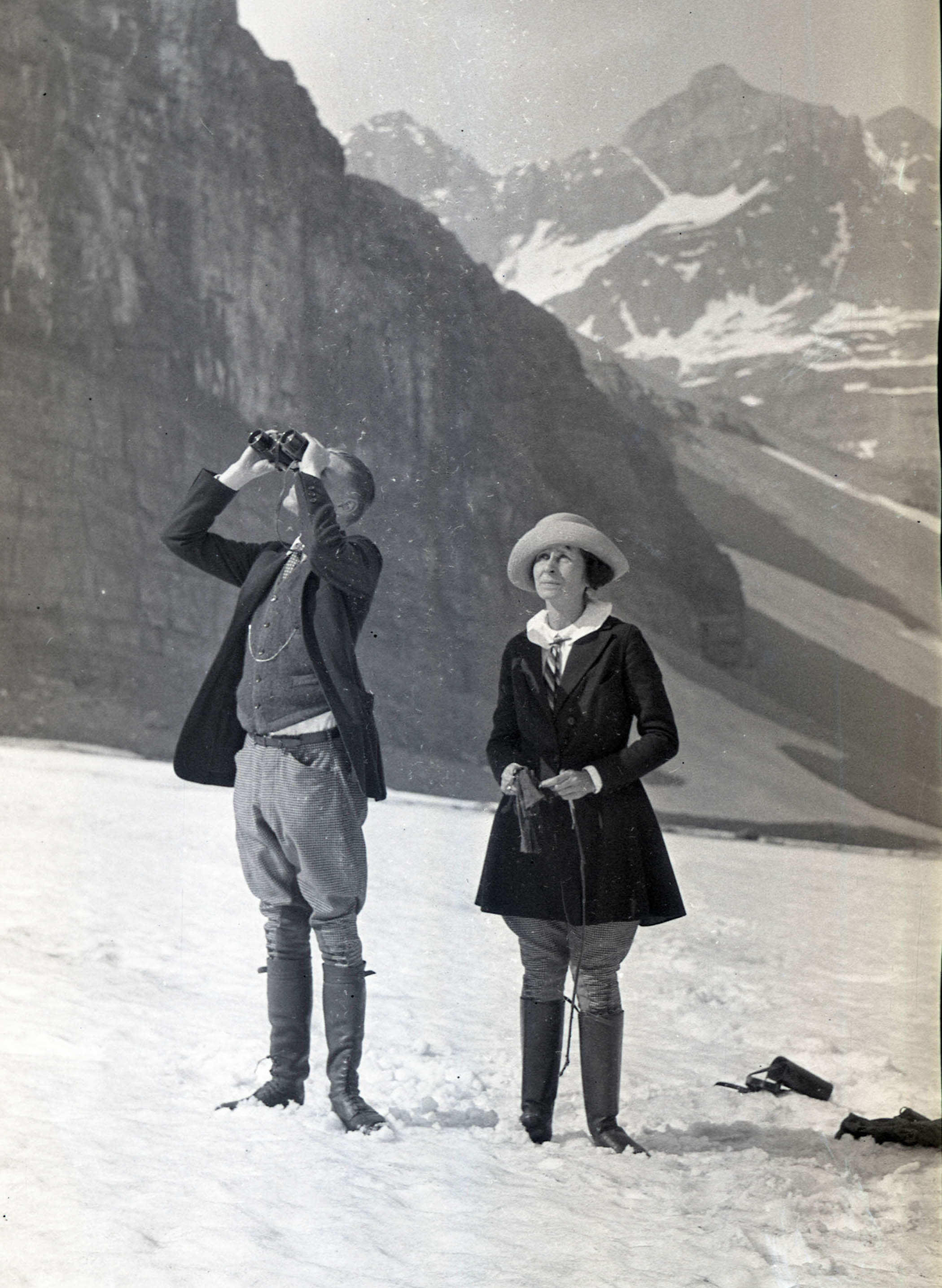
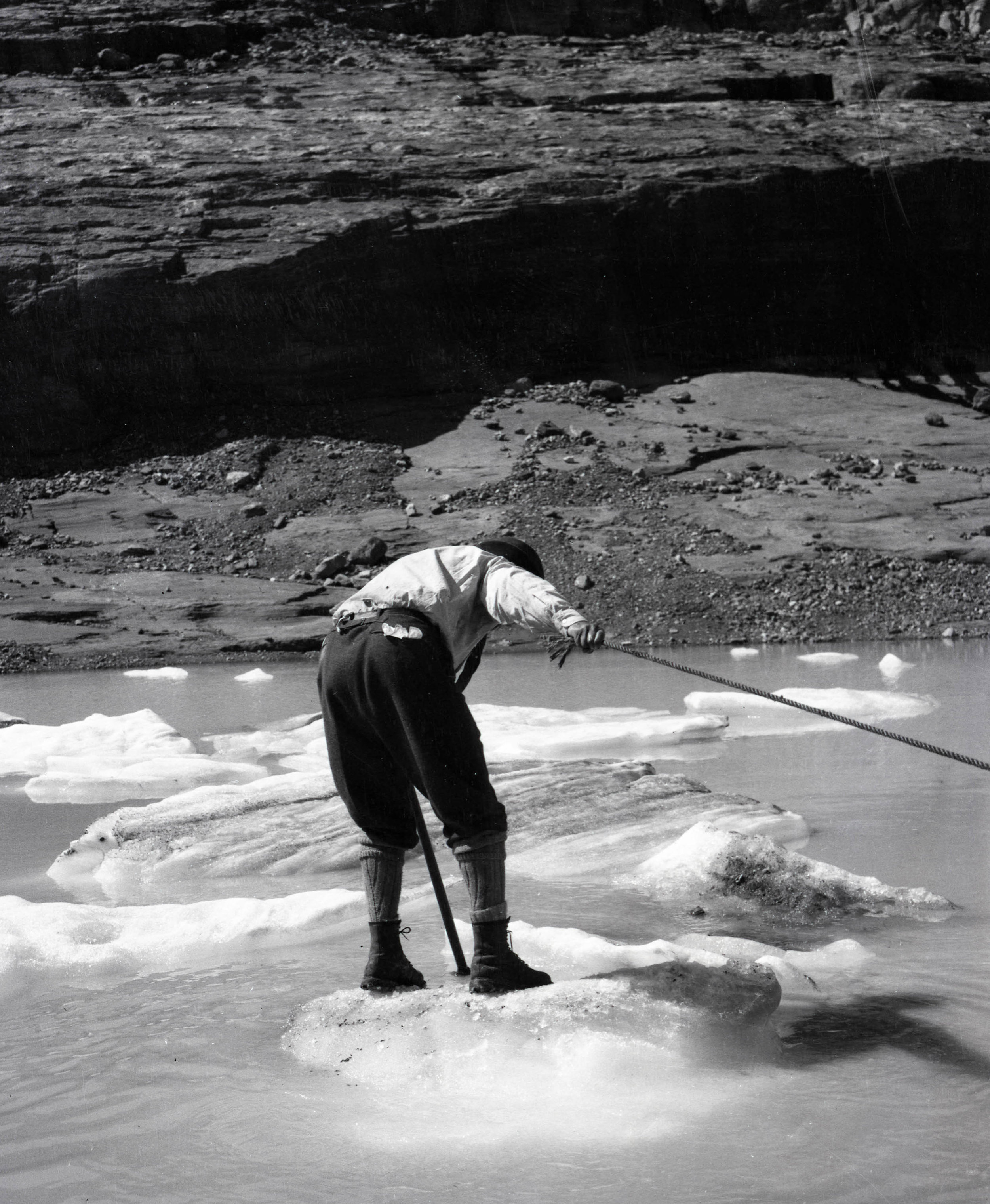
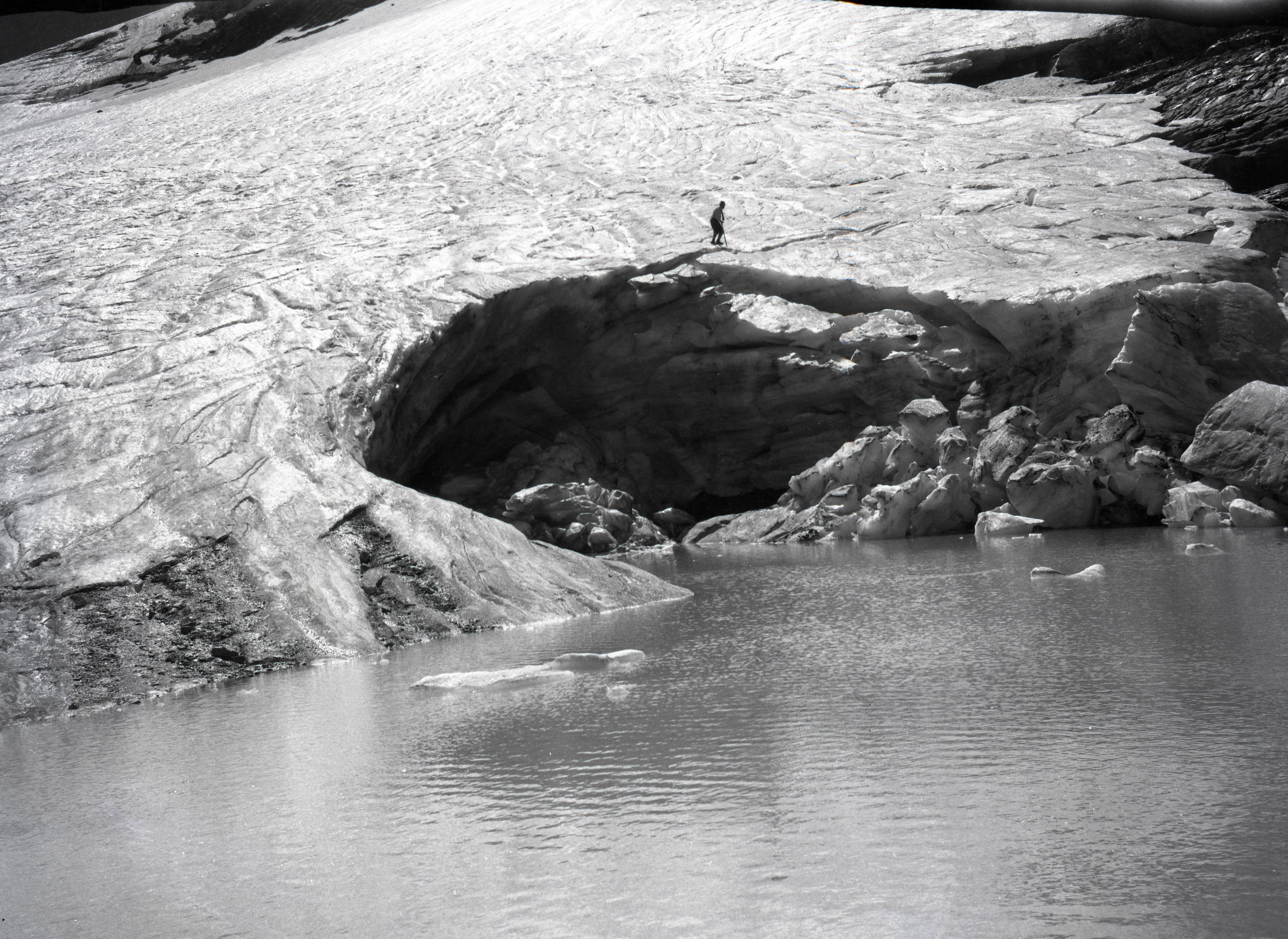
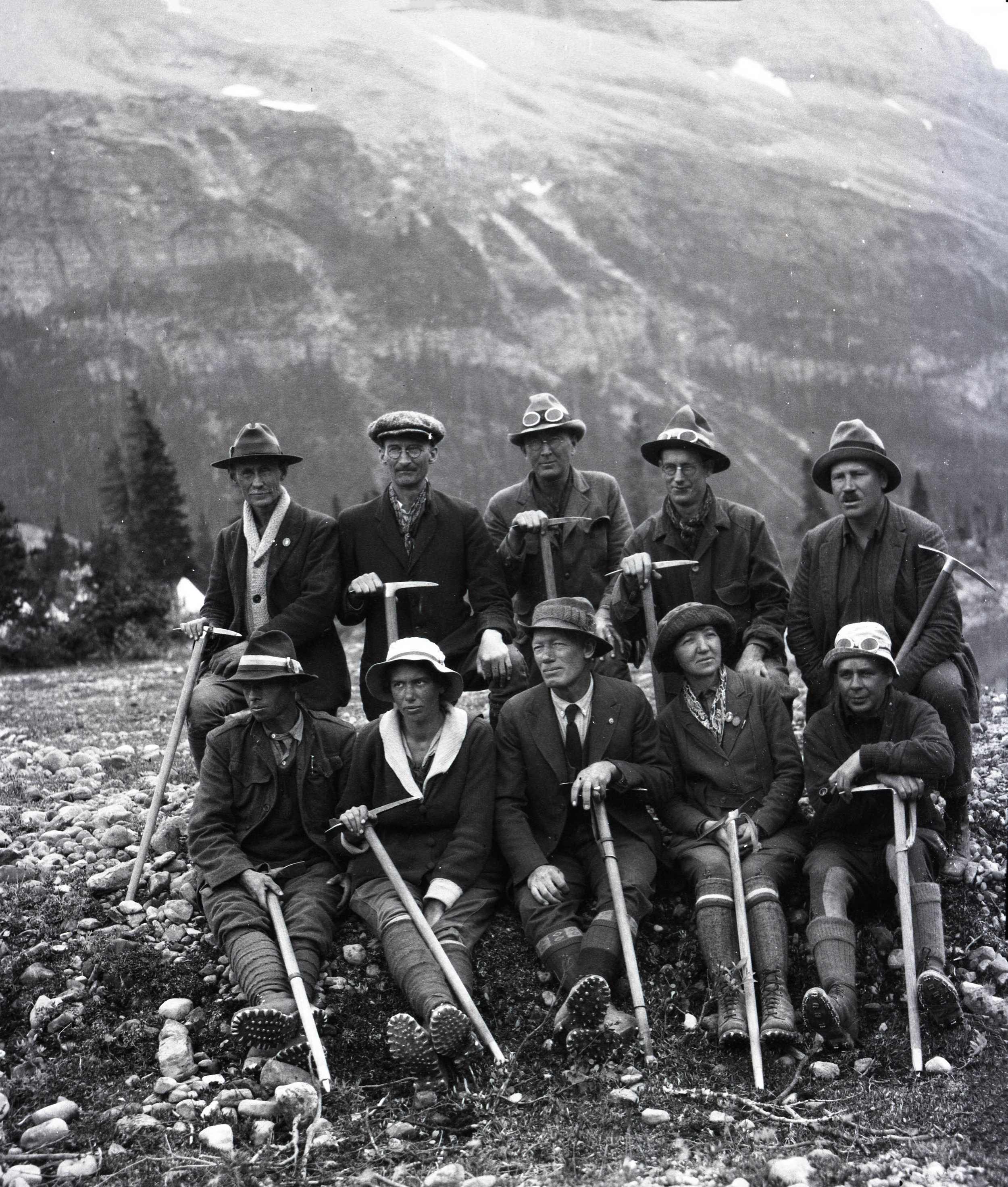
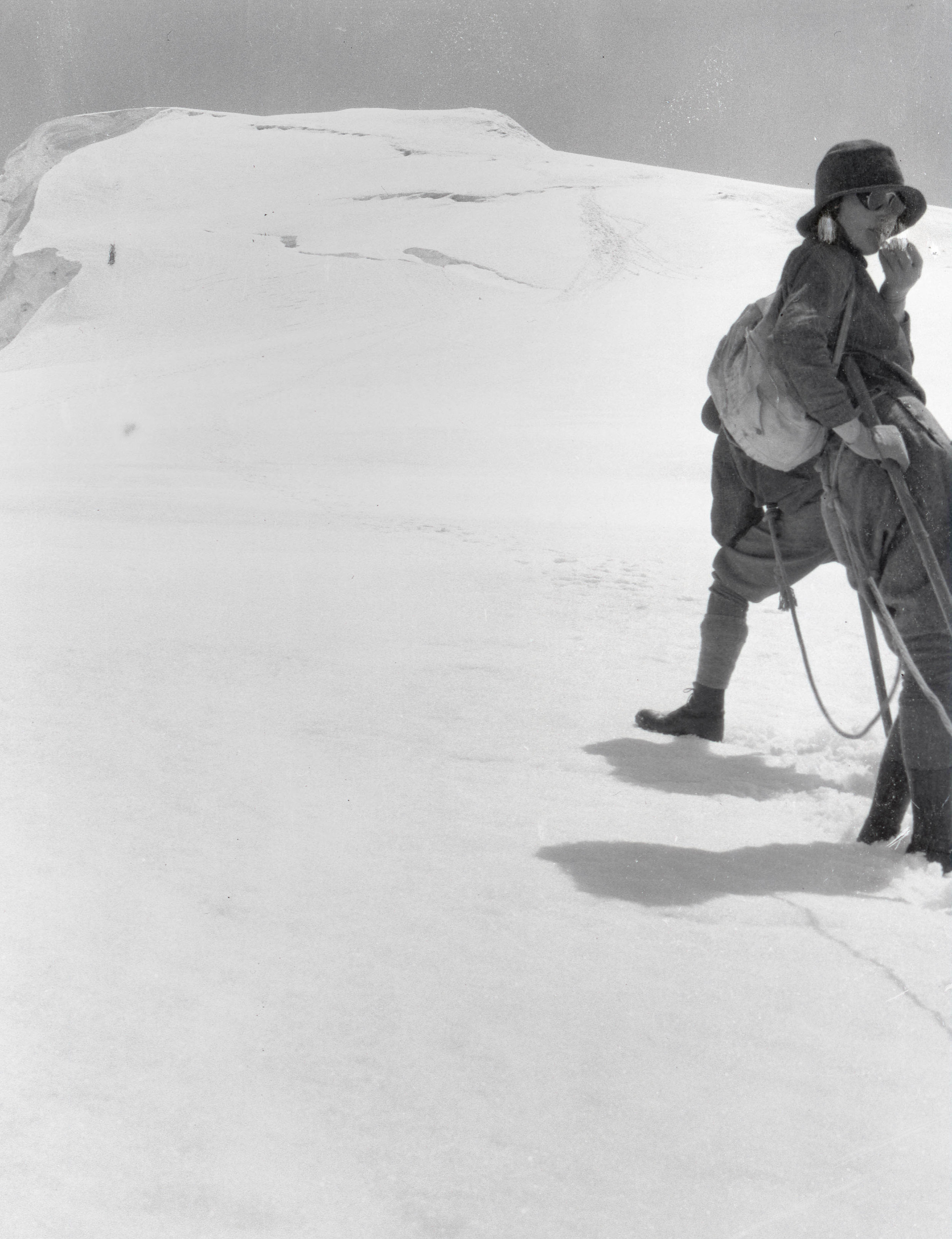
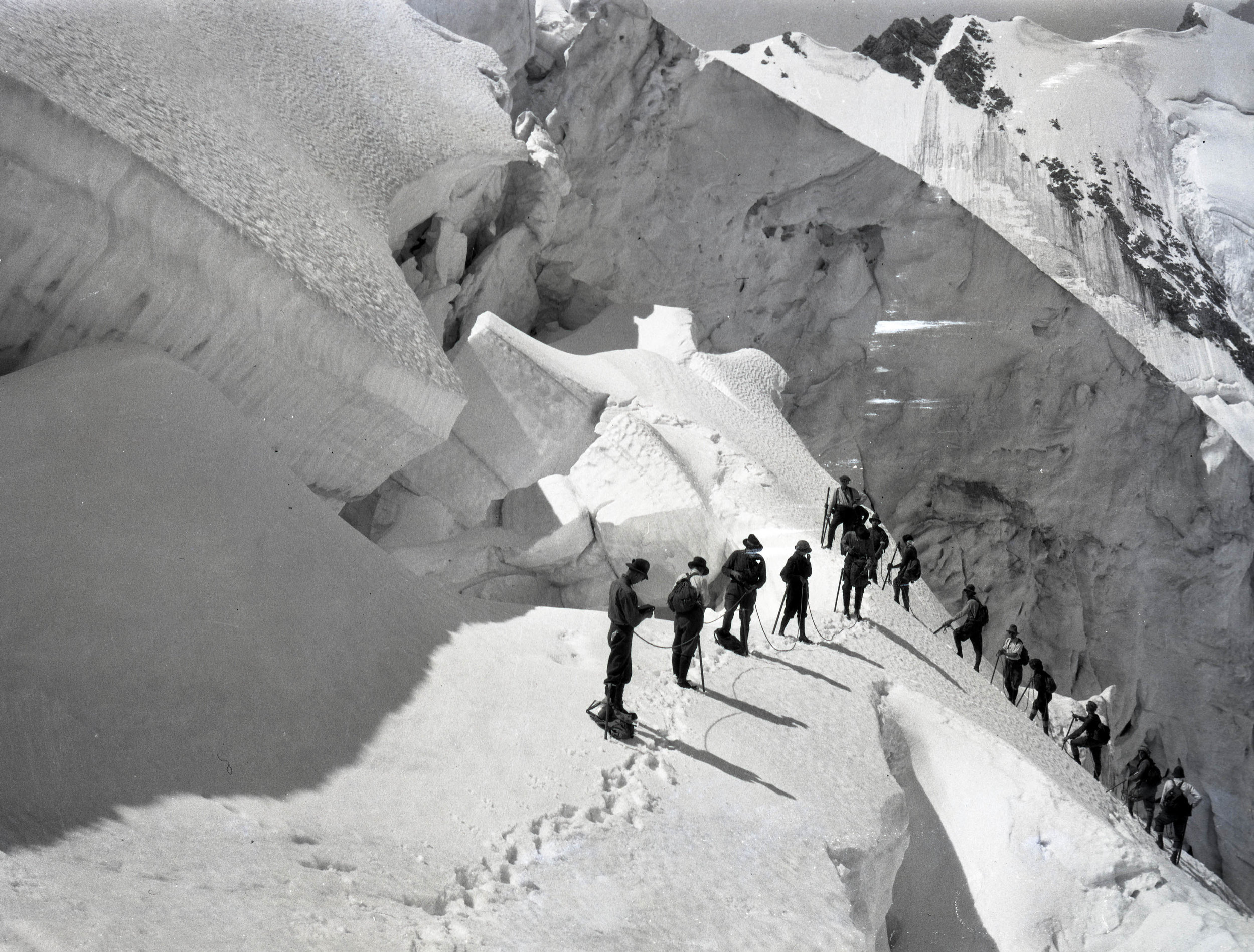
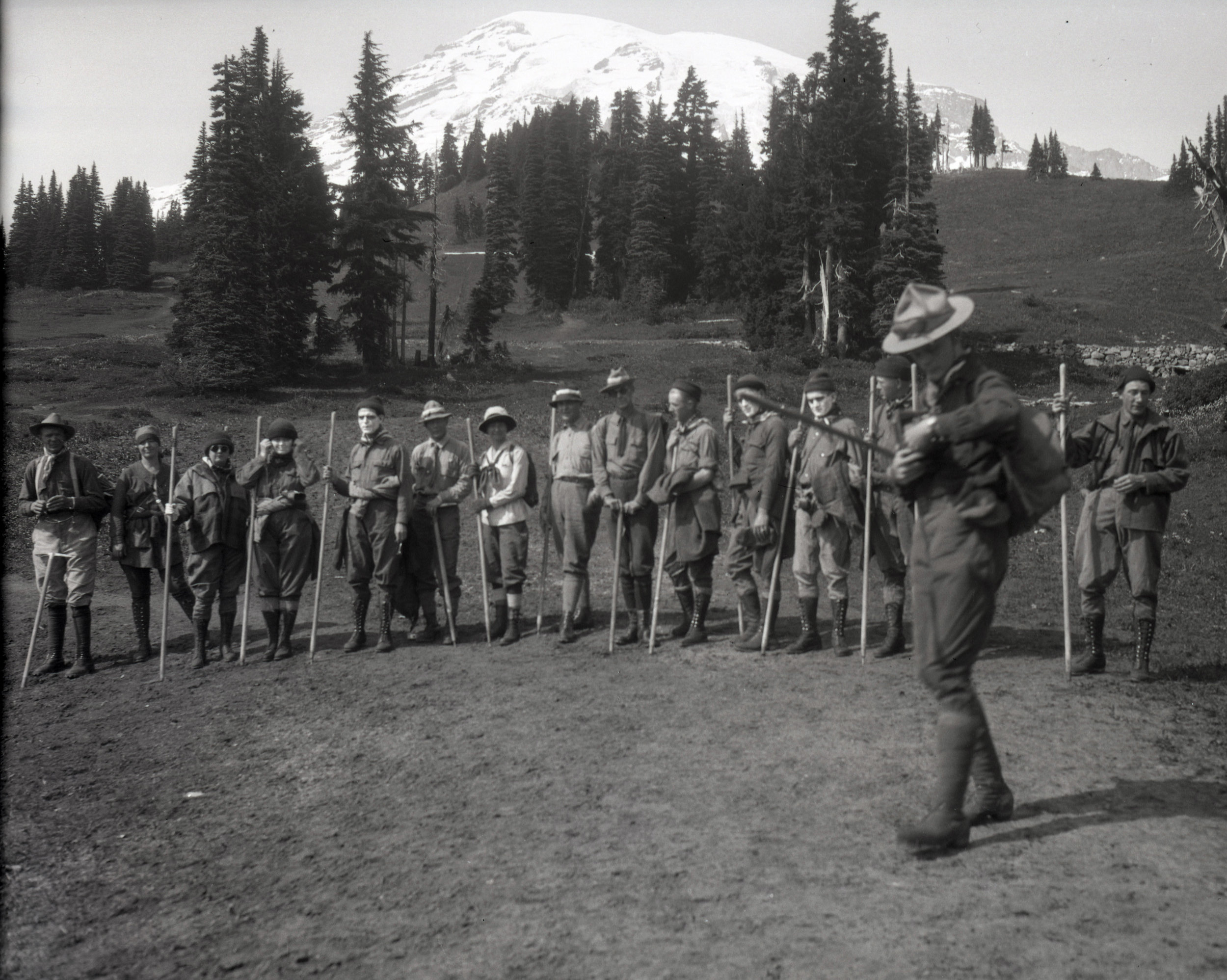

Equipment
Hobnail boots, hemp rope, canvas and silk tents and men’s and women’s climbing attire.
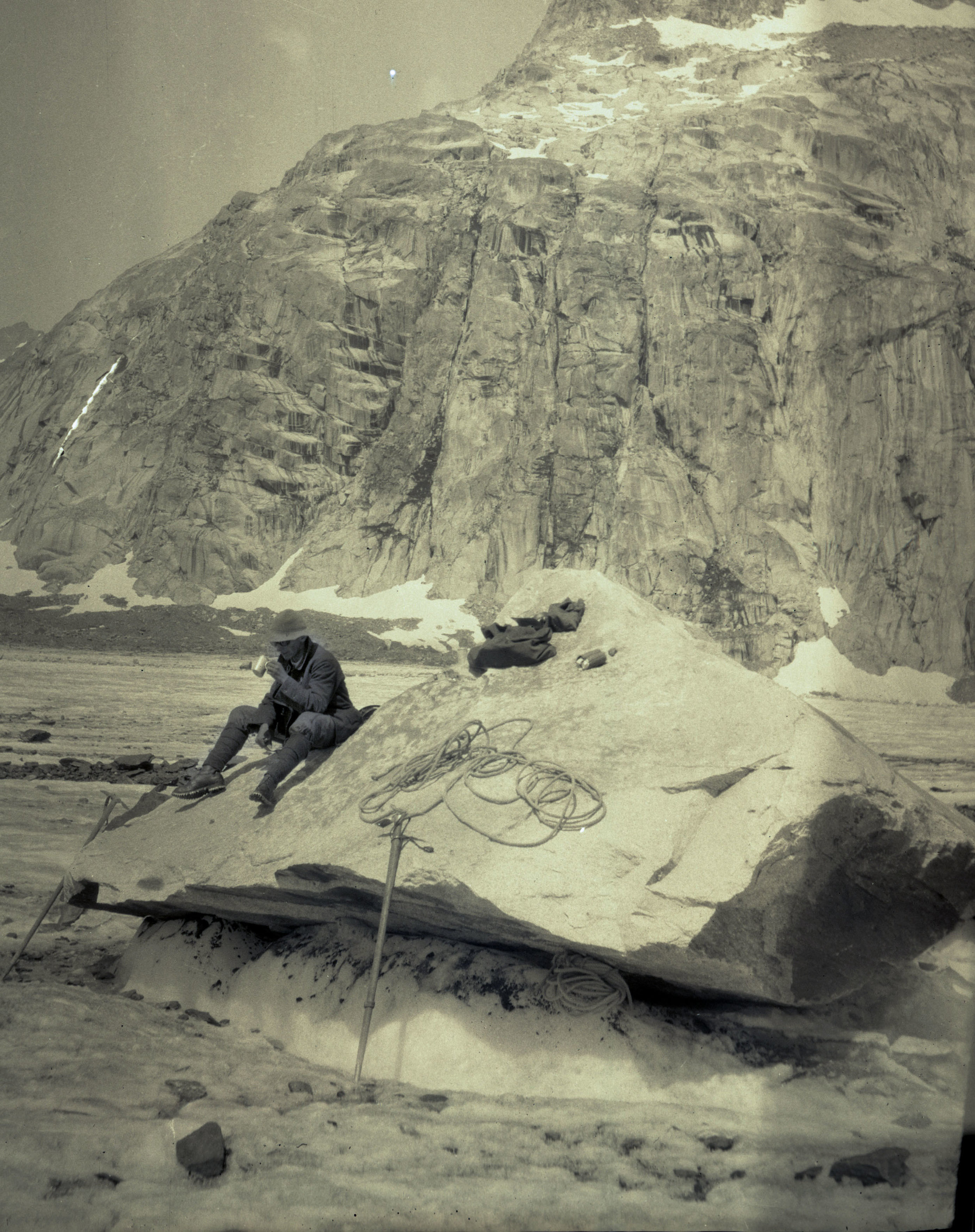
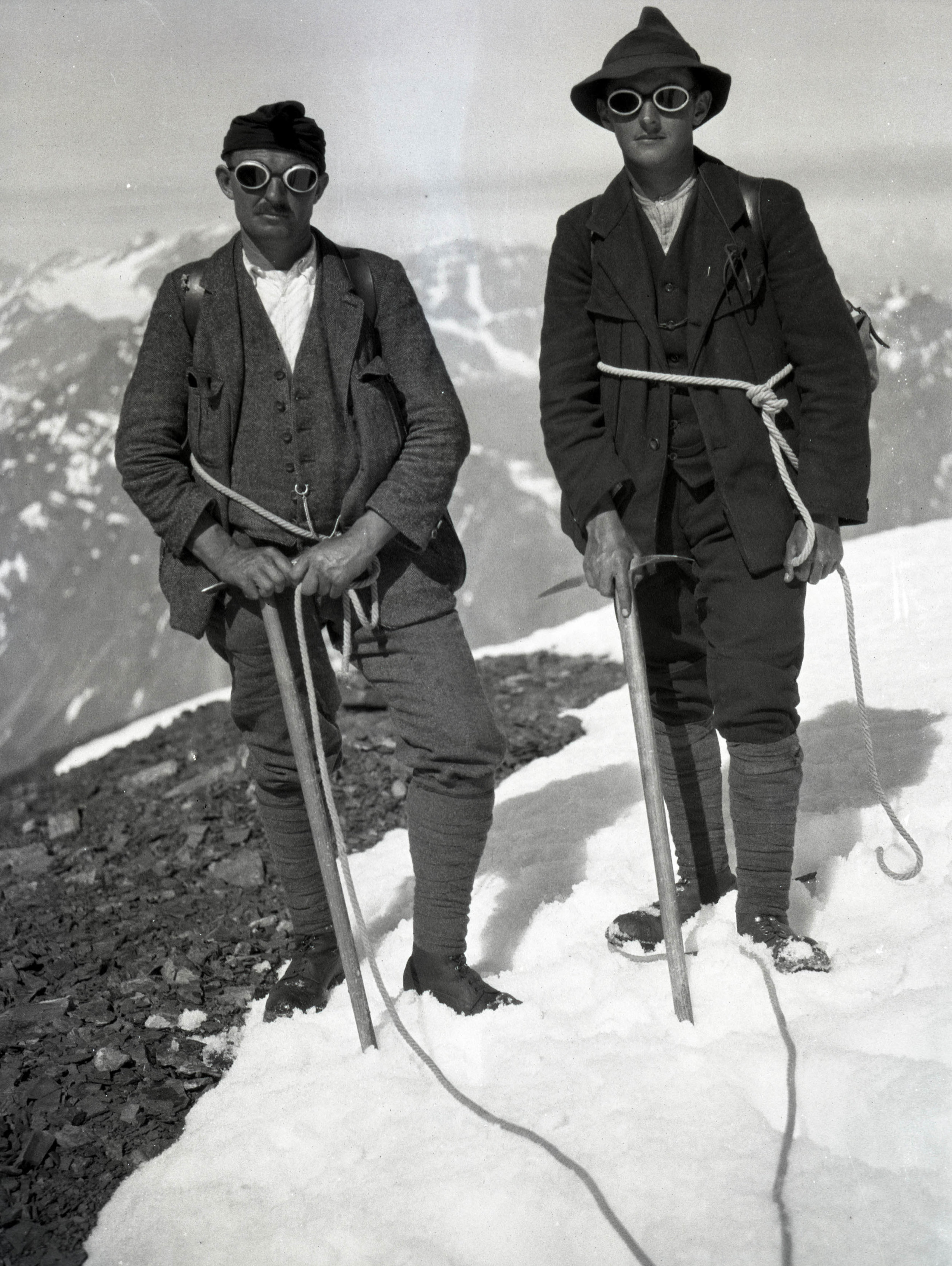
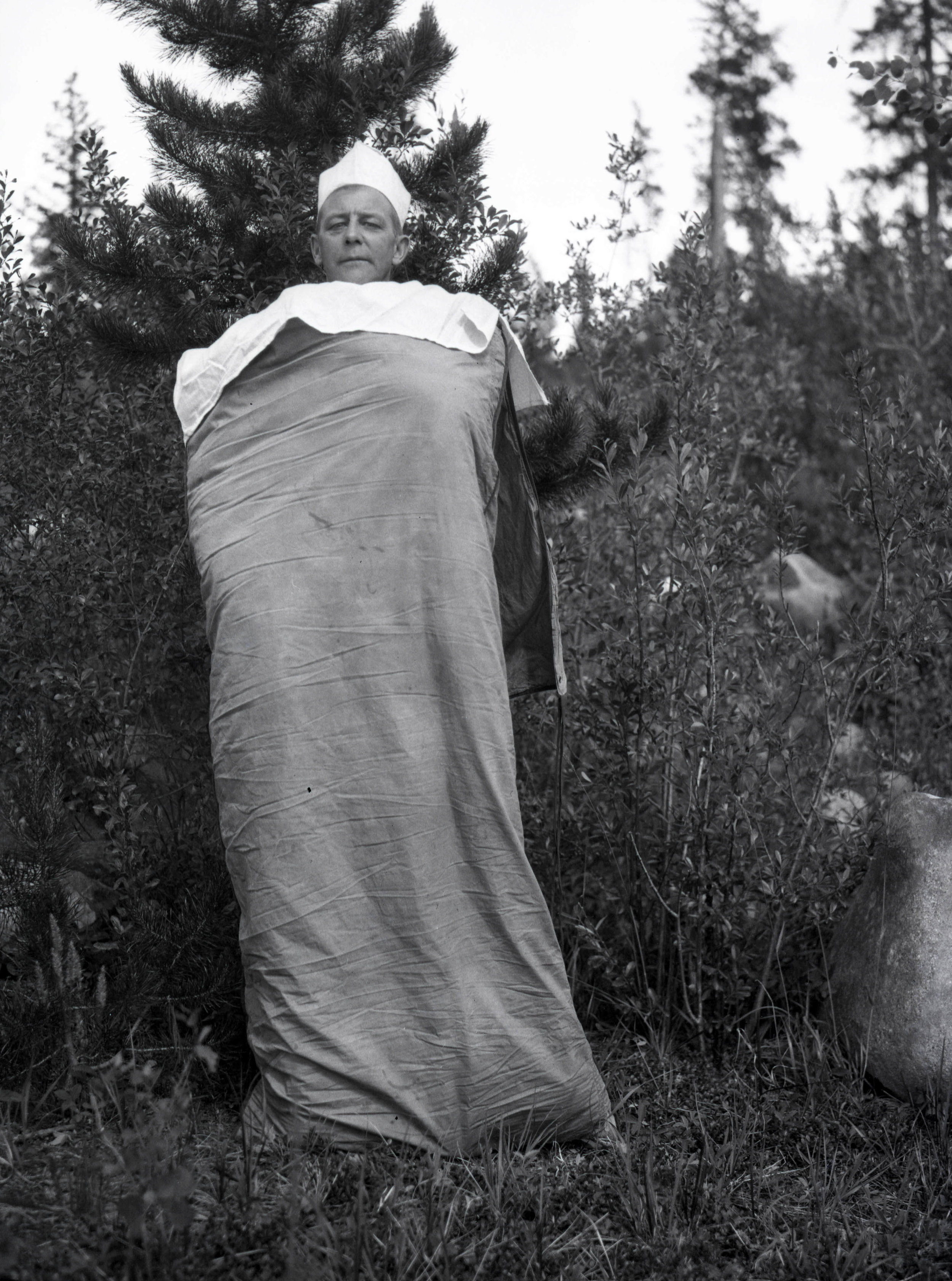

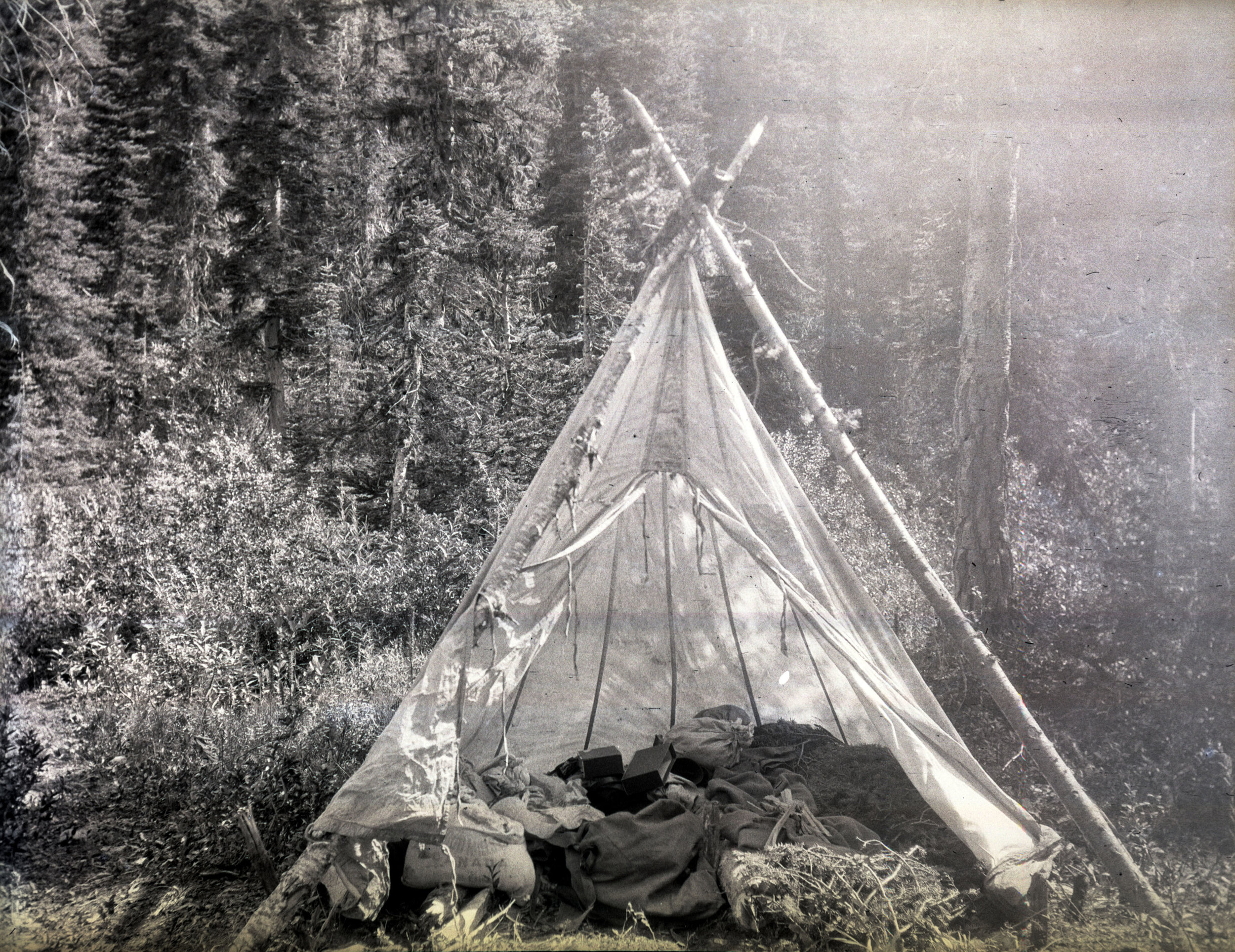
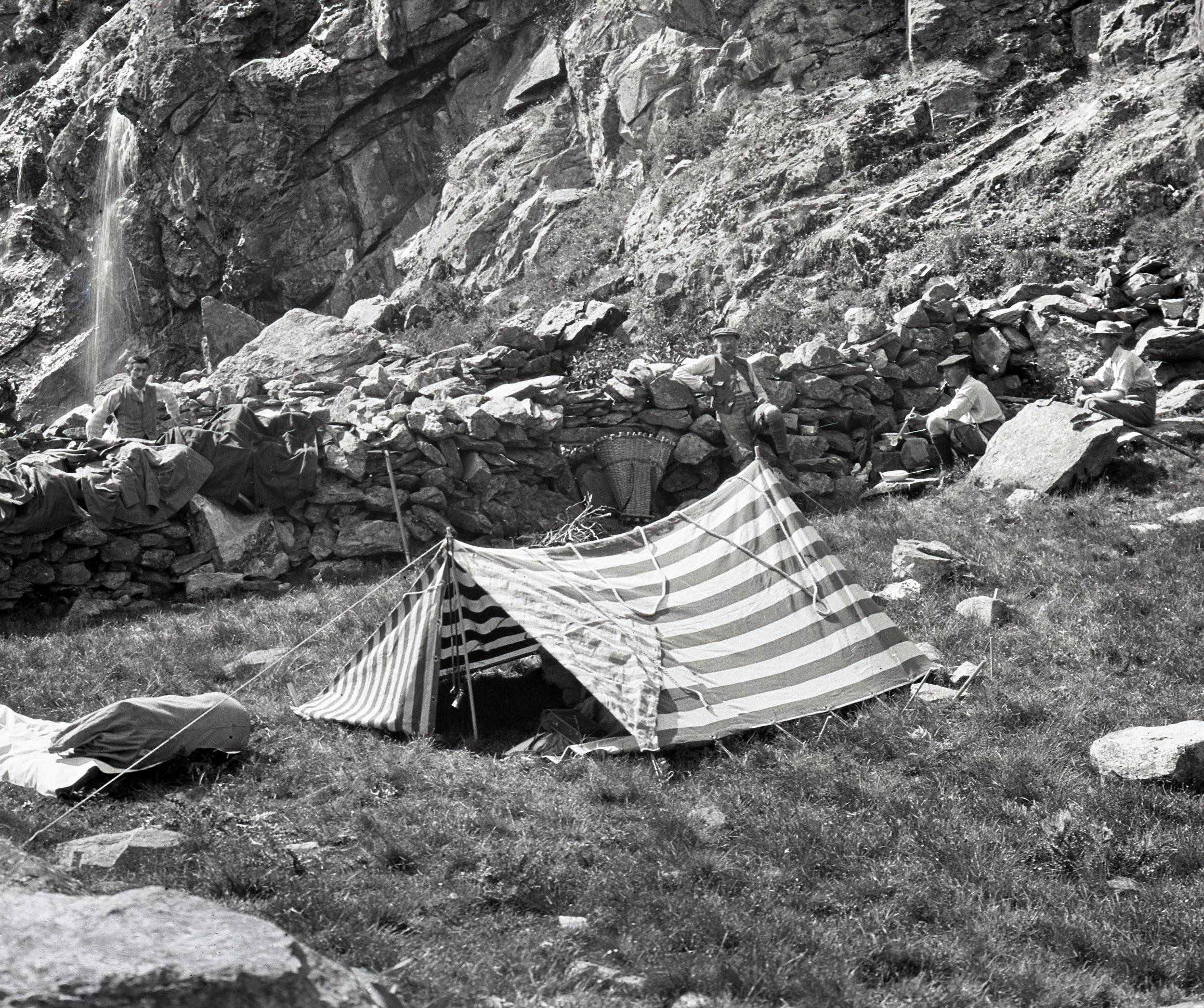
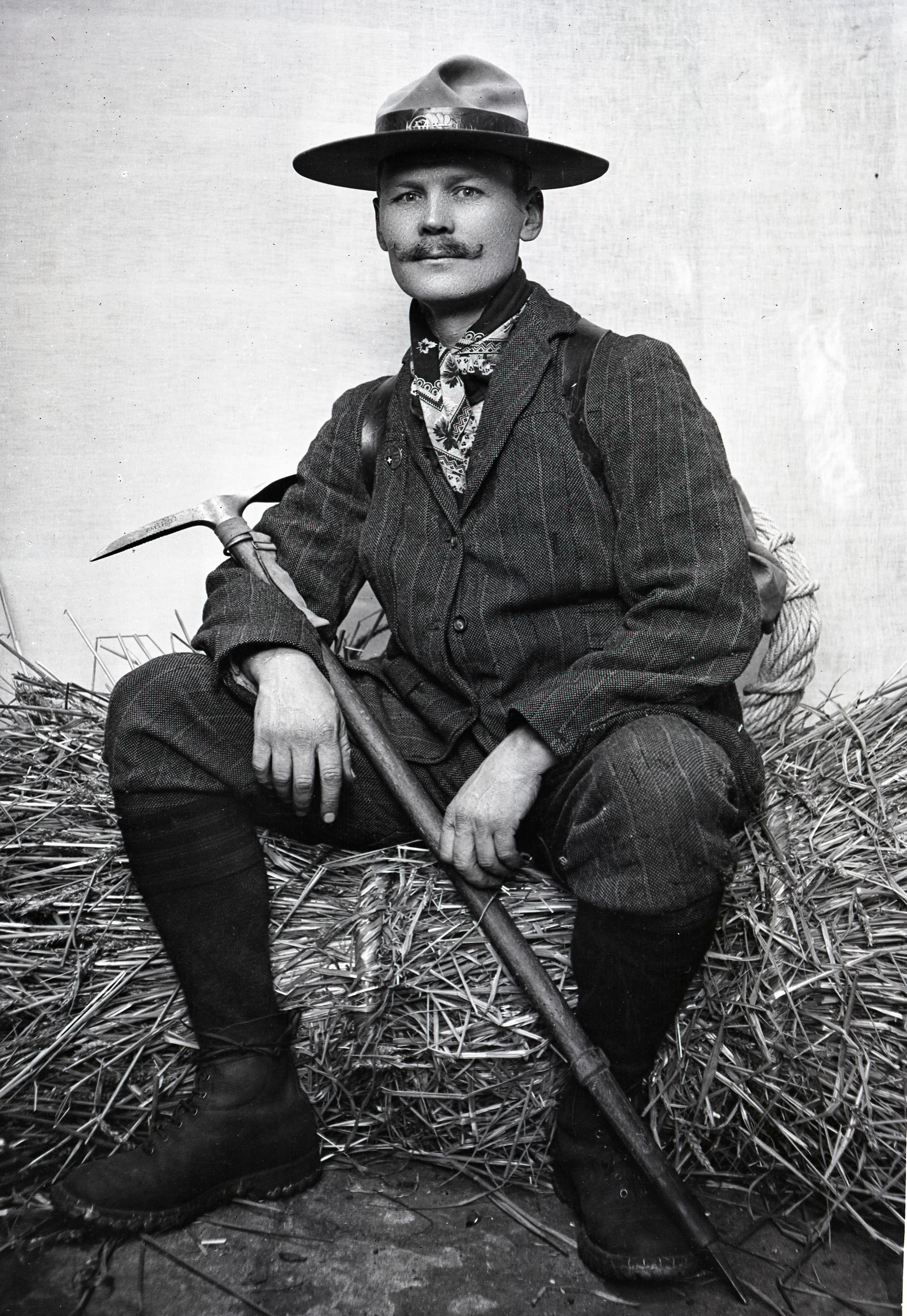
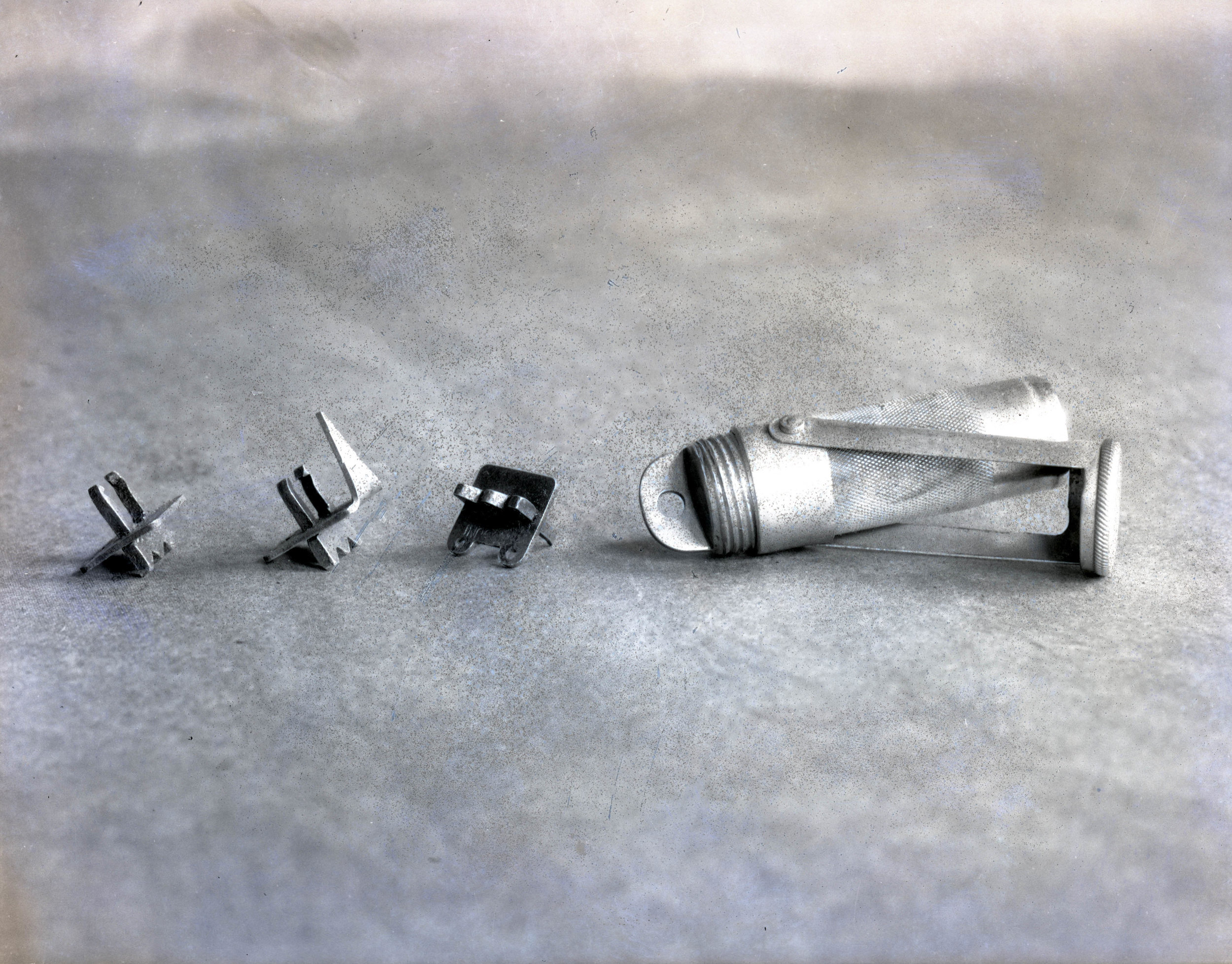
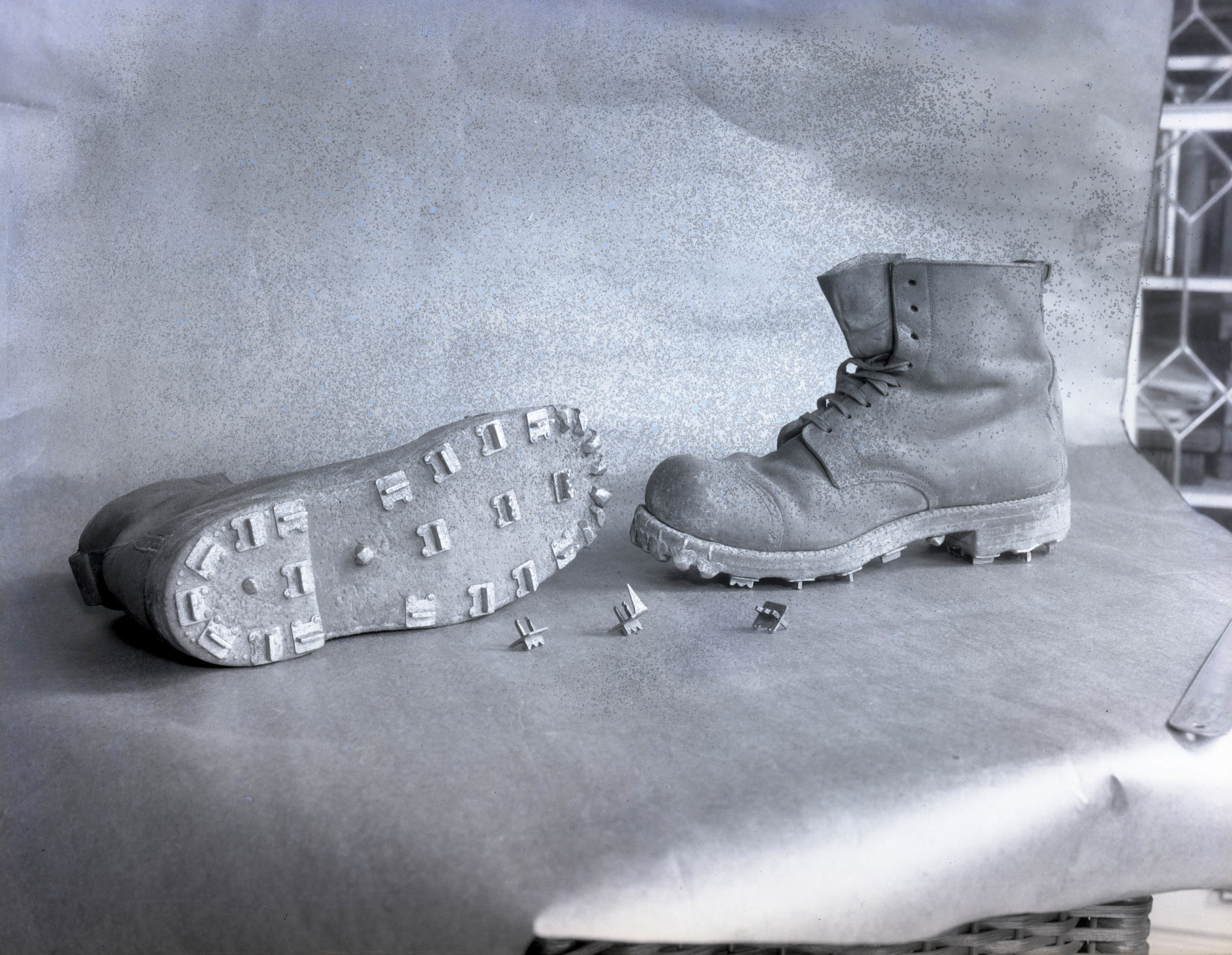
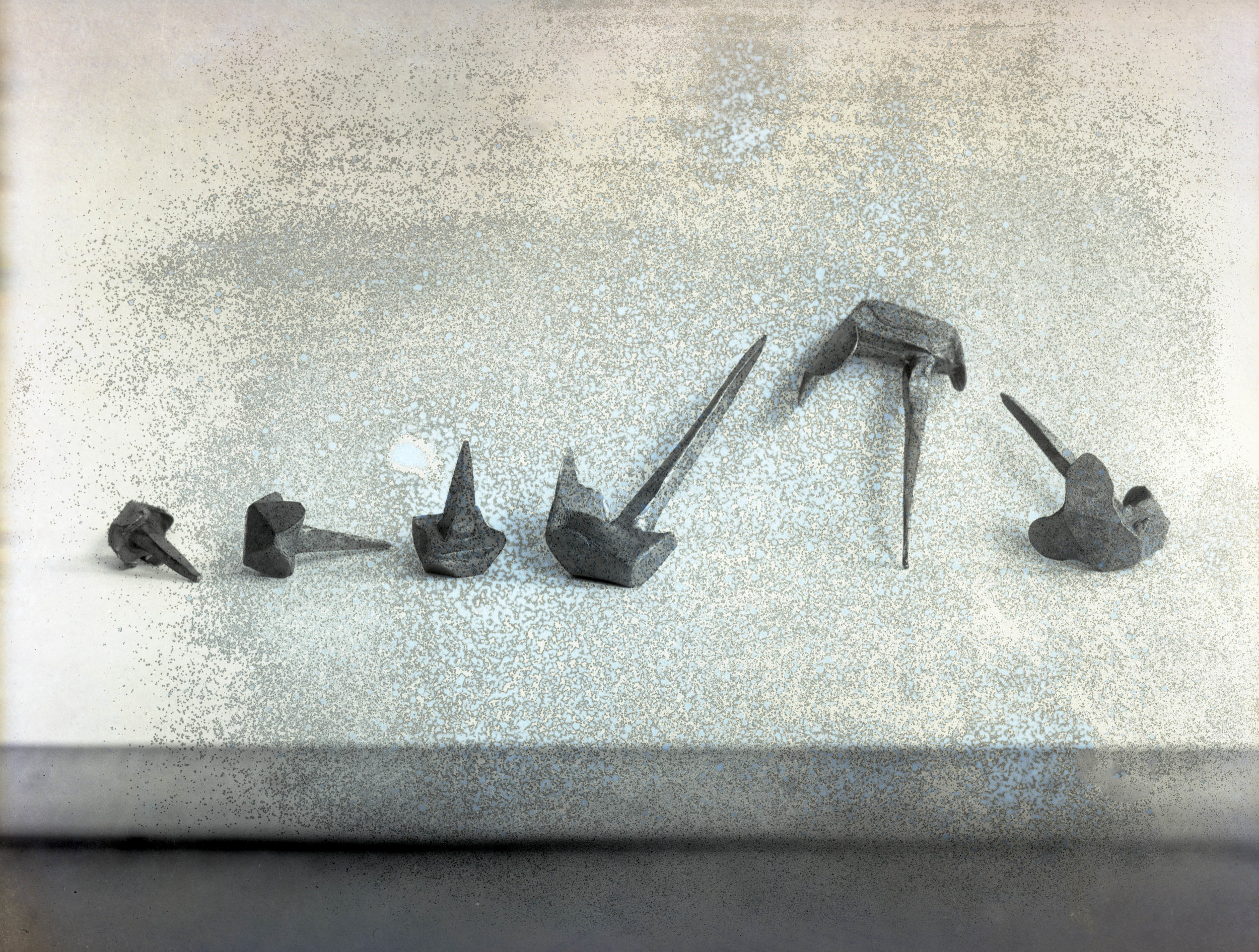
Summits
Men and women on top
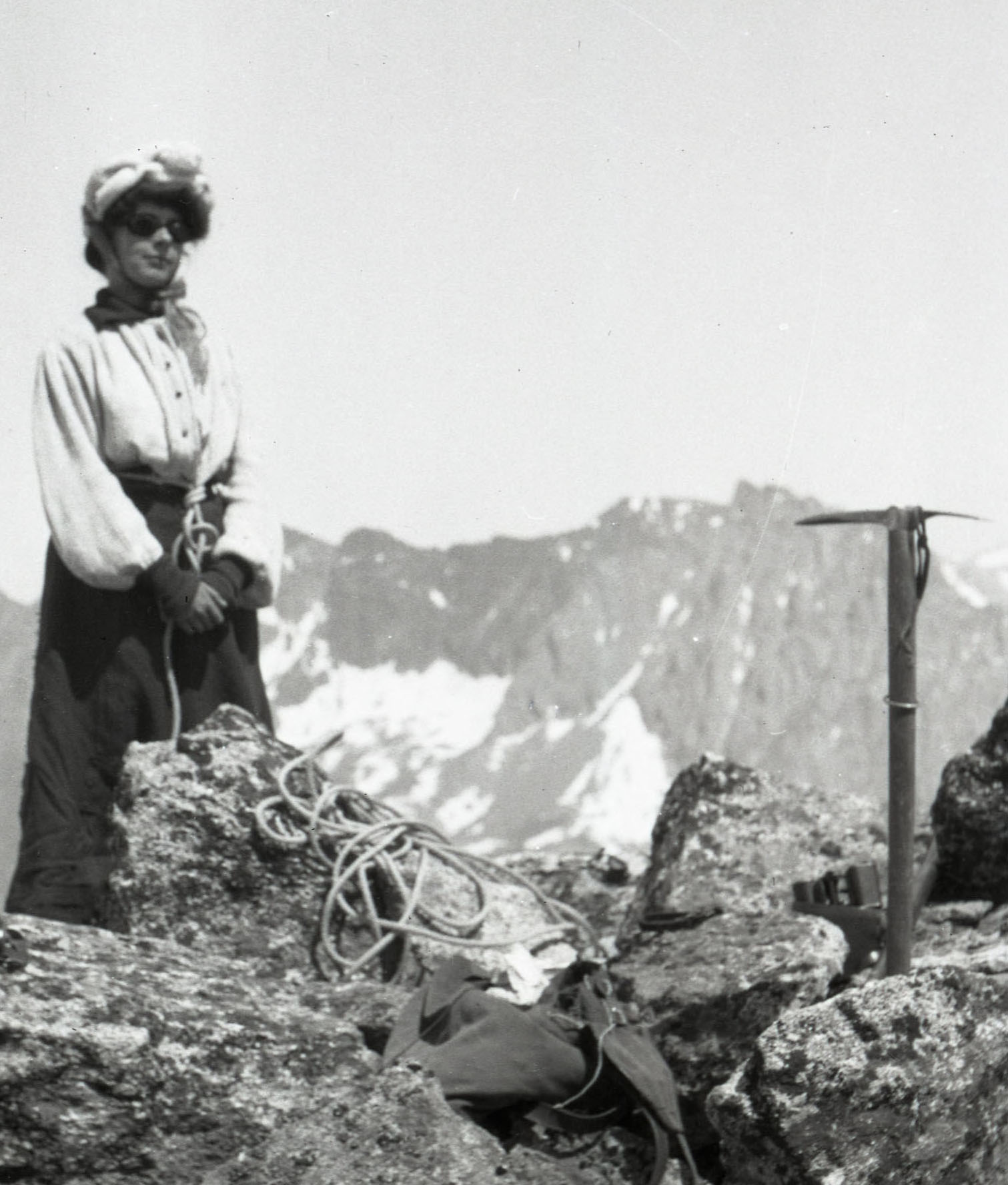
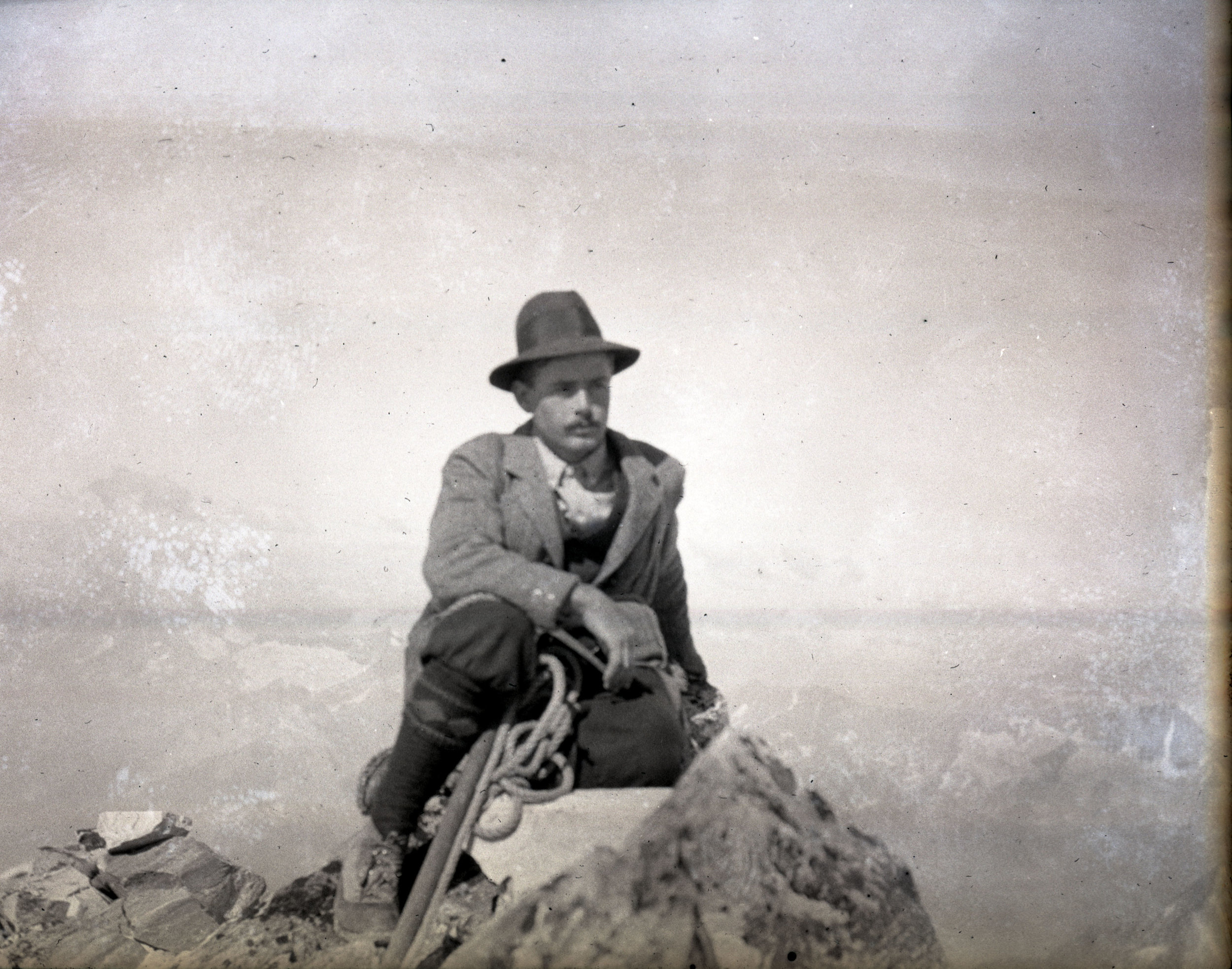

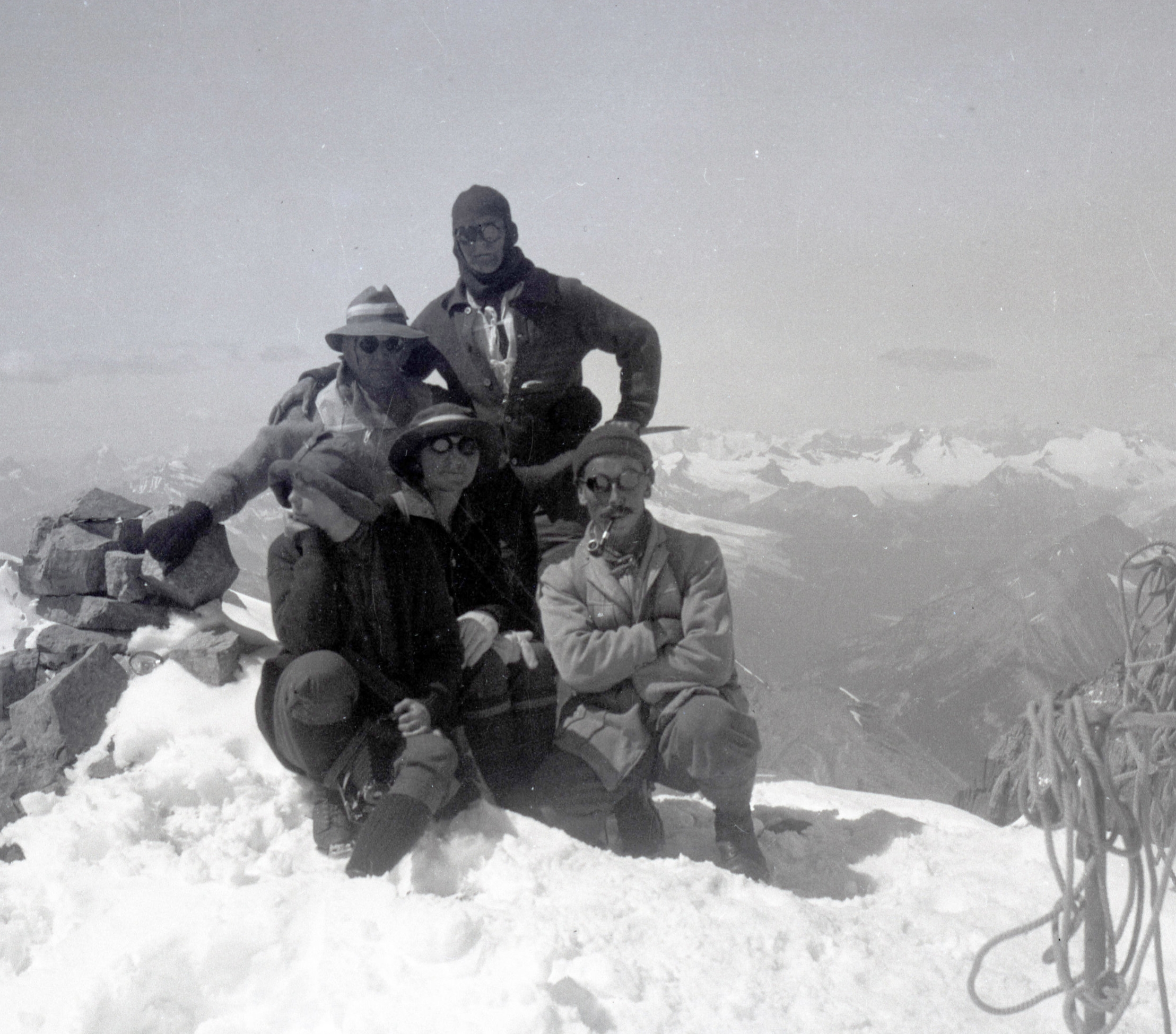
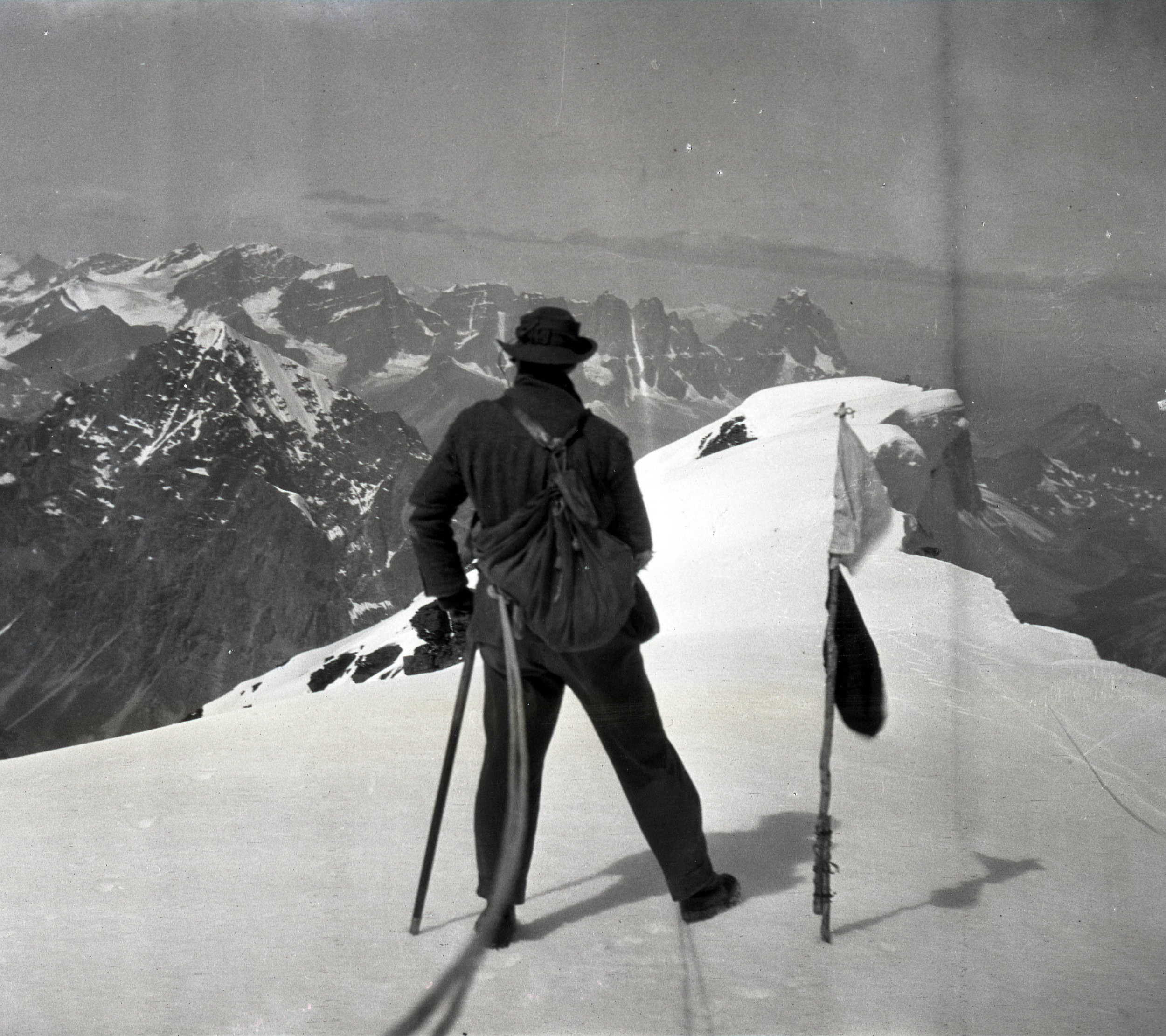
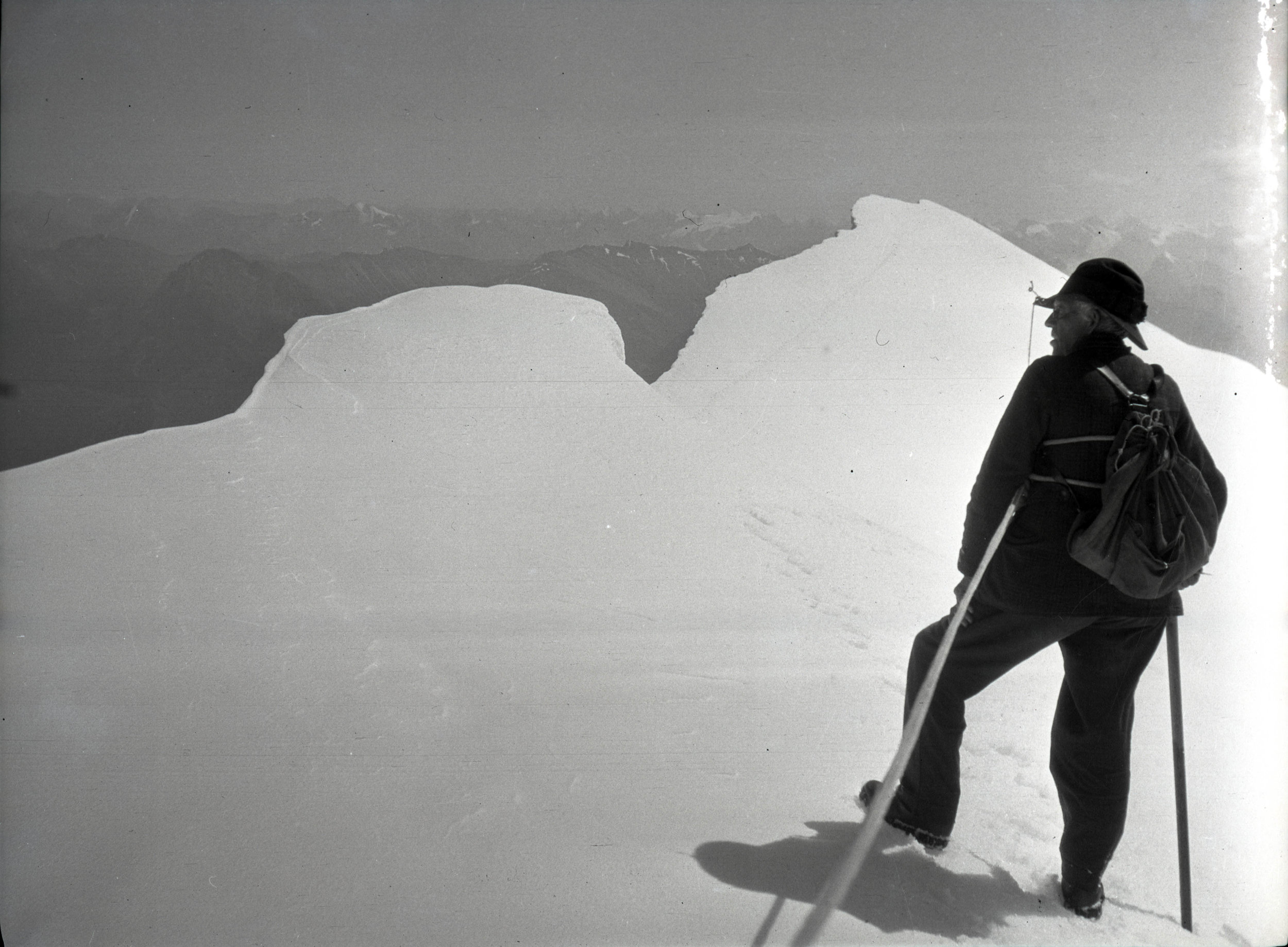
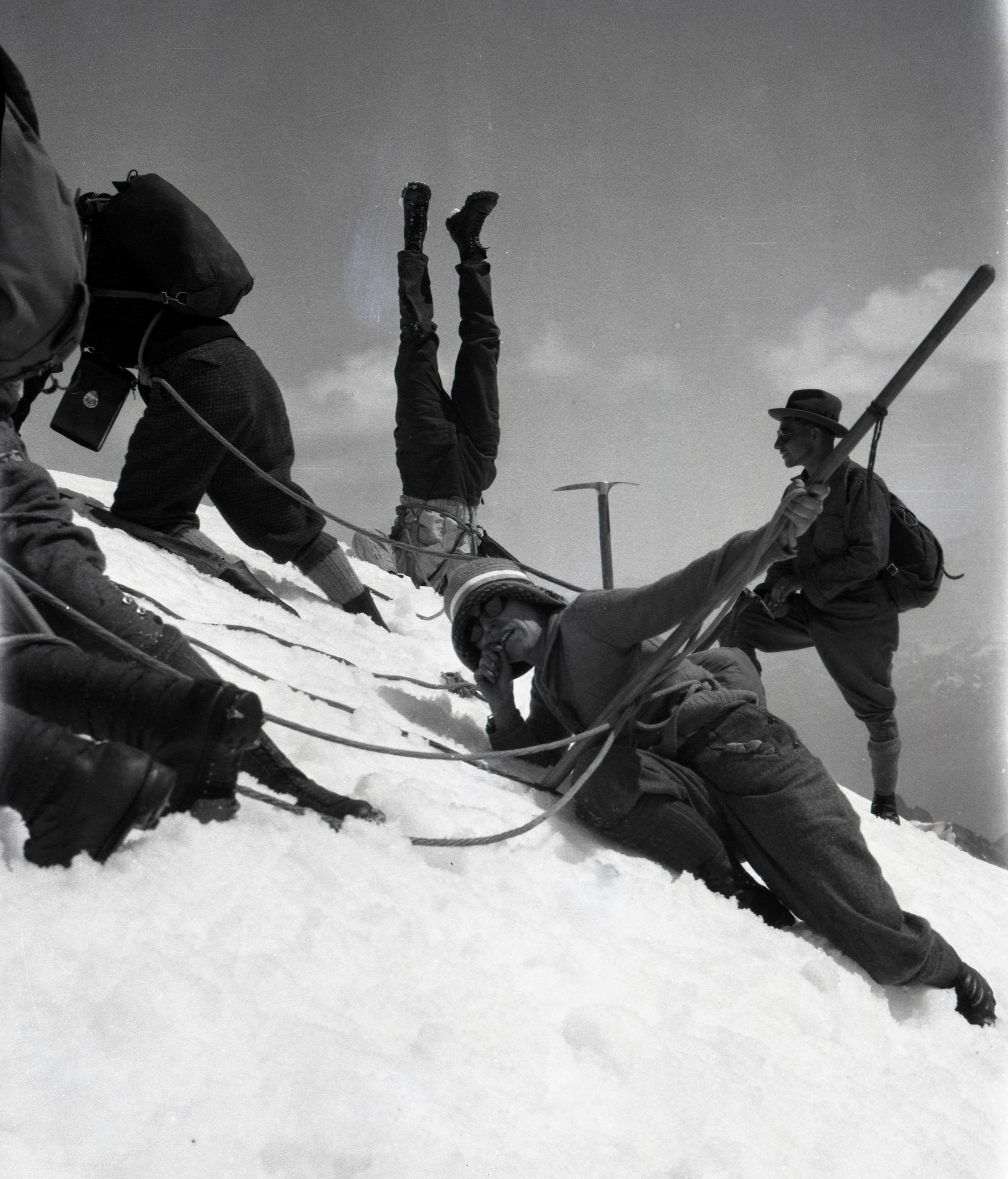


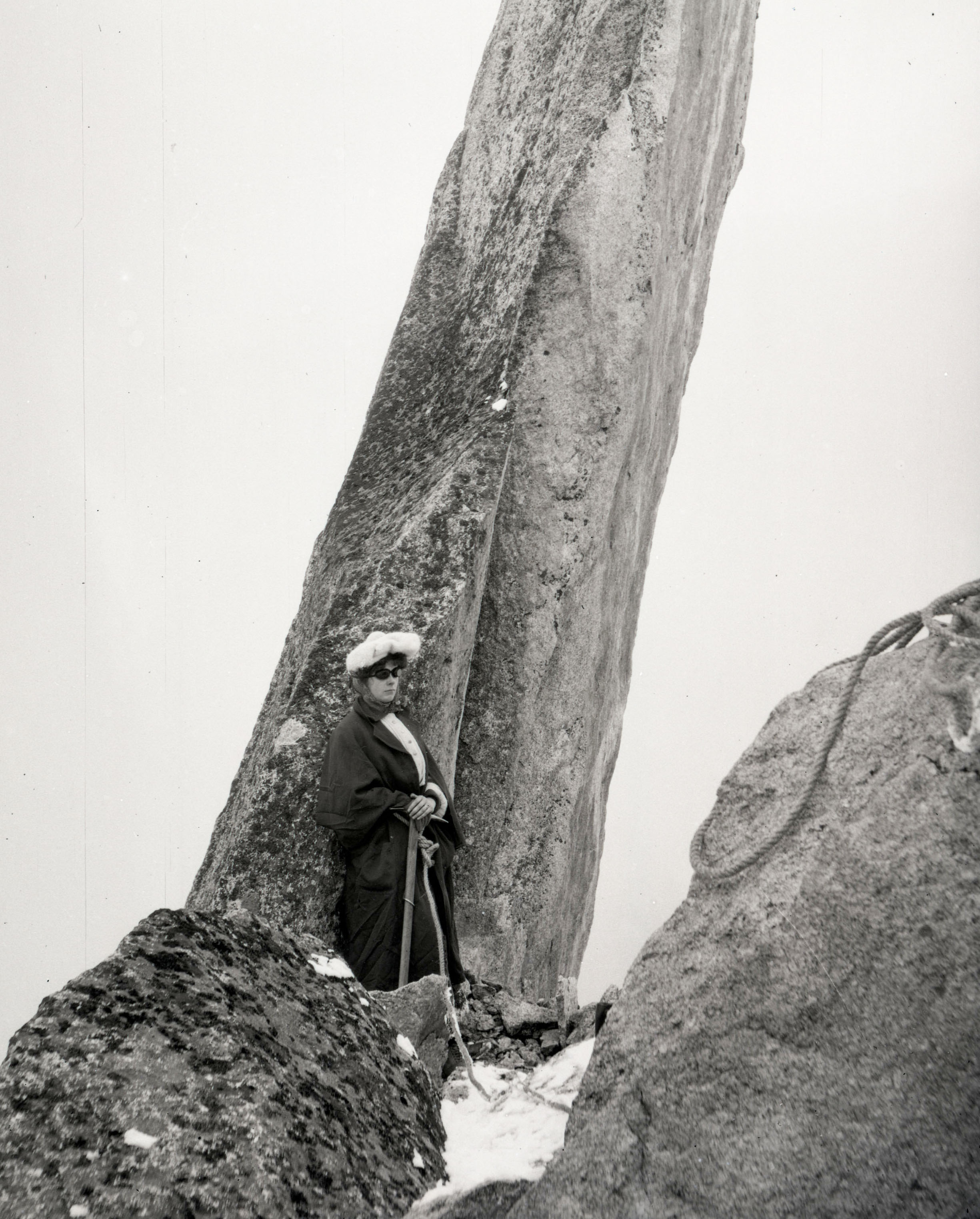
Camps and Huts
Huge camps for gatherings with the Alpine Club of Canada, tents and lean-tos in the woods, Swiss Alpine Club huts - many of which are still in use today.
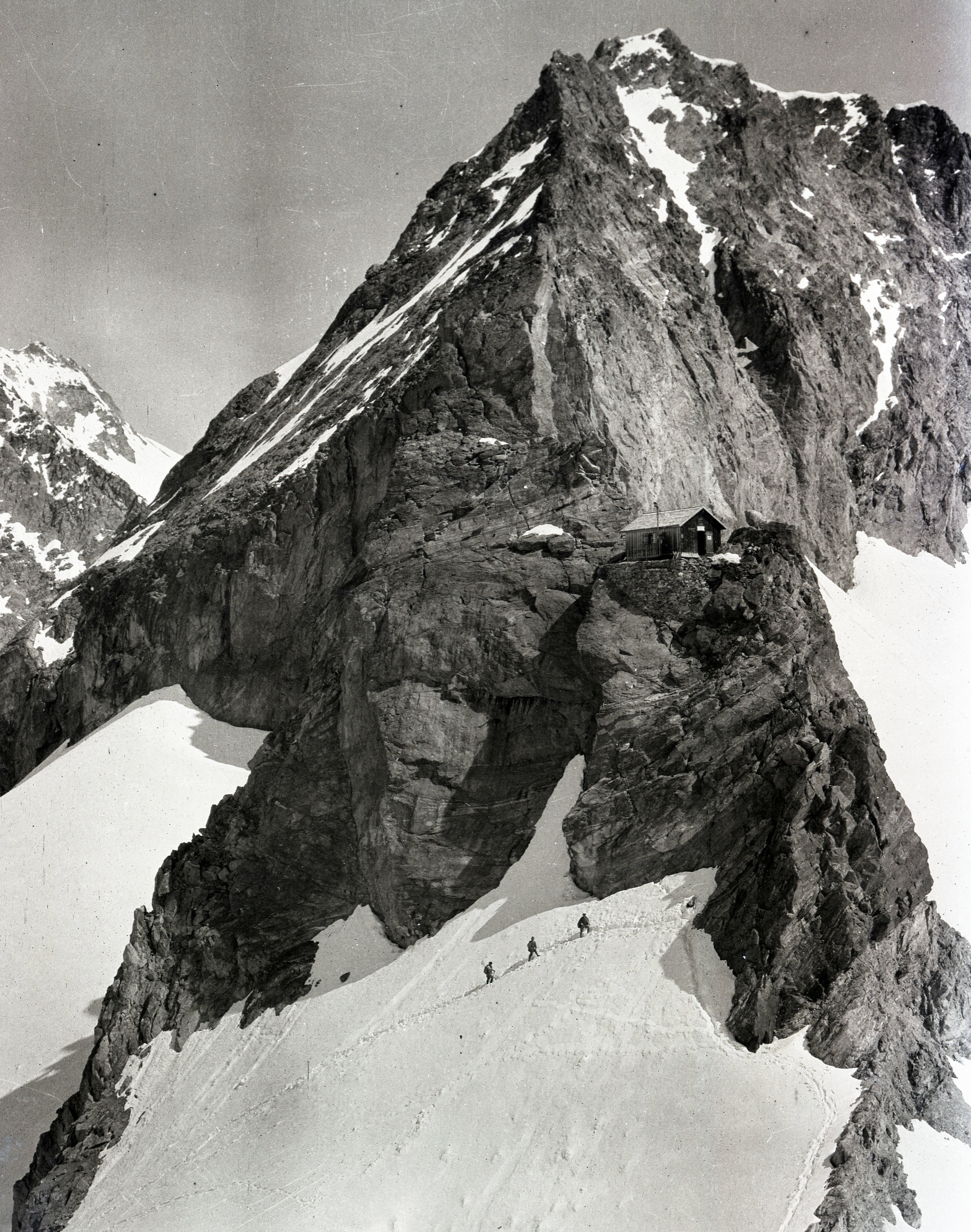
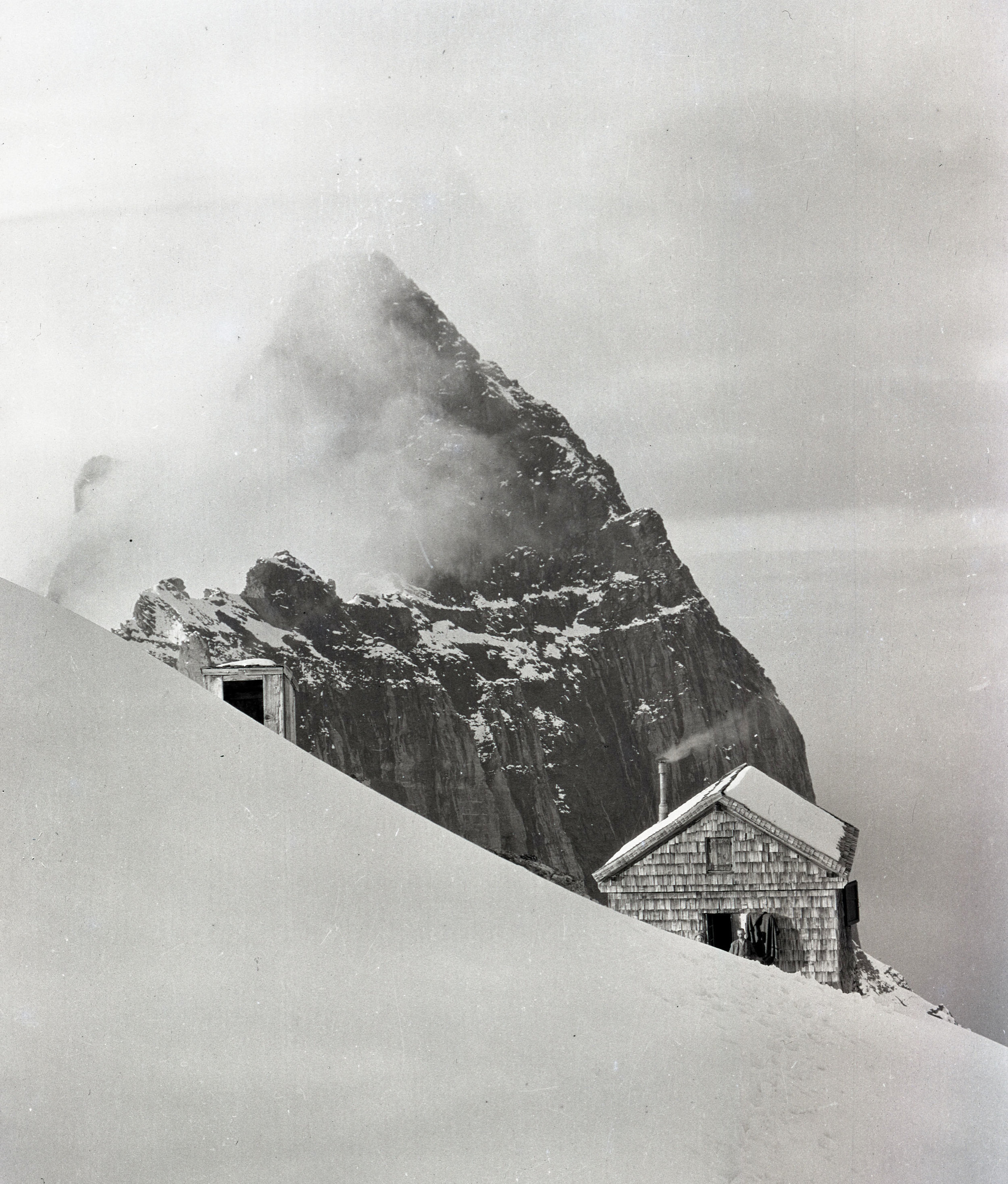
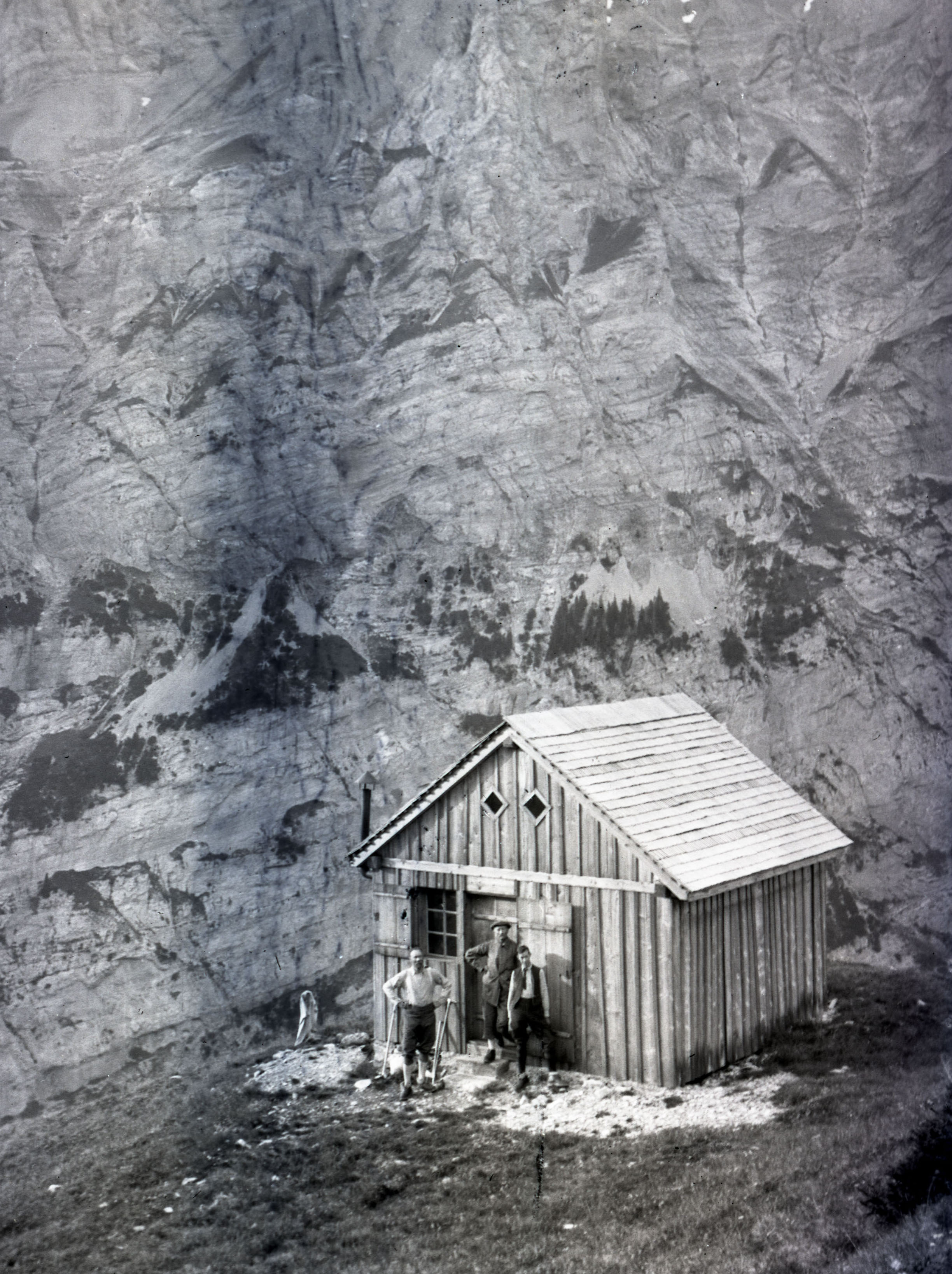
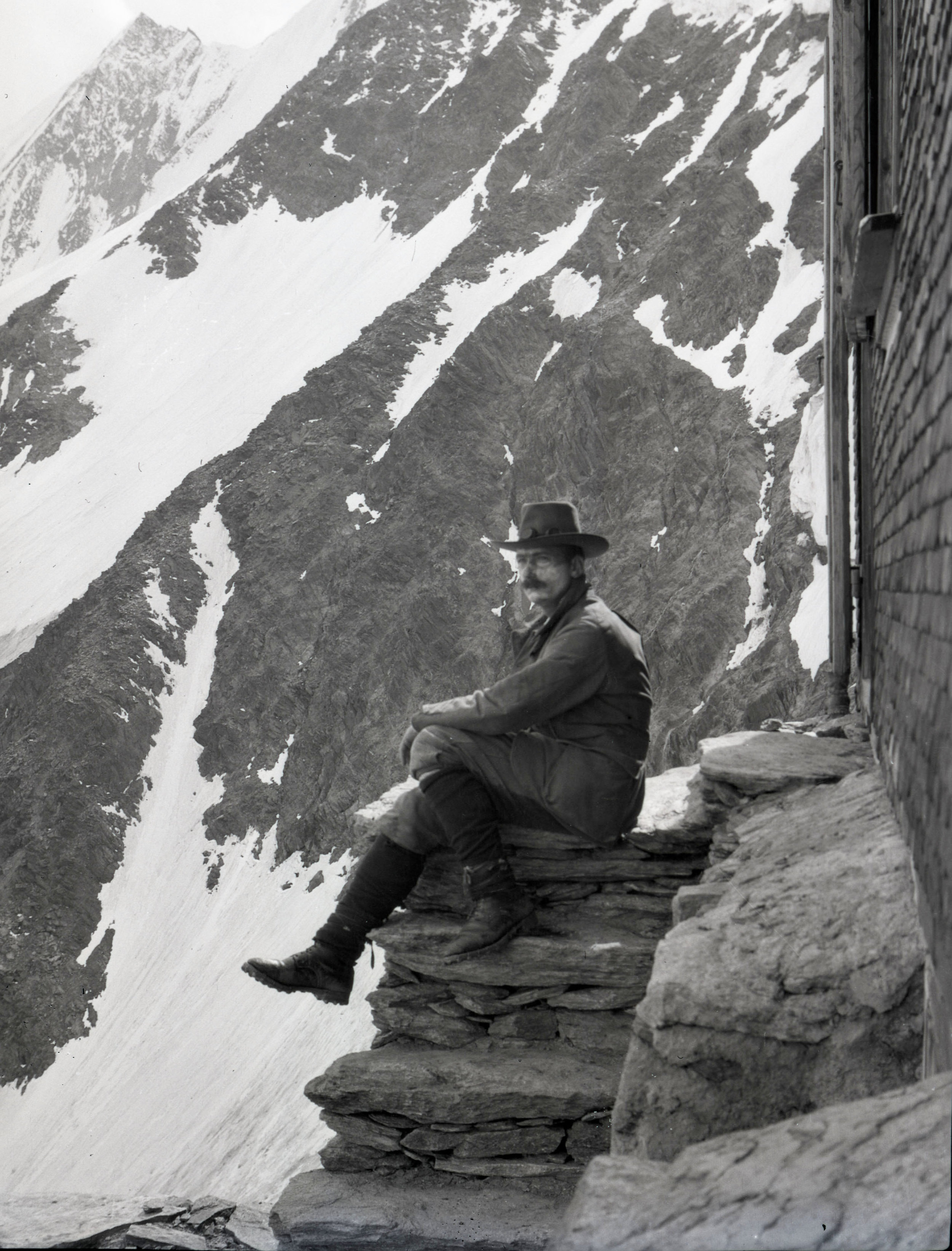


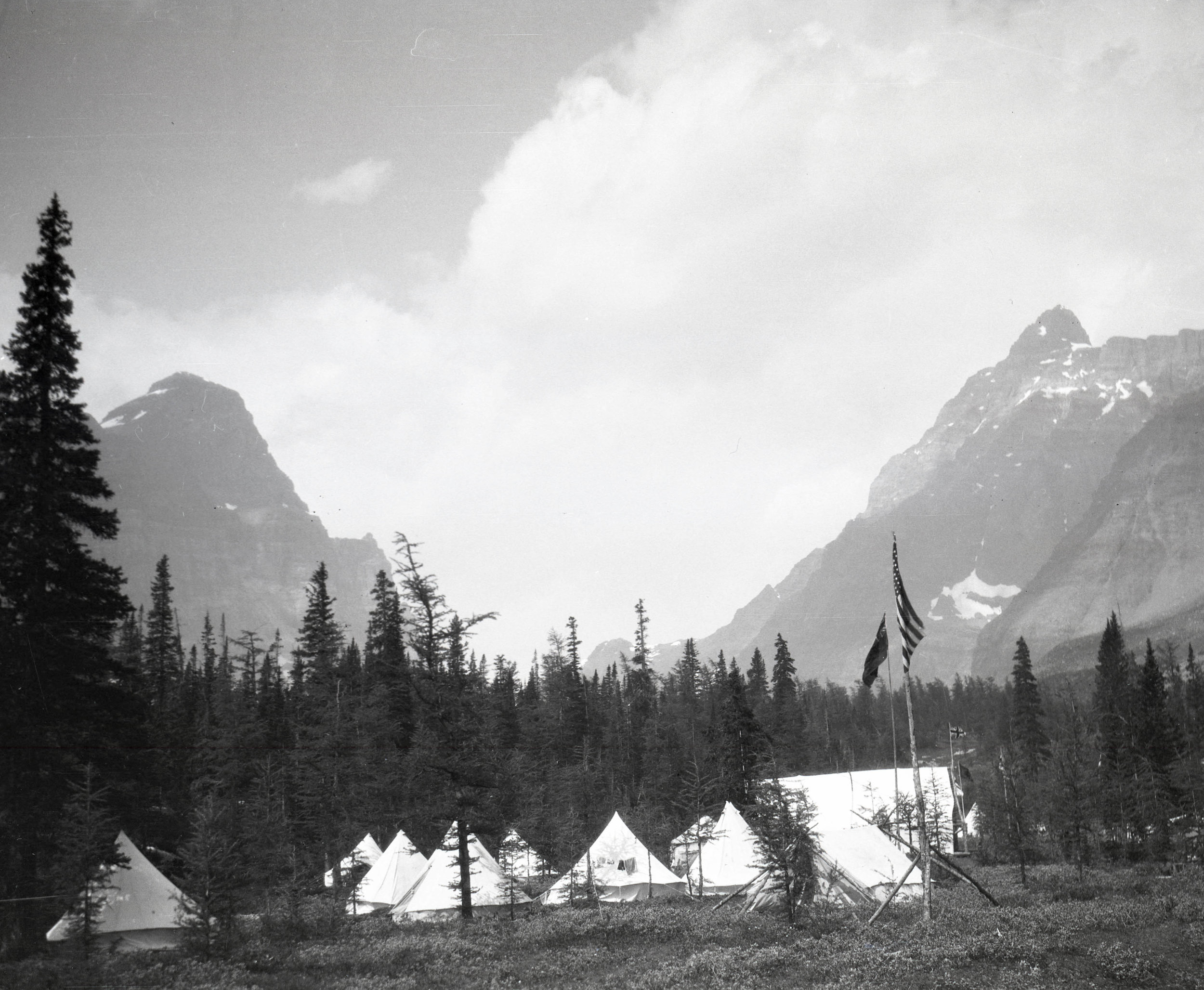
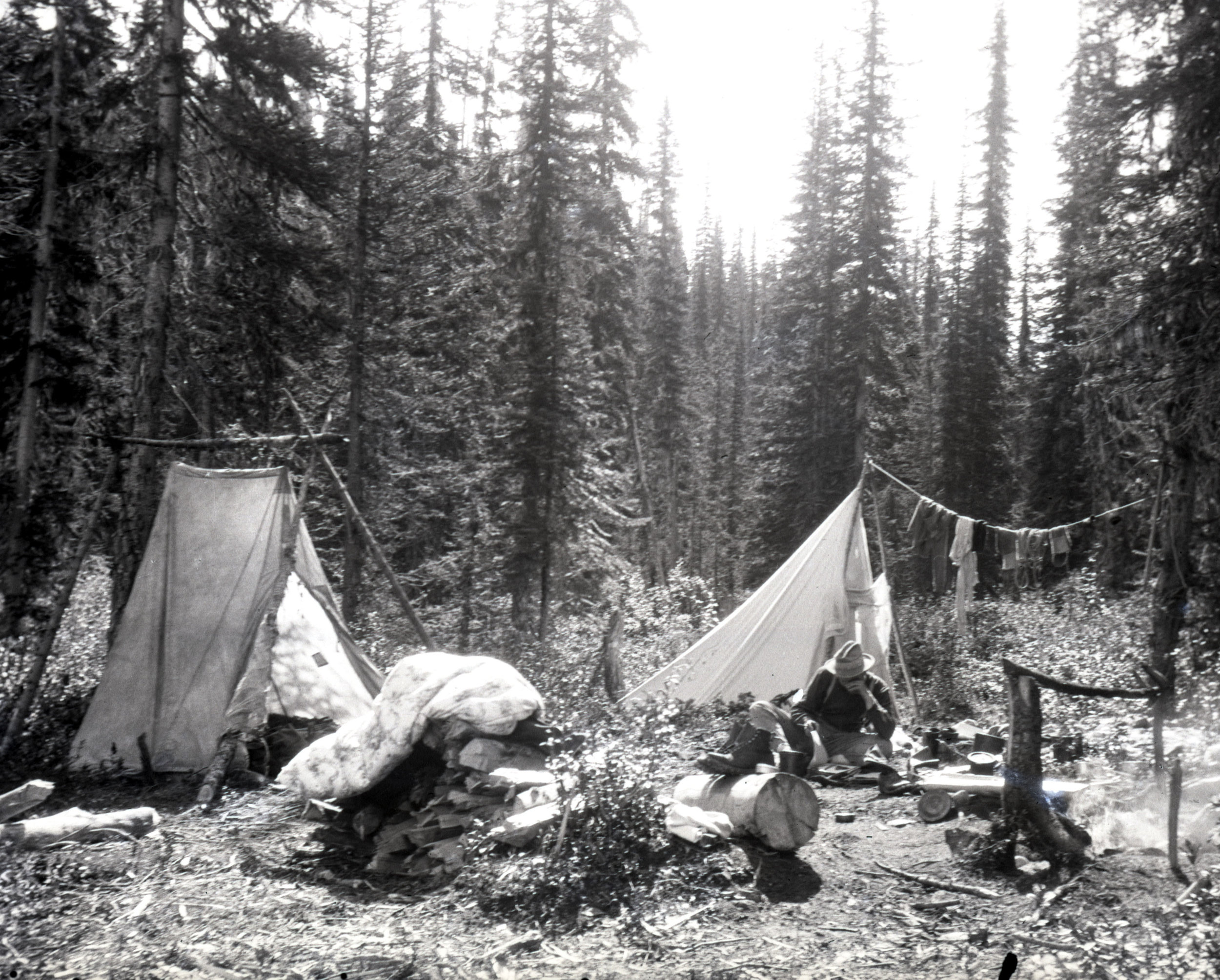
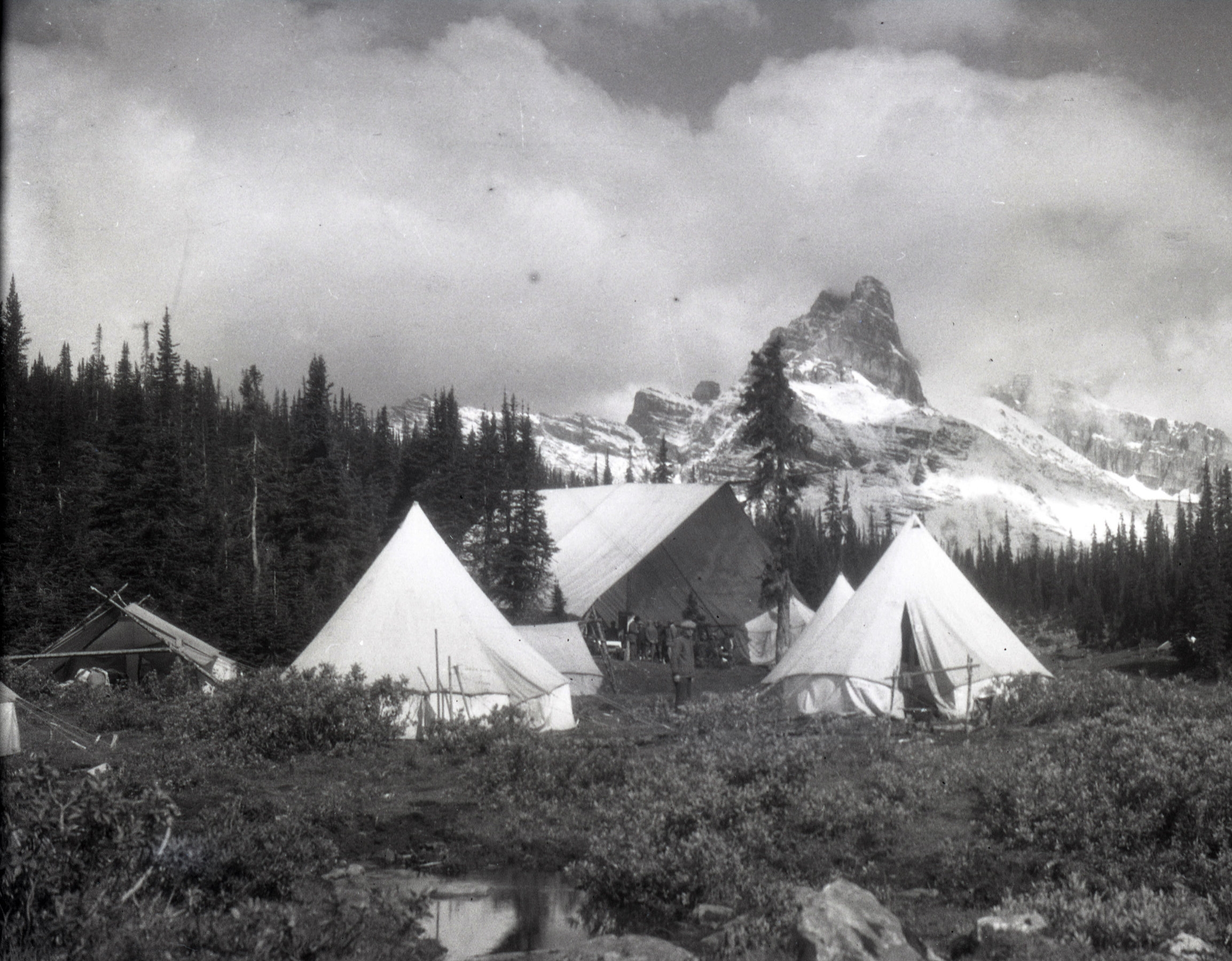
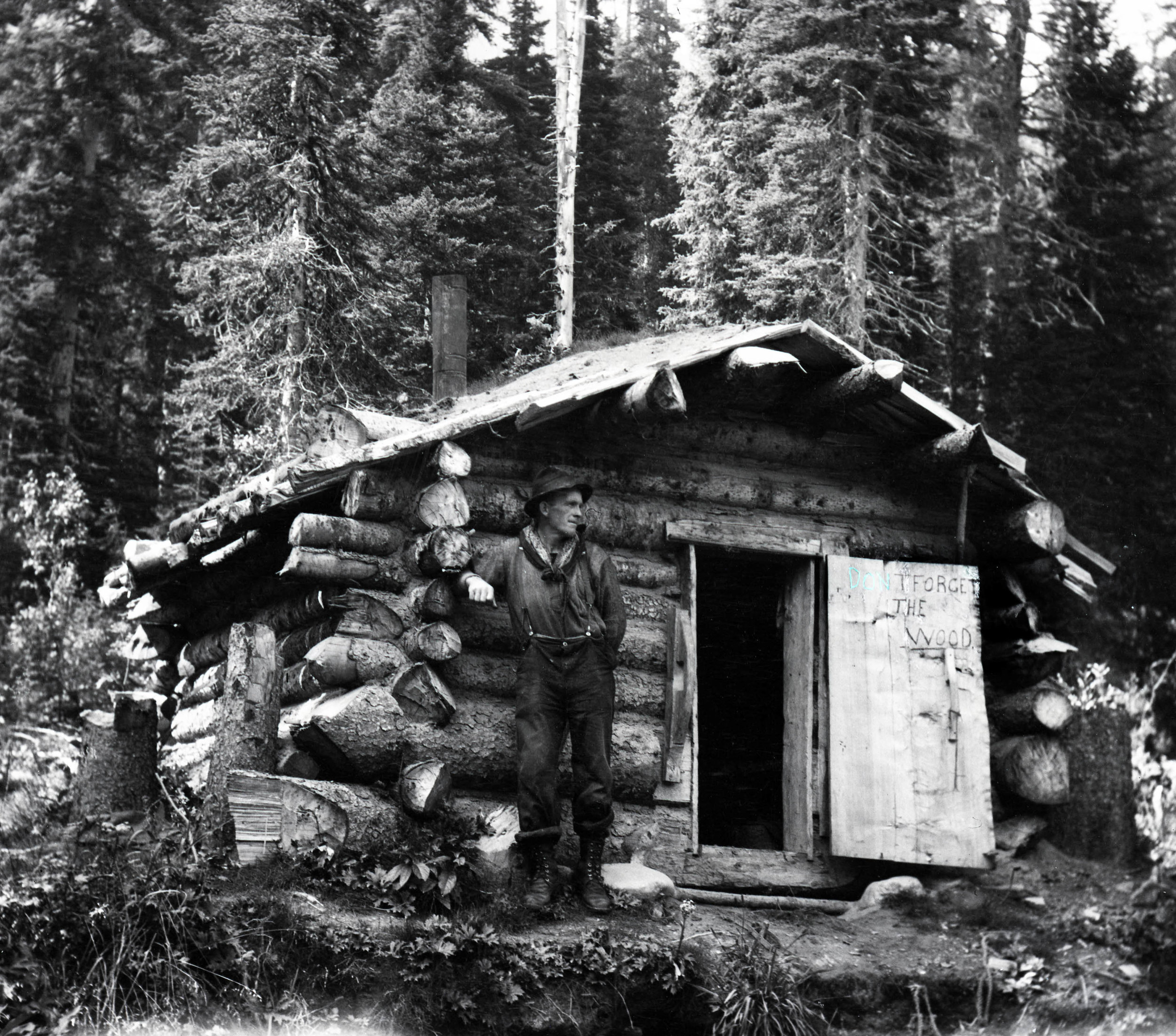
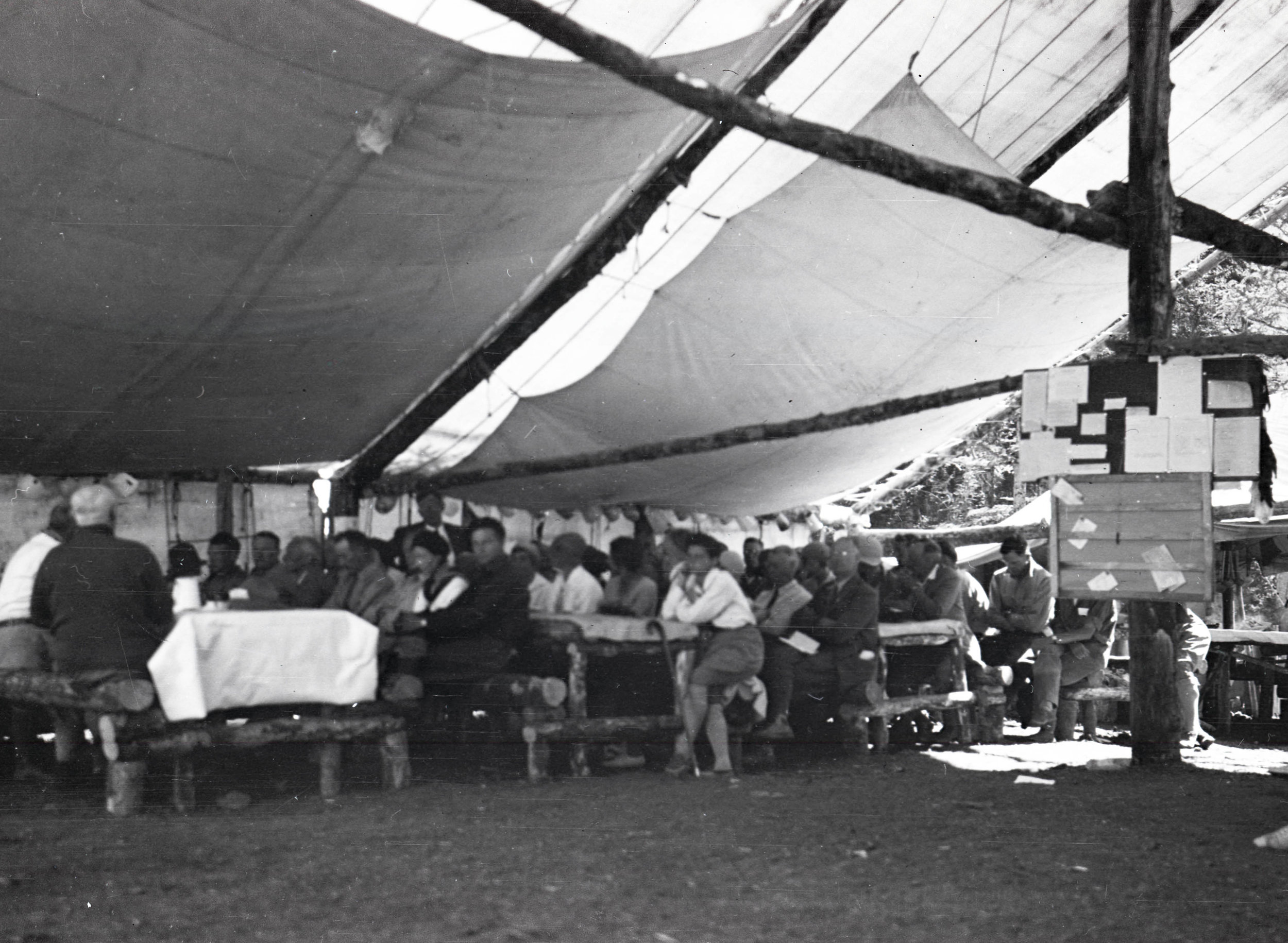


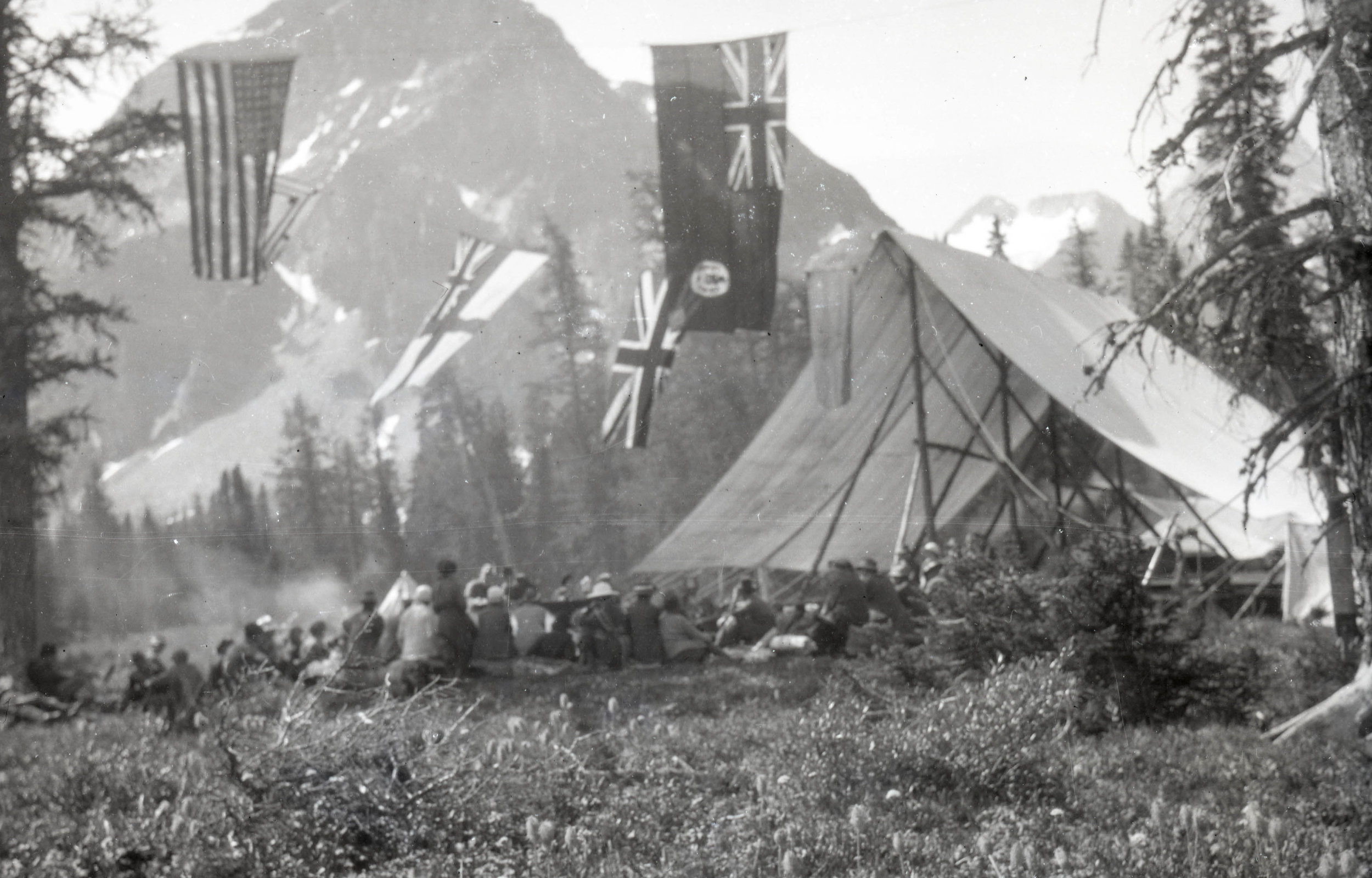
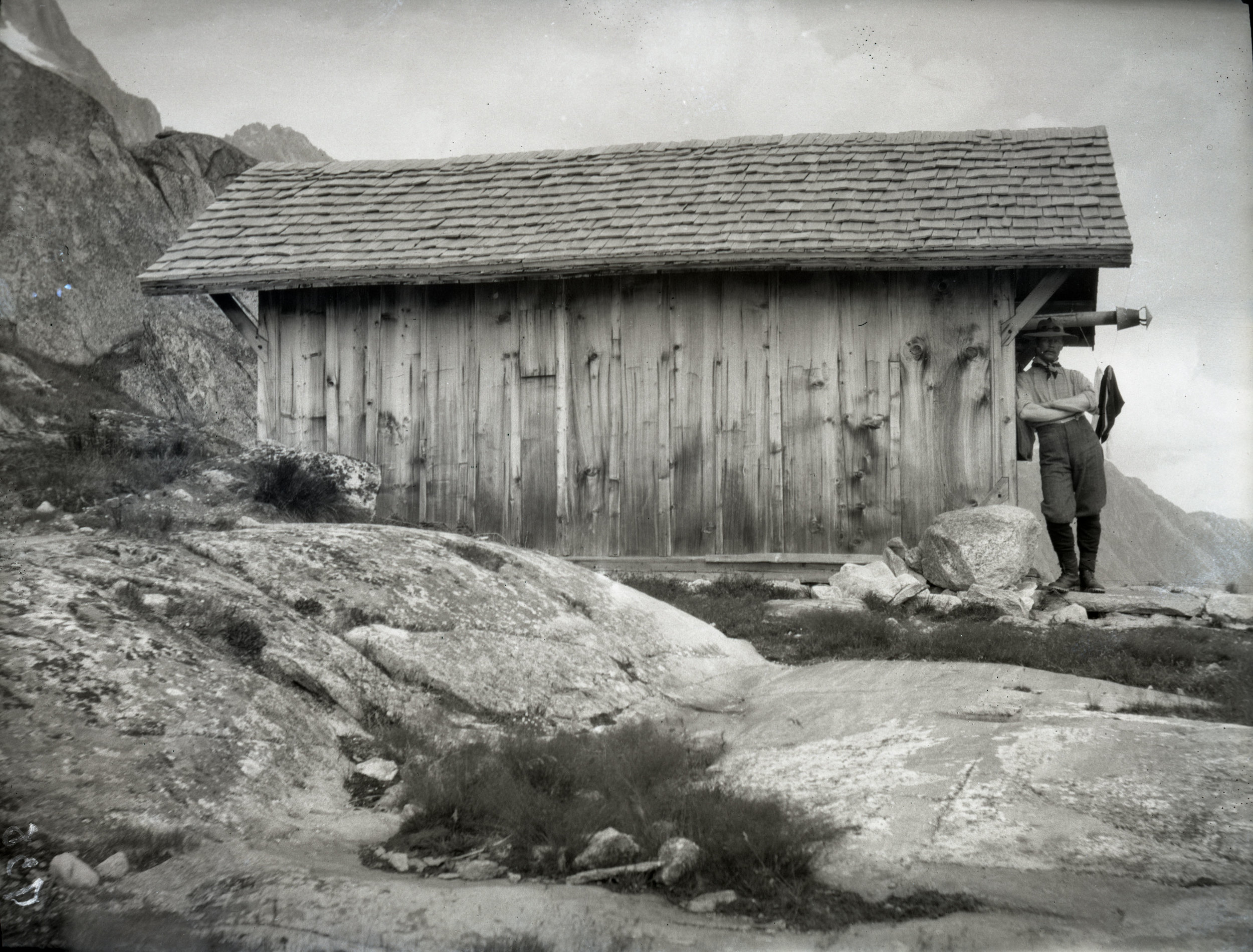
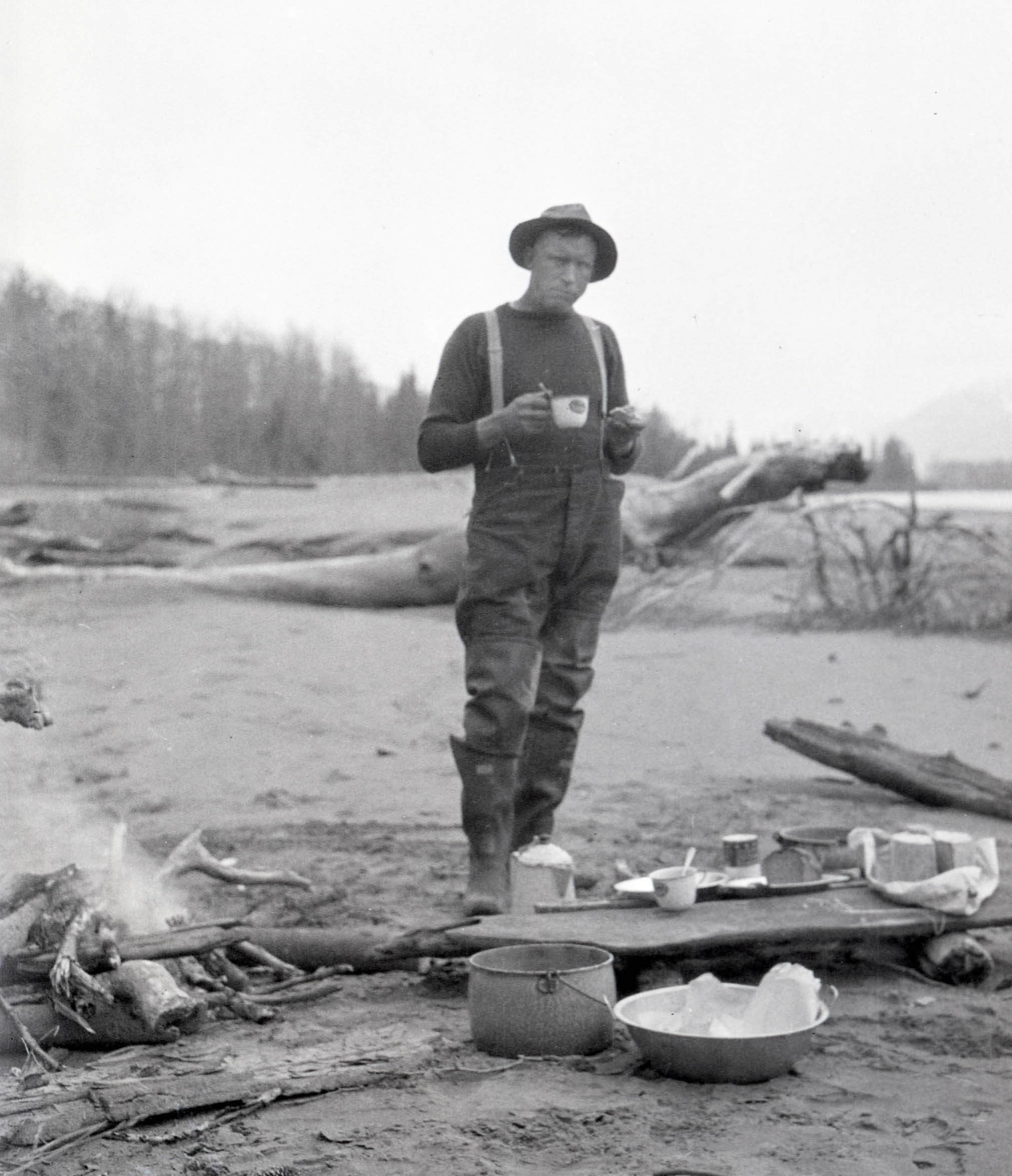
Travel
It was harder in those days to get to some of these remote locations. There were far fewer roads, almost no highways and air travel was still in its infancy. Trains, ships and horses were commonly used.
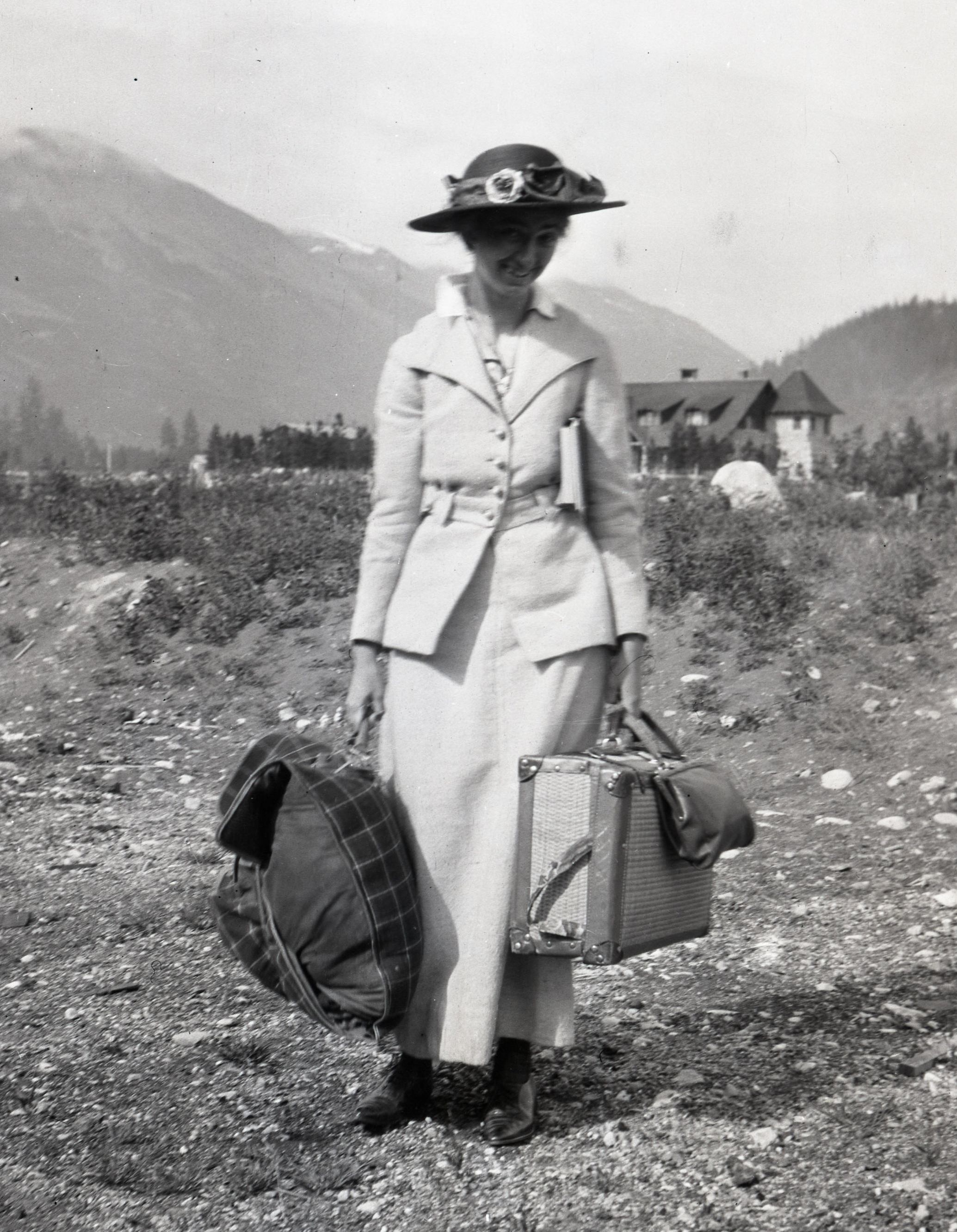
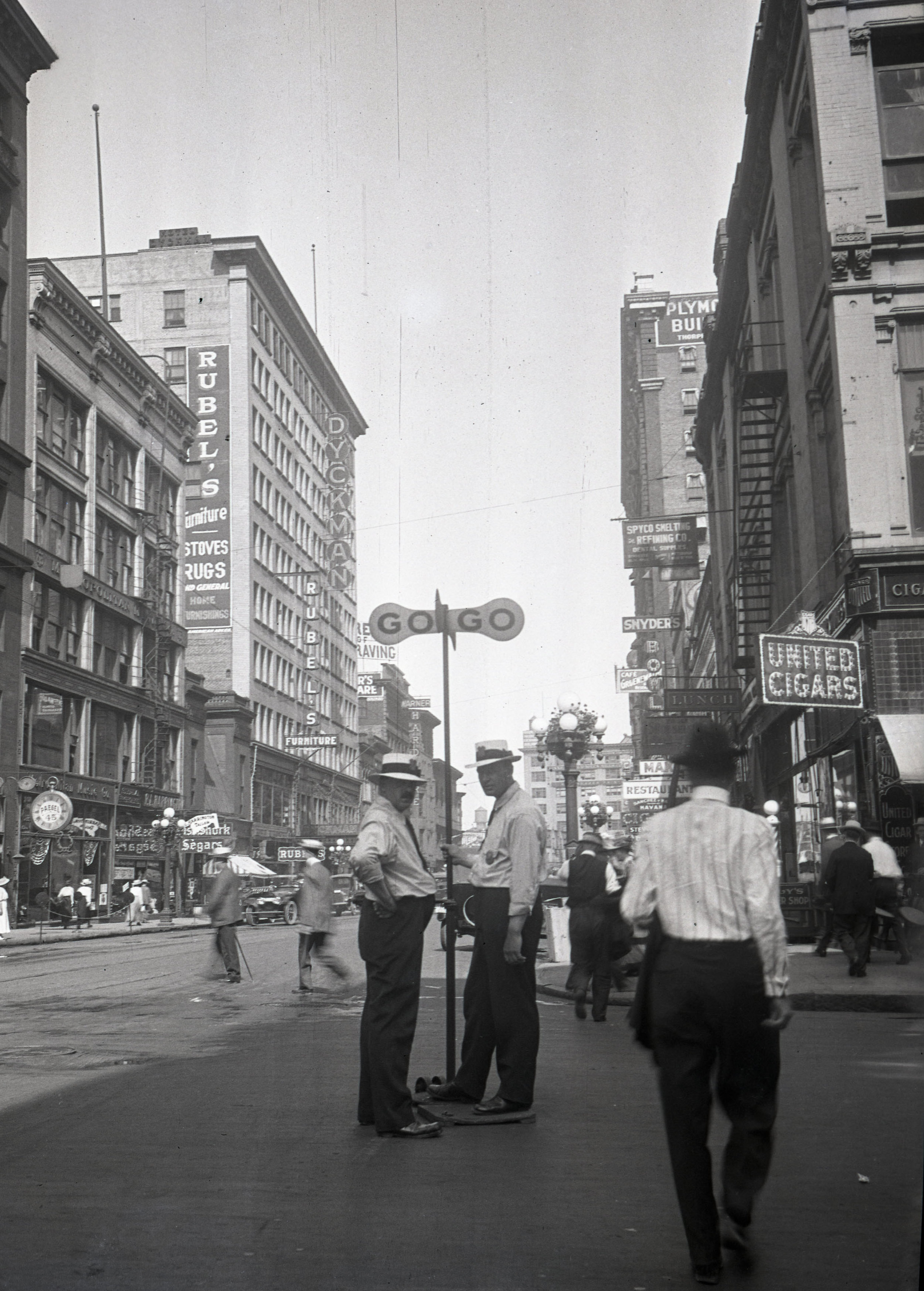
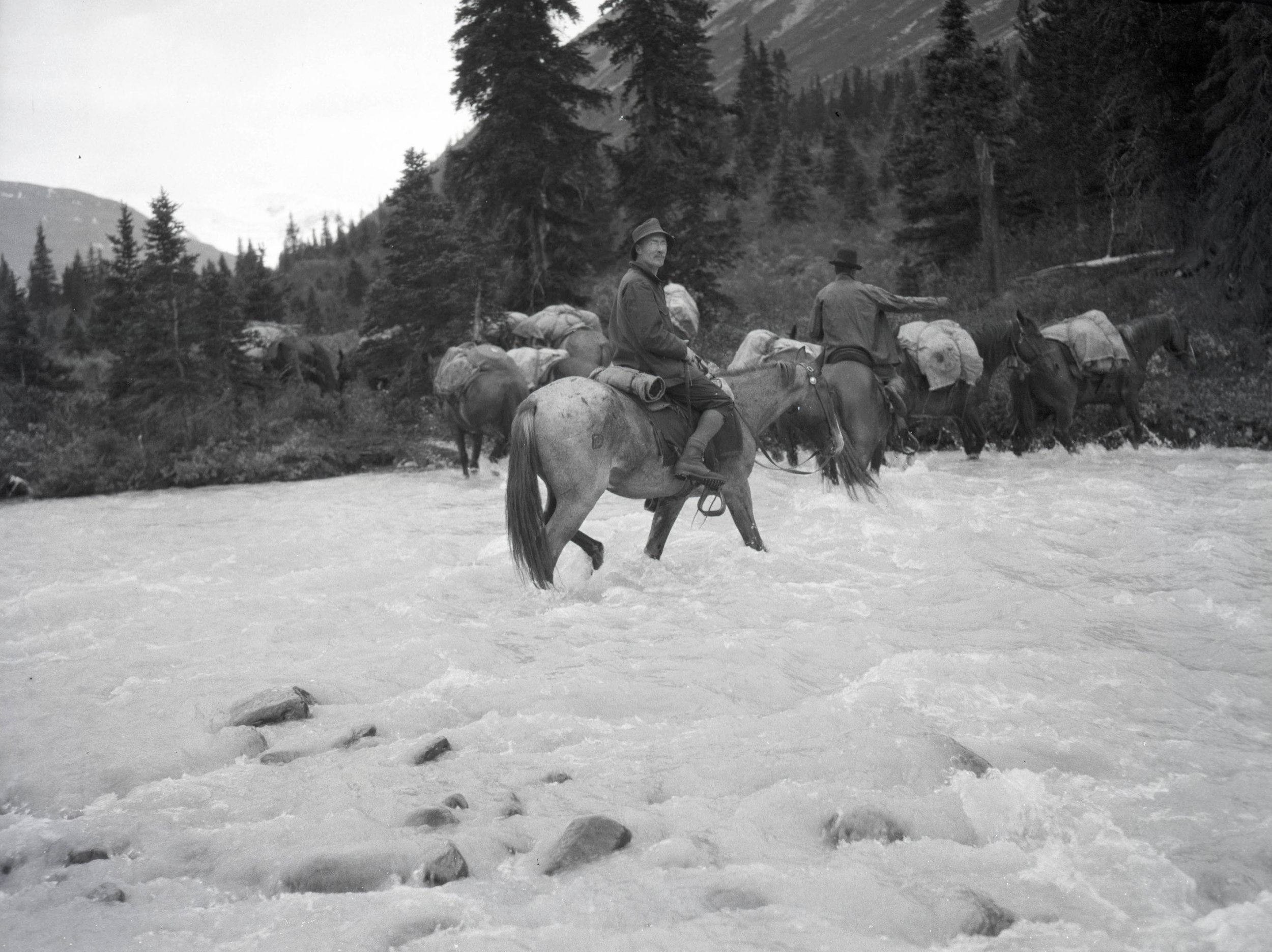

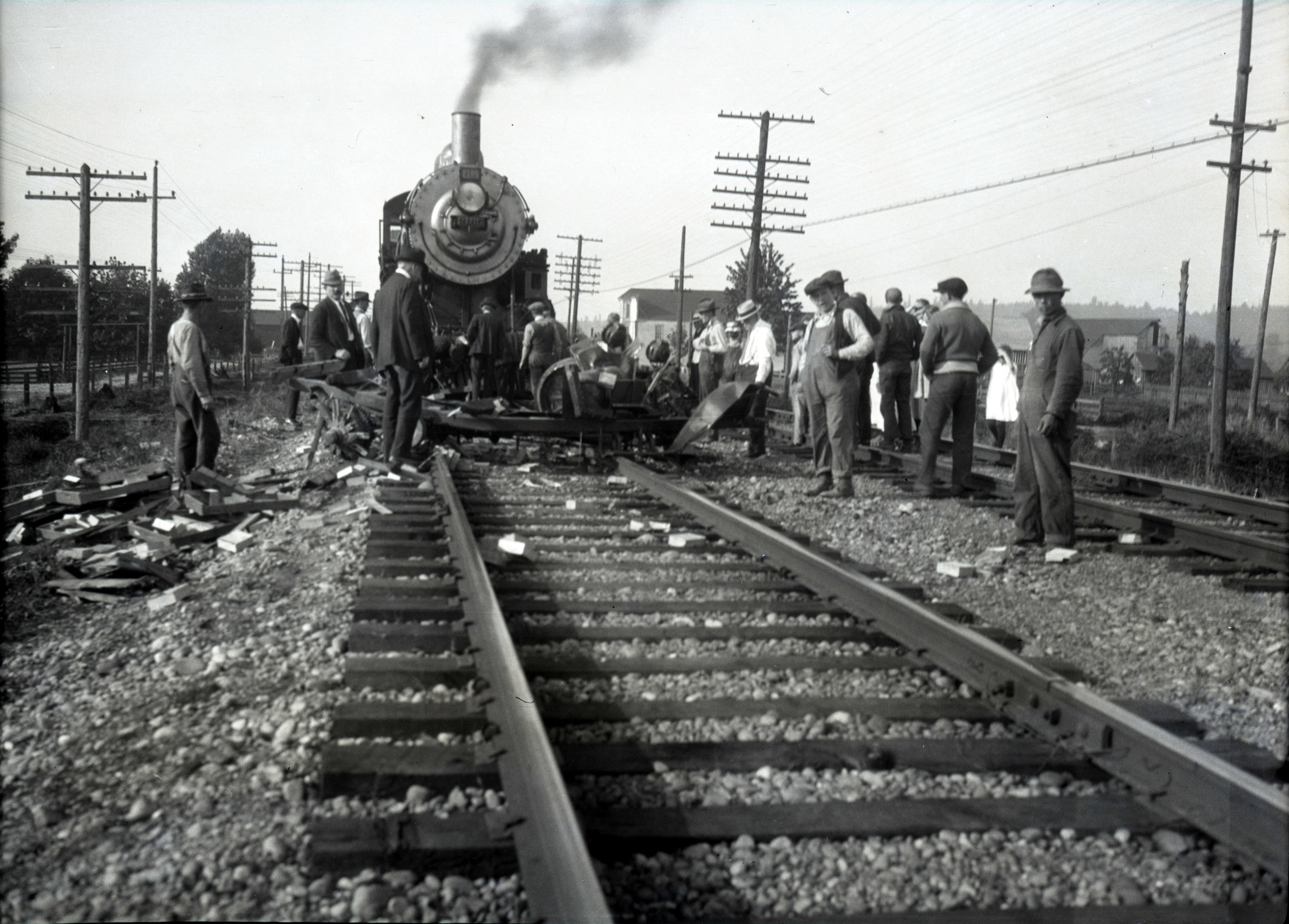
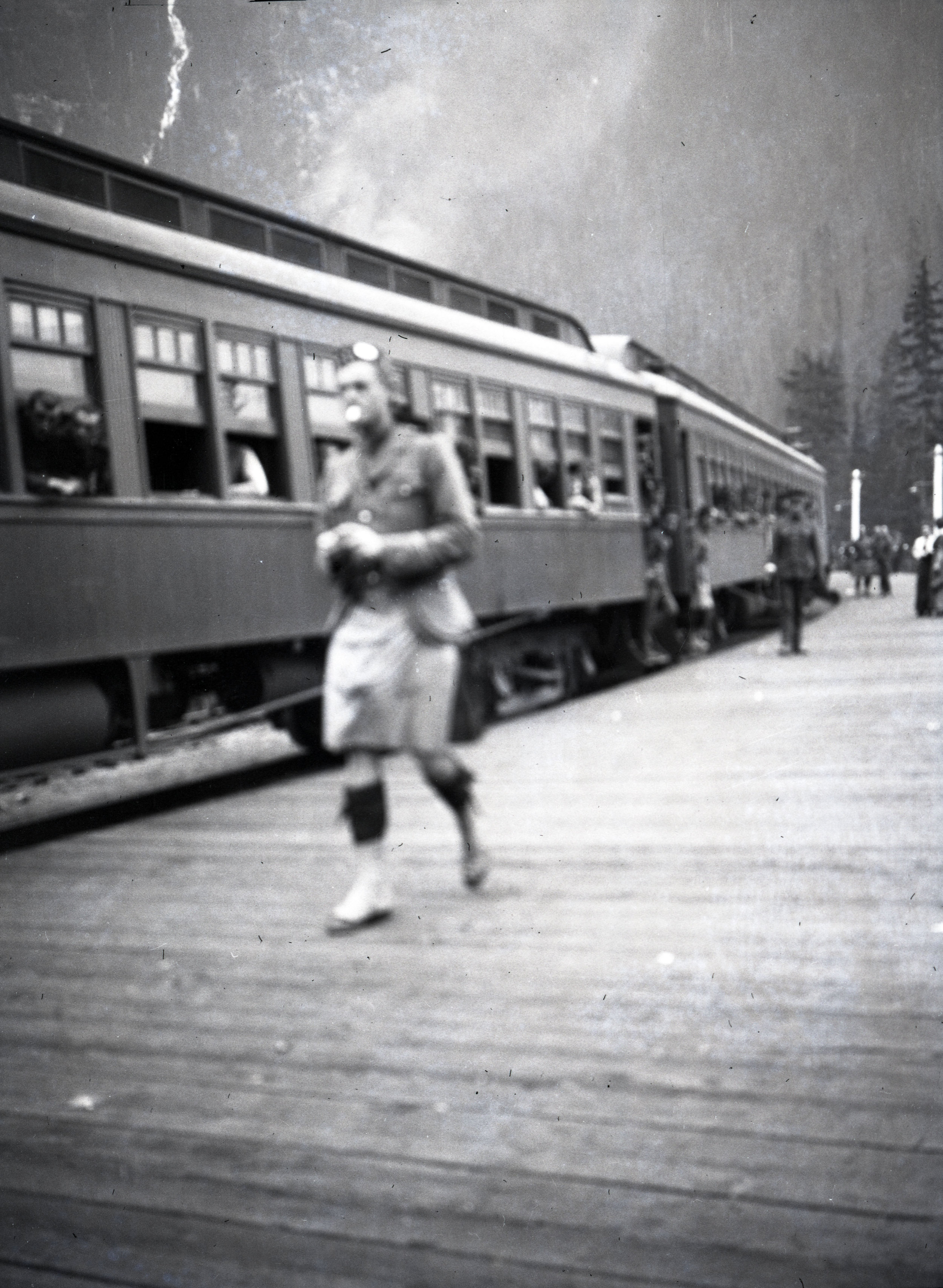

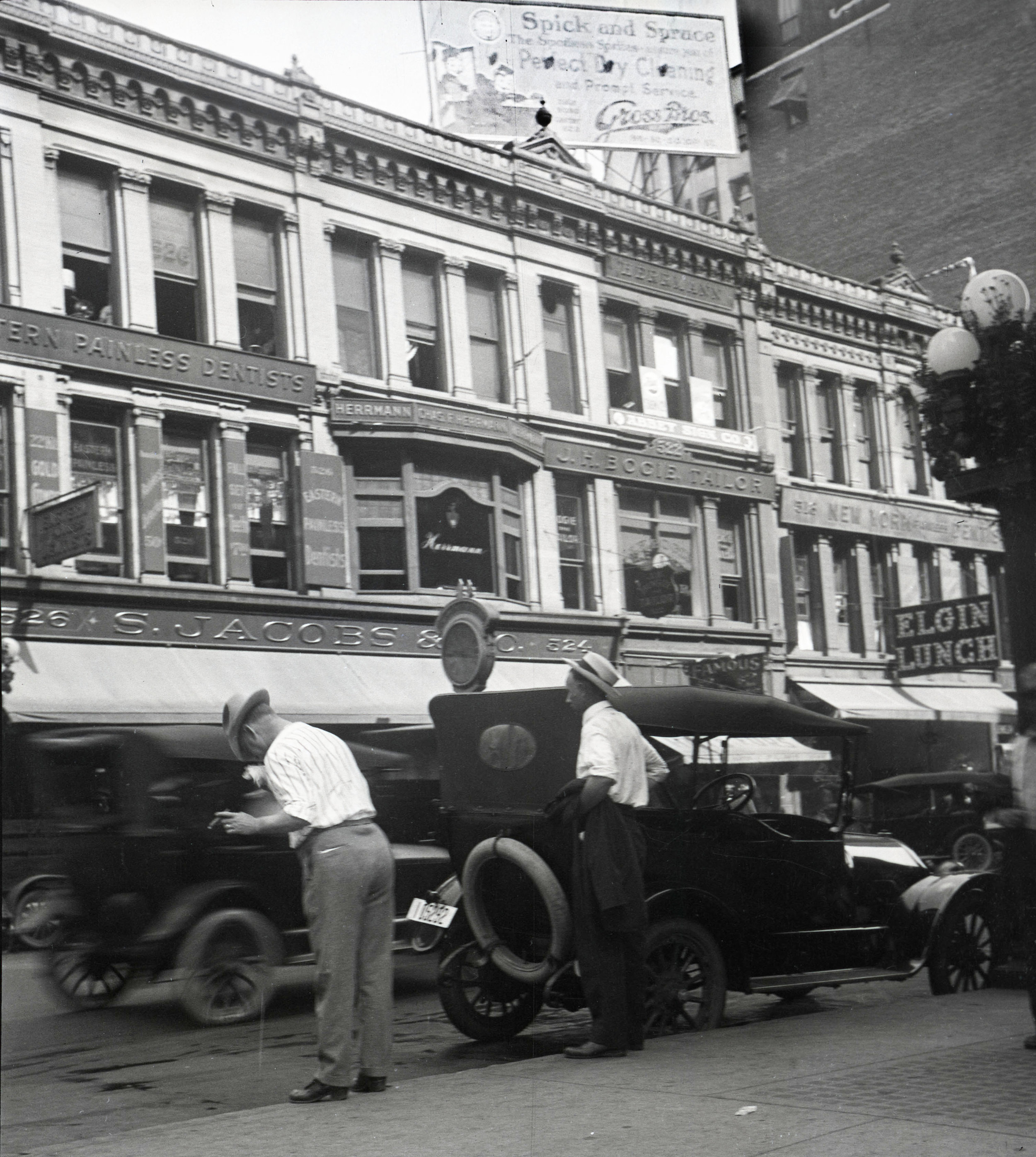
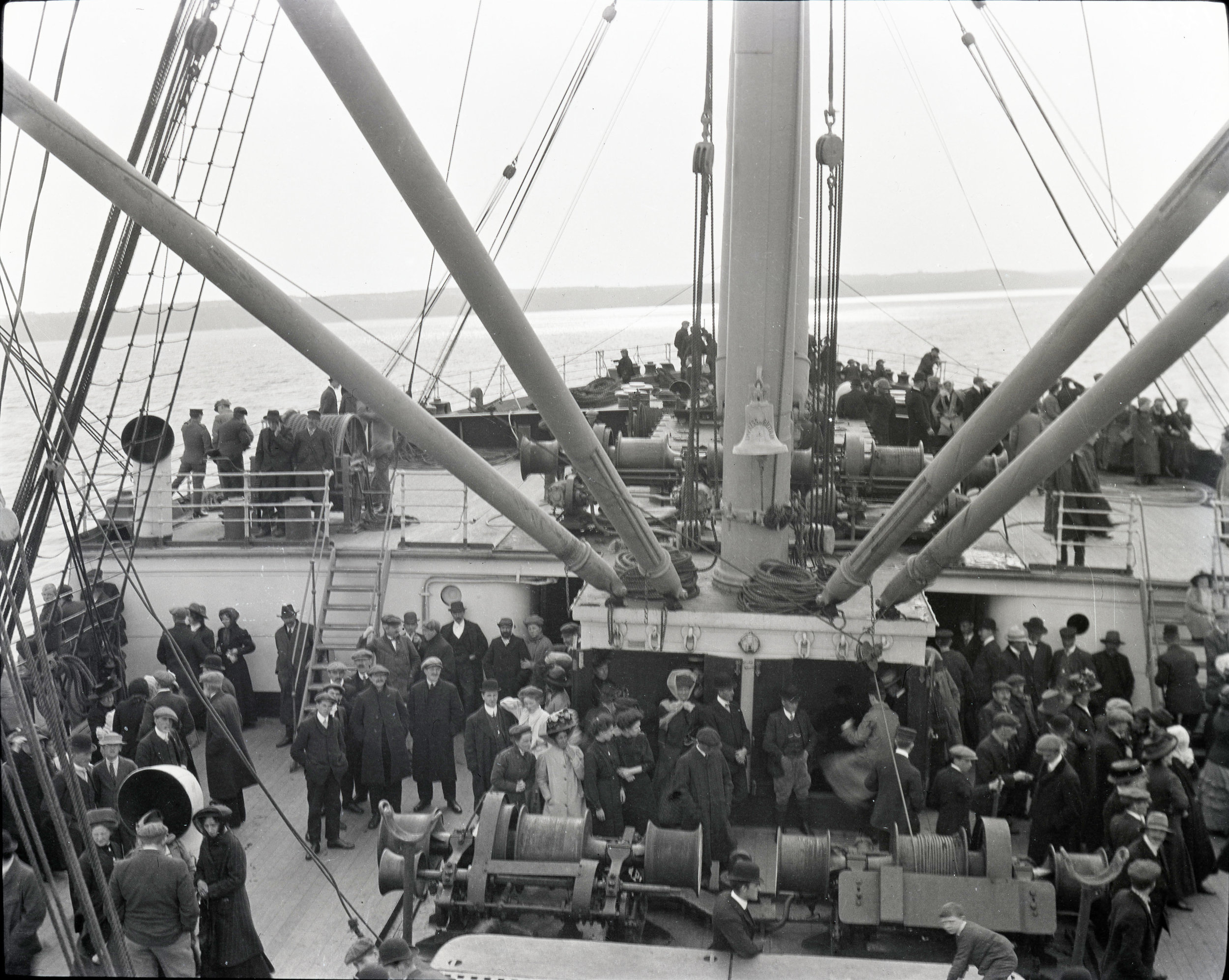
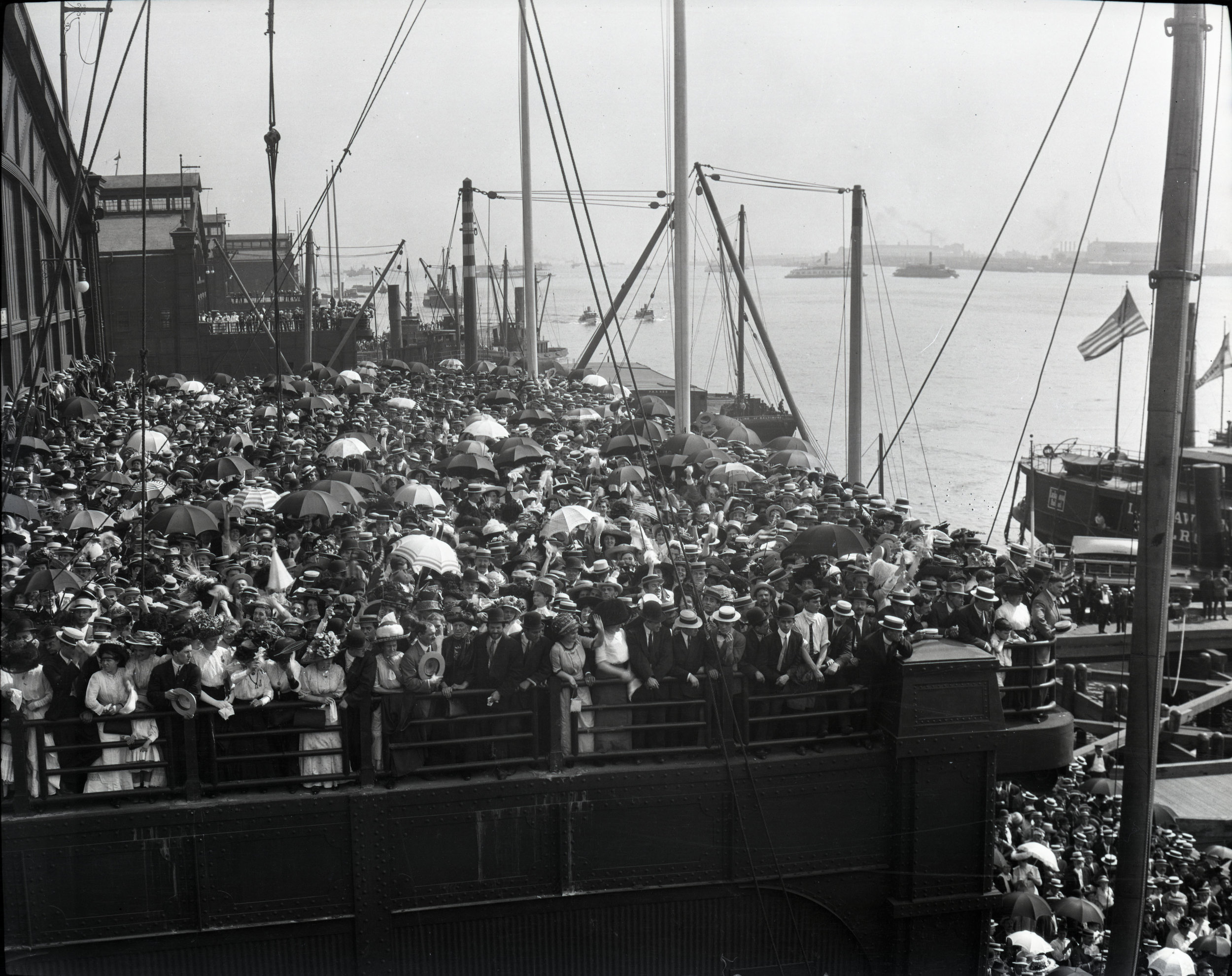
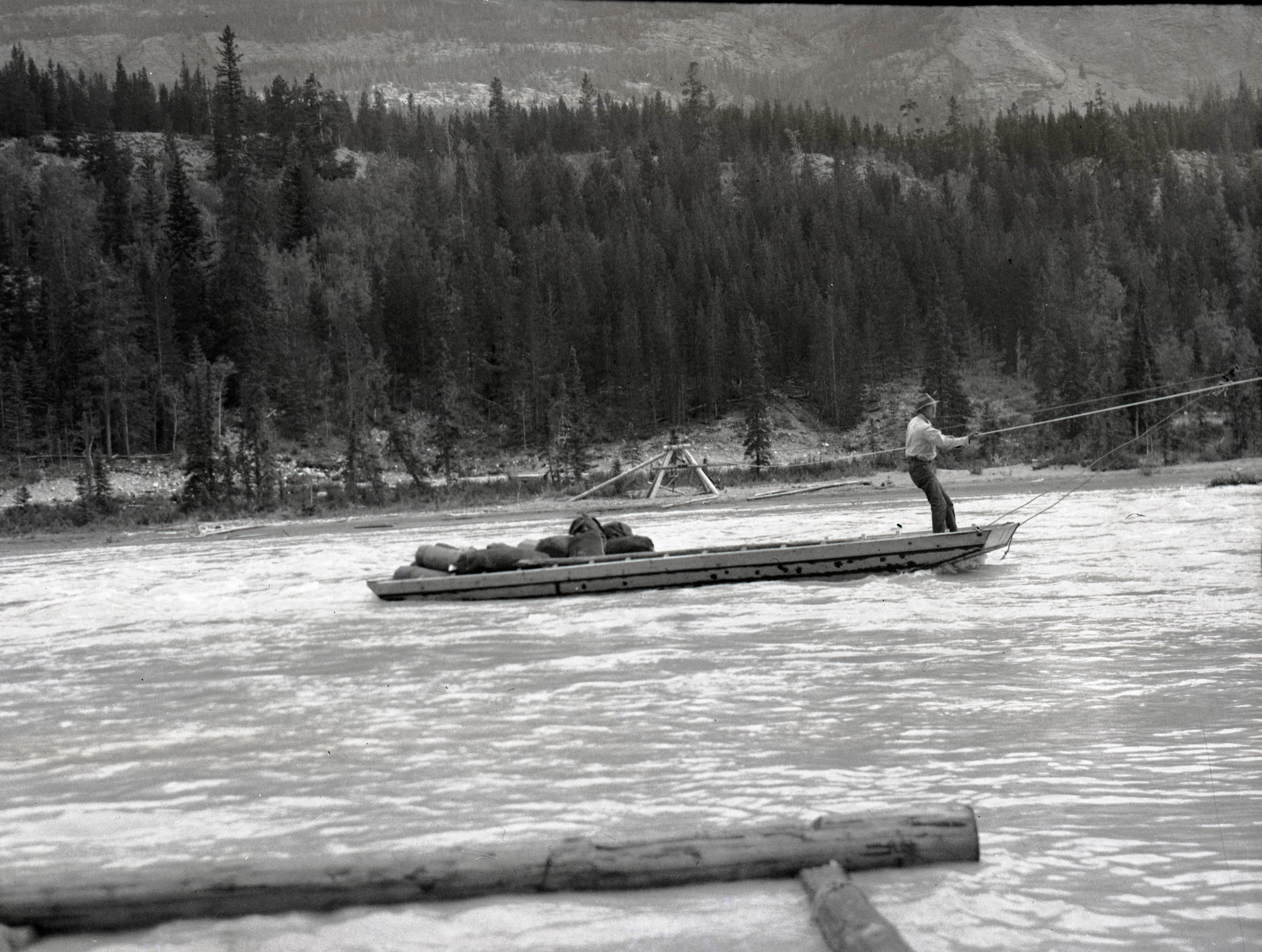
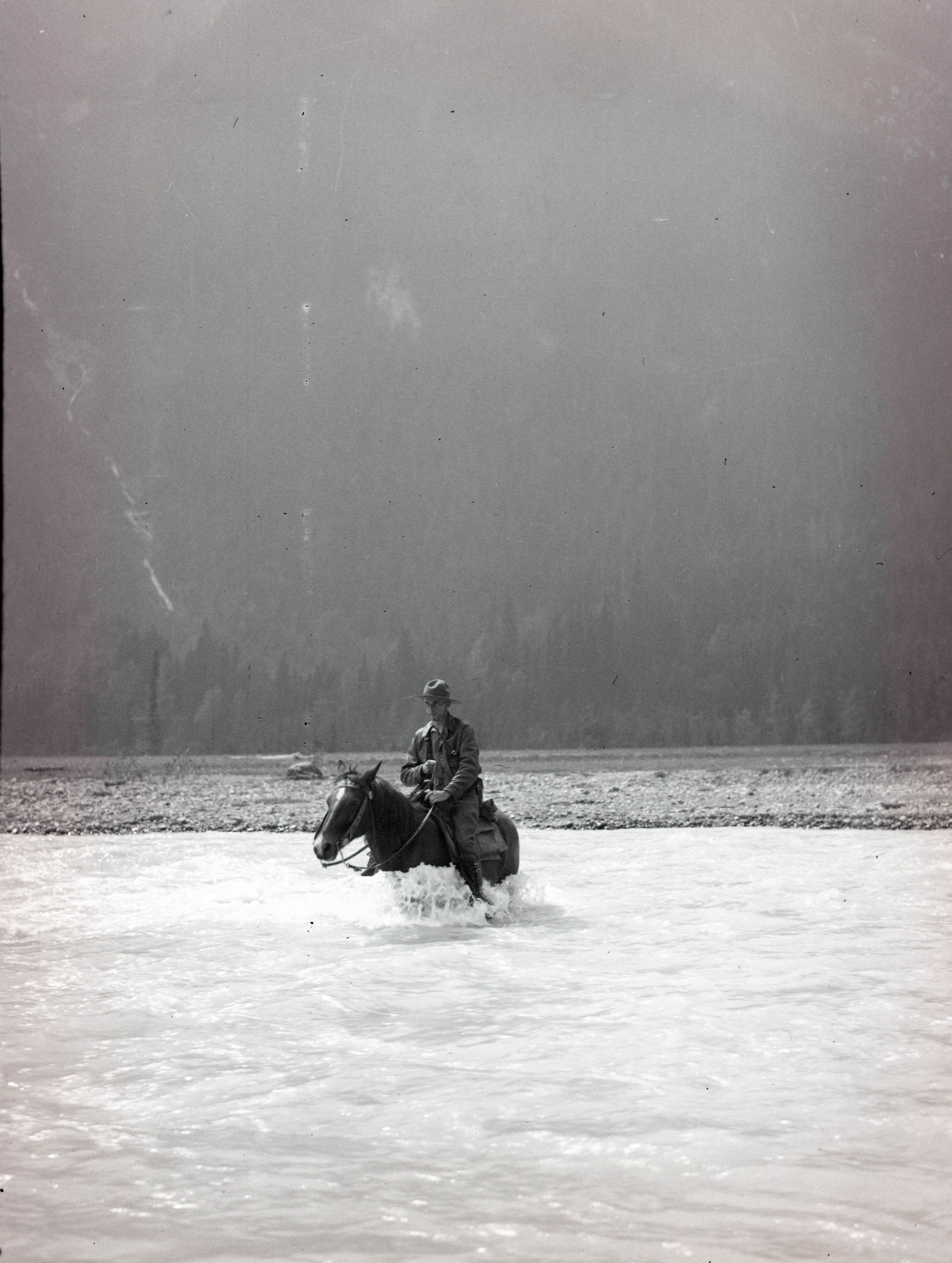
Life and Times
The world has changed a lot since 1900 - these photos illustrate just a few of the differences.
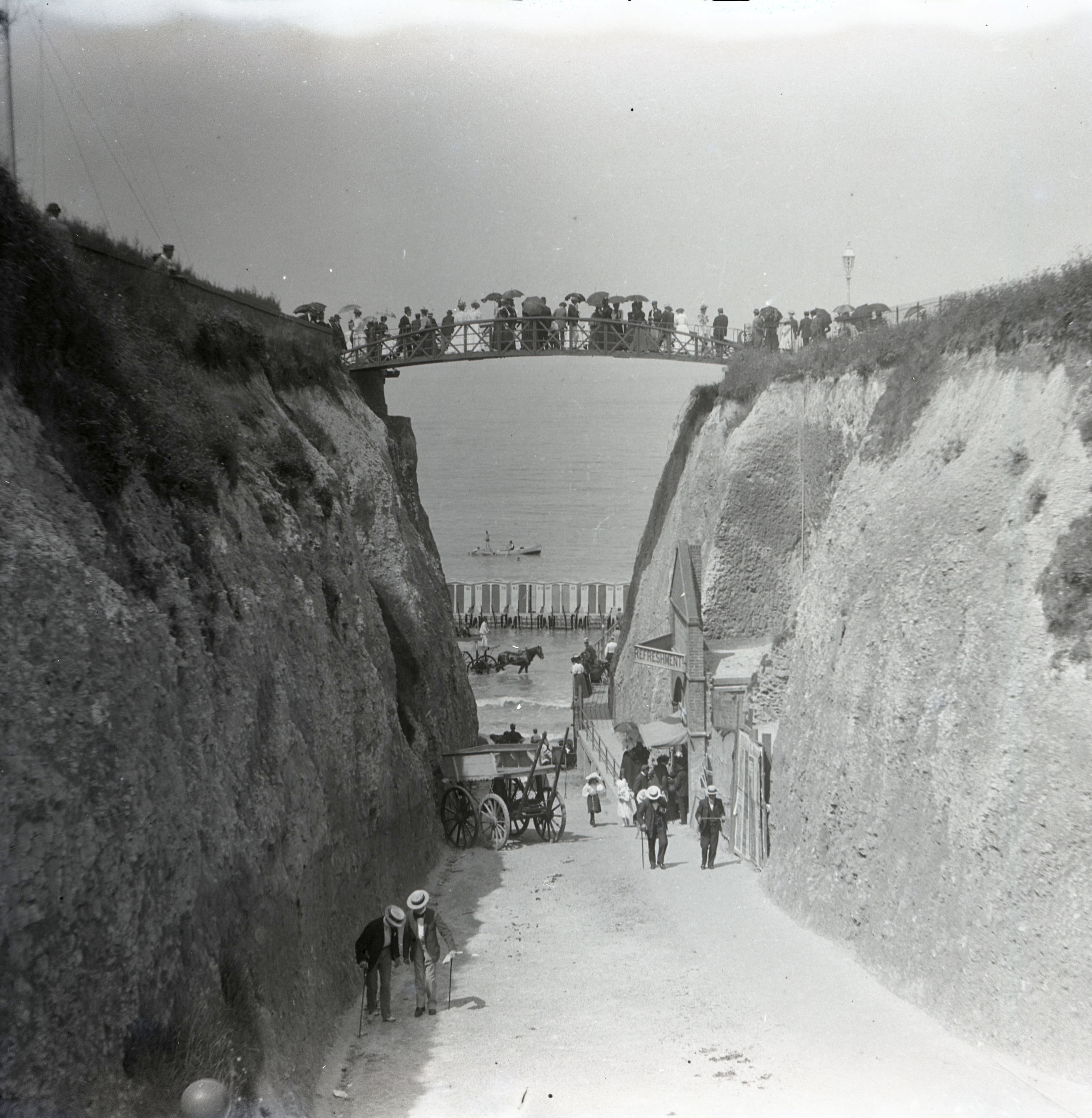
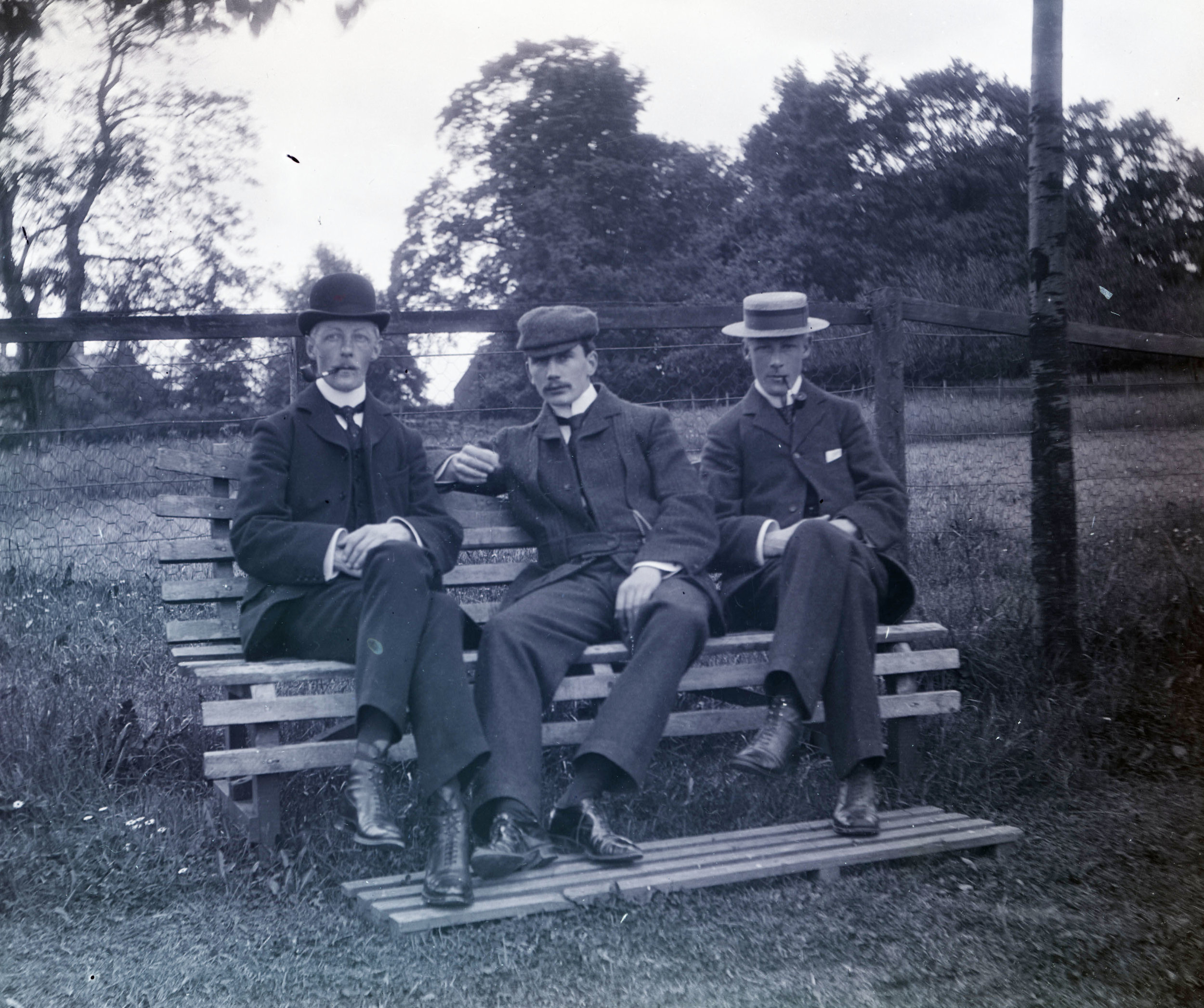
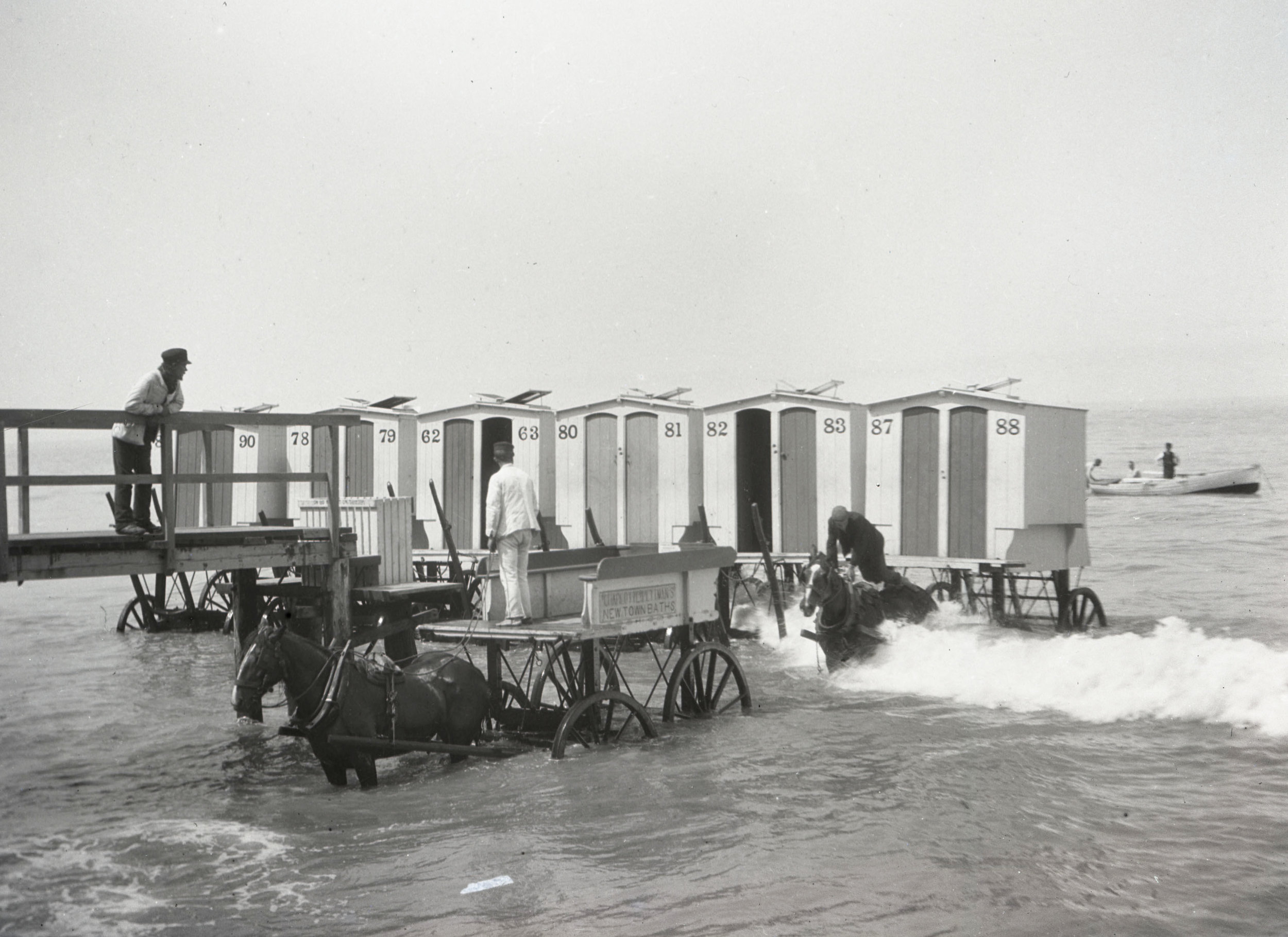
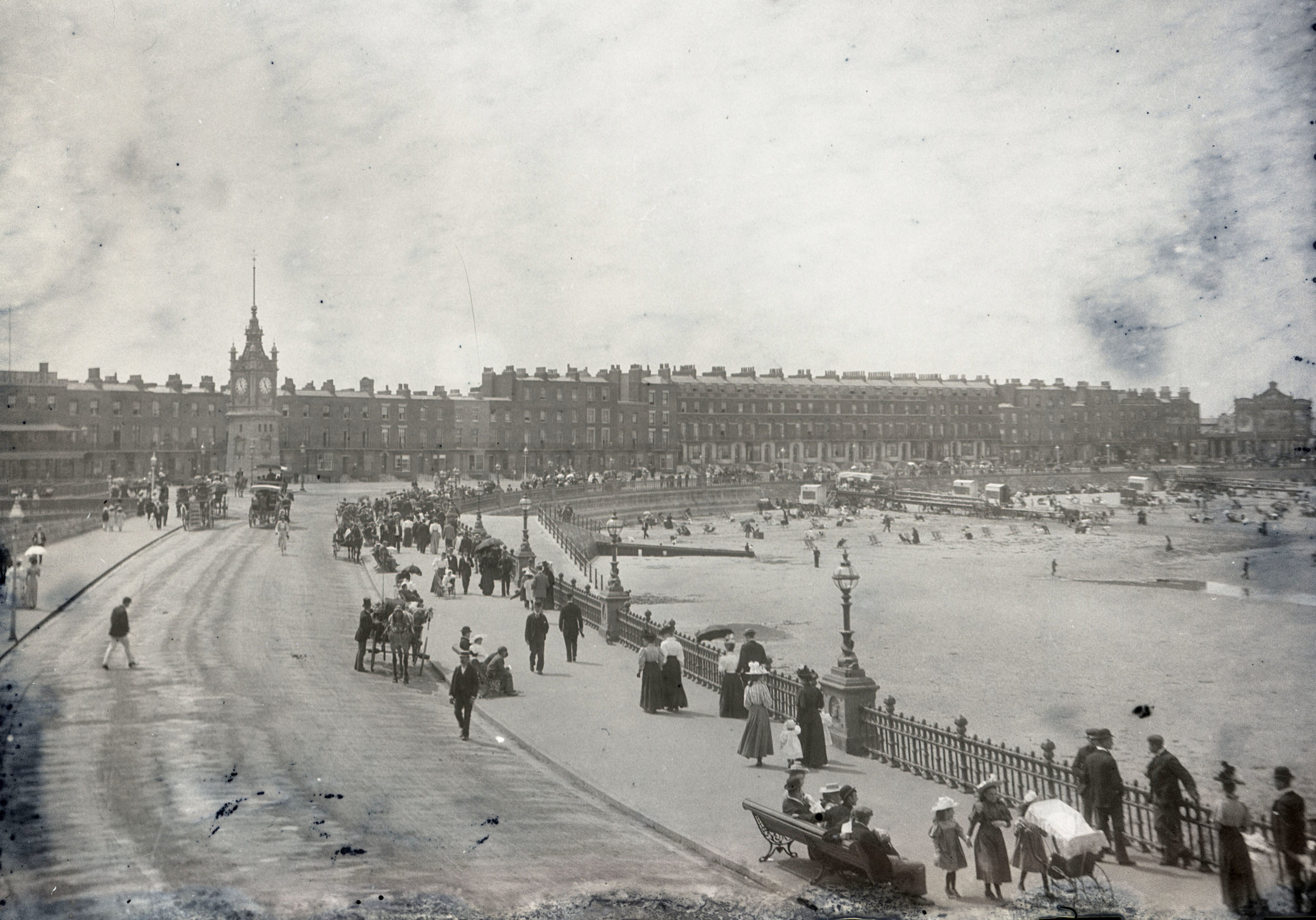
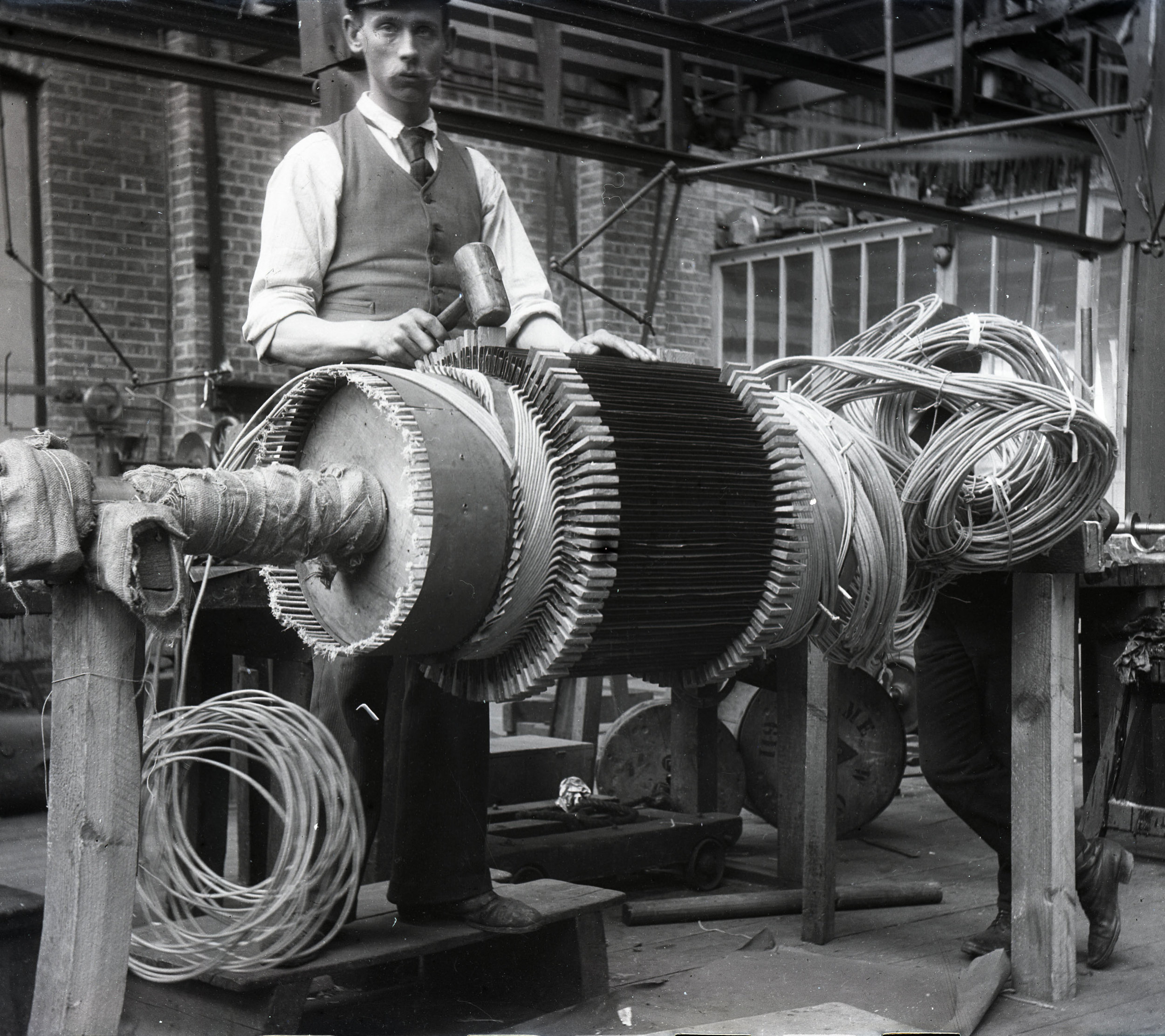

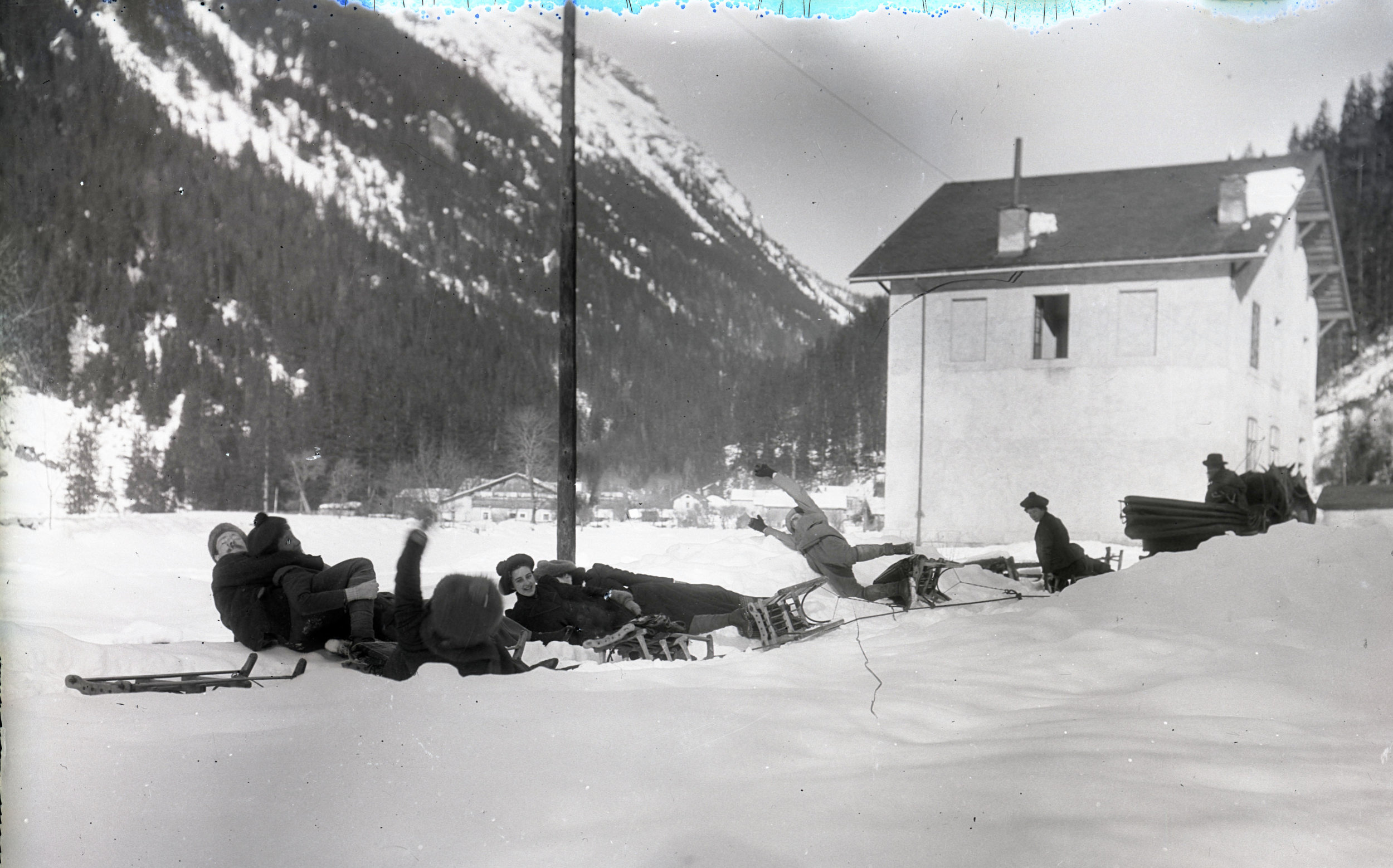

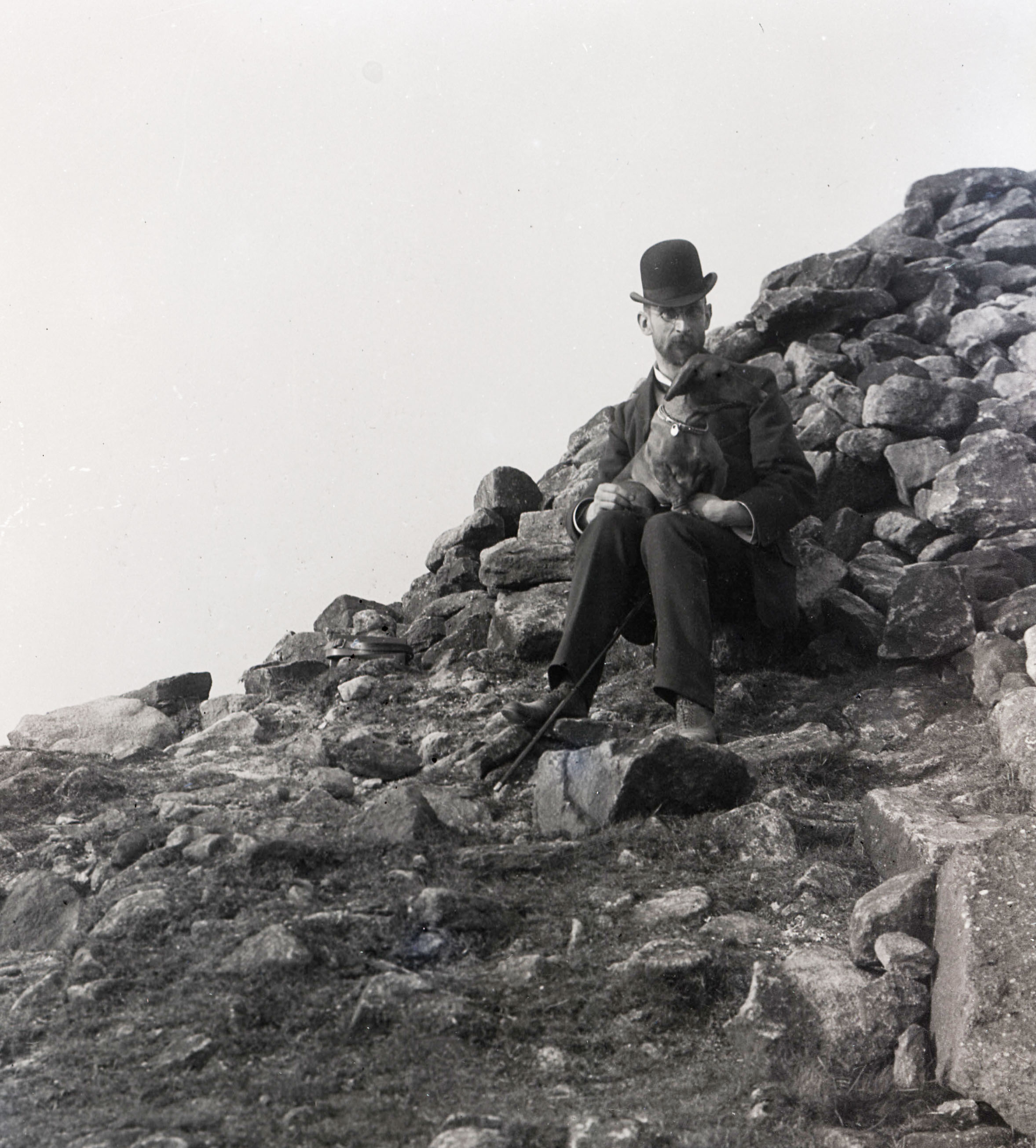
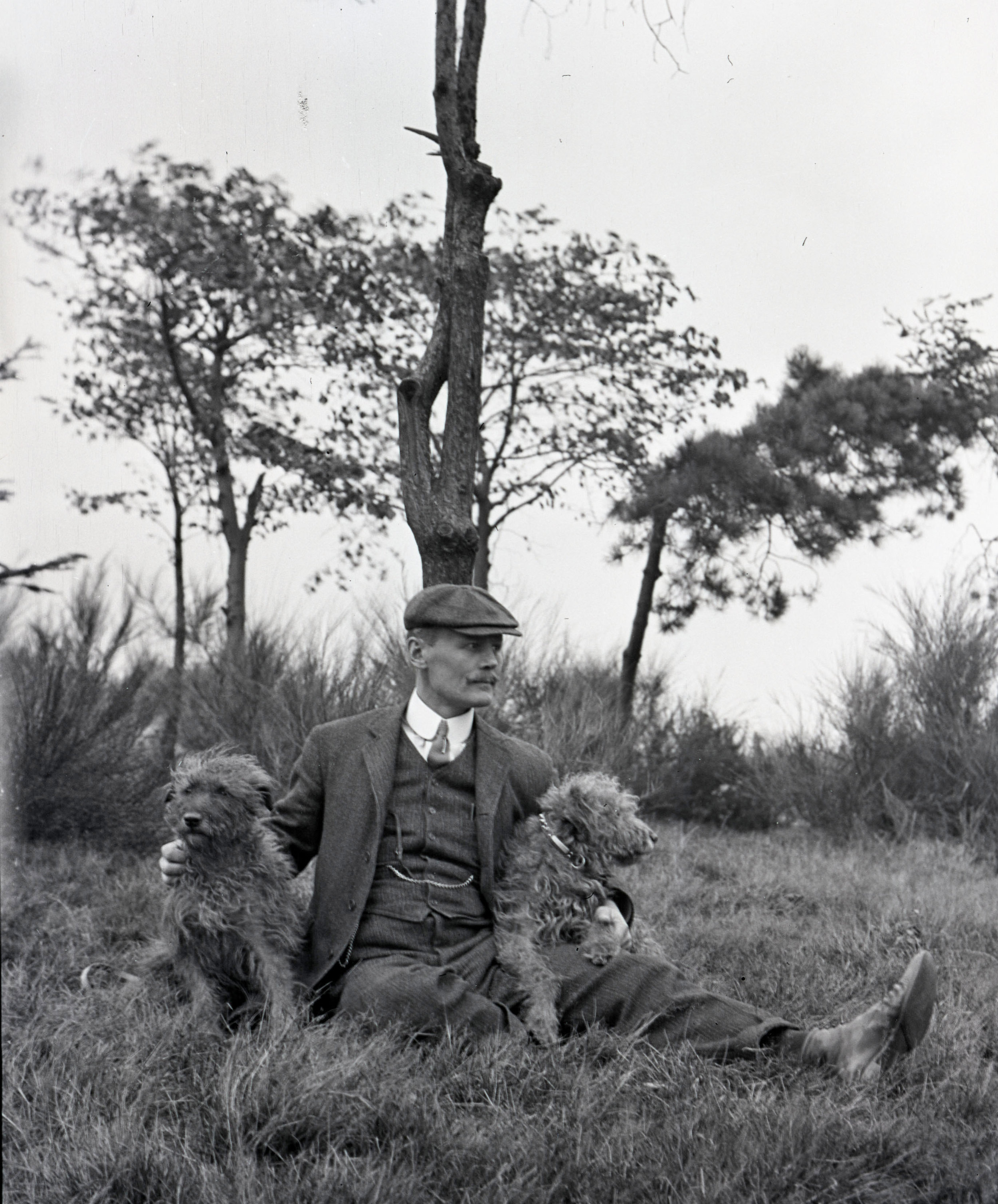

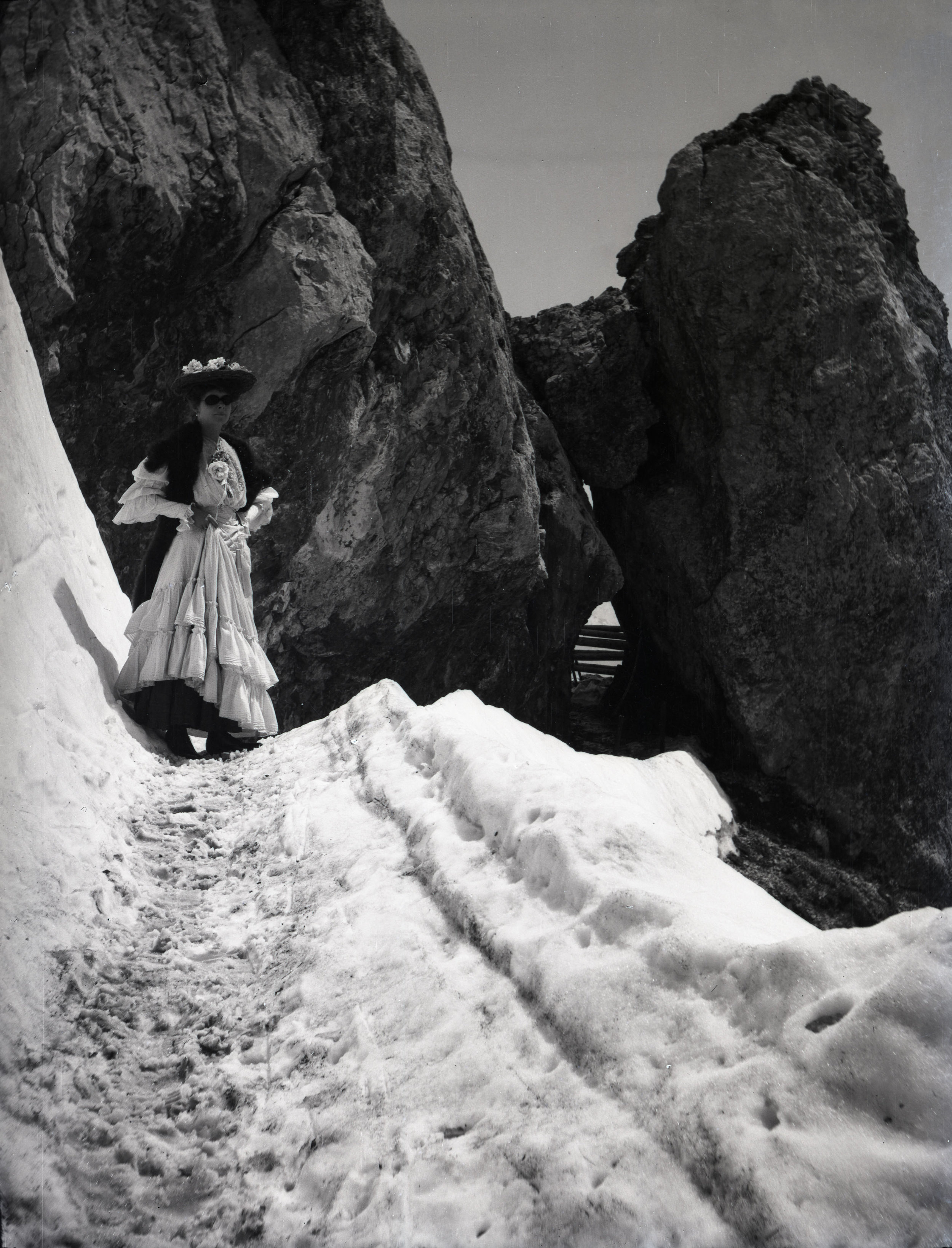
Places
Some gorgeous photos of some famous locations as they used to be.
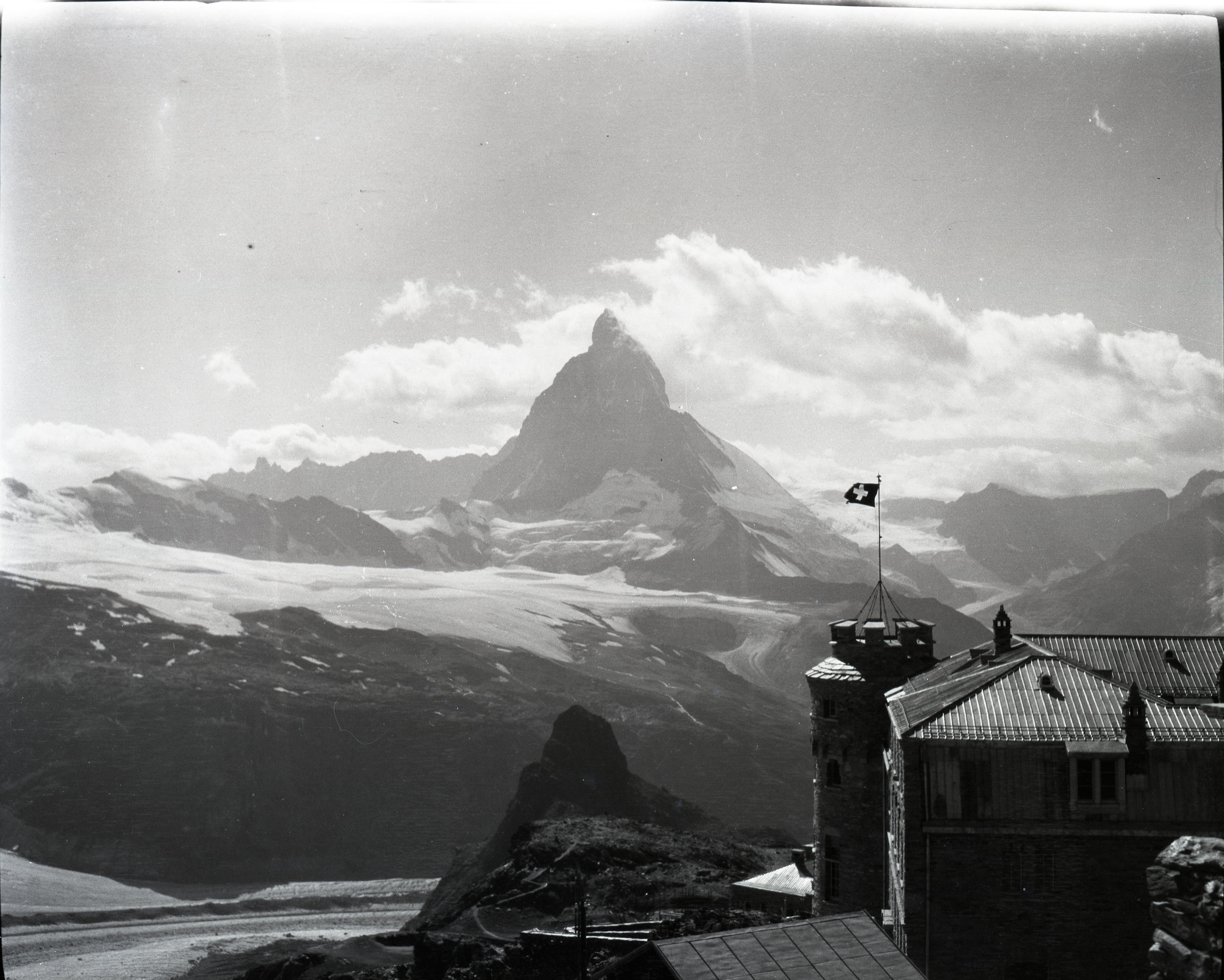
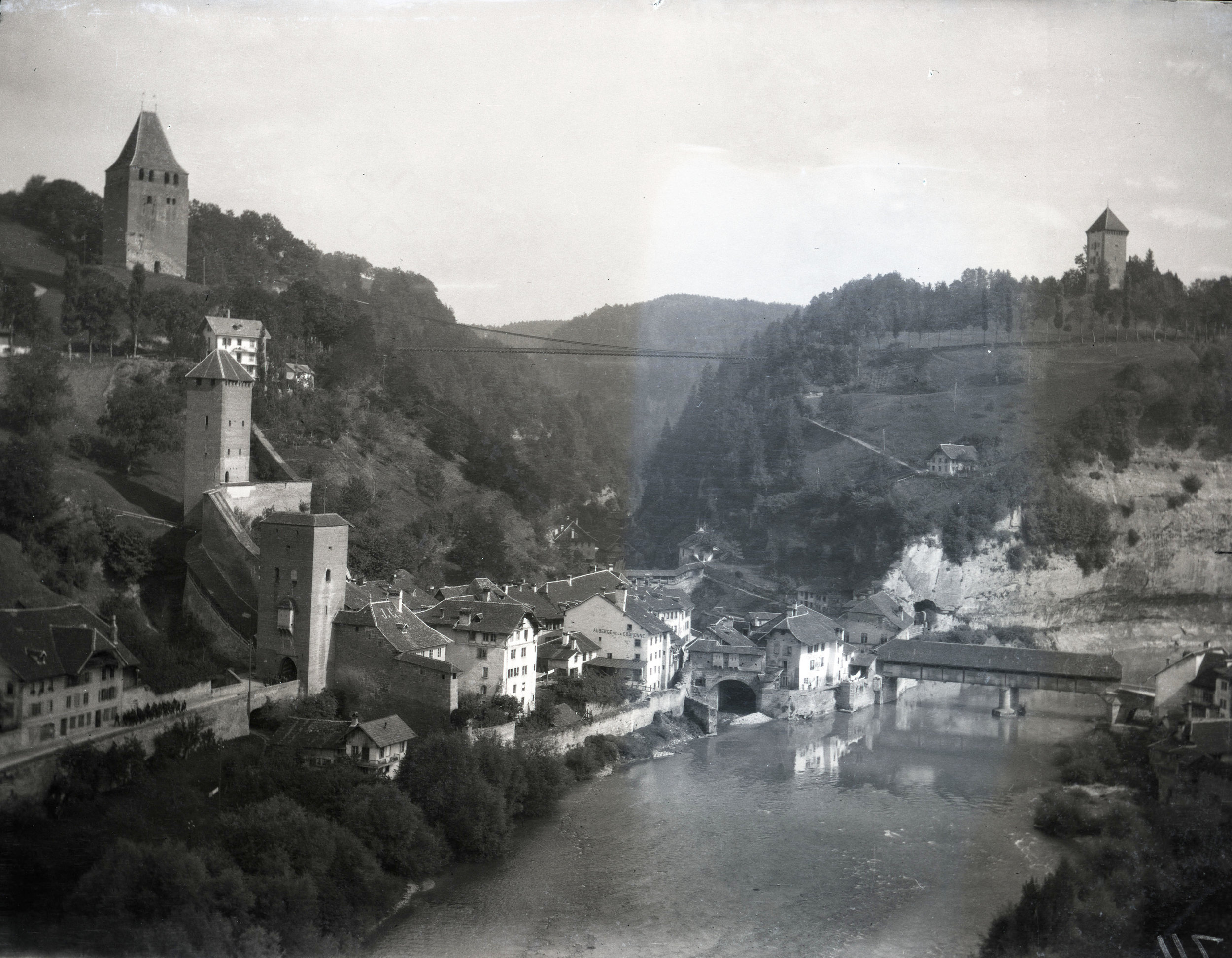


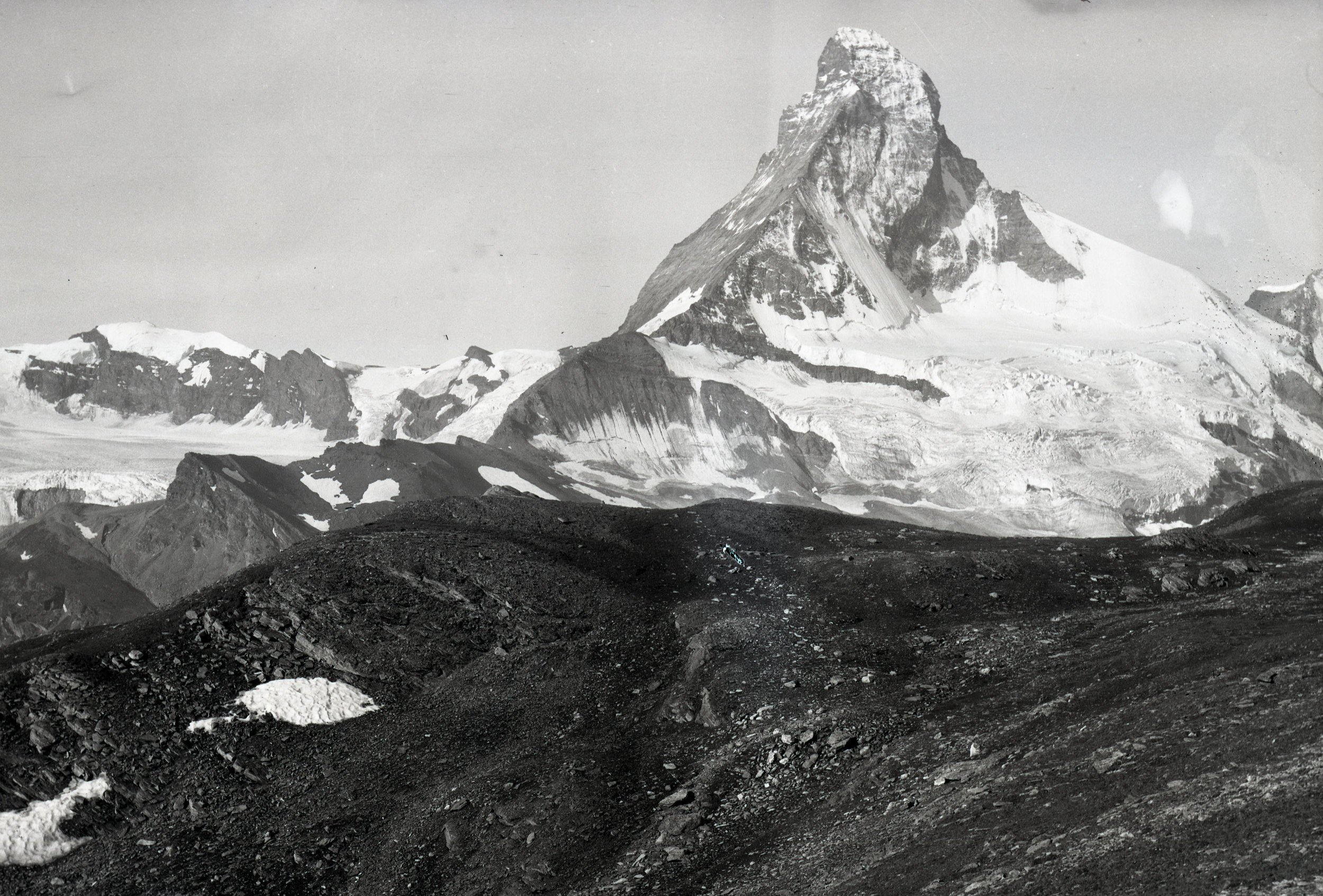
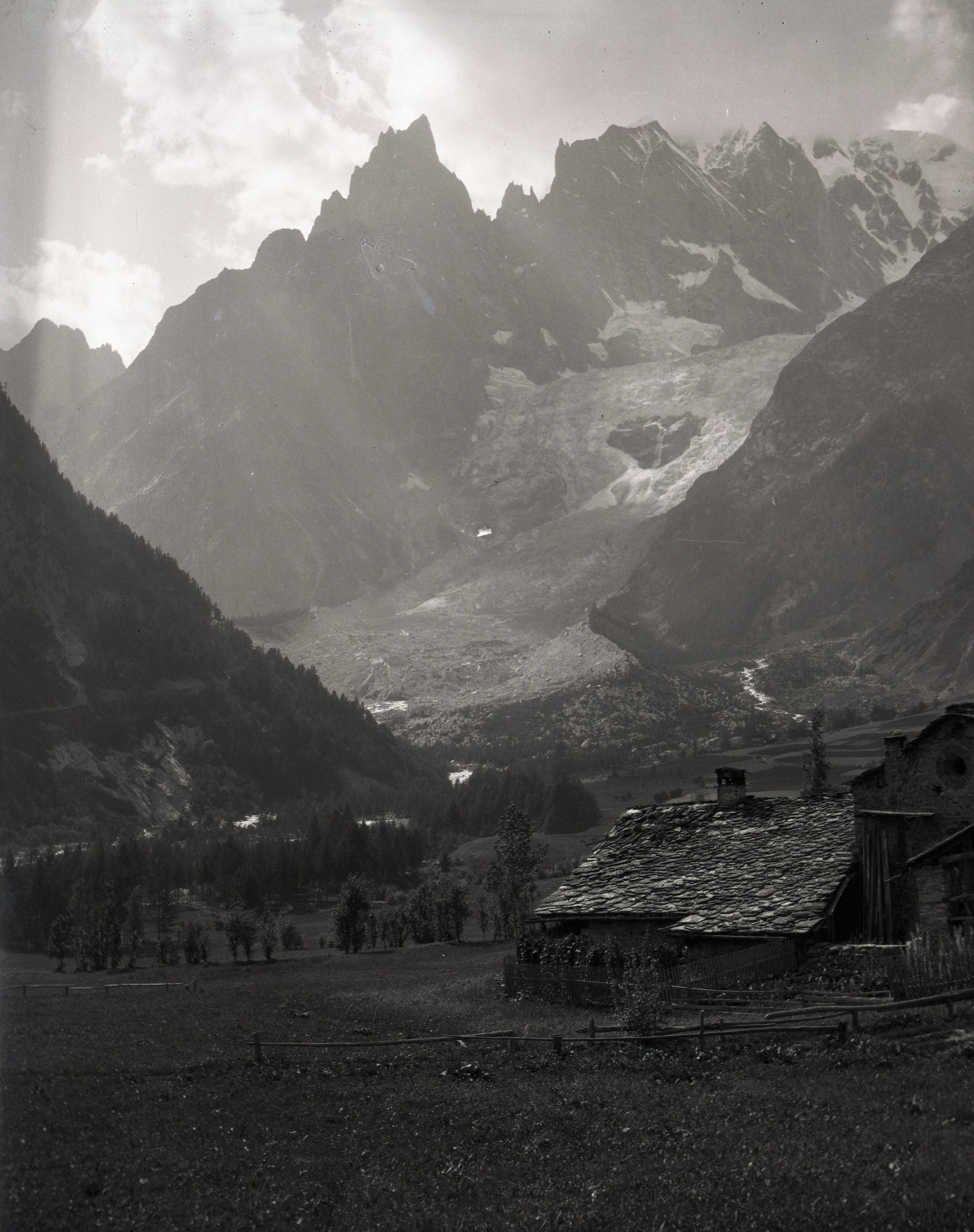

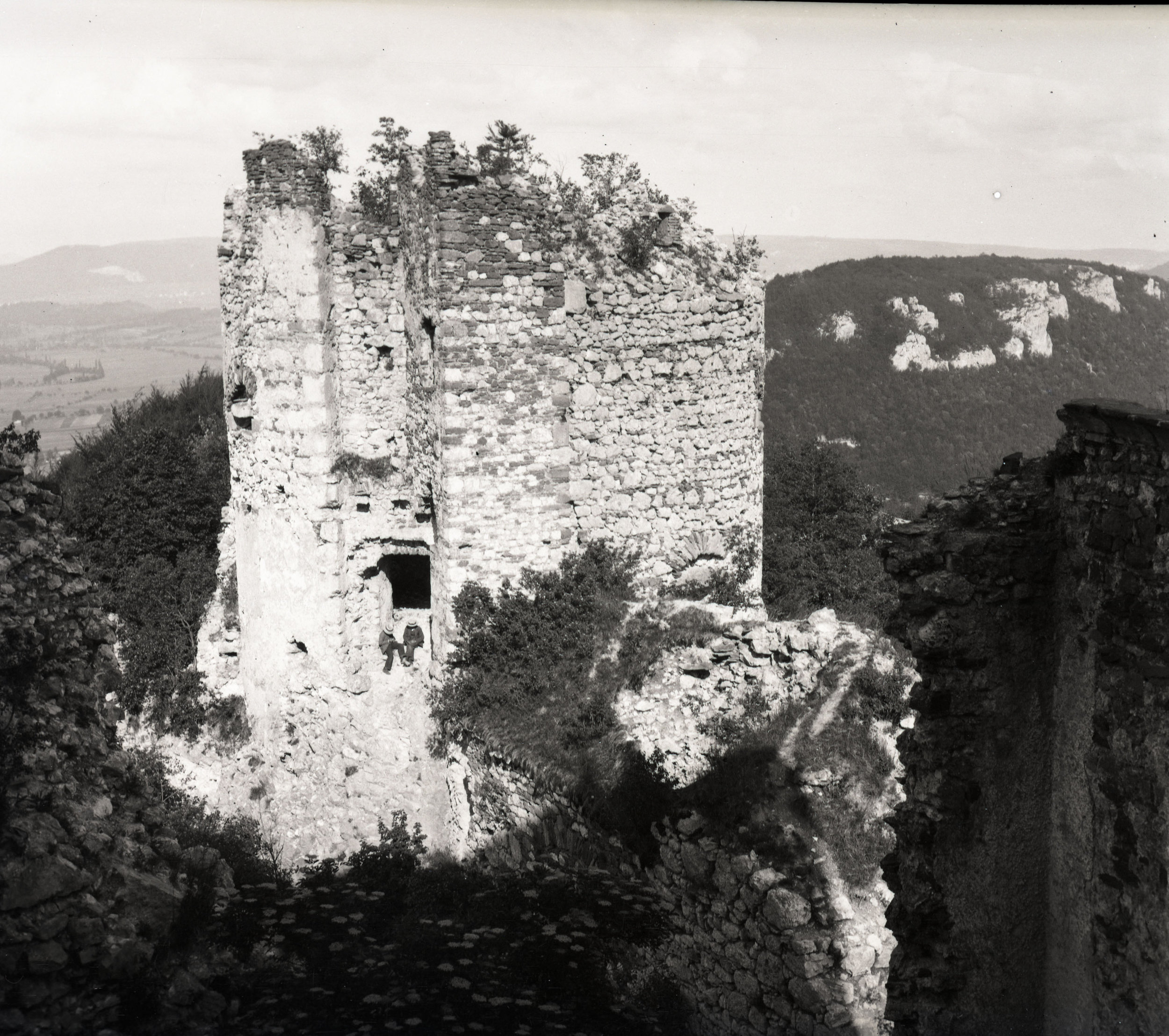
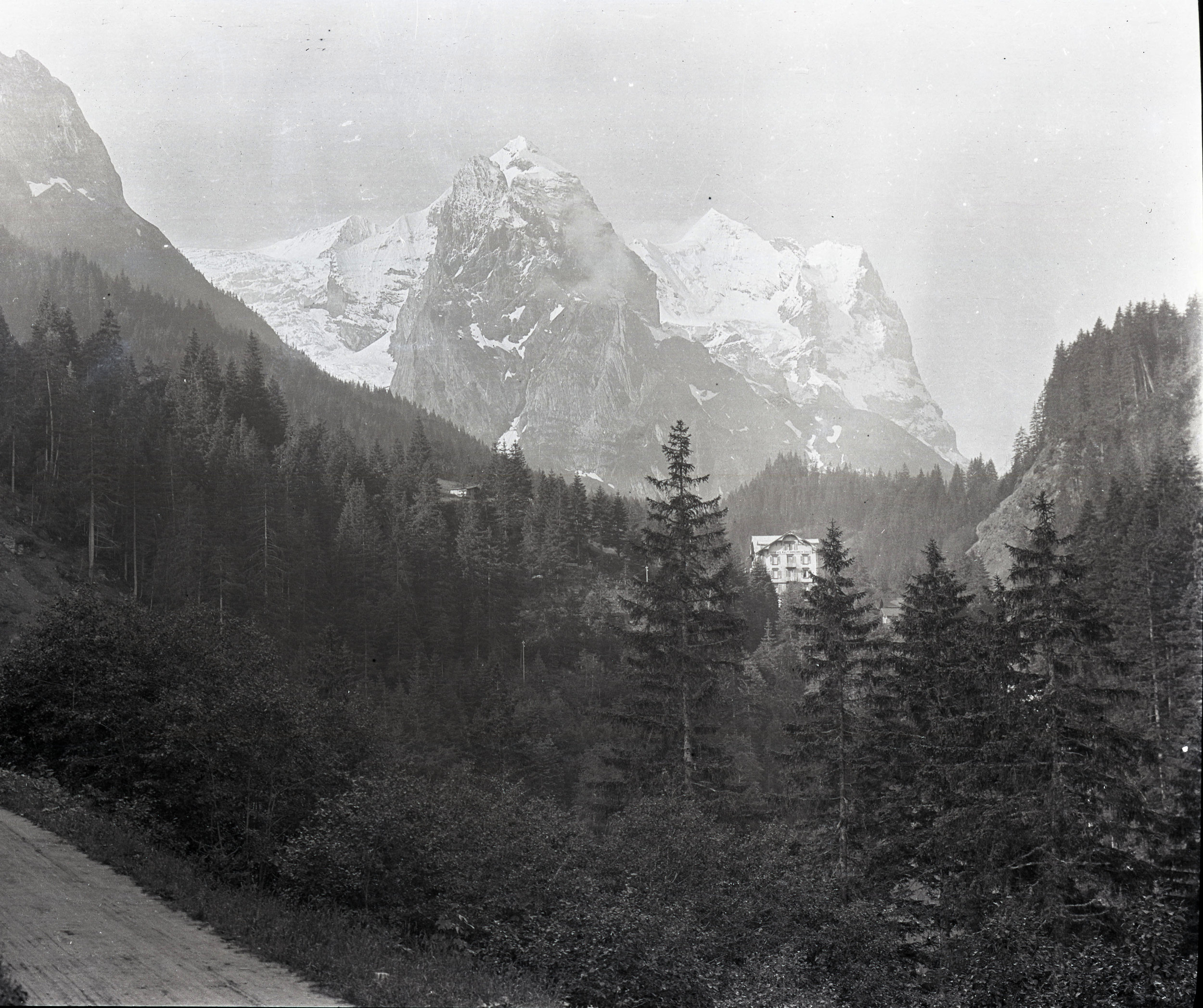



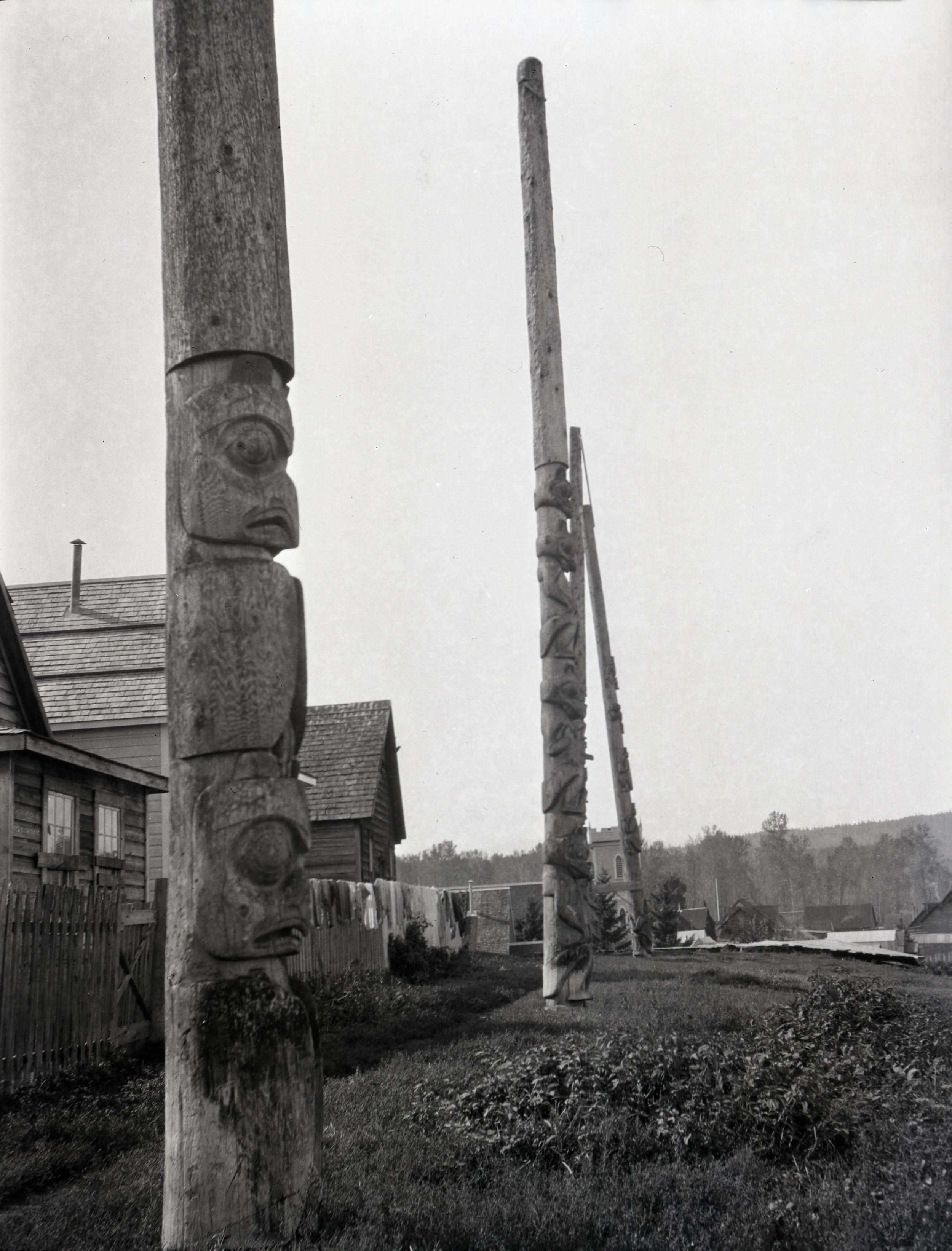
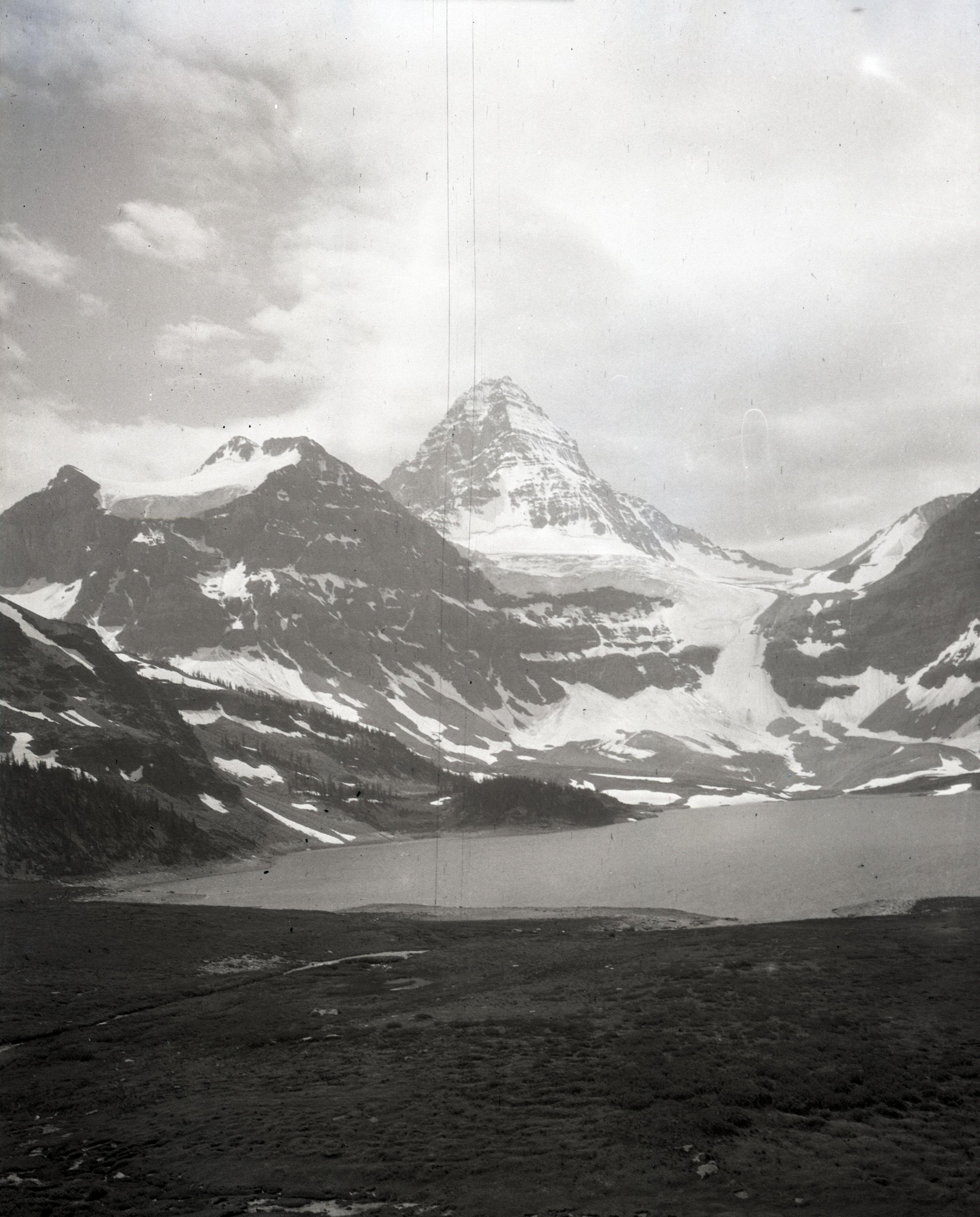
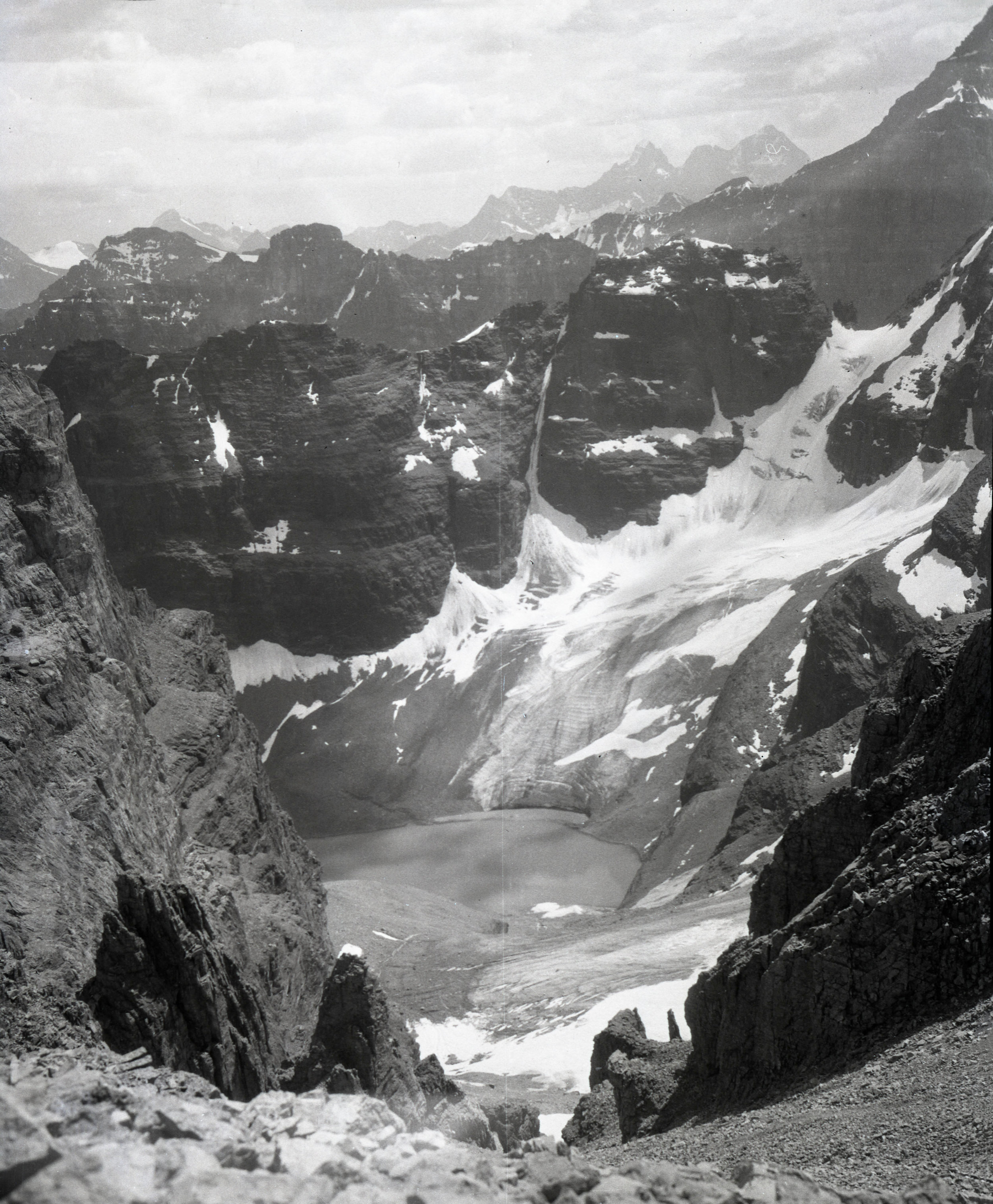
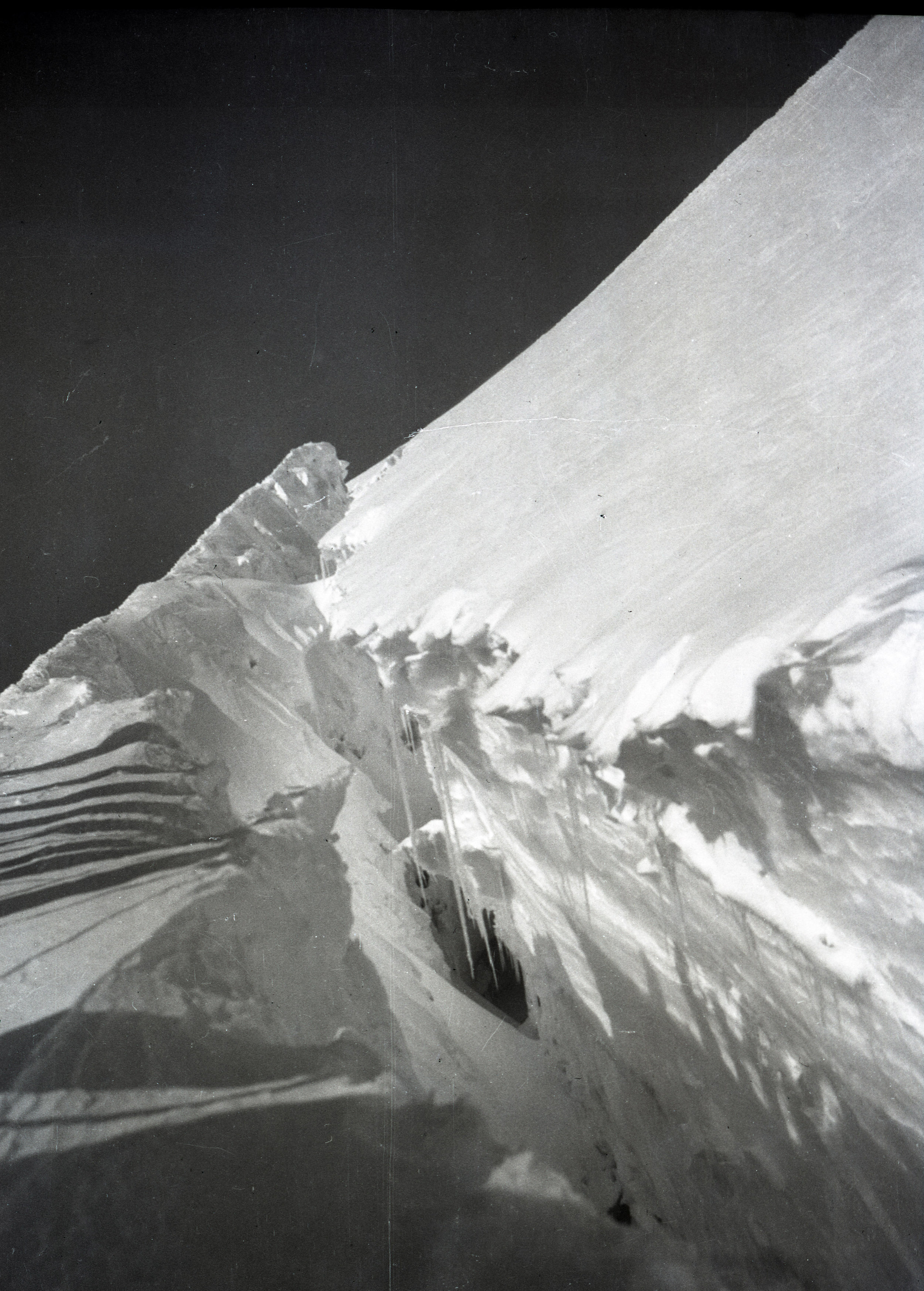
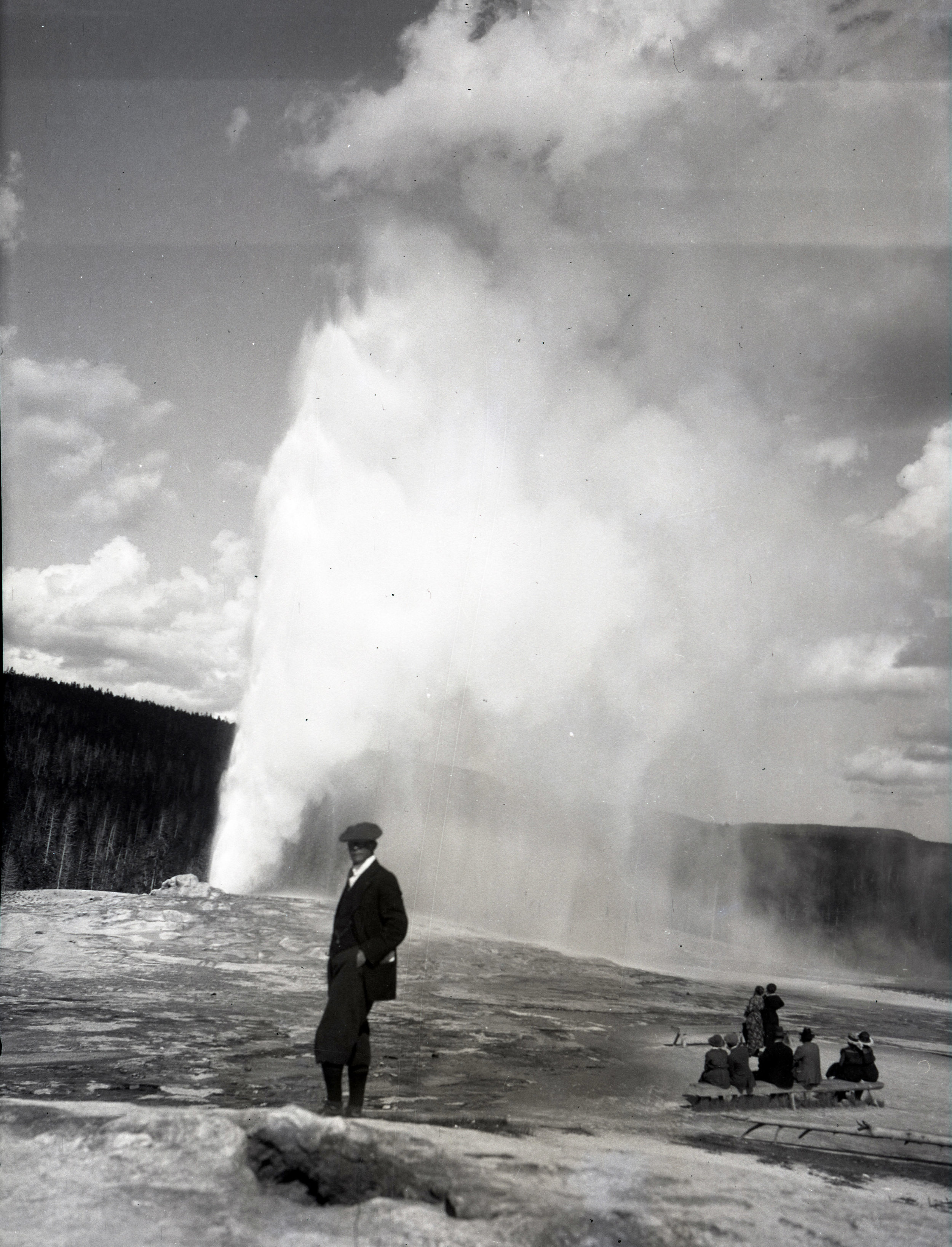
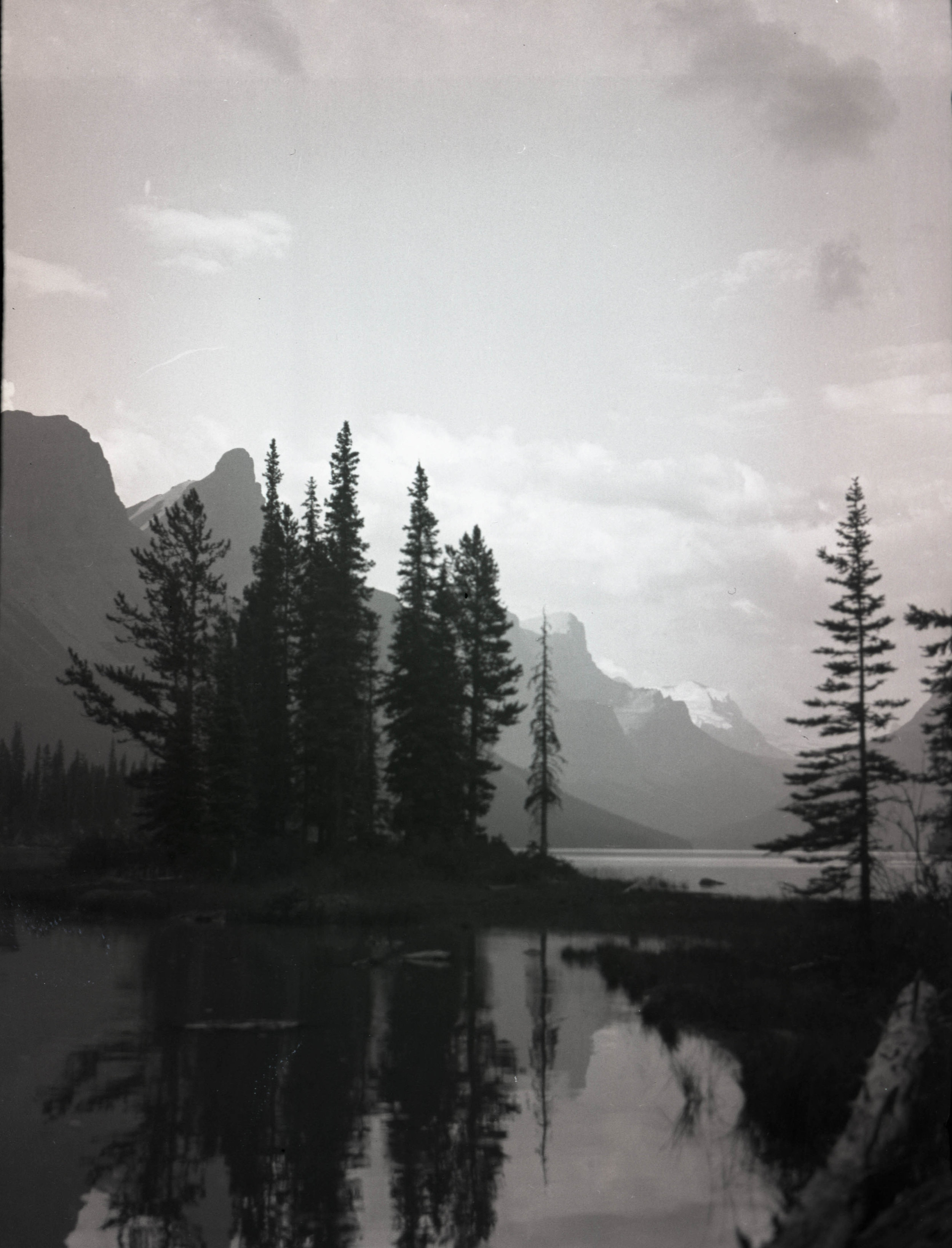
Check out our Flickr account for more! Or, to view all the photos, head to our archival collections site and scroll down to Collection Tree.
Suggested reading:
For details of mountaineering and climbing in the first decades of the 20th century, check out the handbook Mountain Craft by Geoffrey Winthrop Young.
For more about some of the places depicted in these photos:
Mount Rainier a Climbing Guide by Mike Gauthier
Cascades Rock the 160 Best Multipitch Climbs of all Grades by Blake Herrington
The North Cascades by William Dietrich
Mont Blanc the Finest Routes: rock, snow, ice and mixed by Philippe Batoux
Mont Blanc: 5 routes to the summit by Franȯis Damilano
Swiss Rock Granite Bregaglia: a selected rock climbing guide by Chris Mellor
Canadian Rock select climbs of the west by Kevin McLane
Sport climbs in the Canadian Rockies by John Marin and Jon Jones
Mixed Climbs in the Canadian Rockies by Sean Isaac
For more information about the person who took these photos, you can read Gilmour’s obituary in the American Alpine Journal.
LWCF Passes Out of House Natural Resources Committee
Last week, the House Natural Resources Committee passed an important conservation bill that, with your help, the AAC supported. This is a huge testament to what we can accomplish together! Thank you to everyone who responded to our action alerts and made your voices heard.
This bill is a crucial step to permanently reauthorizing the Land and Water Conservation Fund (H.R. 502), a conservation program set to expire at the end of the month. You can learn more about LWCF and climbing here.
As Outdoor Alliance writes, “[The passing of this bill] is proof that repeated, insistent public outreach does make a difference. We can get good bills across the line eventually, and after years of having outdoor enthusiasts reach out to [representatives] about outdoor recreation issues, we have started to see real results.”
We still have work to do to permanently reauthorize LWCF, so let’s keep this momentum going. The current LWCF expiration date is still 17 days away— take action by telling your member of congress to continue to prioritize the reauthorization.
United we climb, and united we stand for our public lands!
#CLIMBLIKEAGIRL
This is our effort to bring more women into the AAC community and bring attention to the need to support women in climbing. These shirts, with art by AAC member Brooklyn Bell, are designed to mean more.
What does #climblikeagirl mean to you? Wear your shirt proudly, snap a photo, use the hashtag, let us know. Then go crush it out there.
Use PROMOCODE: CLIMBLIKEAGIRLSHIRT when you Join or Renew from Sept. 14th to Oct. 15th and receive a free #climblikeagirl tank or Tee!
2019 World Cup Youth Team Applications Open
Athletes interested in the Ice Climbing Youth World Championship February 28 - March 2 in Oulu, Finland, must complete the google form application by 11:59PM MST on October 4, 2018.
The American Alpine Club will make their selections and athletes will be notified by October 18.
The USA can send 6 men and 6 women in each of 3 age categories. Athletes must turn 12 (or older) in 2019 to participate.
Photo by M. Garcia, USA Youth Ice Team.









